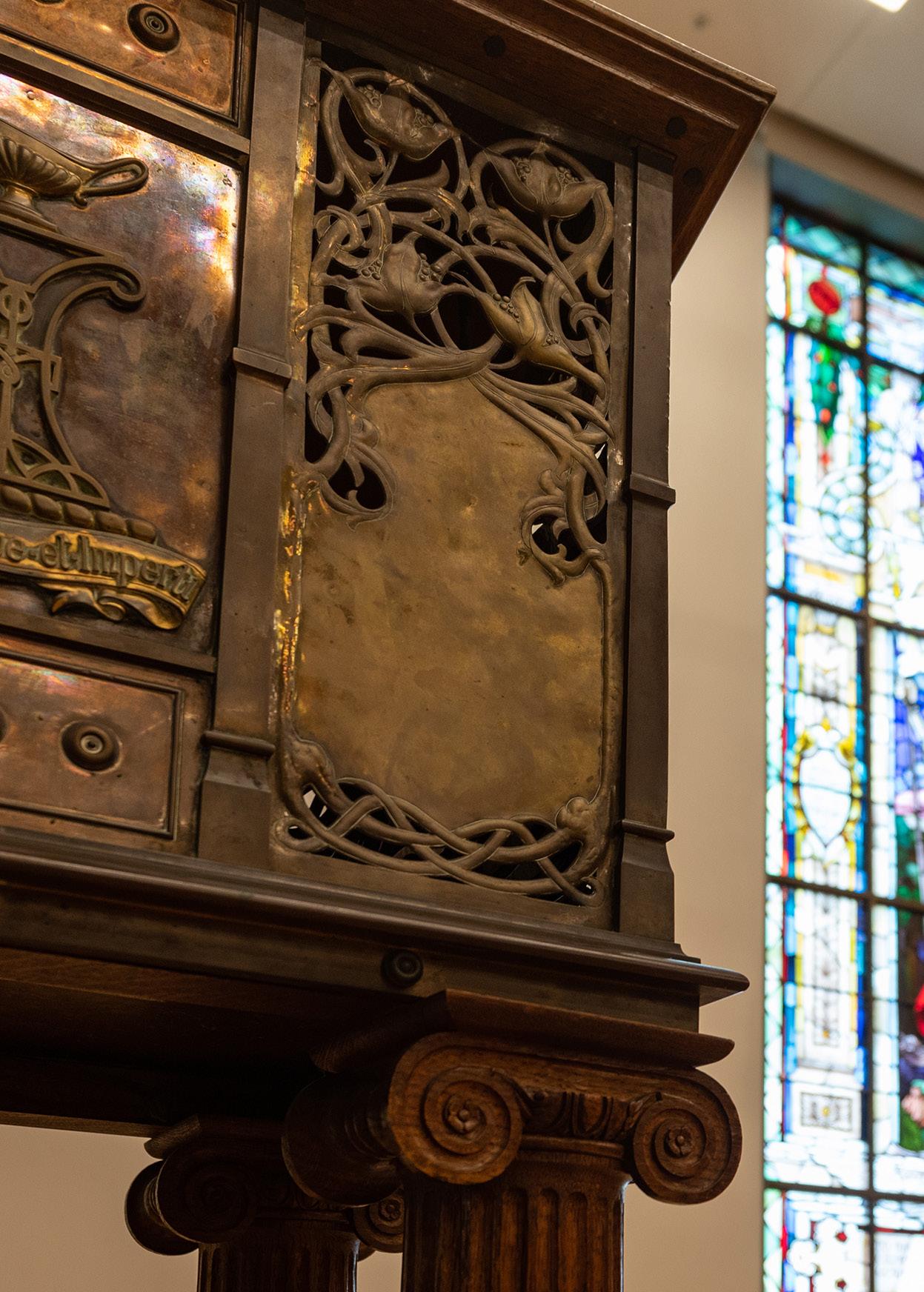
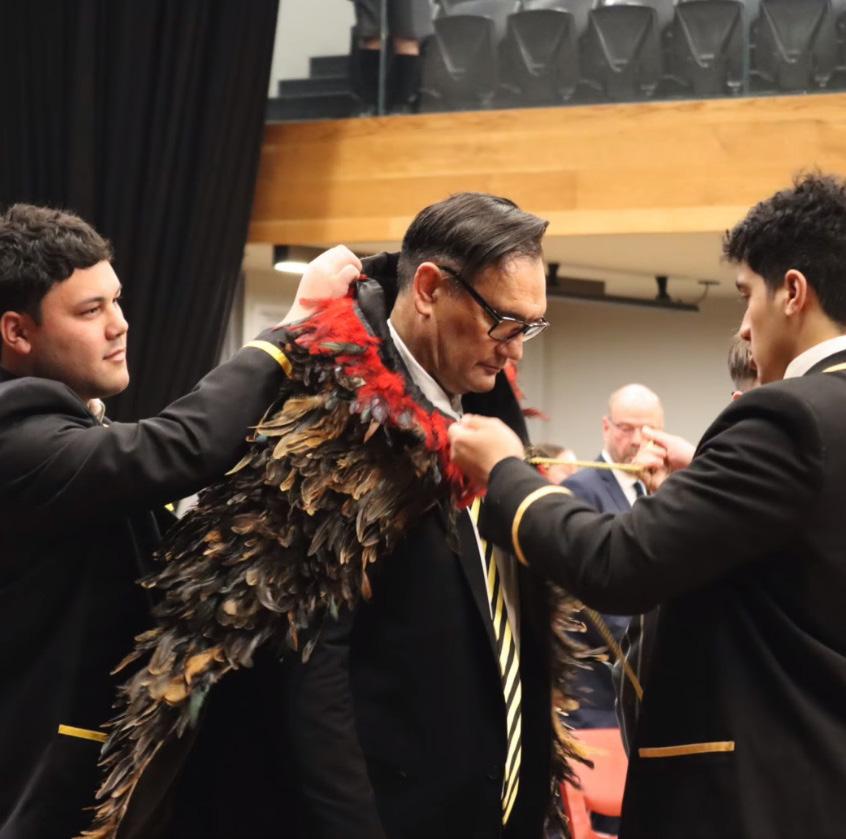

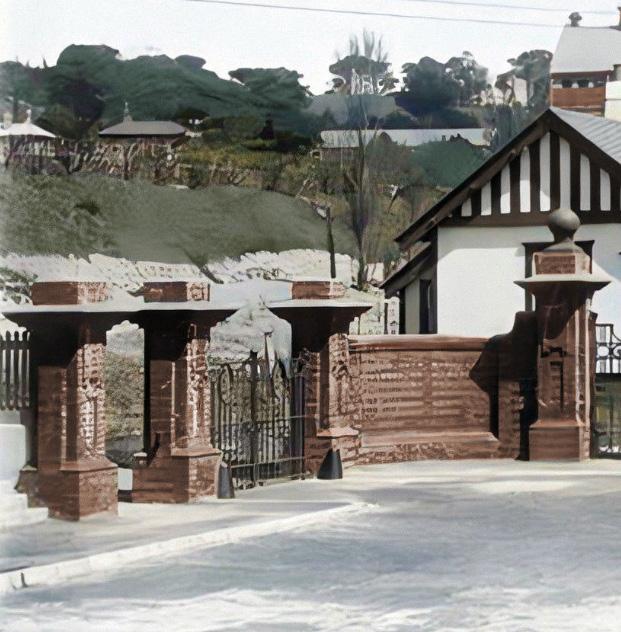

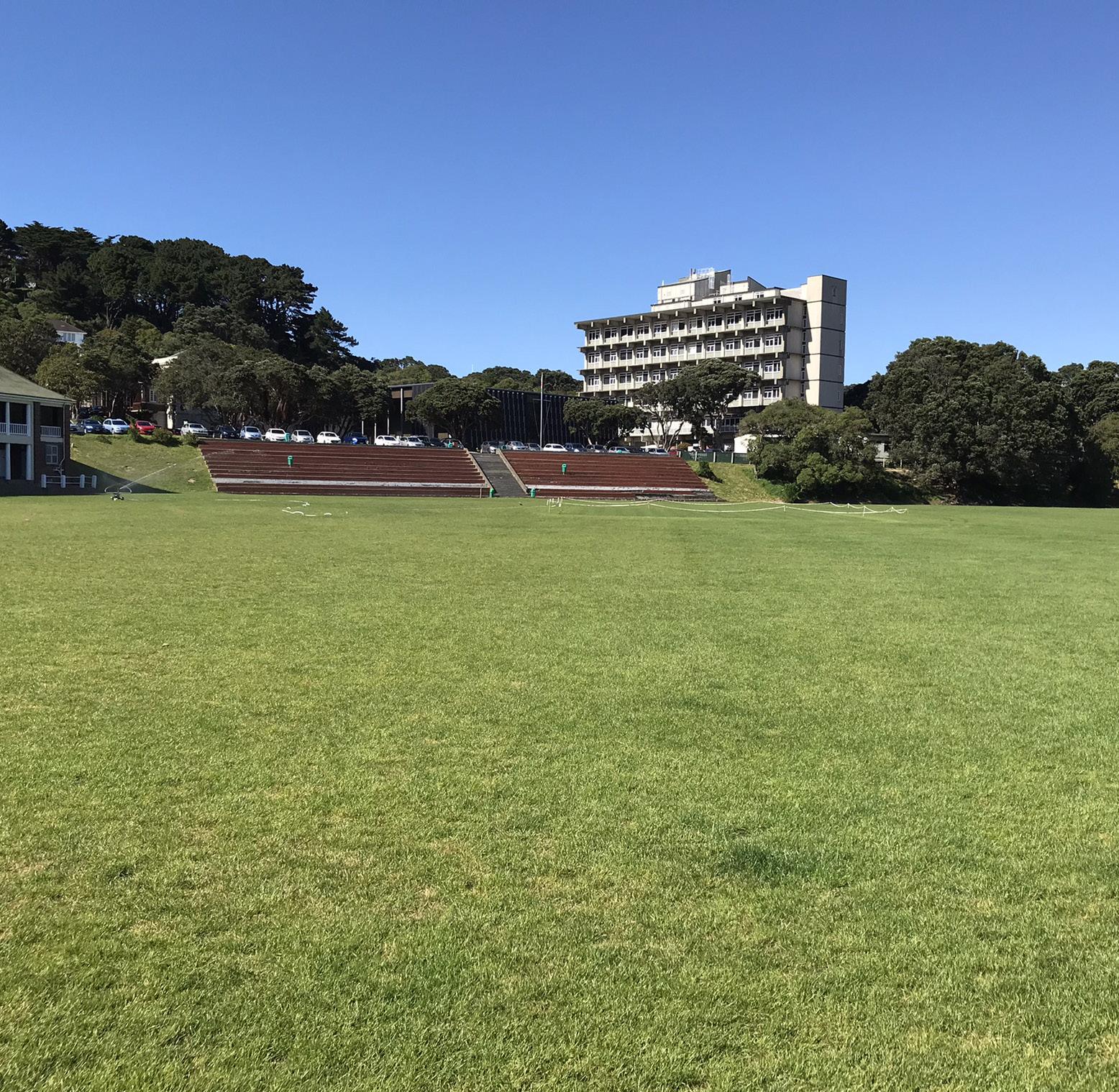
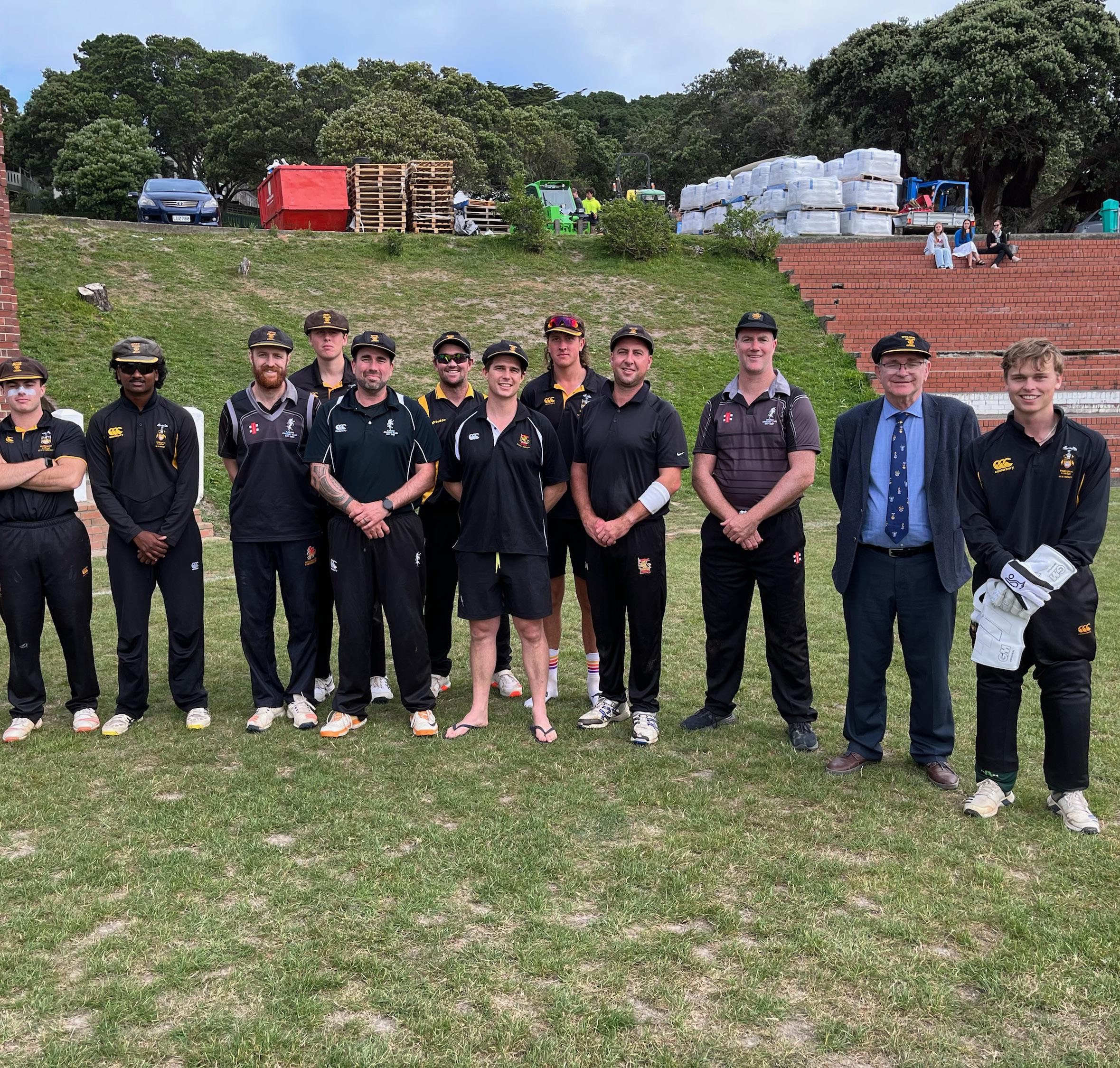
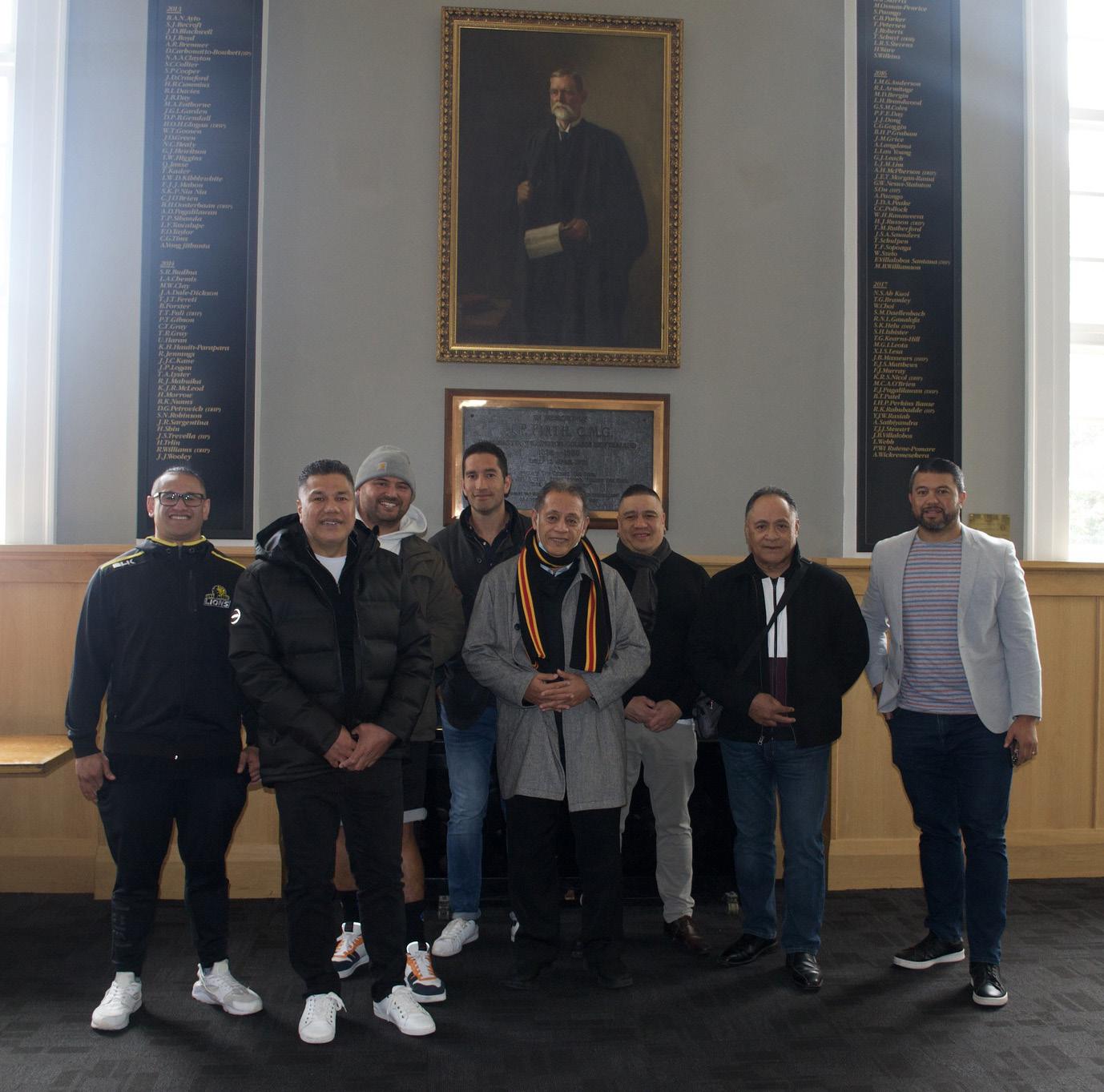
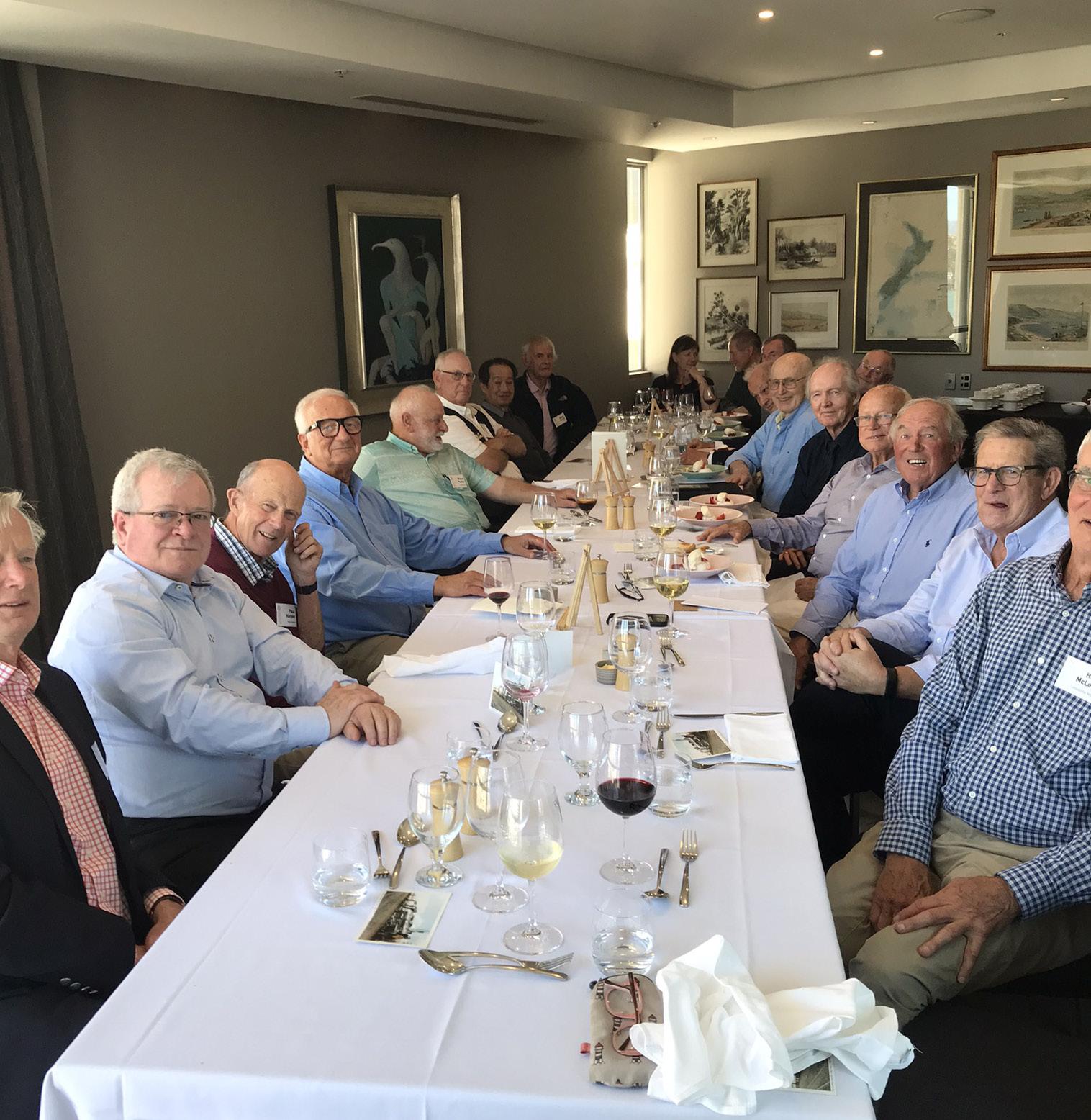

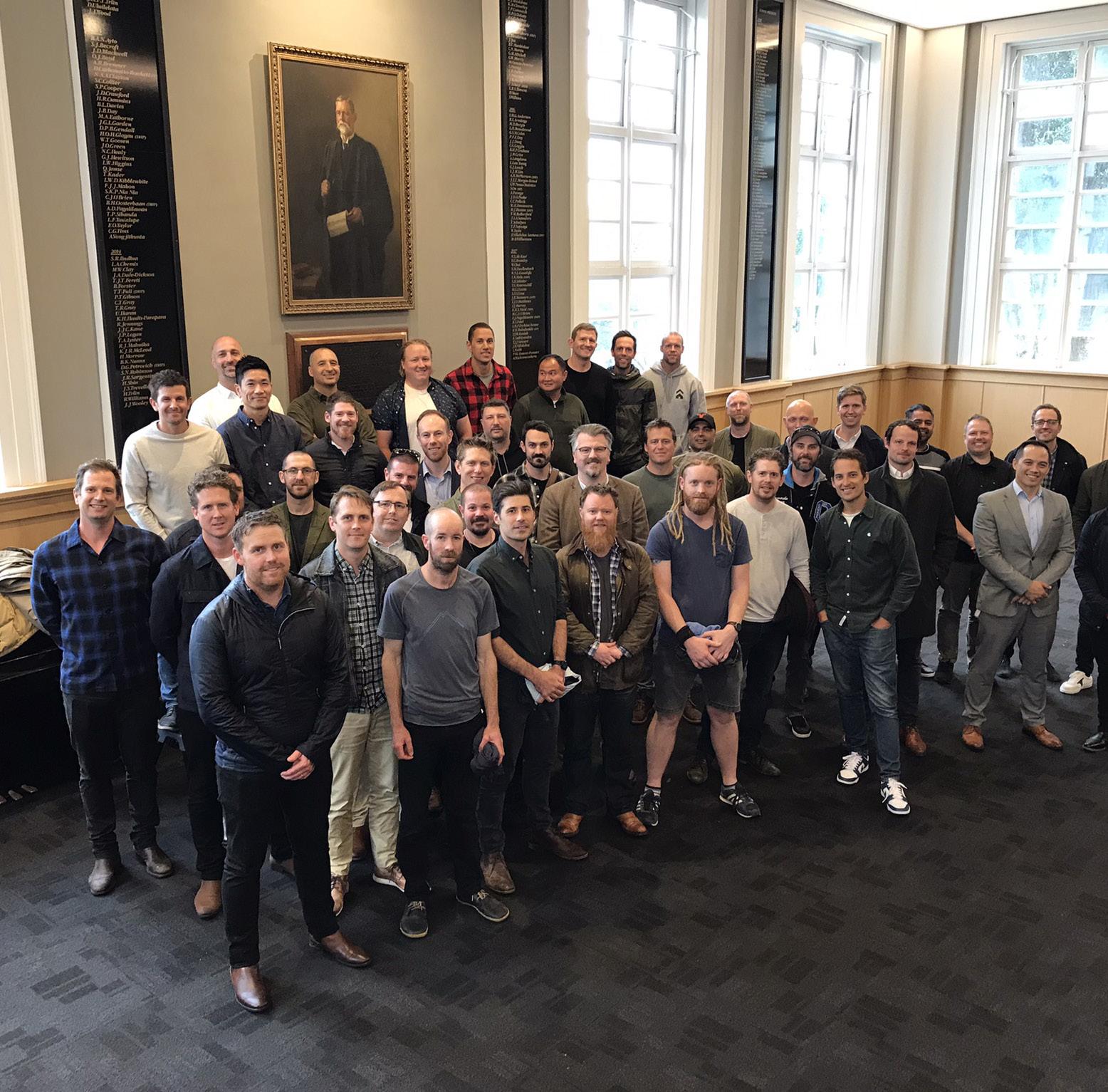
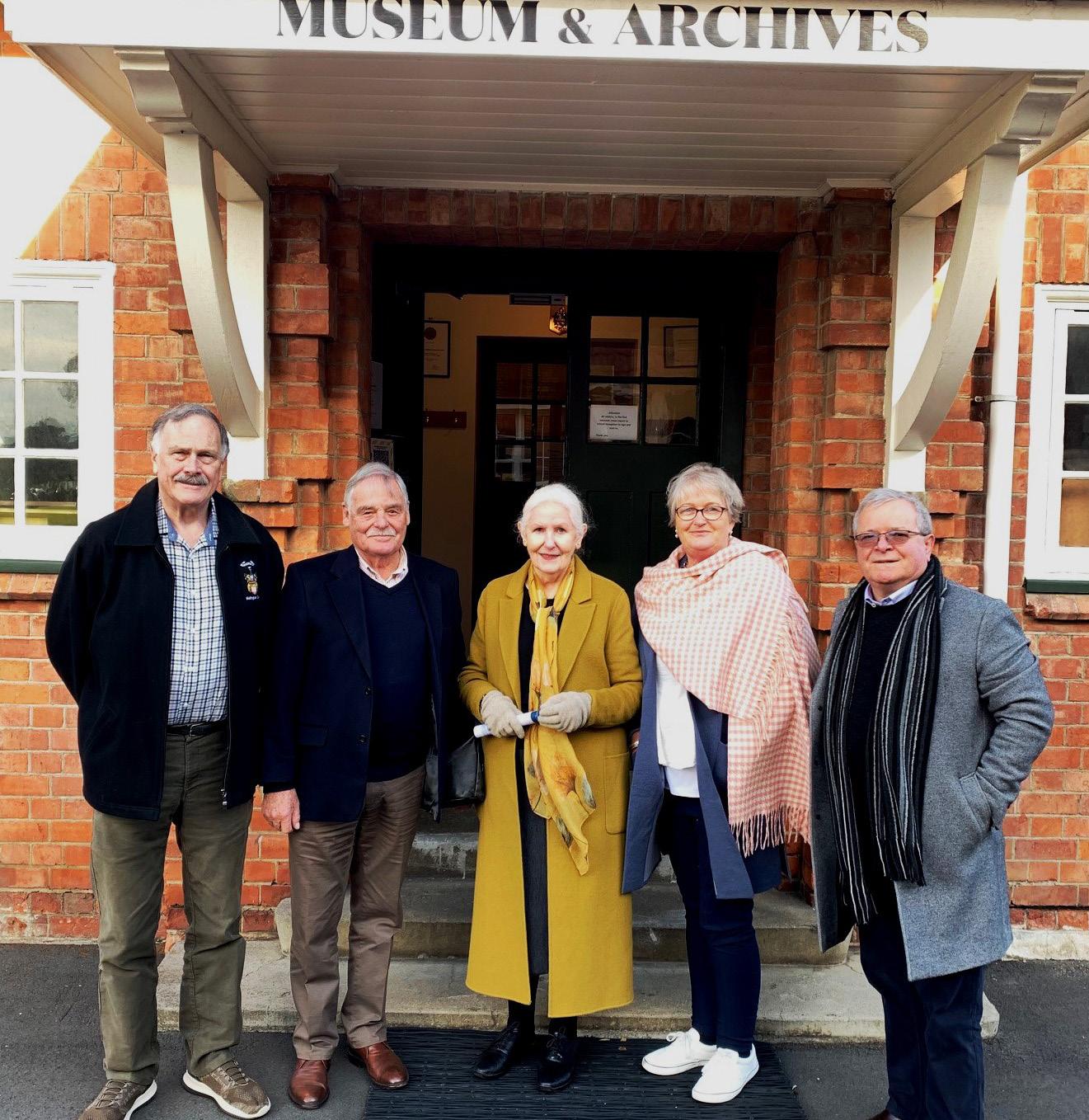

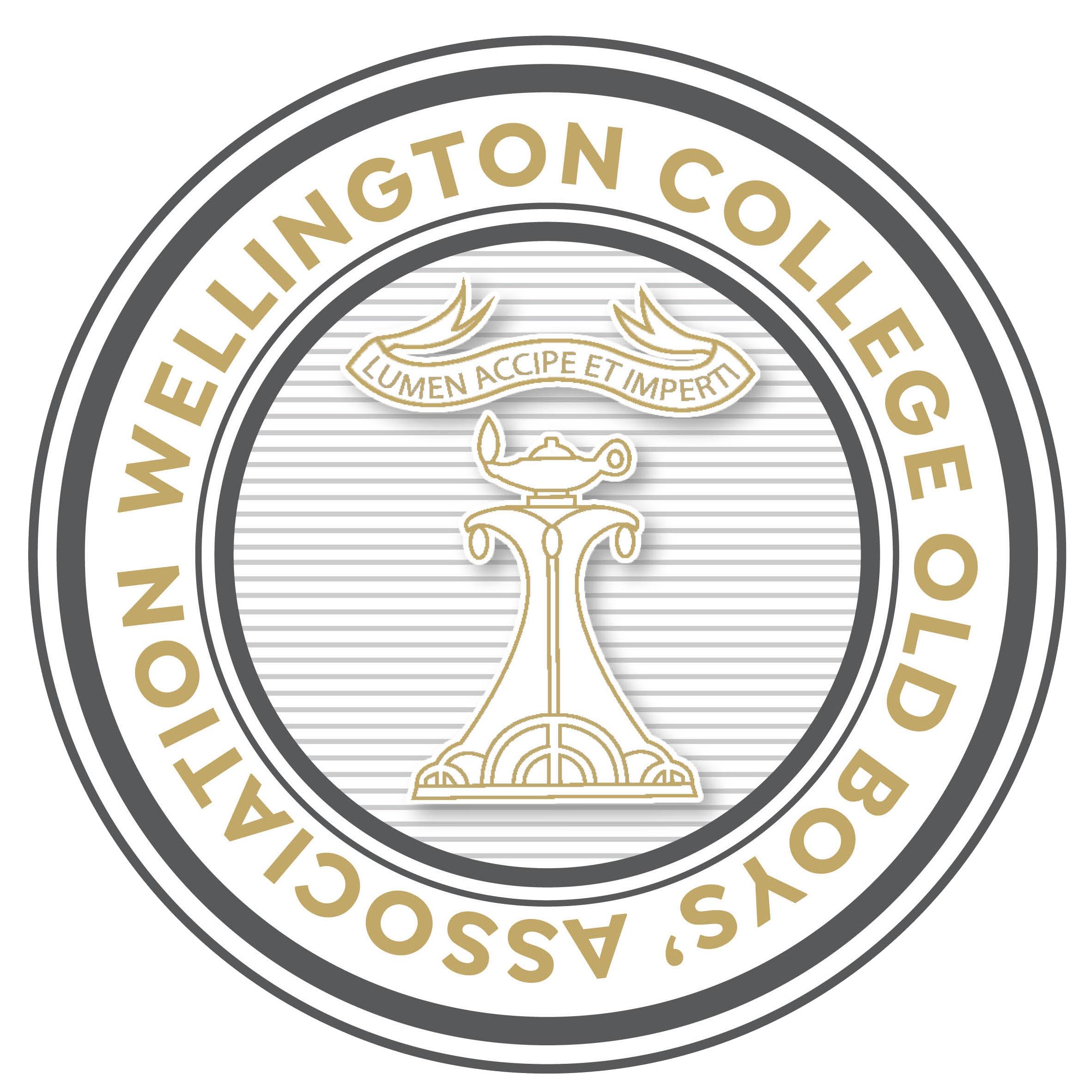
The THE ANNUAL MAGAZINE FOR THE WELLINGTON COLLEGE OLD BOYS' COMMUNITY DECEMBER, 2022 • ISSUE 32 Lampstand WCOBA PO BOX 16073, WELLINGTON 6242 0 oldboys@wc.school.nz • f wellington college old boys
A word from the Editor
As I write this, I am waiting for the Class of 1972 to arrive for their 50 Years On Reunion. This is number five of our 2022 programme with two more still to come. How great it has been to welcome so many Old Boys back to their school, to meet the Headmaster, and to walk around to see all the changes. Of course, the Memorial Hall/Alan Gibbs Performing Arts Centre wasn’t completed in 2017 when many came back for the 150th Celebrations so on occasions like these reunions, we can finally show off our pride and joy.
It's always busy in the Old Boys Office – in between arranging reunions, digitalising Wellingtonians, preparing the metadata after identifying people and places from the 25,000 photos we have had scanned, creating content for our new website and daily administration.
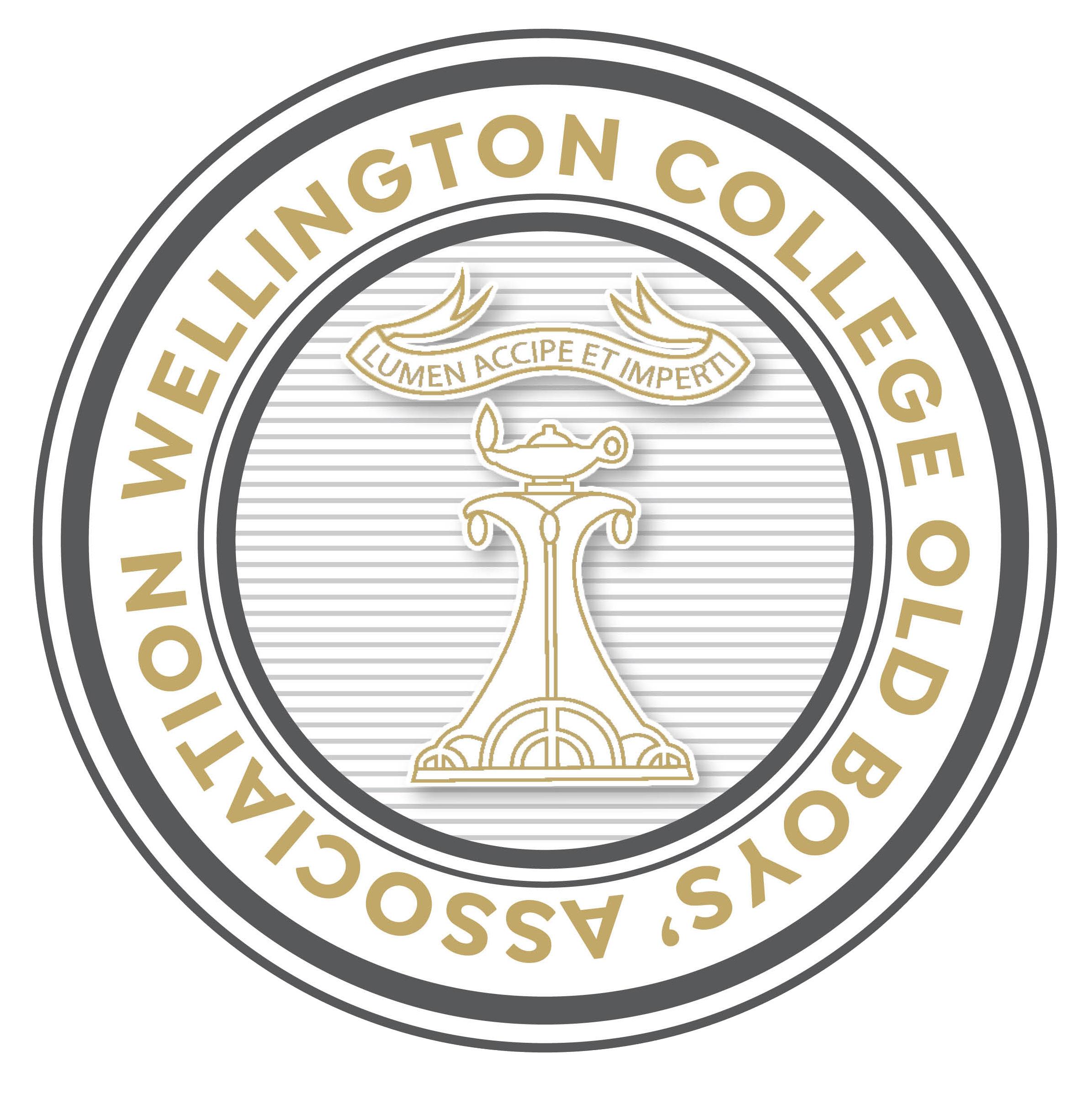
It’s kept me on my toes. I am thankful that the Executive has increased my hours to 30 per week to maintain our engagement with the Old Boys’ community.

Please keep in touch and share your news and memories with us. One thing I find very sad is learning about the lives of Old Boys by reading and including their obituary for each Lampstand Don’t leave it for us to source your obituary when you pass on and share with our readers
Special thanks to Gil Roper [Class of 1961] for proof-reading this issue. As ever, it's an honour to work alongside Mike Pallin, Gary and Abbey Girvan and Rod Page as we work together to share the school's history with you.
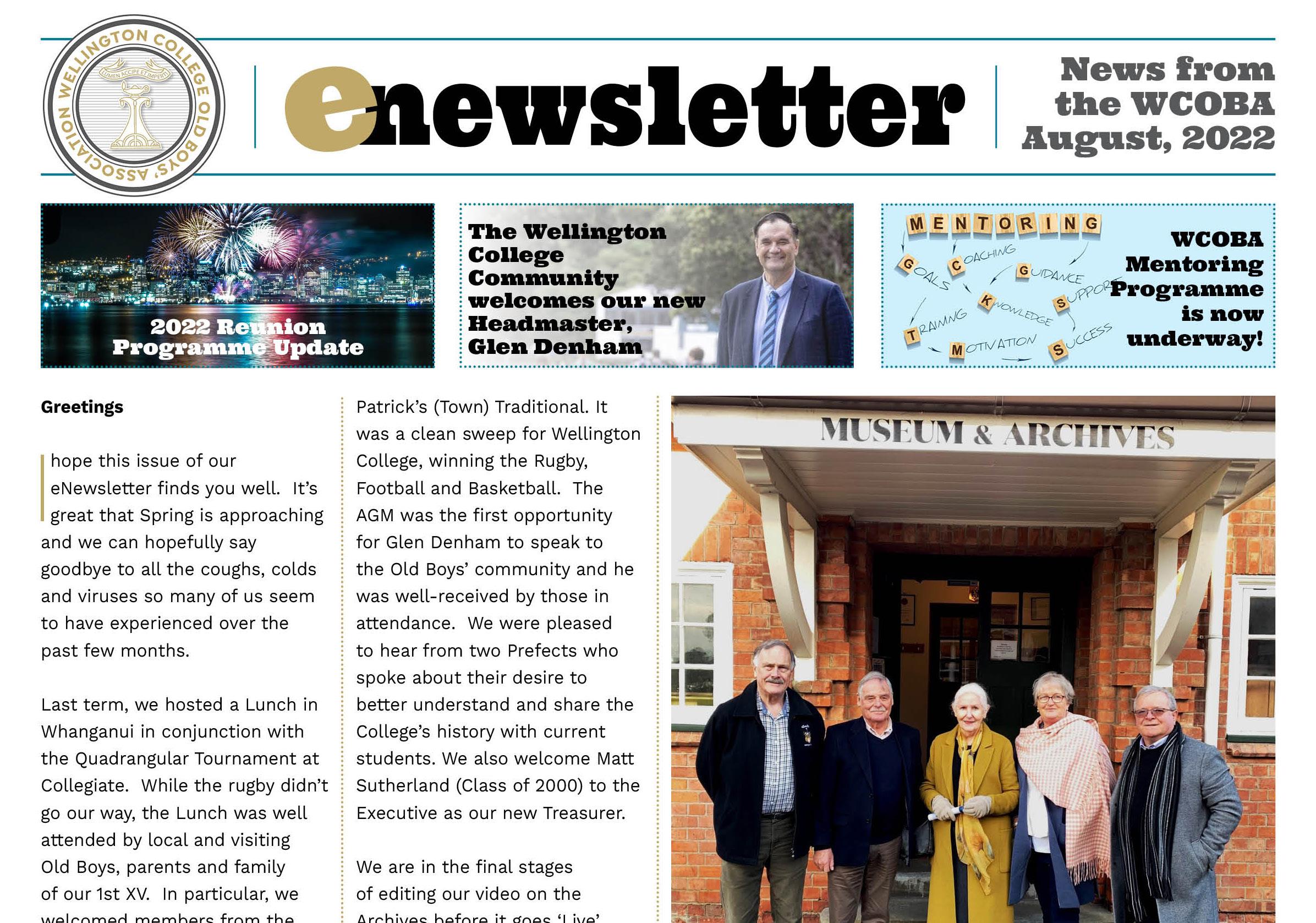
Best wishes to those who can manage some time out and a festive, restful break. Fingers crossed for those in the southern hemisphere for some, wind-free, sunny days.
Thank you for your support this year.
Steph Kane WCOBA Executive Officer oldboys@wc.school.nz
2 The LAMPSTAND, 2022 �noticeboard� Stay in touch Keep us updated with your contact details so we can keep you informed of news from the WCOBA. Ways to keep connected: 0 oldboys@wc.school.nz f wellington college old boys X New WCOBA website coming in 2023! 5 PO Box 16073, Wellington 6242 NZ 1 04 802 2537 Are you missing out? Twice a year, we send our eNewsletter with news and announcing forthcoming events. We
a
of you
receiving the eNews. We need to fix that. If you
an email
please
messages
us
junk mail.
email
Executive President
Treasurer Matt
Committee
James
Richard
Karl
Chris
Matt
know
number
are not
haven’t received
from us recently,
check that
from
are not landing in your
You can also email us with your preferred/new
address WCOBA
Ted Thomas, Class of 1976 Executive Officer Steph Kane
Sutherland, Class of 2000
Members
Blackwell, Class of 2012
Boag, Class of 1981
Moresi, Class of 2009
Nicholls, Class of 1988
Rewiti, Class of 1990 Ernie Rosenthal, Class of 1961 Archivist Mike Pallin Founded in 1891, The Wellington College Old Boys’ Association was formed for the perpetuation of memories, maintenance of friendship, enrichment of Old Boys and support of the School. The Association is a group of over 33,000, with 10,000 active members, all of whom share the common experience of having attended Wellington College.
Page 52: Obituaries:
It is inevitable that we lose Old Boys every year and we aim to acknowledge those who pass away in our eNewsletters, and in this Lampstand. We can only record obituaries if we are notified of them by a relative or if we are able to verify information in a published death notice. We apologise in advance if we miss recording an obituary and offer our sympathy to all those who have lost loved ones over the years. To notify us of the passing of a former student, staff member or someone with an association with the School, please email us on oldboys@wc.school.nz.
Obituaries will record the name; date passed away; years at School; and any other relevant information we can research and/or are provided with.

of students whose Form 3 year was 1959 [ie five years from Form 3 to Form 7/ Upper 6, regardless of when you left].
1983 is still your Cohort year as you were in Form 3 at another school.
In these examples, 1963 and 1983 are the years from which your anniversary of leaving school is calculated, by adding 20, 30, 40, 50, 60 years etc. Your cohort year may not be the year you left school per se but captures all those fellow students who you were at school with, irrespective of how many years you were at the school, or the years you actually started or left. Some students qualify under two cohorts if they stayed for an extra year.
If you don't want to wait twelve months for the next Lampstand , in order to hear our latest news, or to receive invitations for reunions and events, send us your email address or follow us on one of the following platforms: wellington college old boys WCOBANZ oldboys@wc.school.nz


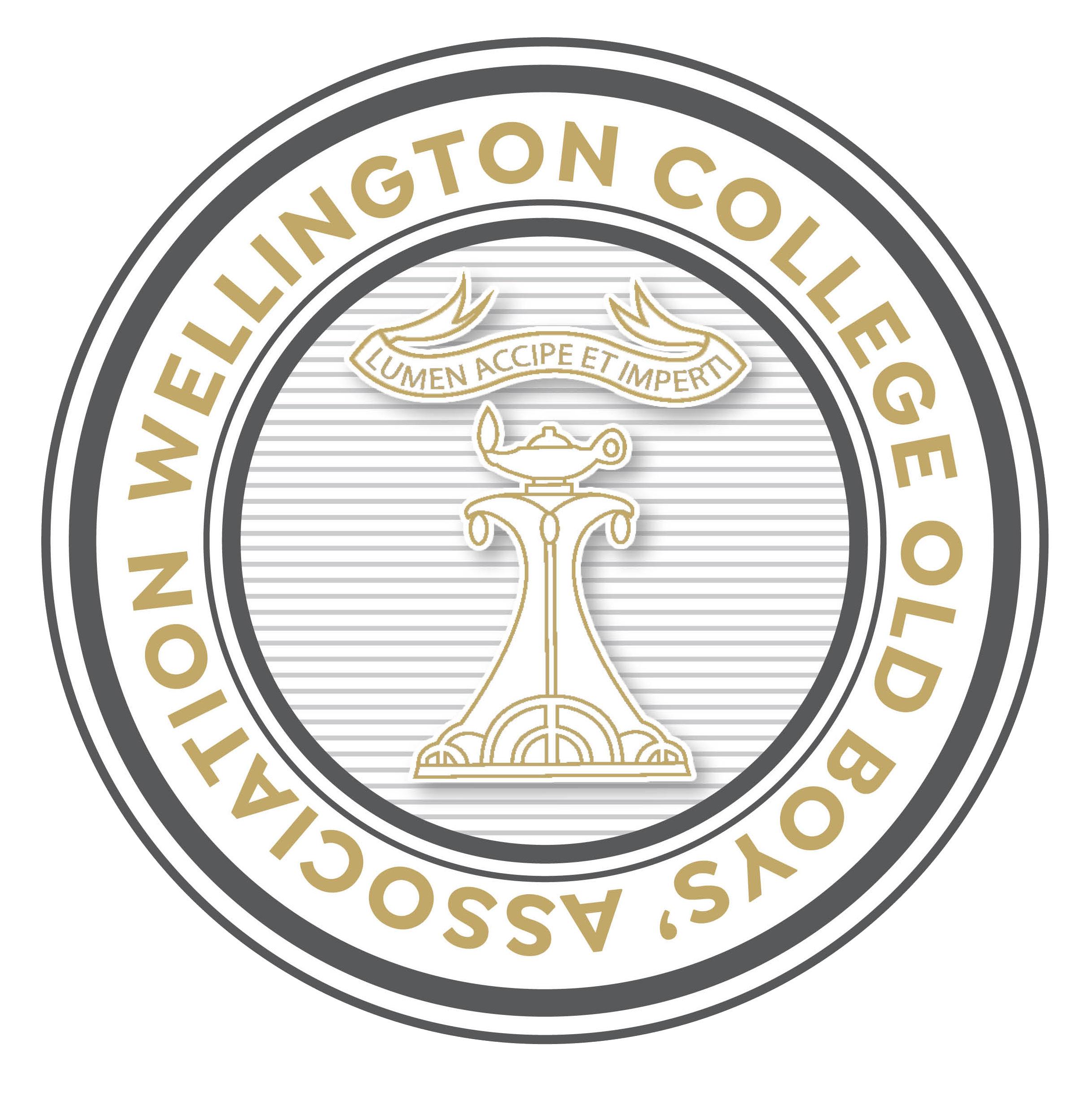
3 The LAMPSTAND, 2022 Contents The Lampstand is published annually by the Office of the Wellington College Old Boys' Association, PO Box 16073, Wellington 6242. Telephone: 04 802 2537. Email: oldboys@wc.school.nz. The WCOBA eNewsletters are issued twice a year to those for whom the Association holds a current email address. Tuesday, 7 March McEvedy Shield • The 100th Fixture @ St Patrick's (Silverstream) Tuesday, 27 - Thursday, 29 June Quadrangular Tournament @ Wellington College Wednesday, 14 June WCOBA AGM in conjunction with Traditional V St Patrick's (Silverstream) Friday, 20 October Class of 1983 • 40 Years On Reunion [Who can help with the planning?] To be confirmed: Classes of 1963, 1993, and 2003 [Who can help with the planning?] Friday, 27 October Class of 1973 • 50 Years On Reunion [Who can help with the planning?] 2023 Calendar Dates Share your news! We’d love more personal stories, of Old Boy or of your mates, successes or memories. You are also welcome to send through an obituary of a friend or family member. We welcome your feedback, and news. Please email the WCOBA Office, to share your news, or recommend us to a friend! Page 22 Reunions: Page 10 The Archives: 2022 has been a milestone reunion year for many, with seven reunions having taken place which saw over 200 Old Boys return to their old school to reminisce and reconnect. HOW TO WORK OUT YOUR COHORT FOR OUR REUNION PROGRAMME EXAMPLE 1: Started 1959, Left 1962: Cohort is 1963. EXAMPLE 2: Started 1980, Left 1983: Cohort is 1983. Form 3 Form 4 Form 5 Form 6 Upper 5th Form 6 Upper 6th Form 3 Form 4 Form 5 Form 6 Form 7 1959 1960 1961 1962 1963 1979 1980 1981 1982 1983 3ShB 4ShB 5ShB 6B4 6X 3X 4AN 5AG 6Z9 7Z2
group
1963 is still your Cohort as it’s the same
A major rāison d’etre of the WCOBA is to preserve the history of the School and make it freely available to our Old Boys and the wider Wellington College community. The School has a dedicated Archives building in which old records, photos, memorabilia and historical documents are stored.
Welcome!
It is with pleasure that I present to the Members of WCOBA the Annual Report for 2022. [25 May, 2022]
The pandemic has again occupied much of daily lives over the past year as we transition from attempting to eliminate the virus to now living with it. Thankfully, this has enabled us to start a return to some sort of normality in terms of schooling, work, our communities, and events. As a society we are continuing to be challenged by the flow on effects of the pandemic, whether these are supply chain issues translating into increased cost of living and inflation or ongoing health issues. We are living in a very different world now!
One thing that hasn’t changed and that is another 350+ young men graduated from Wellington College at the end of 2021 and joined the ranks of the Old Boys. We welcome them all as the Class of 2021 and look forward to their future contributions to society and ongoing connection with the College.
2021 was certainly a year of significant change for the College, with new chairs of the Board of Trustees, the Foundation, and the resignation of Gregor Fountain at the end of 2021. On behalf of the Old Boys, I want to acknowledge the contribution Gregor made to the College over the four years as Principal and we wish him and his family all the best for their future. And of course Gregor is an Old Boy of the College too.
his mark through his visibility in the community and at many College events. We look forward to working with Glen as he delivers on his vision for the College
HIGHLIGHTS FROM
2021/2022
Over another year of disruption, we continued to facilitate events that brought Old Boys together including a lunch for Old Boys at the Quadrangular Tournament held in Christchurch, the Class of 1961 Lunch at the 1852 Pub & Kitchen in Brooklyn and Class of 2001 Reunion and gathering at the Southern Cross. Communications included two eNewsletters and the annual Lampstand
The Executive Committee met eleven times throughout the year both ‘in person’ and over Zoom. I also acknowledge those Old Boys who organised independent gatherings, bringing together fellow classmates, teammates and those residing in regions outside of Wellington.

We continued to invest into the development of our member database and this saw us move the service into the ‘cloud’ ably assisted by our vendor Infosoft, Paul Dragunis and his team. Our membership database is a valuable asset and we need to keep nurturing and enriching the data. We made some progress over 2021, however we expect to advance its use once we launch our website and deliver a more connected up environment for communications and membership management.
MENTORING
A small pilot mentoring programme was established in the College over 2021 with some young men matched up with a selection of Old Boys (one-on-one) to support them as they worked through their future career options and explored the pathways available to achieve these aspirations. We are now seeking to promote this programme to a wider audience and expand its introduction at the College
FINANCIAL MATTERS
Glen is recognised as an outstanding educator and leader. While it has only been three weeks, Glen is already making
2021 was a messy year with several events being cancelled and reunions deferred.
Expenditure exceeded income by $61,000 due to funding the cost of our Executive Officer –Steph Kane and Archivist – Mike Pallin. These costs were budgeted and partially offset by the $25,000 surplus from the previous year. Donations from members over these past two years have assisted us in the transition brought about by retrenchment at the College.
During 2021, the Executive reviewed the associations funding requirements based on needing to break even each year while retaining our active engagement and communications with members, hosting reunions, supporting the College, and advancing the development of the archives. With these goals in mind, it is proposed that we introduce an annual membership subscription to meet these funding requirements. It should also be noted that a traditional source of income from the transfer of ‘school leavers’ textbook fees (as a membership) is running down and will come to an end in 2023
We continued to invest in programmes over 2021 to support sport at the College – Rugby $1,000 and Cricket $350, two boys attend Outward Bound $1,565, and commissioning the filming of the physical archive – a significant trove of the College’s past. With the archives resident in the ‘headmasters house’ and it being a condemned building, it was decided that we needed to create a digital archive to share with Old Boys and the wider community. In December 2021 we had the physical archive filmed and narrated and its production is expected to be completed soon
A decision was also taken to invest in the development of an Old Boys website to showcase the vast archive materials (we have a significant digital archive of photos and texts) and to advance our communications with members. The website is in its early design stage and is a project that we are seeking to push ahead with this year.
LOOKING AHEAD
We have several reunions (40, 50 and 60 years on) taking place over the remainder
4 The LAMPSTAND, 2022
iAs they say, with ichange comes iopportunity and it iis on this note, that I iwarmly welcome Glen iDenham, the 15th iHeadmaster of our iCollege.
of this year and it’s great that Old Boys across all decades still enjoy returning to their old school and reacquainting themselves with the College and fellow classmates.
These include:
[ An Old Boys Lunch is being arranged on Wednesday, 28 June in conjunction with the Quadrangular Tournament in Whanganui
[ The 1962 and 1966 1st XV’s reunions at Tournament in Whanganui
[ A Firth House Reunion is being held on 30 September
[ The Class of 1981 Reunion: Deferred 40 Years On is on Friday, 21 October
[ The Class of 1982 Reunion: 40 Years On is on Friday, 28 October
[ The Class of 1962 Reunion: 60 Years On is on Friday, 4 November
POSTSCRIPT
WCOBA News since the AGM
The reunion season came back with a rush post-Covid, with seven cohorts of Old Boys coming together over 2022 to celebrate the decades past since being at College. The friendships and memories that have stood the test of time are a testament to the strong bond that Old Boys continue to have with the College. There were amusing stories of the pranks that boys got up to when at College, often involving teachers, with many having been given nicknames by the boys
I want to thank all those Old Boys who were able to attend the reunions and for taking time to give back to the College, but especially to those who actively reconnected and cajoled classmates into being there. Within some of the cohorts, we had classmates reconnecting after many years and one thing that resonated about their lives after College was that most reflected on the fact that their time at Wellington College put them in good stead for their life ahead.
Wellington College is a big part of Wellington and the young men who graduate from the school are destined to be huge contributors to Wellington, New Zealand, and for some, on the global stage
The College's end-of-year programme is a big deal when it brings together
[ The Class of 1972 Reunion: 50 Years On is on Friday, 11 November
[ The Class of 2002 Reunion: 20 Years On is on Friday, 11 November
I urge you as Old Boys to continue to help us! By using your connections and networks with fellow Old Boys to further enhance the current details on our membership database. It does make a difference.
We continue to ‘build success through active participation’ and we can all help to ‘strengthen the bonds’ and to develop a stronger connection between the College and its Old Boy community.
Finally, I would like to thank the members of the Executive for their service over this past year. Special mention must go to Mike
Pallin, and Gary and Abbey Girvan for their tireless work in continuing to develop and manage the archives and Steph Kane of course, for her efforts across our communications and organisation of reunions, gatherings, this AGM and generally keeping us connected.
And lastly, I thank you all for your attendance and support today as the College takes on its old foe, St Patrick’s Town in the annual sports exchange. We wish all the boys representing and competing for their respective colleges all the best and that the supporters get in behind the College.
Go well.
Ted Thomas, WCOBA President Class of 1976, Firth House Prefect
1,800+ boys, their parents, and communities for a series of events. Awards, prizegivings, exams, and farewells all make for a successful year. The Old Boys' Association played an important role in the transition of the young men (Year 13) from the Class of 2022 as students to becoming Old Boys.
Approximately 305 boys graduated from the College this year and head off to further education and/or work. 2023 is looking at an even larger intake - in excess of 400 new entrants.
The Old Boys' Association had the pleasure of participating in many of the formal end-of-year events.
Our involvement in the 2022 Rugby Club awards and facilitating the presentation of Jack O’Loughlin’s cap from the 1932 1st XV (90 years ago) was a very significant event. What a wonderful occasion to have Jack’s grand-nephew, Jesse RumballSmith, a current student at the College, present the cap on behalf of the family.

The College's Black & Gold Awards, are a celebration of the arts, culture, music, and sport across the College and recognition for those boys and groups and teams who had excelled throughout 2022. The talent on show was amazing and I am sure
that many will showcase in future Lampstand editions.
At the Y13 Leavers' Assembly, previous Head Prefect, James Blackwell (WCOBA Executive) and I spoke with the boys about leaving Wellington College, becoming an Old Boy, and maintaining that connection. Old Boys' Lapel Badges and membership certificates were then presented to all leavers at the Senior Prizegiving.
In closing, we have made good progress over 2022 in reconnecting the Archives and the College, providing the link between the past and present, and enabling boys to gain a better appreciation of the legacy and what came before them over the past 155 years. It helps to reinforce the College identity and the role it has to play in educating young men.
Thanks to my WCOBA colleagues, the Wellington College Foundation, the Wellington College Board of Trustees, Glen, our Headmaster, his staff, and the Prefects.
I wish you all a wonderful Christmas and New Year. Keep well and safe. We will be in touch again in 2023.
5 The LAMPSTAND, 2022
Ted Thomas
“You need the Clipboard, Sir!”
This should strike a chord with a few Old Boys. An excerpt from the Headmaster’s Newsletter, issued not long after Glen started in his new role.
I was standing at the doors of the AGC waiting to take my first Assembly, in my second week at Wellington College. I was excited to get in front of our boys, in a large group and talk to them about the expectations that I had for them and what they could expect from me; most importantly aroha then tautoko, whanaungatanga, manaakitanga and rangatiratanga.
A group of prefects were waiting at the door with me and one of them, Tim, a great leader said, Sir, where is the clipboard? I said, What clipboard? They all said, You need the clipboard, Sir. Every Headmaster has had the clipboard. You need the clipboard. I said, No one has told me about a clipboard. Is this a thing that I need? The boys said in the most earnest tones; Sir, you have to find the clipboard! Harry, our brilliant Head Prefect, had given the school the nod and the boys were all standing. A quick frantic search of my office ensued and like Thor's hammer, Captain America's shield, or NZSO conductor Gemma New's baton, the clipboard was found. I felt the wairua of our past great leaders and took my first Assembly. Thank you Tim and team for looking after me
I took a couple of photos of the clipboard and a small section of its history which is proudly displayed on the back. In talking to others, some boys thought that it had the school song on it, others a list of boys who had detention, and others thought there was a list of previous Headmasters. It is a great taonga for Wellington College. I thought that I would name the Friday newsletters The Clipboard in a homage to my esteemed predecessors
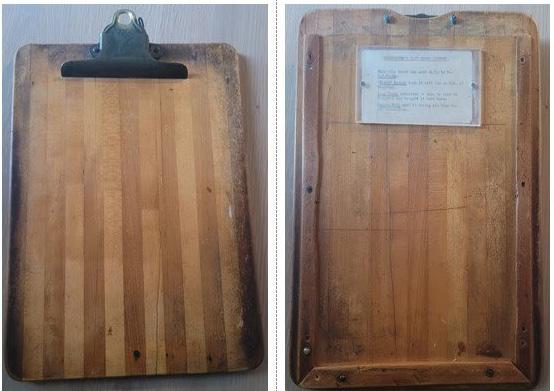
EXCERPT FROM THE HEADMASTER'S CLIPBOARD
 TĀNE MAHUTA
TĀNE MAHUTA
We have had tremendous support from our Old Boys over the years.
I have spent time with a number of them, and it is always a huge pleasure. I can hear and feel their passion for Wellington College, and their aroha and pride for our current boys. I can’t thank them enough for their support and continued interest and commitment to their College
Our current boys love to see Old Boys supporting them at extracurricular events. They appreciate the Old Boys who went before them and they are always determined to make them proud. They know the legacy that our Old Boys have forged. Wellington College will always be your school.
The diversity of destinations from where our Old Boys have come and what our Old Boys do, continues to set the bar for our current students.
Every occupation or vocation is covered by the 33,000 Old Boys that we have. I like to think that our school is like Tāne Mahuta, in the Waipoua Forest. The branches, like our Old Boys, grow in a thousand different directions, tall and strong, and covering a vast section of the commercial, educational, sporting, health, philanthropic and political landscape of New Zealand and beyond. The trunk and the roots remain connected and in the same soil
I was speaking to an Old Boy outside of our school gates recently. He said he had been a student in the ‘80s and he had never been back. I asked him why, and he said that he felt that he had had his time and that none of his teachers were there now. We wandered up the drive and he marvelled at the new turf and the new indoor cricket facility being built. He told me a few stories of his time here and thanked me for showing him around. I said to him that my job was to
serve, love and care for our current boys but, importantly, to make sure that our Old Boys still see this as their home. I told him that I tell our students to take a piece of the school with them (not literally.) Over time they will have absorbed not only information, knowledge and skills, but also values, culture and history. I want them to take that experience and use it to make a difference in the world.
I finished by saying, Staying in touch with the people we went to school with is really important. Only they (and our families) knew us as children. Keeping in touch with our real self will help us to be honest and true, so don’t lose the friends you made at school.
Our Old Boys are like street-lights along the road. They don't make the distance any shorter, but they light up the path and make the walk worthwhile. Receive the light and pass it on. Glen Denham
6 The LAMPSTAND, 2022
A WARM WELCOME FOR OUR NEW HEADMASTER
On Monday, 2 May (and the start of Term Two), the College community warmly welcomed our fifteenth Headmaster, Glen Denham to our school. Following the powhiri and welcome ceremony, Glen spoke with much passion about his new role in leading our College and how excited he is to be part of our extensive community. Guests were invited to gather for Morning Tea and we were able to get a couple of photos with Glen; one with the past and present AWESOME FOURSOME –Gary Girvan, Roger Moses and Harvey Rees-Thomas and one with WCOBA President, Ted Thomas.
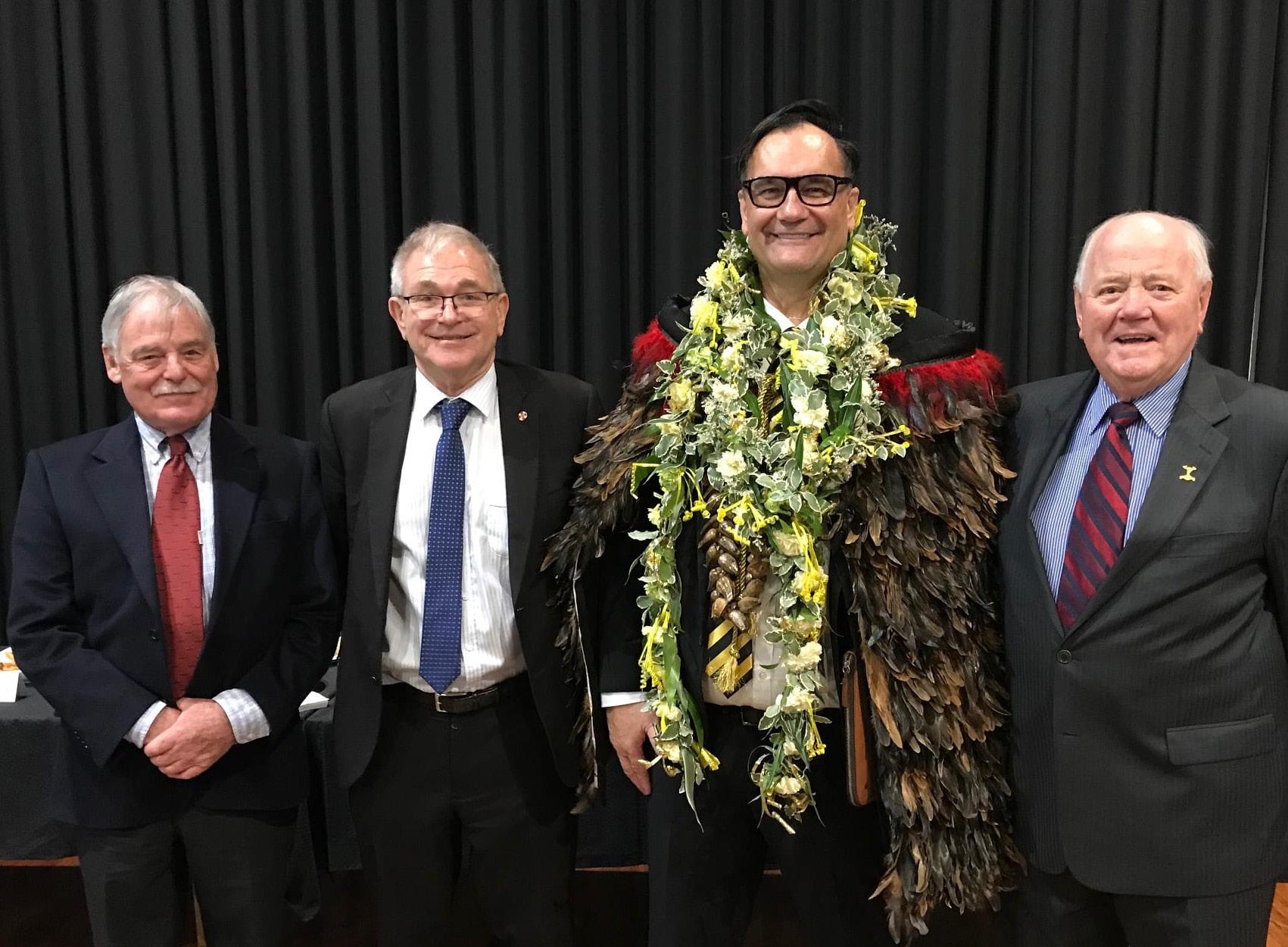
Do you mind if I tell you a story? Glen Denham asks.
The newly-appointed Headmaster of Wellington College has gathered colourful stories throughout his varied career – first as a national basketball player, then as a teacher and Principal.
Glen was a Tall Black for 16 years in the 1980s and 1990s – eleven of these spent as captain – and has been rated as one of New Zealand’s best players. I wasn’t very good, Glen says, laughing, just tall
He has come from 15 years leading low-decile schools in the UK – some of those as an ‘executive principal’ of several south London schools – then eight years as principal of Massey High School in West
Auckland. Now he’s leading the 155-year-old Wellington College, one of the country’s oldest schools, as its first Māori Headmaster.
My mother, bless her soul, I think she would be proud, Glen, Te Arawa, Ngāti Rangitihi, says. He hopes to see out the rest of his career at the College.
In his first week in the role, he is outside the office doors early on, telling students to smarten up. Boys, boys, boys, pull your socks up, he tells them. Good, good, good, good, checking them off as they file past, straightening their black socks
Uniforms are important, Glen says, for being about ‘pride and aspiration’. He implemented them at decile 4
Massey to some controversy in 2015, but says it instilled a change in students’ behaviour and self-perception. The blazer is the korowai. When students leave, I tell them to wear it on the inside now ... you take it with you. Uniforms are important, Glen says, for being about ‘pride and aspiration
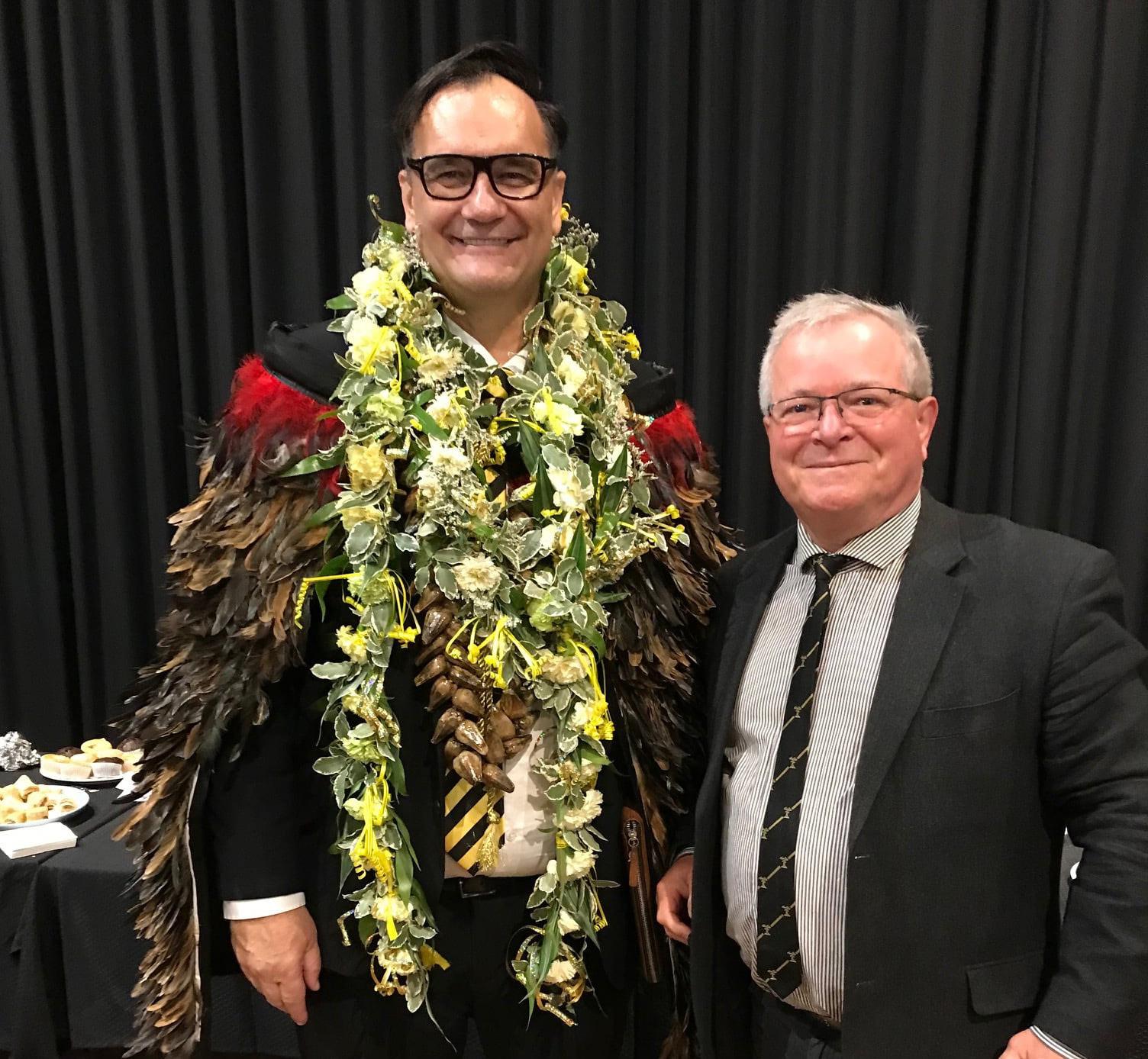
When asked why he wanted to lead Wellington College, Glen goes back to his own education at King’s High School in Dunedin, which he says fostered a sense of self-belief in him. Mr Simpson, the Rector, told my next eldest brother Peter, ‘you’re not going to the freezing works, you’re going to university’, so that allowed me to go to university. We were poor Māori kids. There weren’t many Māori kids in Dunedin, and once Pete went [to uni], we all went.
He wanted to return to boys’ education, providing aroha and a sense of belonging to every student.
Aroha turned around the third worst-rated school in the UK – Oasis Academy Shirley Park in Croydon – to an ‘outstanding’ rating while Glen was executive principal.
He knocked on the doors of the 20 naughtiest students, he recalls, and told the families he loved them – but that they needed to respect the rules. He approached the head of the local south London gangs, asking them to stop lingering outside the school gates to recruit.
His goals are different for decile 10 Wellington College. High standards of academic achievement are important, Glen says, as is hiring the best teaching staff for the students. He is keen to see a building academy programme, like the one at Massey High, where students learn to construct a house on school grounds as part of their lessons, then sell them to Kaīnga Ora.
The challenges children face at the school are different from those in Croydon or West Auckland, Glen says, including the challenge of high expectations. Feeling at home at school is crucial.
Everyone has a place here. It’s important no matter what you’re interested in or where you come from, you belong here.
STUFF.CO.NZ, May 2022
7 The LAMPSTAND, 2022
iEveryone has a place here: iAroha in education vital, new iCollege Headmaster says.
Honours

John Hutton, Class of 1956
ONZM FOR SERVICES TO WOMEN'S HEALTH EDUCATION
Professor John Hutton became a Member of the Royal College of Obstetricians and Gynaecologists in 1974, later becoming Professor of Obstetrics and Gynaecology at the Wellington School of Medicine. He introduced secondary Obstetrics and Gynaecology services to the Kapiti Coast and spent twelve years in this posting.
In the 1980s, John advocated for the continued availability of the injectable contraceptive Depo-Provera, rebutting misinformation of possible carcinogenesis. He became Deputy Dean of the Wellington School of Medicine, upgraded the Postgraduate Education requirements for New Zealand Trainees in Obstetrics and Gynaecology, and developed student services for women’s health. He founded the New Zealand Infertility Society (now FertilityNZ). Since retiring from clinical practice, Professor Hutton has developed an electronic logbook for trainee interns and an electronic learning resource for undergraduates.
Ian Jackson, Class of 1955
MNZM FOR SERVICES TO THE PLUMBING INDUSTRY AND THE COMMUNITY
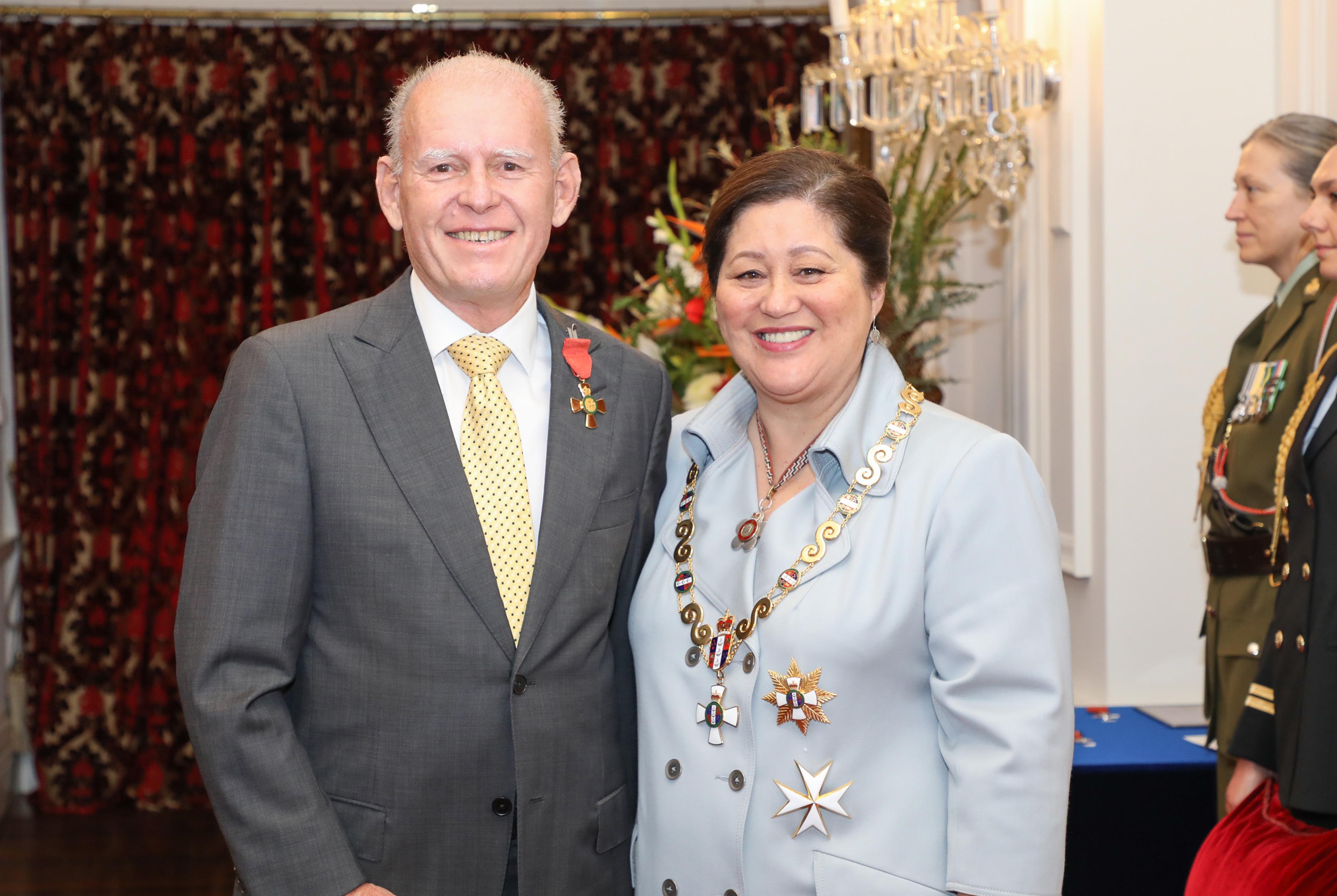
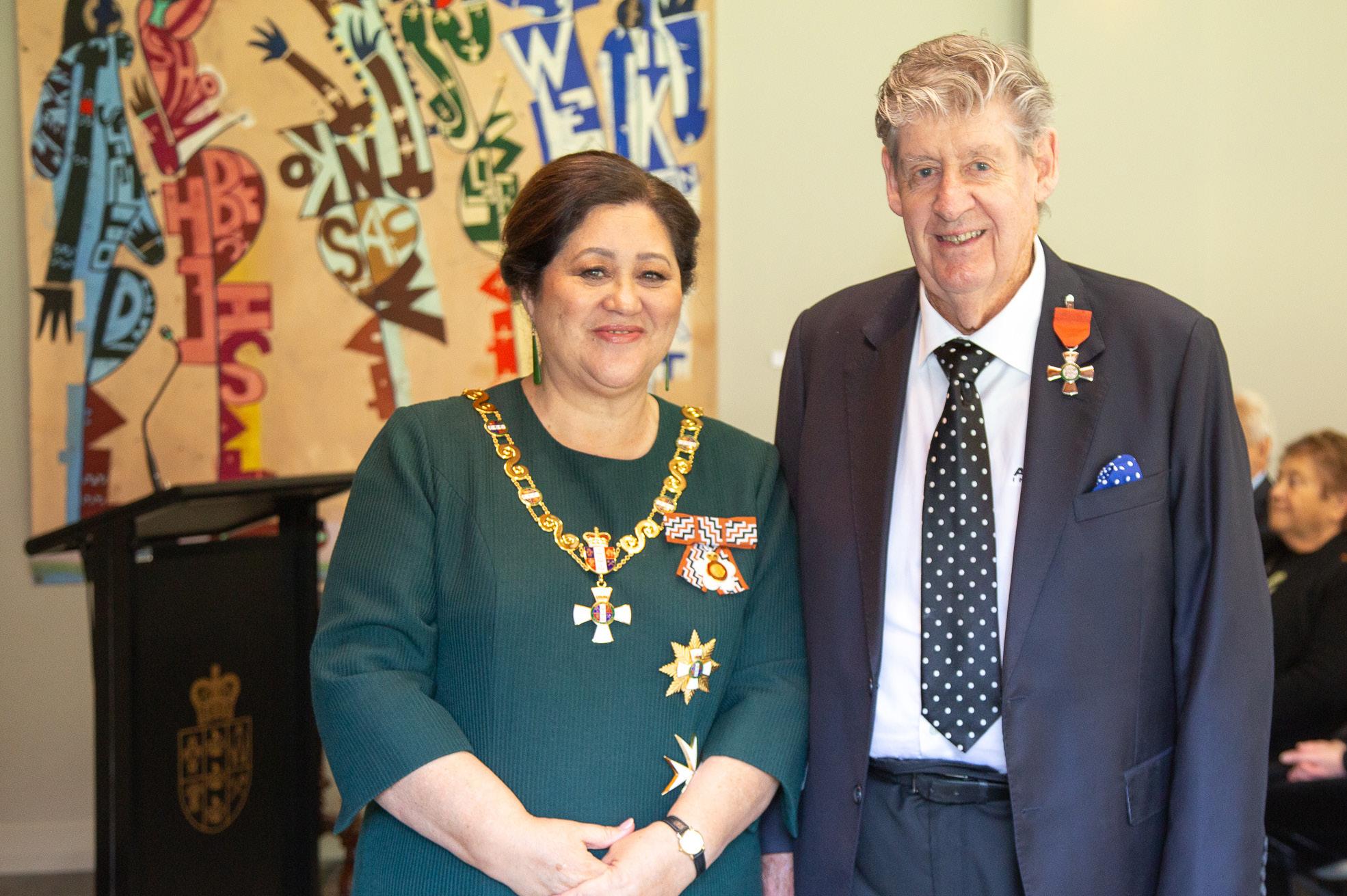
Ian Jackson ran Jackson Plumbing Ltd. in Auckland for many years. He initiated the promotion and uptake throughout New Zealand of the Australian Plumbing Code AS3500, a more cost-effective and efficient method of plumbing.
His company, Allproof Industries has researched and developed new products for the plumbing and drainage industry. Through Allproof, he supports numerous charities, schools and other organisations.
Ian has been involved as a swimming and surf lifesaving competitor and coach. As President of North Shore Swimming Club, he secured a Head Coach that led to the Club becoming one of the most successful clubs nationally. Ian has been President of the Auckland West Rotary Club.
Roy Opie, Class of 1965
QSM FOR SERVICES TO THE COMMUNITY
Roy Opie, as Commodore of the Otaihanga Boating Club from 2007 to 2014, oversaw a $500,000 rebuild and upgrade project to the flood-damaged Club hall.
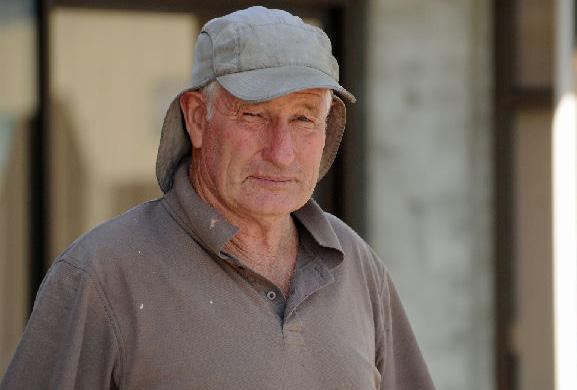
Roy was member of the Kapiti Primary School Committee for six years, serving the last two as Chairman. During this time, the committee oversaw the construction of a swimming pool complex. He has a background in construction and in the 1970s he was involved in building the foundations for the Paraparaumu Rugby Club.
Roy joined the Kapiti Rotary Club in 1978 and was President in the early 1980s. He was later District Chairman of the Friendship Exchange Committee for two years. Through Rotary, he chaired the committee that oversaw the construction of a hall for the Kapiti Senior Citizens Association in 1987. The hall is used by many community groups and in recent years, he has led a team in renovating the hall and building an addition to provide a small annex for meetings, the hall is due to be completed in 2022. He has organised the Rotary Run for Fun event to raise funds for local schools.
Roy has helped raise funds for the upgrade of the Wellington Free Ambulance Station in Paraparaumu and has contributed to projects for the RSA and Club Vista.
8 The LAMPSTAND, 2022
OUR HISTORY ACROSS THE DECADES
1872 The first Board of Governors of Wellington College is appointed. Roll 91. Wellington College and Grammar School affiliated with the University.
1882 Roll 145. Girls’ classes discontinued.
1892 Joseph Pentland Firth appointed Headmaster.
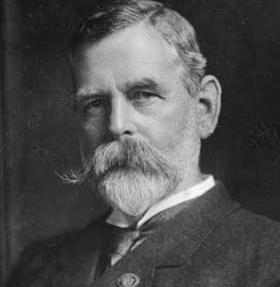
1902 The Memorial Tablet to the five Old Boys who lost their lives serving in the Boer War is unveiled.
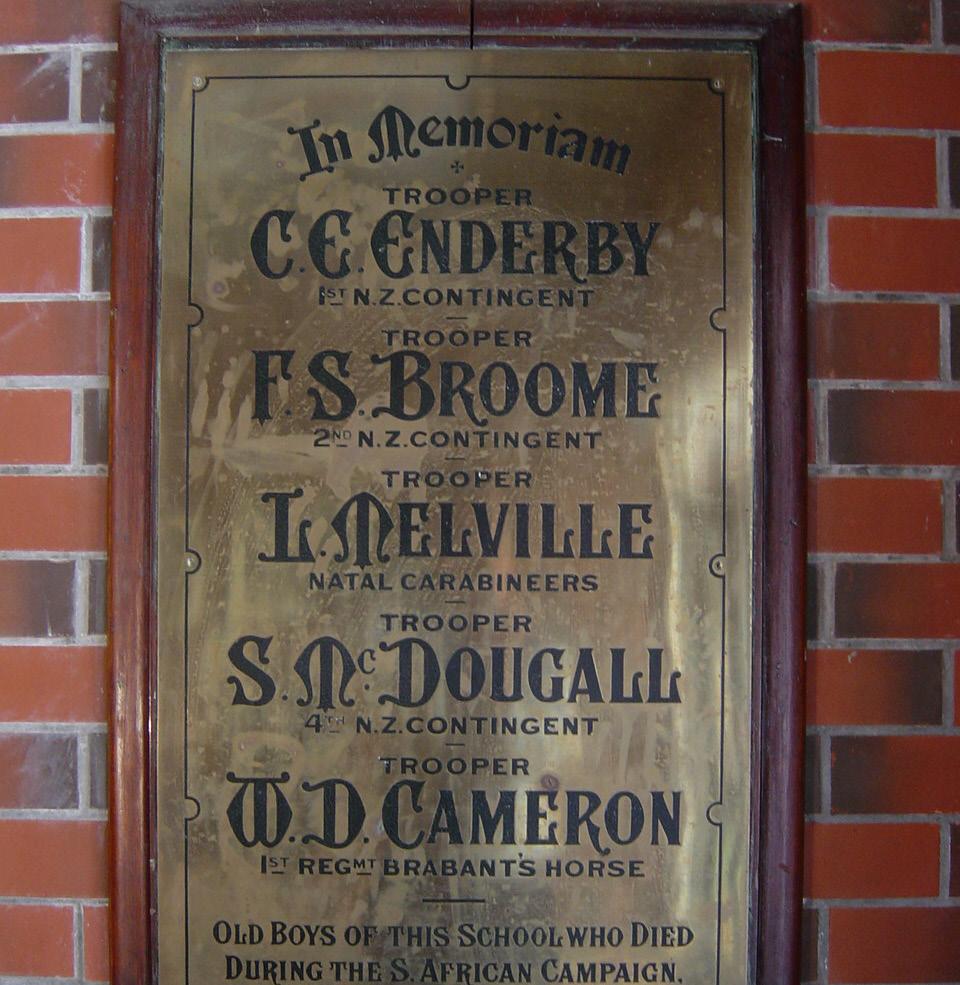
1912 Roll 412. The Board approve the construction of the College’s first Observatory - the telescope and the accompanying fittings were ordered from England.
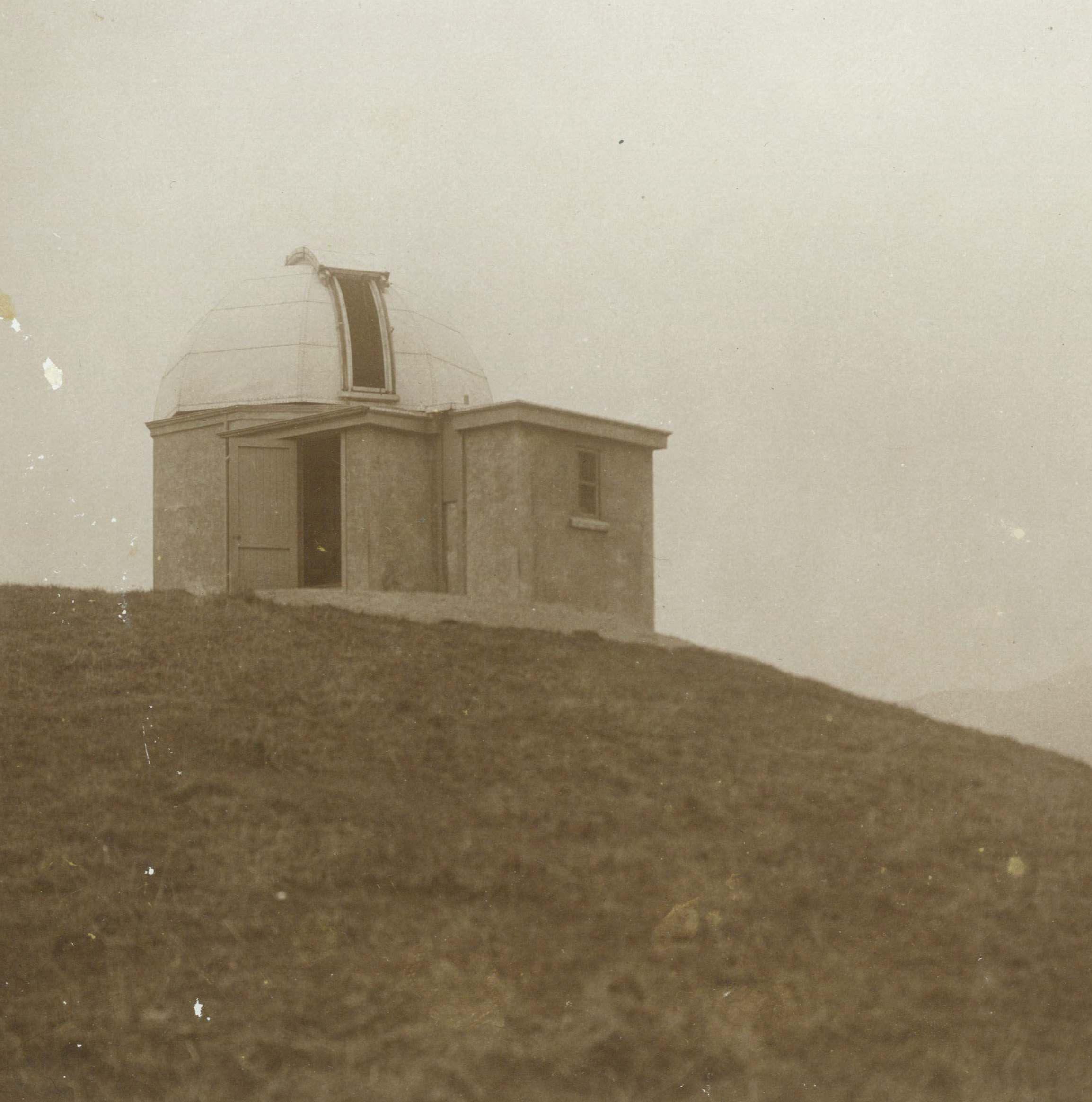
1922 J P Firth is awarded the CMG.
1932 Unveiling of Walter E Bethune Memorial Sundial in front of the Memorial Hall. He was an Old Boy and three times President of the Old Boys’ Association.

1942 The first women appointed to the Staff, a wartime measure. The Army occupied the College for Term One. Air Training Corps (ATC) was established.
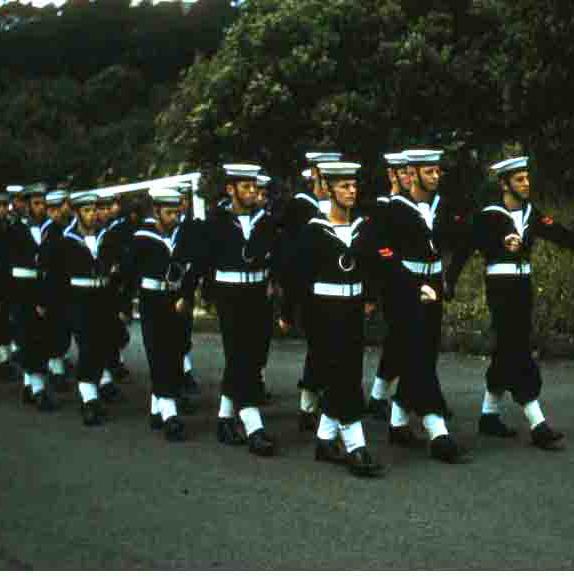
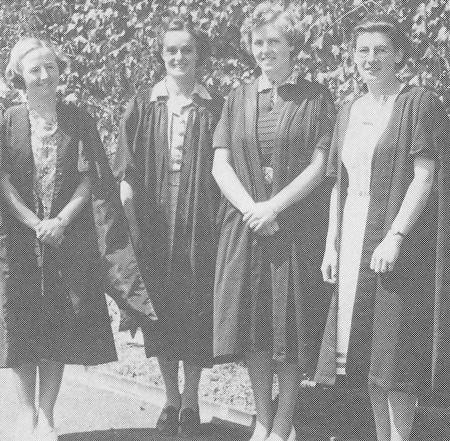
1952 Memorial Service in Town Hall for all schools on death of King George VI. Sea Cadets established.
1962 Old Boy, Sir Guy Powles becomes NZs first Ombudsman.
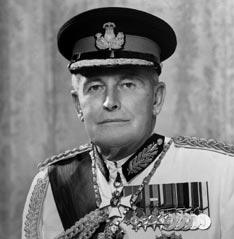
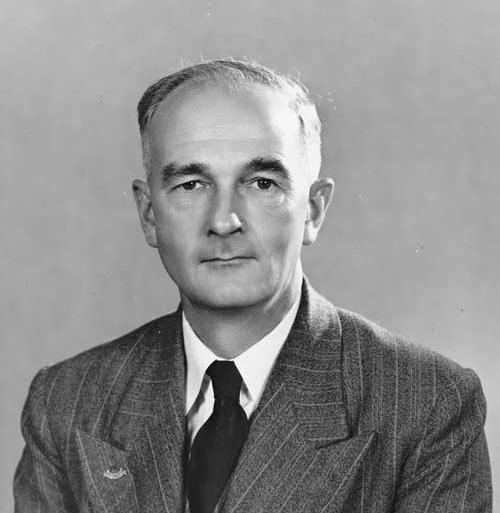
1972 The school Tower Block opens. Old Boy, Sir Denis Blundell appointed Governor-General.
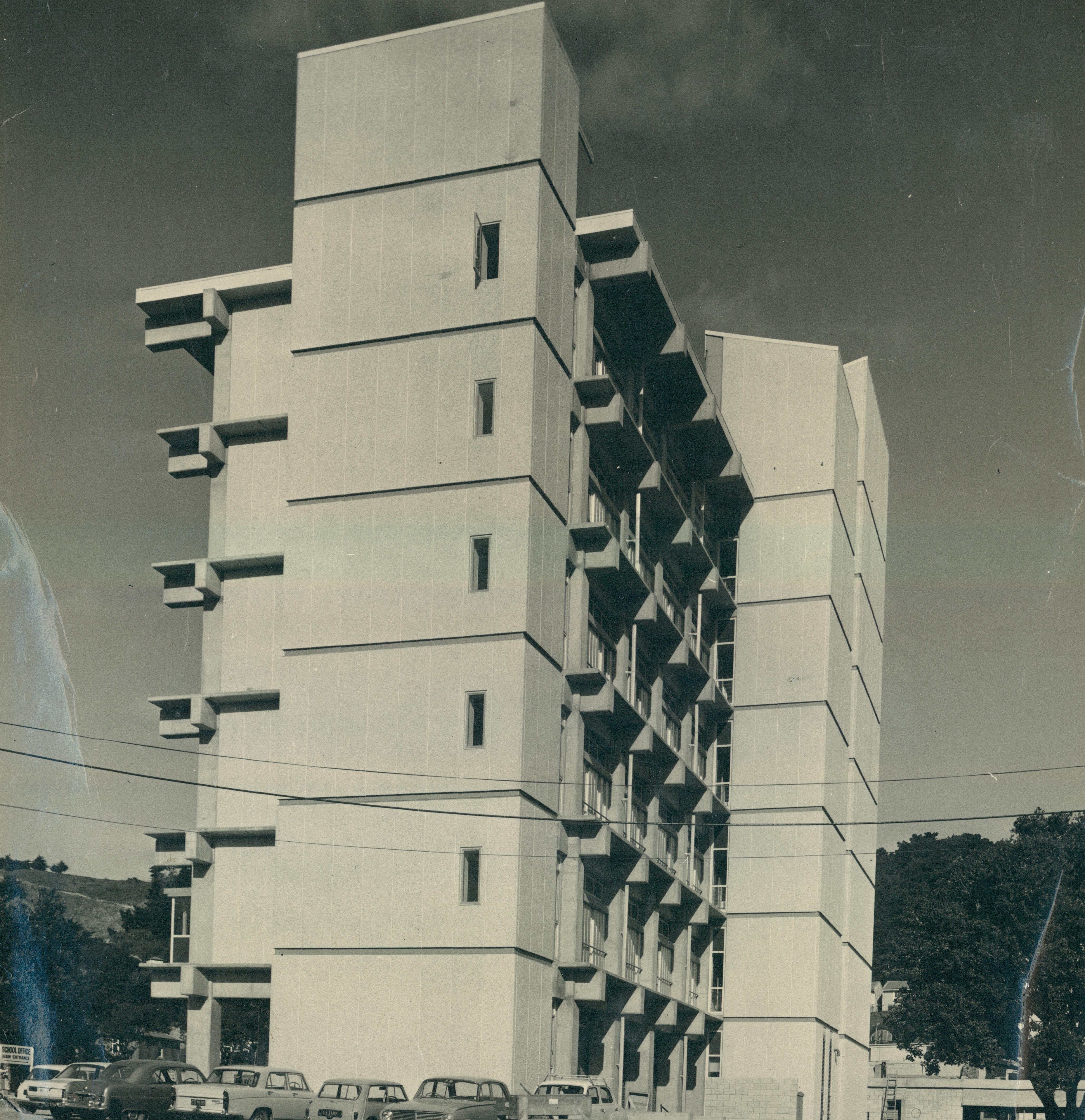
1982 The Education Department approves building of the Sports and Arts Centre. The College Big Band is established.
1992 Jubilee Year. The 125th Anniversary of the school opening in Woodward Street.
2002 The Student Services Building opens. Named after longserving teacher, Robert Bradley and sometimes known as ‘The Stable’.
2012 Wellington College was again top in the country for the NZ Scholarship Awards with 152 Scholarships. The Artificial Turf and Frank Crist Centre were opened.
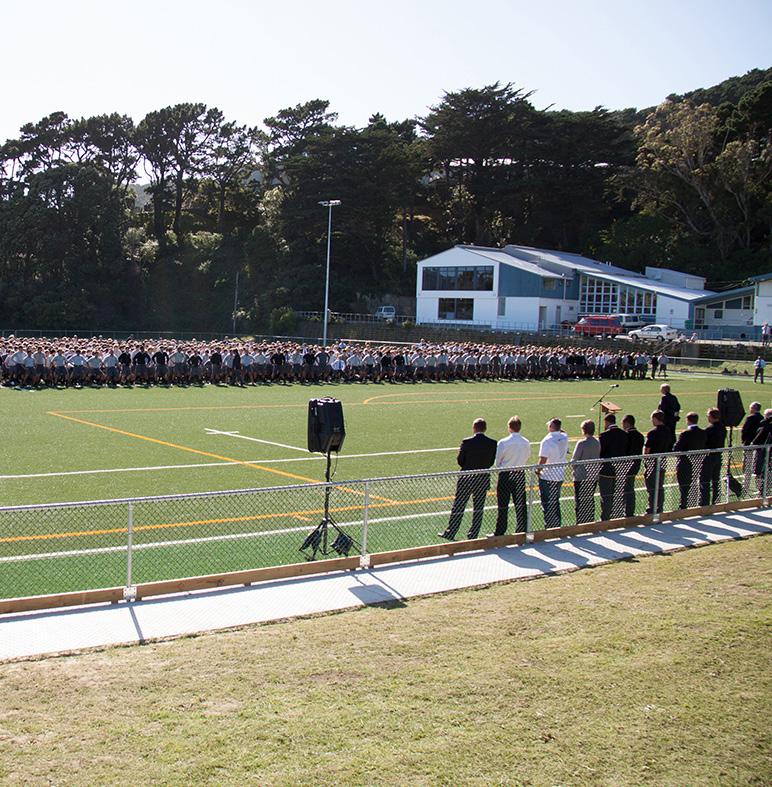
I
t was 50 years ago in May that the Tower Block was completed and formally opened by Sir Denis Blundell, (GovernorGeneral and Old Boy). What stories the stairwells and lifts could tell – there was and still is nothing worse than finding saliva globules on the handrails and thus on hands). Some say the Tower Block was an unfortunate addition of Soviet-era architecture.
The Observatory was first established in 1912 by the efforts of science teacher, Charles Gifford. The observatory was moved to the current site in 1924, on land that is now occupied in trust by Wellington College and Wellington East Girls' College. The observatory fell into disrepair in the late 1970s due to a momentary lack of time and enthusiasm from staff and students at the school.
A trust was established in 1998 by a small group of interested teachers and amateur astronomers from the Wellington Astronomical Society, with the goal of restoring the observatory to a working state. On March 25, 2002, the observatory was successfully re-opened by William Pickering, who had been a frequent user of the observatory during his school days.
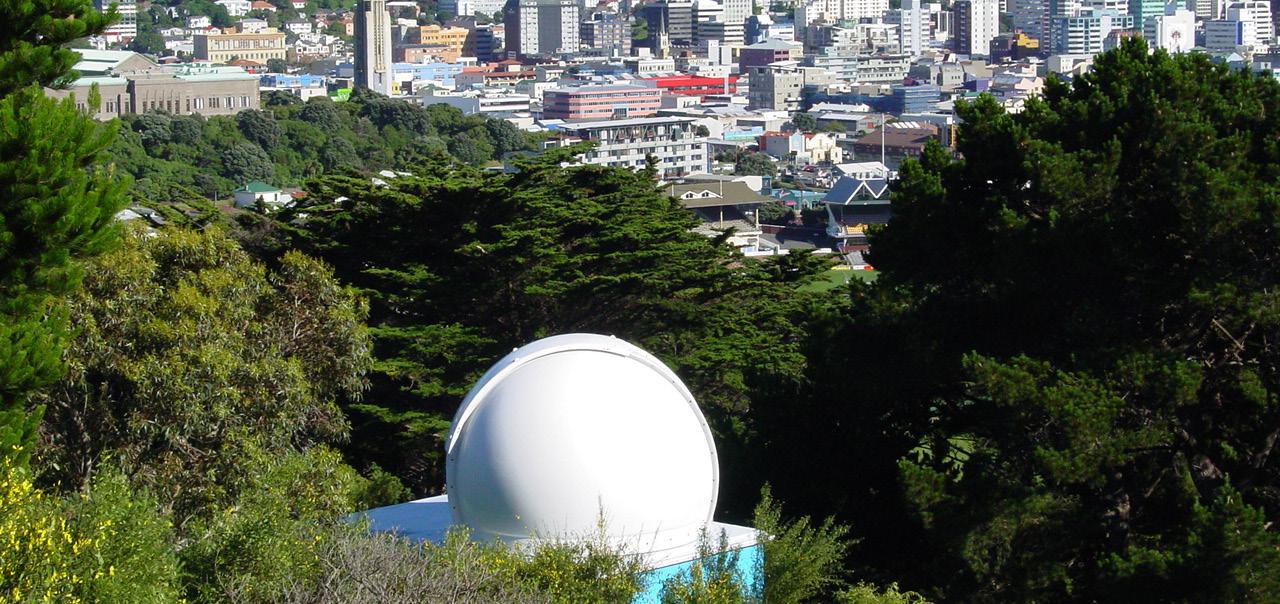
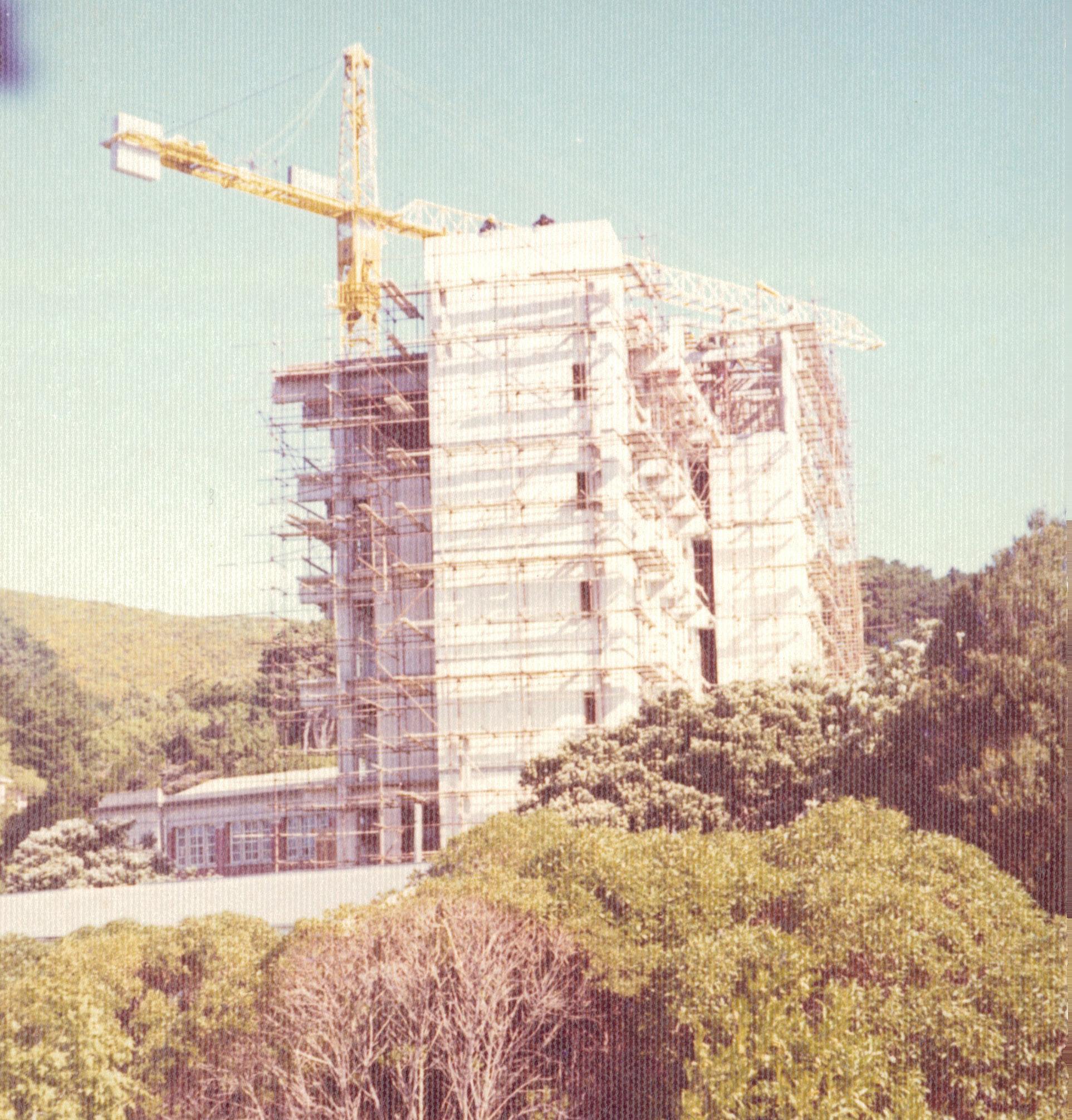
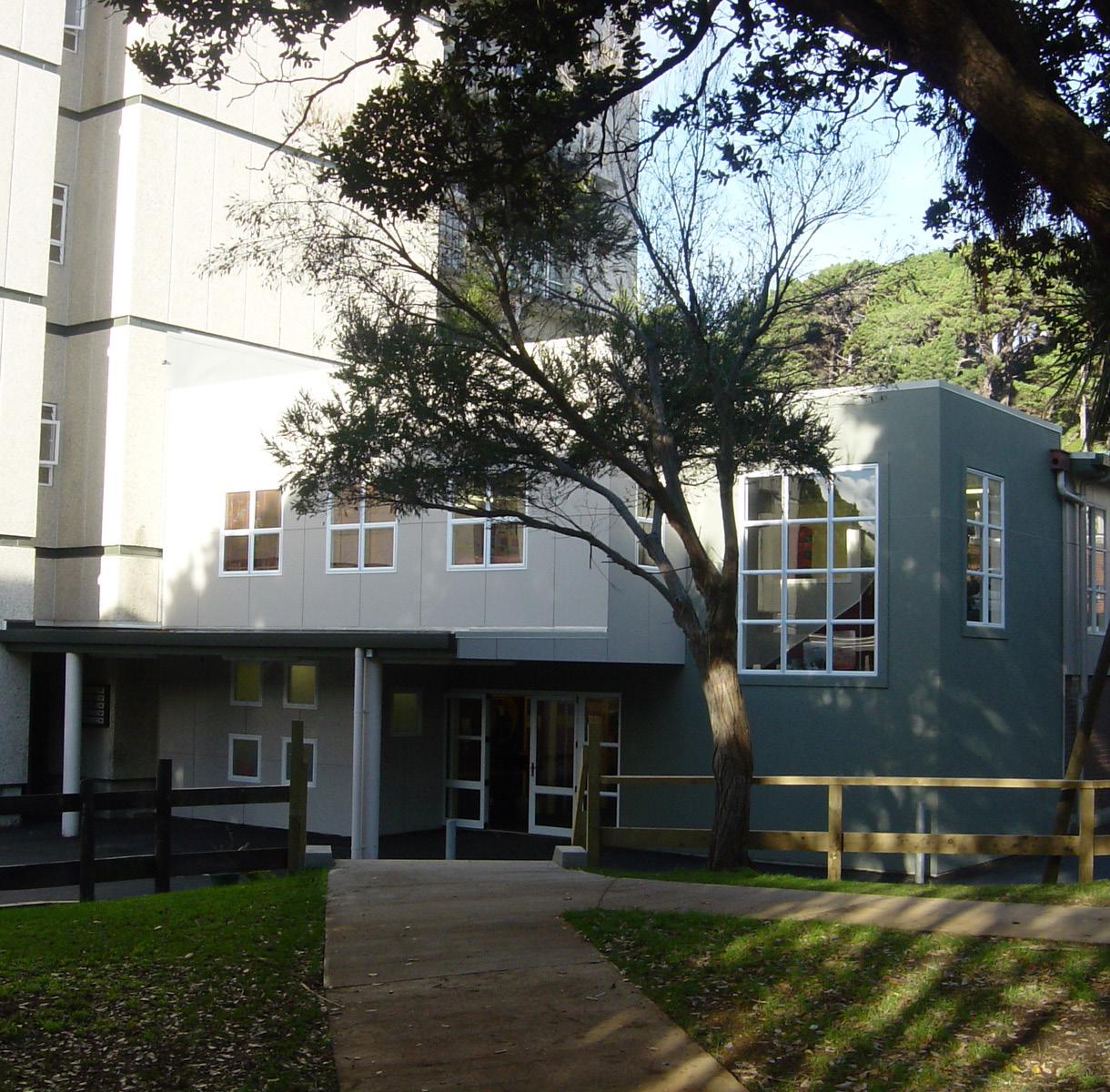

9 The LAMPSTAND, 2022
1892 1902 1912 1932 1942 1952 1962 1972 1972 1982 2002 2012
TheArchives
In spite of the continuing effects of Covid, the past year has continued to be full on with numerous visits from Old Boys, requests for information, receiving items of memorabilia, preparing displays and assisting with Old Boy reunions. Much of this work could not be achieved without the support of our volunteers, Gary and Abbey Girvan, Old Boy, Rod Page [Class of 1963] and the College Property Management team of Kelwyn and Roy.

Roy Smith’s much appreciated work restoring the old school bell, which probably dates back to the 1870s, now takes pride of place in front of the AGC not far from where it had been located, near the original Memorial Hall from the 1930s to 1960s.
A new display of 'Some Old Boys of Note' has been prepared and will be on display near the Girvan Library. This is a work in progress and will be added to over time. It covers Old Boys from music, arts, media, science, business and public service as well as many in sports.
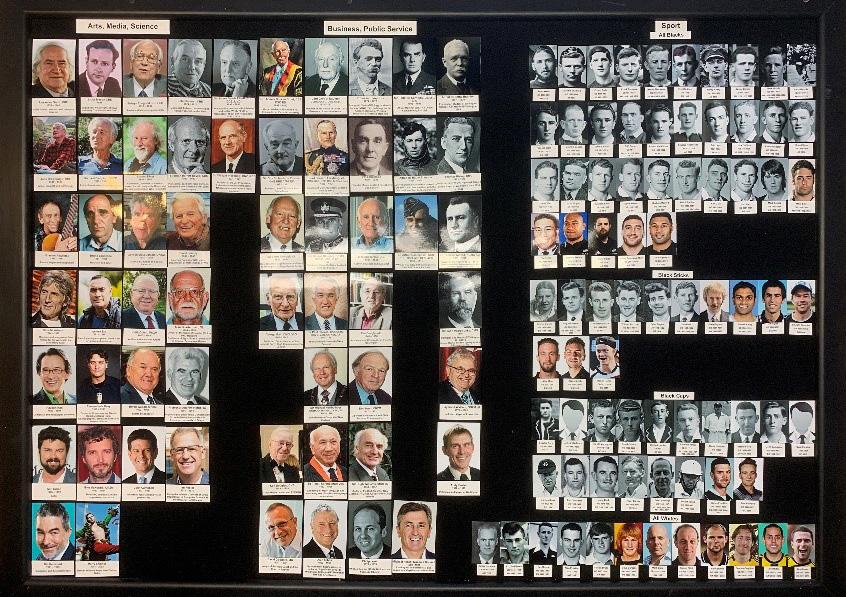
During the year, we met with a number of other school archivists at Wellington High School organised by Carey Clements from Wellington High School. Eric Boamah from the Open Polytech and member of ARANZ, Archives and Records Association of NZ, who was writing a research paper on Archives in Schools. The schools present included WHS, Scots College, Marsden School and Wellington College all spoke of similar issues affecting our role. Archives space, time, resourcing, funding and support
Mike Pallin, College Archivist
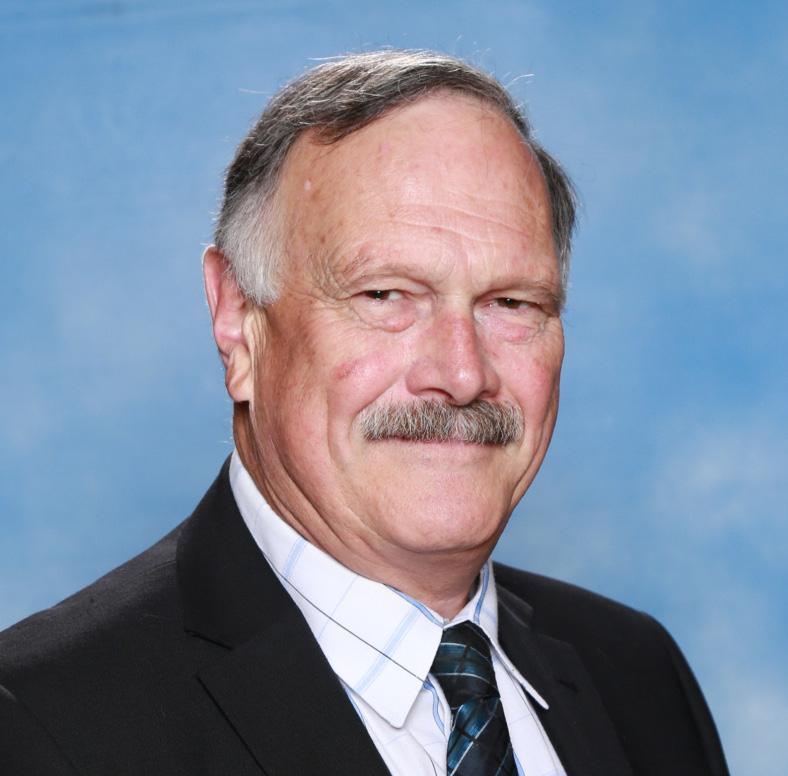
: Prior to hosting the WCOBA Lunch at this year's Tournament, we paid a visit to Whanganui Collegiate's Archives and Museum. WCS Archivist, Richard Bourne was an excellent host and we were delighted to see how they stored their treasures, memorabilia and records. (L-R): Mike Pallin, Gary Girvan, Abbey Girvan, Steph Kane and Ted Thomas.
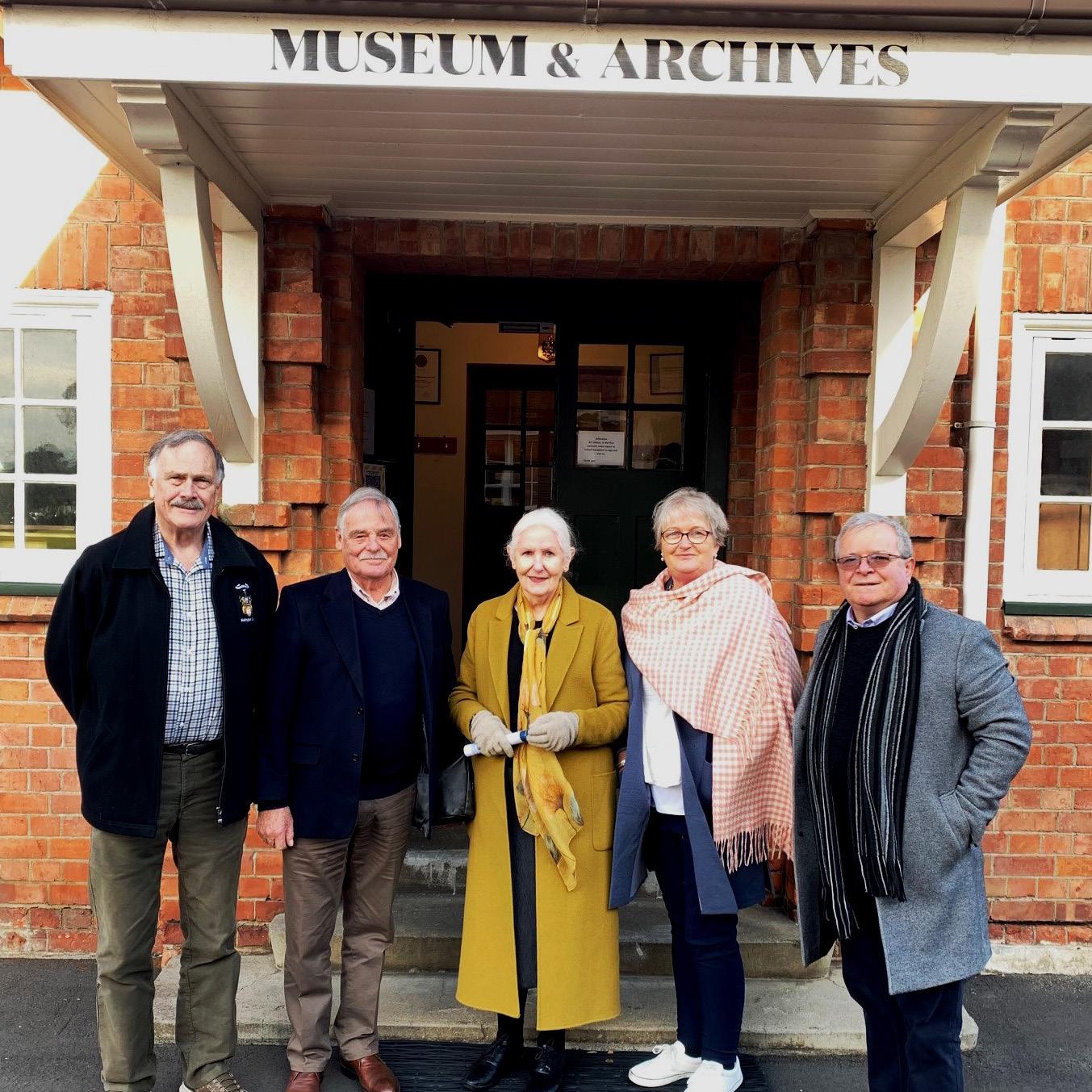
; Making a start on the 'Old Boys' of Note Display. Send us your suggestions on who should be included.
(L-R): Property Manager, Kelwyn D'Souza, former Headmaster, Roger Moses (who happened to be passing by), Gary Girvan, Roy Smith and Chris Hope.

10 The LAMPSTAND, 2022
The Old School Bell is resurrected
Generations of Old Boys who attended Wellington College between 1930 and 2016 will remember the old school bell which was displayed prominently on its wooden scaffold as pictured in the photograph from the 1956 Wellingtonian.
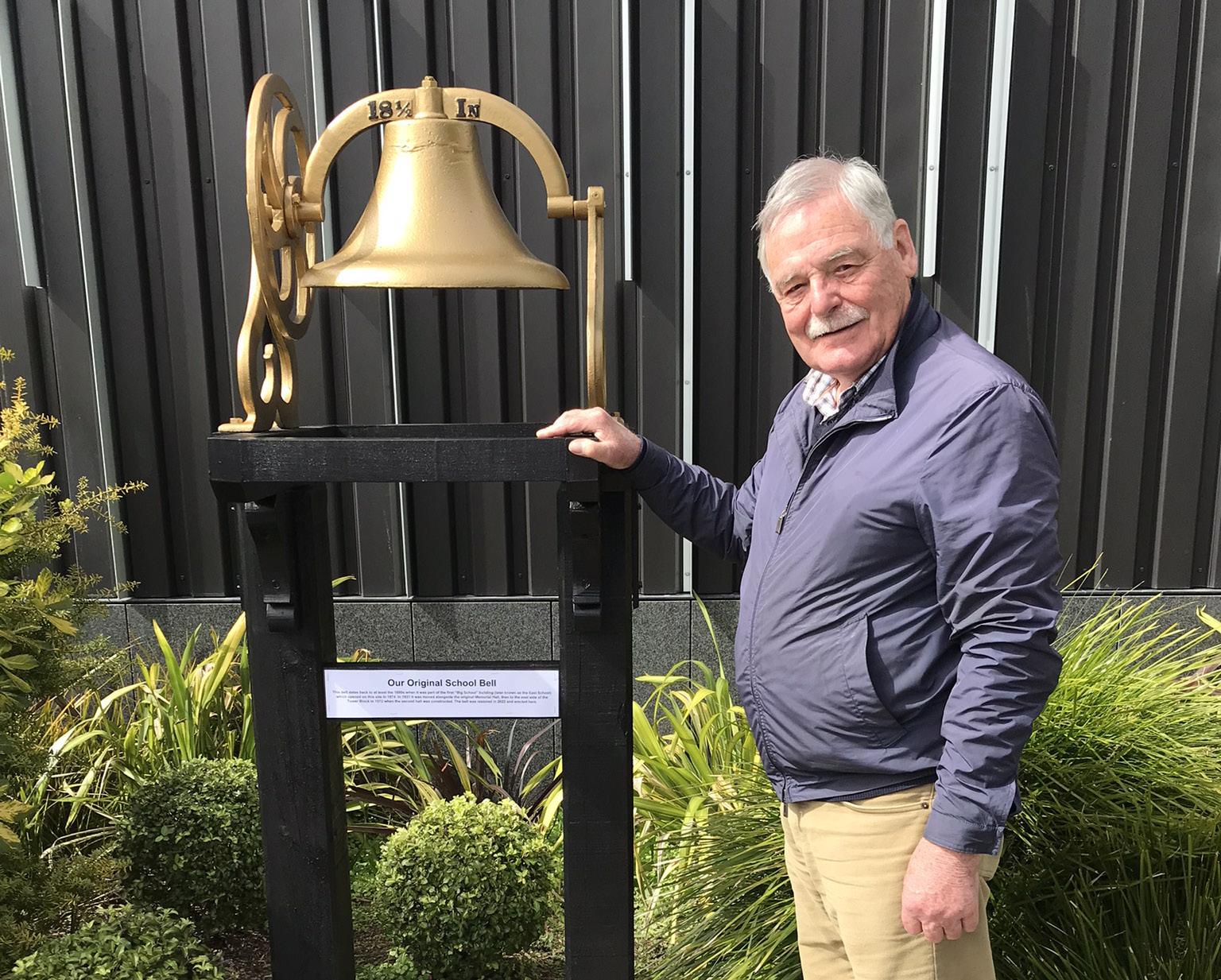
The bell was an integral part of the East School, that splendid wooden building which was the first to be erected on the College’s current Dufferin Street site in 1874. In the days before electric bell systems, the manual ringing of the cast iron bell was an important feature in the life of those school boys of the day, announcing the beginning and end of the school day and important events between.
Old Boy, Sir James Elliott, in his 1937 biography of Headmaster J.P. Firth, recalls how Firth, being a stickler for punctuality, used to ring the bell himself, sometimes when teaching would go past the time to stop
“One day, ten minutes after 12 o’clock, the Boss suddenly asked in a very surprised voice, ”What’s the time?” To everyone’s amazement, including the Boss, Jock M---- pulled out a large alarm clock fastened to a dog chain and solemnly announced the time. “Ten minutes late!” The next day the Boss put the responsibility of ringing the school bell on George, the handyman. The boys got full measure but no more.”
When the East School was demolished in 1931 and classes began in the new classroom blocks, the manual bell became redundant but was preserved beside the Memorial Hall which had been opened in 1928.
Former Headmaster, Mr H.A.Heron, in his 1967 Centennial History of Wellington College gives a whimsical account of the early days of the college and of the bell.
For nearly three decades (during Firth's tenure) the small but annually increasing band of Wellington College boys moved with varying degrees of enthusiasm through the gates into the serene and disciplined atmosphere of the school. From 8.40am until 8.45am their progress would be accompanied by the tuneful bell which still stands in front of the present school, a mute and tongueless reminder of days gone by.
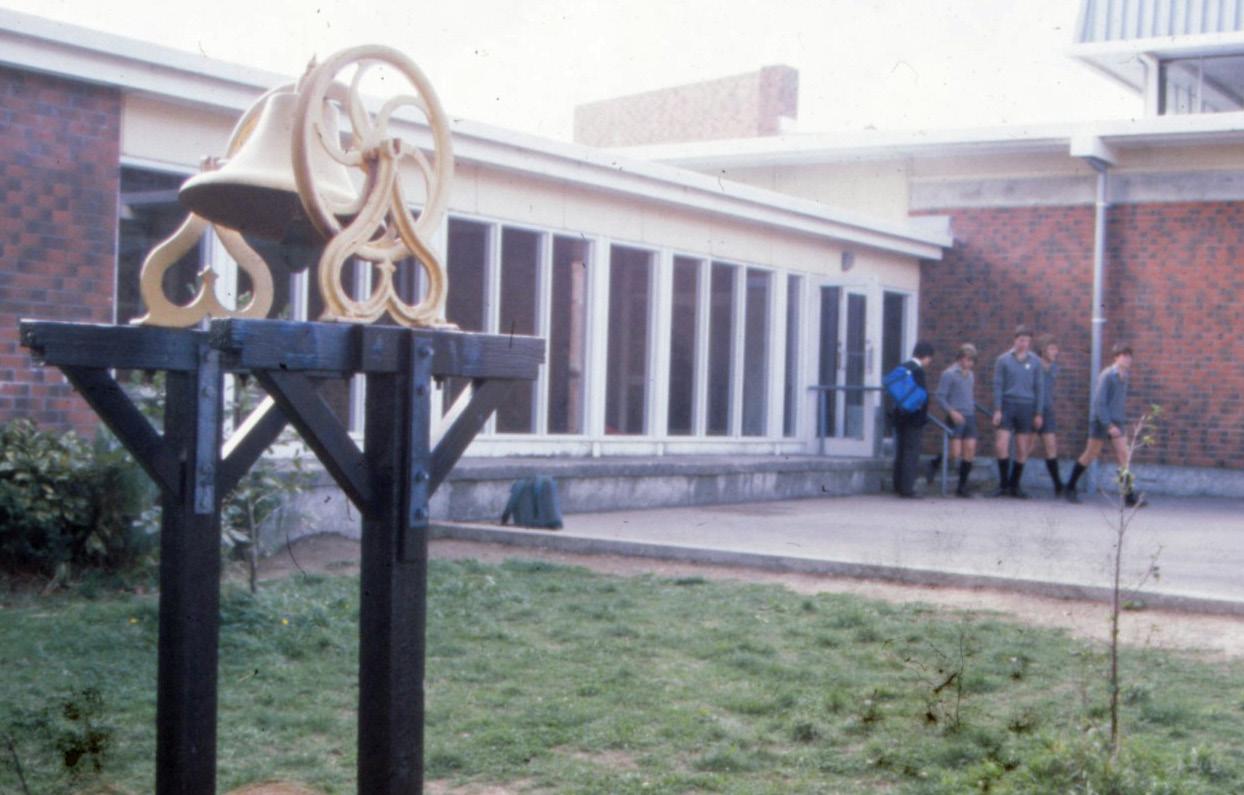
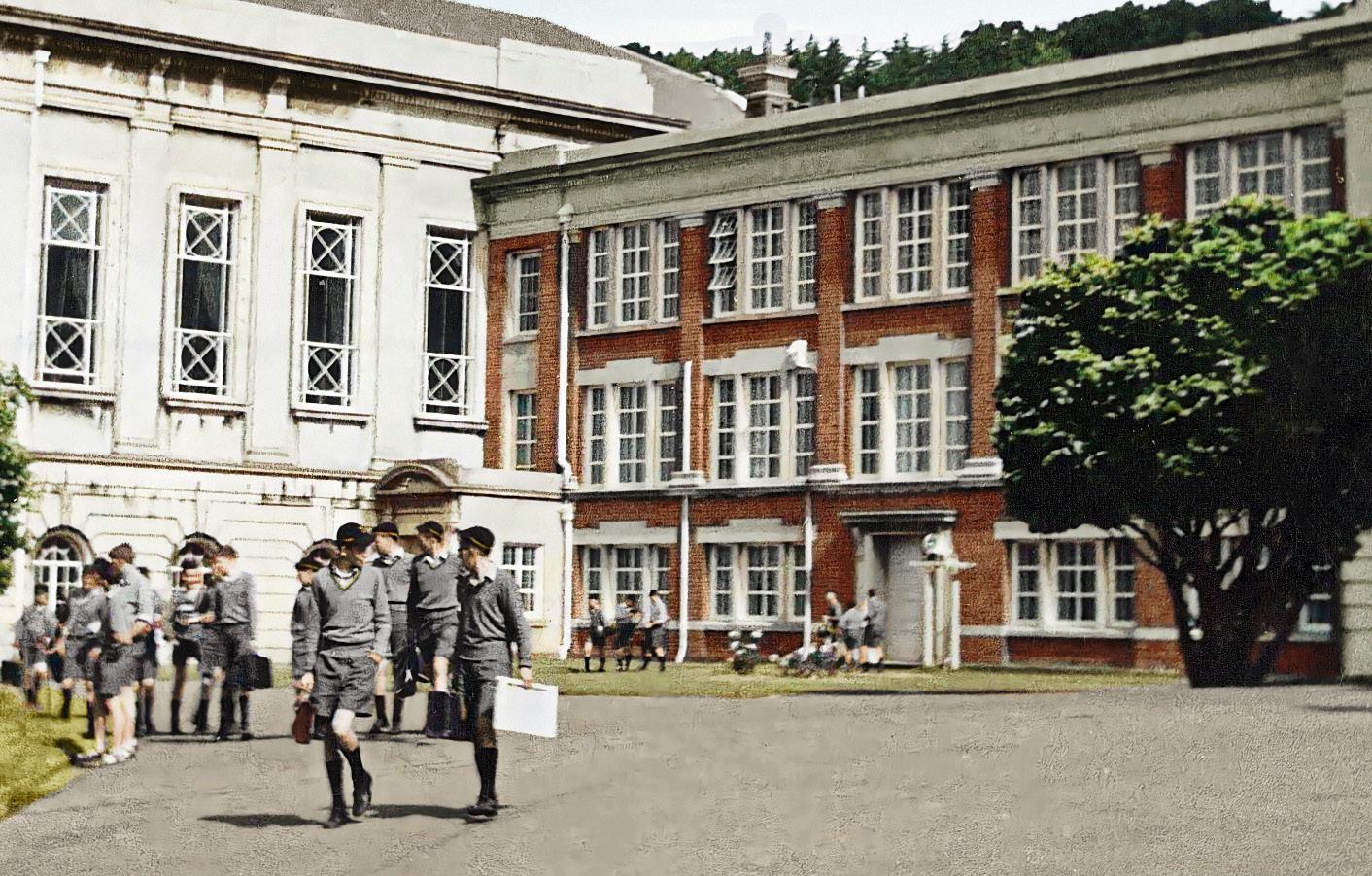
During the next major reconstruction, the demolition of the Memorial Hall in 1968 and the construction of the Tower Block, that was opened in 1972, the bell was moved to the east side of the Tower Block where it stood until 2016.
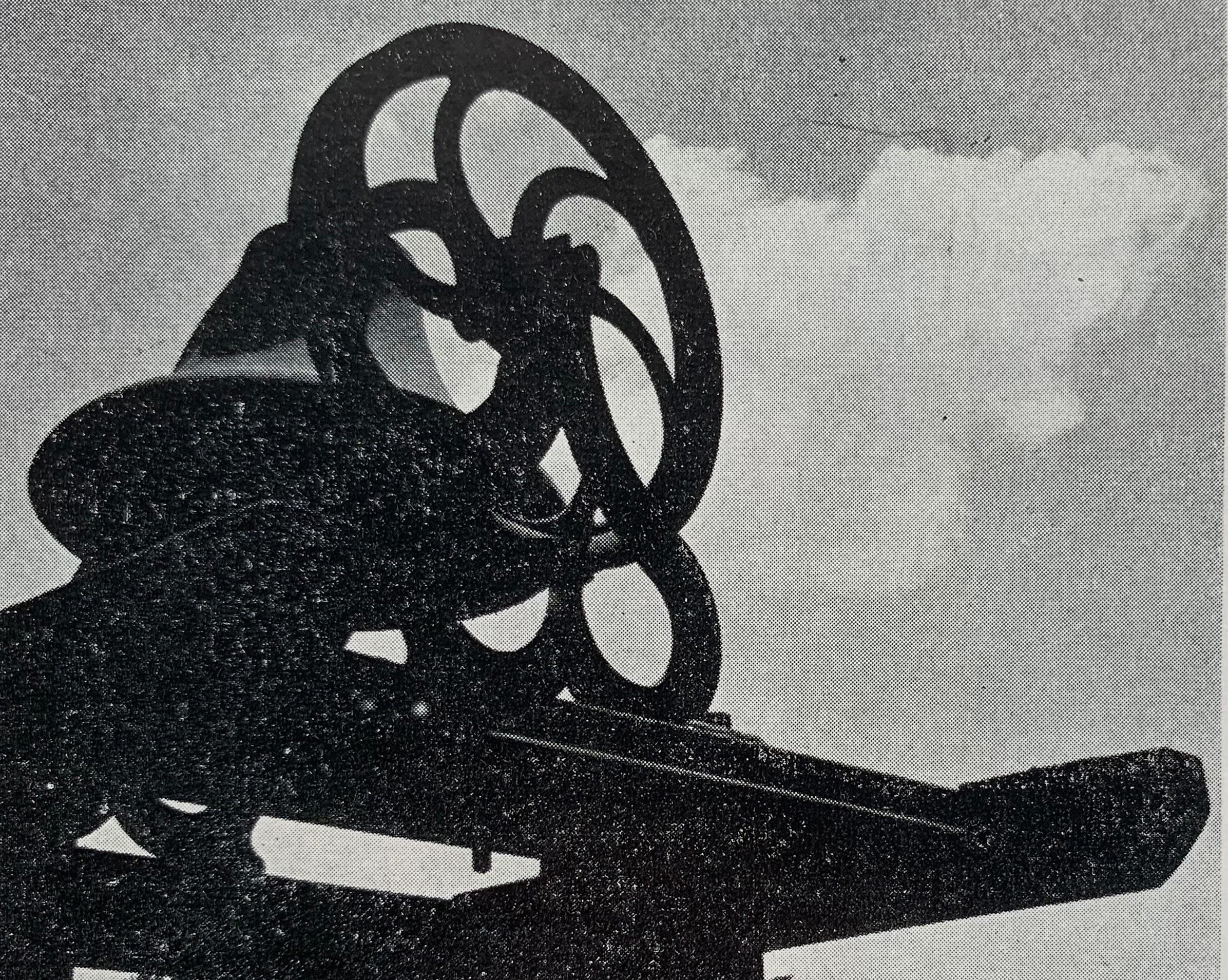
That year, the demolition of the Assembly Hall to make way for the construction of our new Memorial Hall meant that the bell had to be shifted once again and it was dismantled and put into storage where it has remained until recently, sadly, deteriorating under the conditions.
Roy Smith, a member of the College’s maintenance team, is enthusiastic about preserving items from the college’s past and he has undertaken the refurbishment of the bell and reconstructed the timber scaffold. This work was completed during the October Term Break and now takes pride of place in front of the AGC Memorial Hall and Performing Arts Centre - appropriate for its status as one of the oldest and most significant artefacts from the college’s earliest history on its current site.
Research and article by Gary Girvan
11 The LAMPSTAND, 2022
±
The bell stands beside the main entrance to the school, C 1960s (colourised).
The bell during the 1990s adjacent to Memorial Hall.
Gary Girvan stands alongside the newly restored bell.
The History of our Main School Entrance and Gates

It was 1909 when the main entrance and drive as it stands today was developed. Prior to 1909, the Wellington Mental Asylum was located where Government House now stands. In 1909, however, it was moved to Porirua and Government House was built there. In order to develop the driveway, it was necessary to take some ground belonging to Wellington College but as compensation, the Board of Governors asked the Government to construct the College’s new drive. Thus, we have a brick pillar entrance of similar style to the Government House entrance.

From the C1910 photo, three brick pillars are seen with large cast iron gates across the wider entrance to Wellington College. Old Boys up until to 1971 will recall this entrance with its large gates. It appears that the middle pillar and gates were removed some time in 1972 to allow school buses to come up the school drive from 1973. The 1973 Wellingtonian noted The school buses come to the top of the drive, halting the 3.30 ‘Grand Prix’.
; One of the recently unearthed school gates
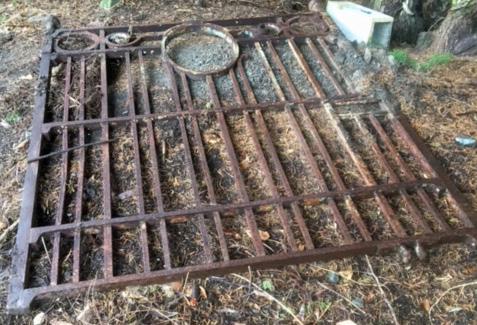
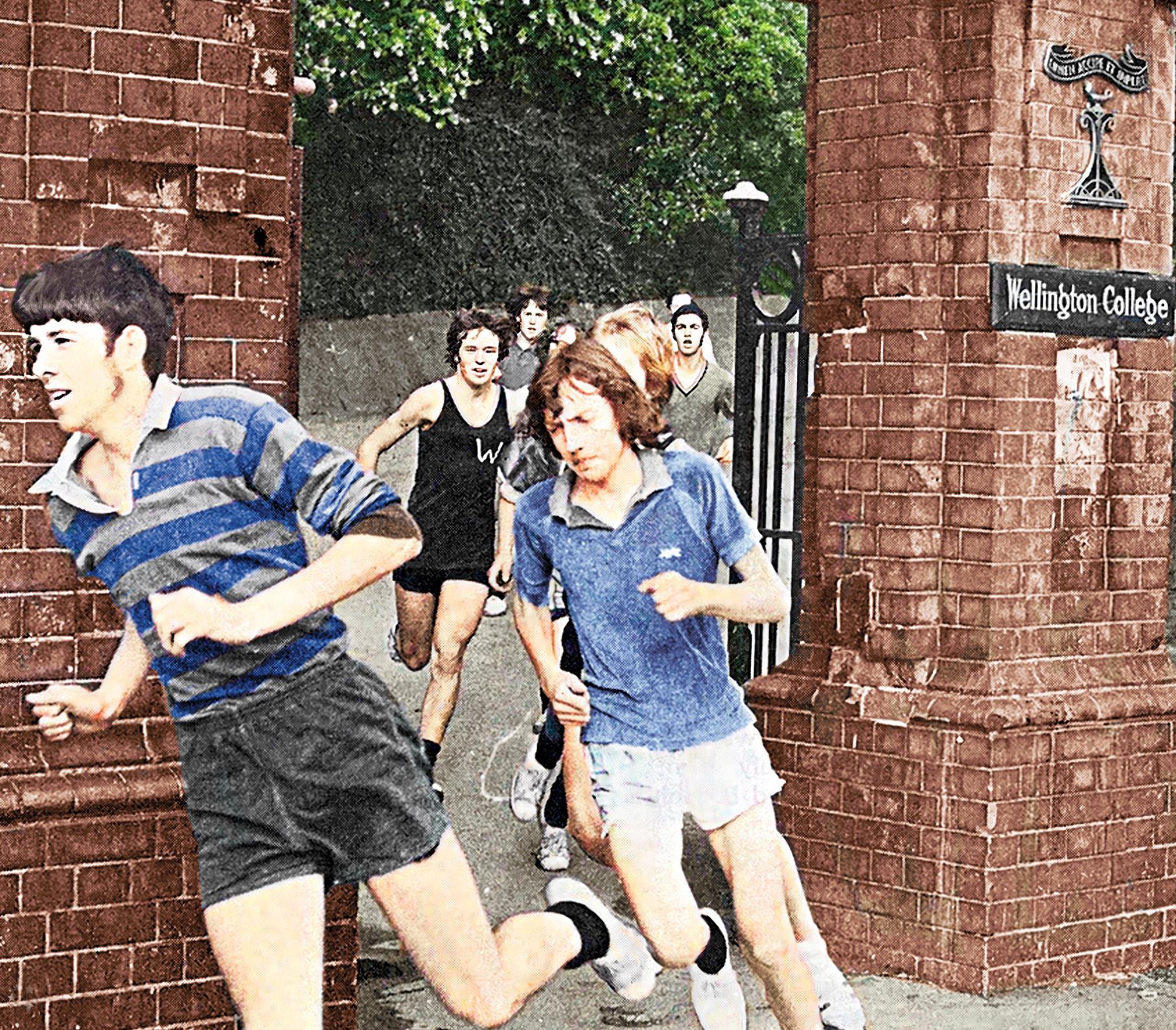
12 The LAMPSTAND, 2022
: C1910 Wellington College and Government House entrances (colourised). The West School is in the background.
: 2022 Wellington College and Government House entrances
Photograph from the 1971 Wellingtonian showing the crosscountry students exiting between the two left hand pillars before the removal of the middle pillar and gates (colourised)
The Cap that came back
Exactly 90 years ago, Wellington College student Jack O’Loughlin [Class of 1932] received his second 1st XV cap. Jack was a member of the 1st XV in 1931 and 1932. Their 1932 season was very successful, winning all the club and school games except against Nelson College. Jack was responsible for converting many of the teams tries. He was also a member of the 1st XI Cricket team, Captain in 1932 and was Head Prefect in 1932.

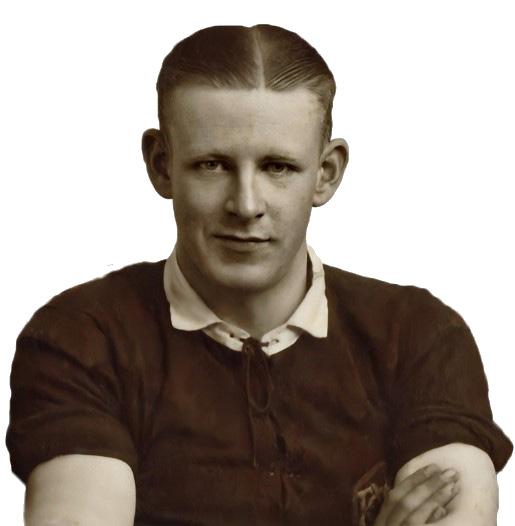
Jack enlisted for the army in 1941 and was with the 20th Infantry Battalion as Lance Corporal where they were fighting in North Africa during WW2. After being captured he died in a prisoner of war camp and is buried in the Commonwealth War Graves Commission Cemetery in Egypt.
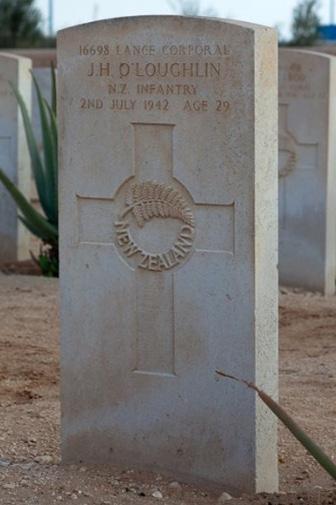
The 1942 Wellingtonian records, It is with deep regret that we have to record the death of Corporal J H O’Loughlin. Few boys have entered as whole-heartedly into the life and activity of the College, enjoying all the best it has to offer and at the same time giving of his best to its community life and spirit. Not only was he captain of the Eleven and a member of the Fifteen, but he also won both the William Small and the Wyville Rutherfurd Memorial Prizes

Earlier this year, Jack’s great nephew, Tim O’Loughlin, contacted the College Archives to donate Jack’s rugby cap back to the College. Unfortunately, Tim, who lives in Christchurch, was unable attend the cap presentation ceremony. However, his nephew, Jesse Rumball-Smith, who is in Y10 at College was able to present the cap on behalf of the family.
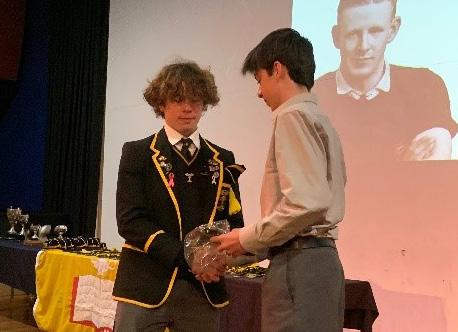
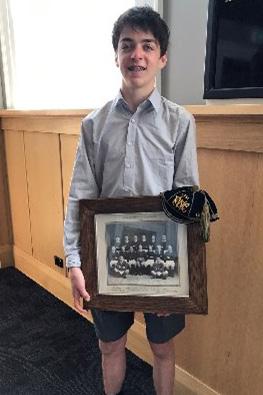
q r s
13 The LAMPSTAND, 2022
1. Jesse presents Jack's cap to 1st XV Captain, Stanley Solomon. 2. Jack's grave in Egypt. 3. Jesse holds a photo of the 1932 1st XV.
Colourised Image: 1954 Staff at School Sports Day. (L-R): Rex Brunning, Don Ramage, David Trevena, Rex Lane, Frank Crist, Norman McAloon, John Northern, Ray Michael.
Fire Service Visits to Wellington College
George Morriss [1916 – 1919], pictured right, took a number of photos during his time at Wellington College. While many of the photos are now very faded, with a little enhancement and colourising, more detail becomes apparent.

The four photos here show the Wellington Fire Service during a visit to the College before and after colour enhancement.
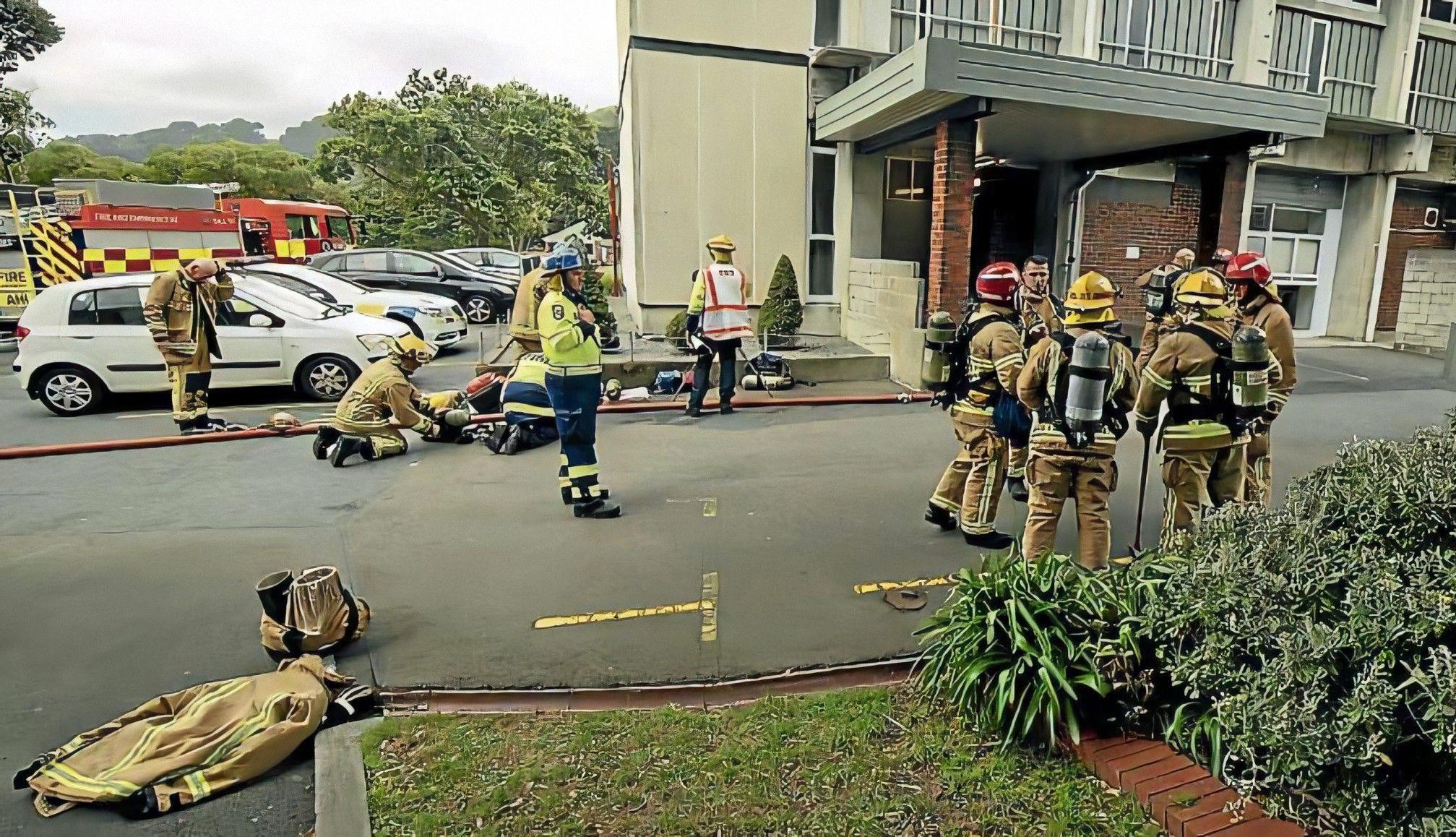
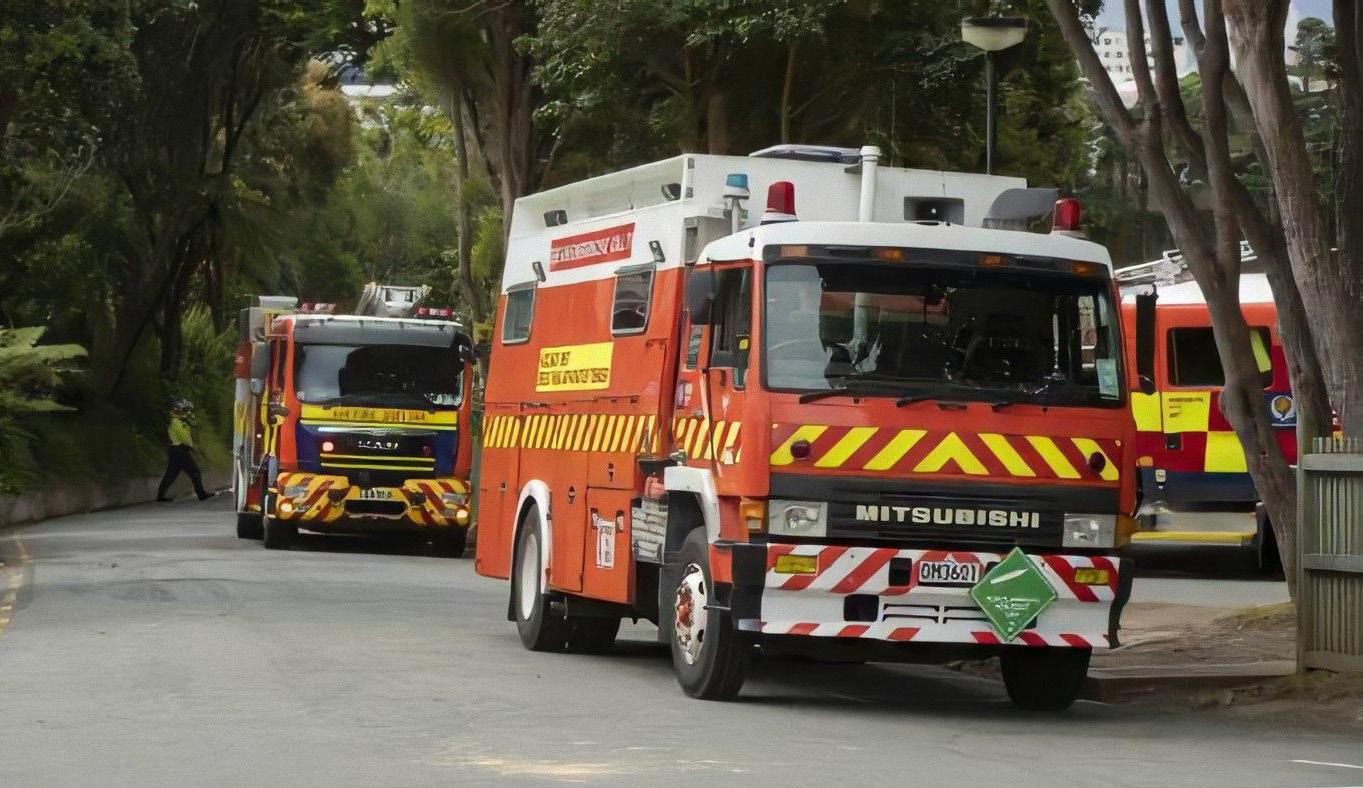
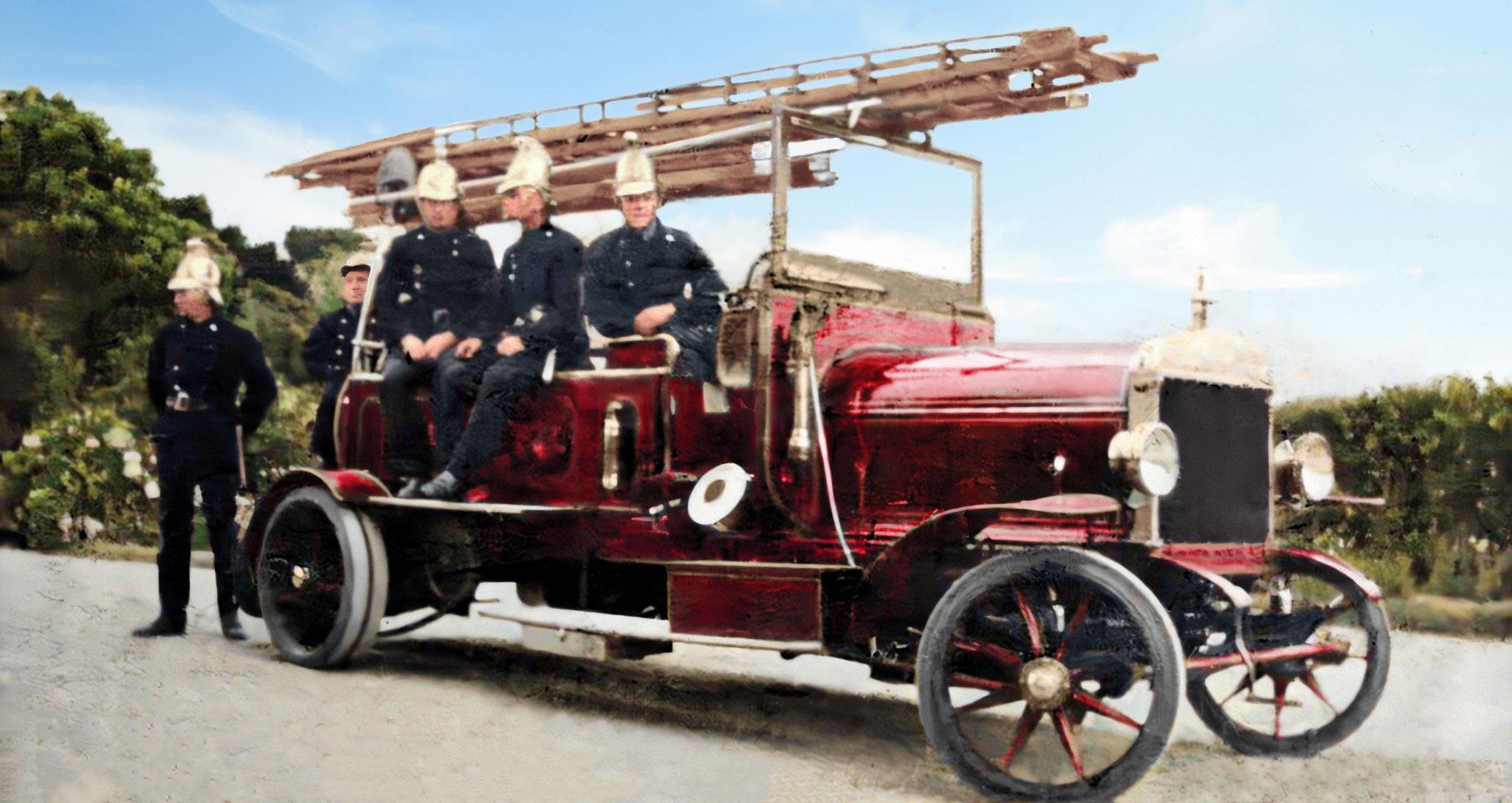
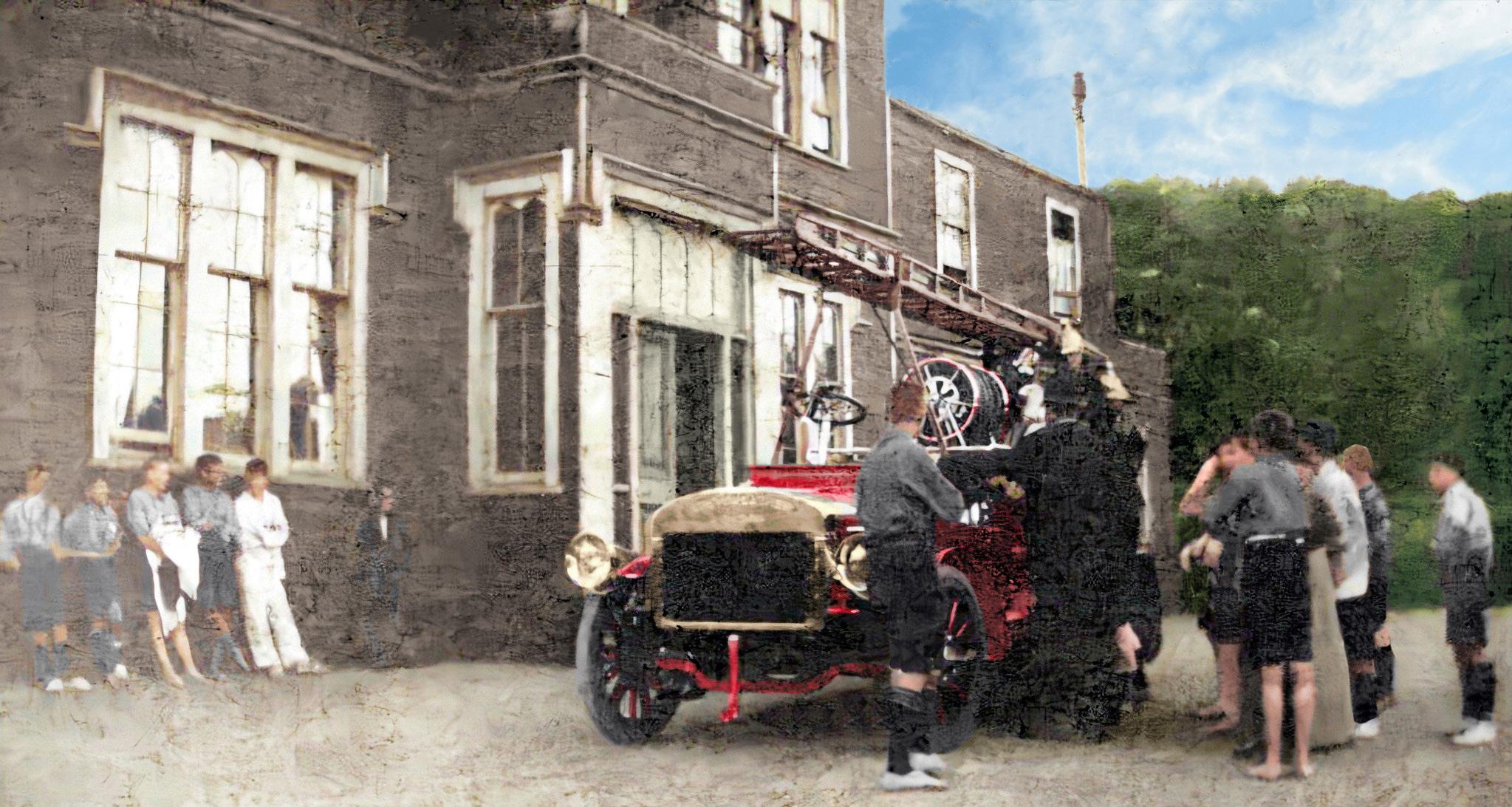
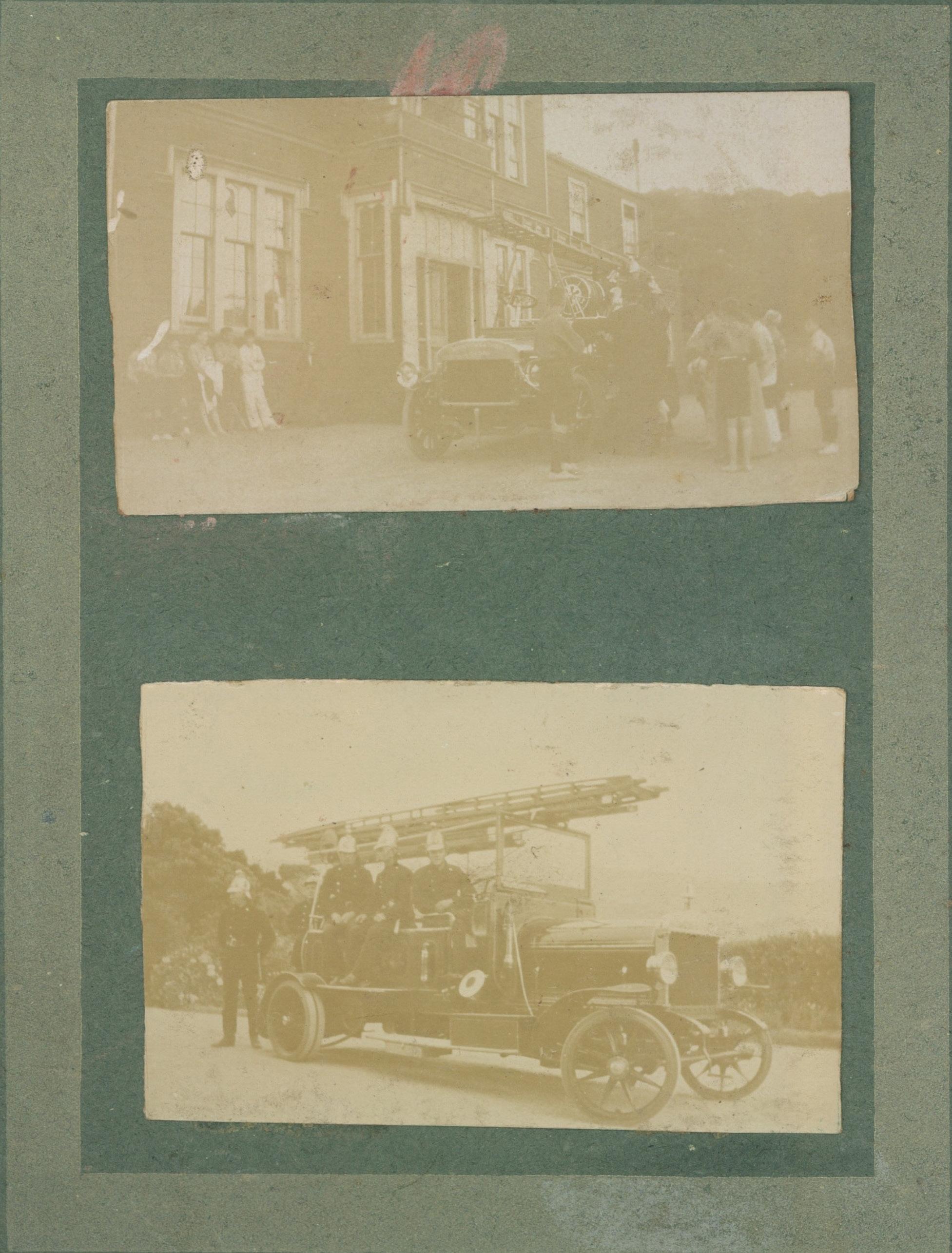
One of the fire crew who was part of that visit was Chris Middleton [Class of 2005] here with two of his former teachers, Rob Corliss and Pat Smith.
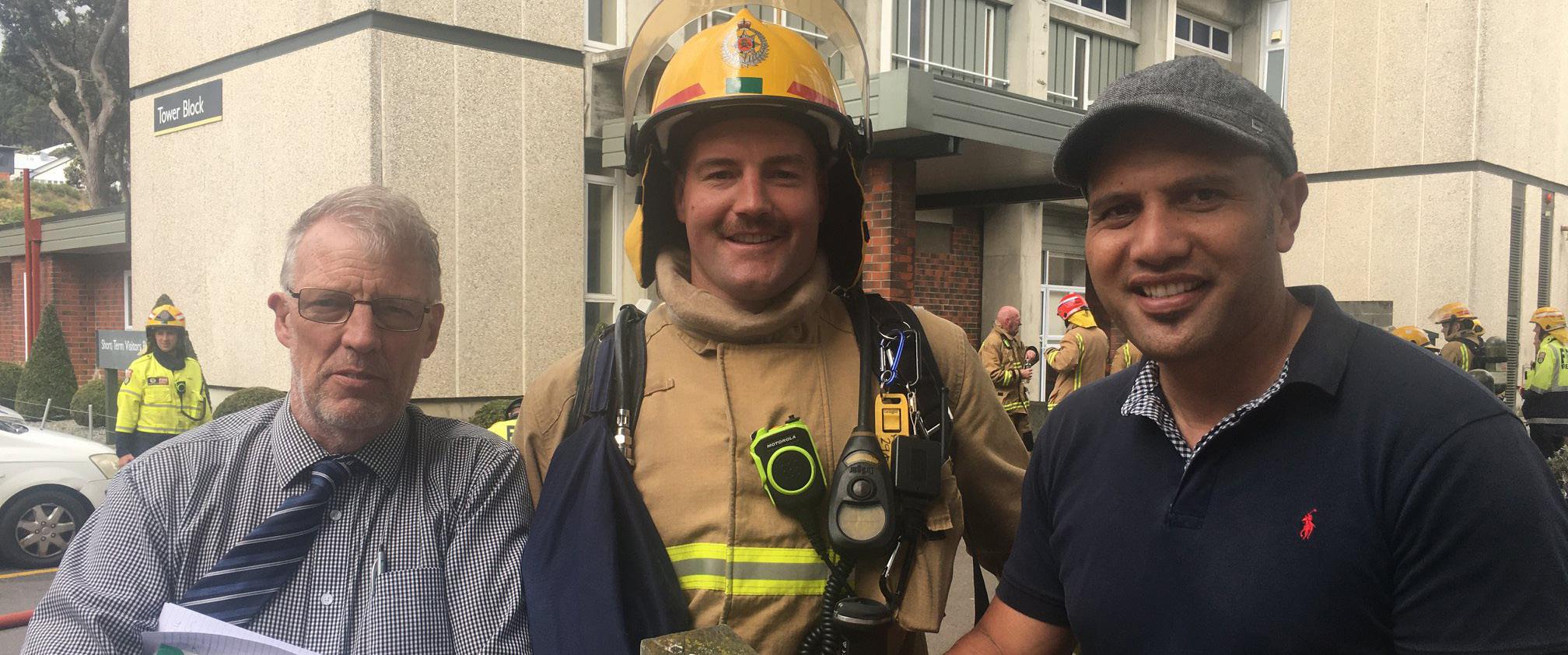
14 The LAMPSTAND, 2022
The Fire Service visit in 1919
In 2020, the Wellington Fire Service visited the College twice in one day.
Uncovering the family history behind an axe
Te Papa recently shared an interesting piece of history about an item in their South African collection - a fighting axe with a connection to one of New Zealand’s famous families.
The fighting axe is 18cm in length, made of a curved iron blade mounted on a long, polished wood handle. Te Papa knew the axe was produced by a blacksmith in South Africa, but due to limited documentation, thiscannot be attributed to a particular person or group of people. It was probably made during the early 20th century, but a specific date is not known
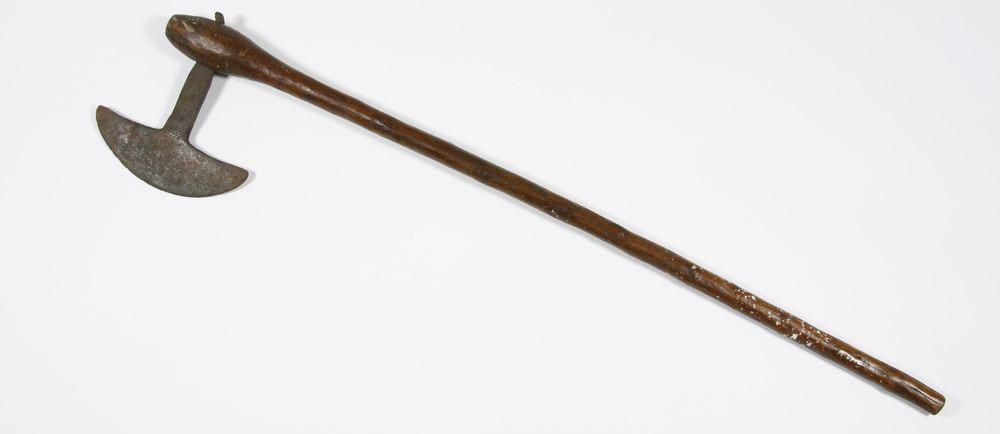
The axe was classified as a war hatchet when donated to the museum and axes like it would have been traditionally used during battle. The style of axe is common across Southern Africa. Similar weapons were used by tribes across modern-day Botswana, Mozambique, and Zimbabwe.
This piece was added to the museum’s collection in a donation made by Wellington College, one of 103 objects which formed the Captain Seddon Collection. These were objects collected by Captain Richard John Spotswood Seddon. In 1901, he was one of 30 Wellington College Old Boys to enlist for service in the 2nd Boer War.
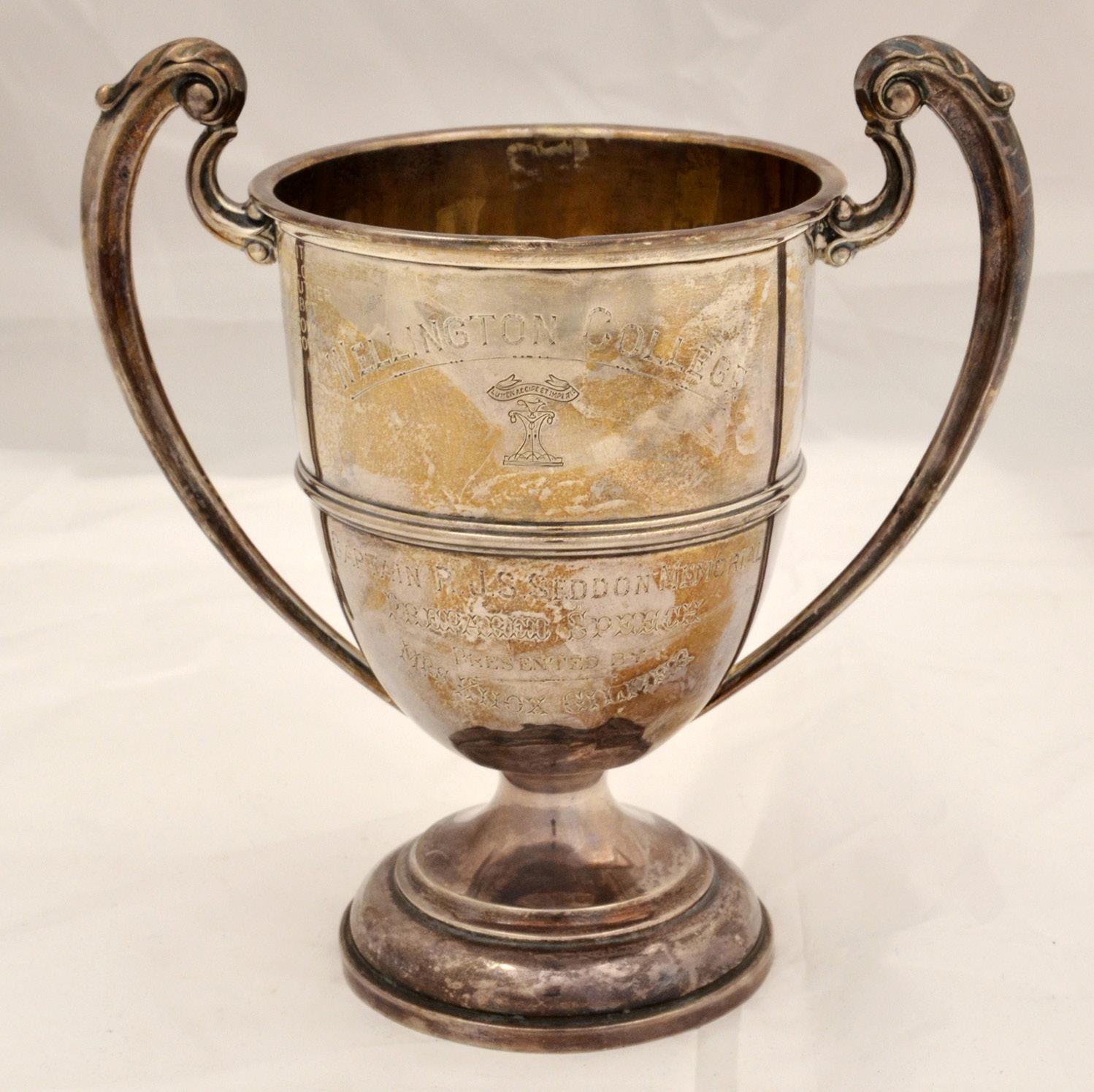
Richard was the son of long-serving Prime Minister, Richard John Seddon. Richard attended Wellington College from 1896 to 1897.
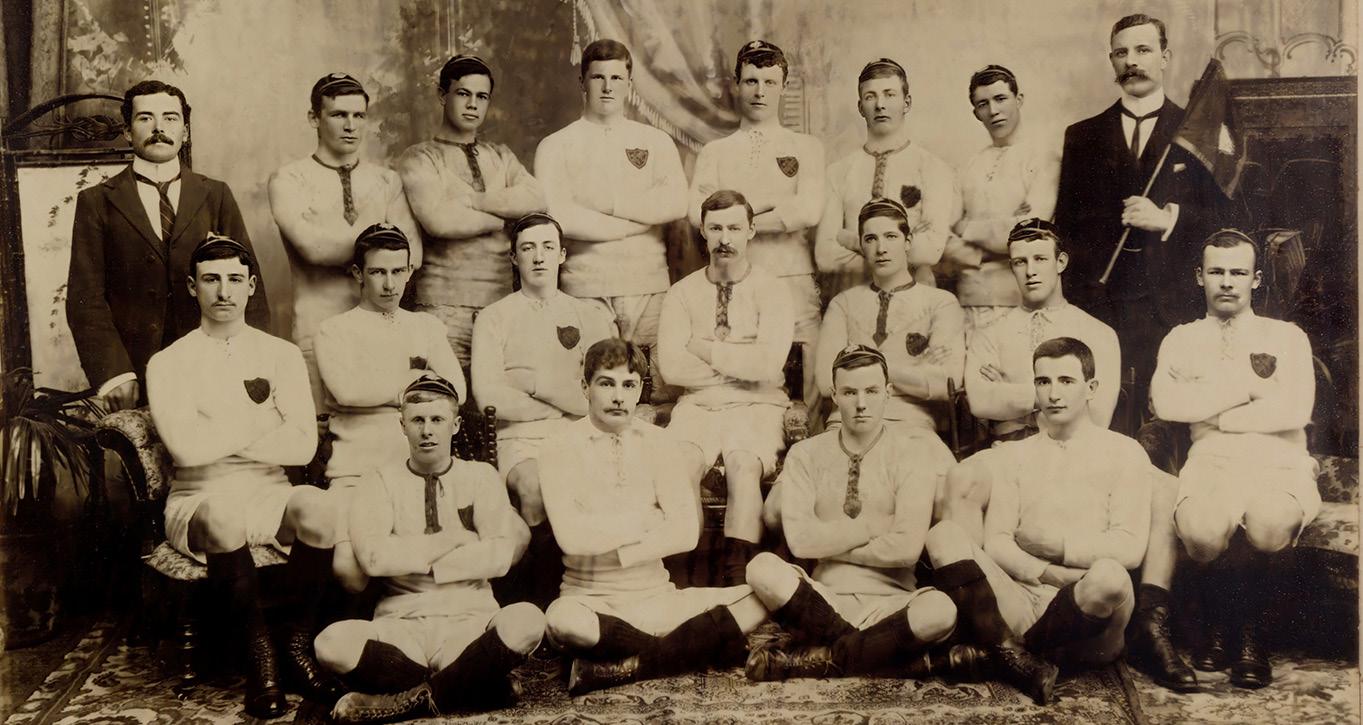
Richard’s collection included pieces from South Africa and Australia as well as Niue, Samoa, and the Cook Islands. It is likely the fighting axe was obtained during his time in South Africa during the war.
Richard served in WWI, and was killed four days after arriving in France at the Second Battle of Bapaume on 21 August 1918. He is buried in the Hebuterne Military Cemetery, 15km north of Albert (Somme) and 20 km south-west of Arras.
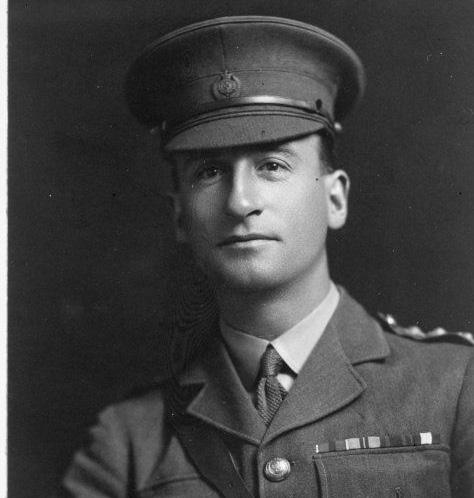
After Richard’s death, the collection came into the care of his sister, Mrs Knox Gilmer. She donated the collection to Wellington College’s museum in his memory in 1932. The collection remained in our care on display until the original College Memorial Hall that housed the museum
was demolished in 1968. Subsequently, the replacement hall which opened in 1973 was unable to house all of the school’s collections, hence Captain Seddon’s collection was donated to the National Museum, and these objects remain safe in Te Papa’s storage to this day
To commemorate her brother, Mrs Knox Gilmer [pictured right] also presented the Richard Seddon Memorial Cup for Public Speaking (shown above). In 1998,
This image has been assessed as being orphaned works, ie. Te Papa considers them to still be in copyright, but have been unable to determine and/or trace the copyright holder.
the Trophy was renamed to the Sir Michael Hardie Boys Trophy for Public Speaking. Sir Michael [Class of 1948], is a former Governor General and one of our esteemed Old Boys.
Mrs Gilmer (1880 - 1960) went on to have a long connection with Wellington College, serving on the Board of Governors for over twenty years and became Dame Elizabeth Gilmer in the 1951 King’s Honours list in recognition of her services to education.
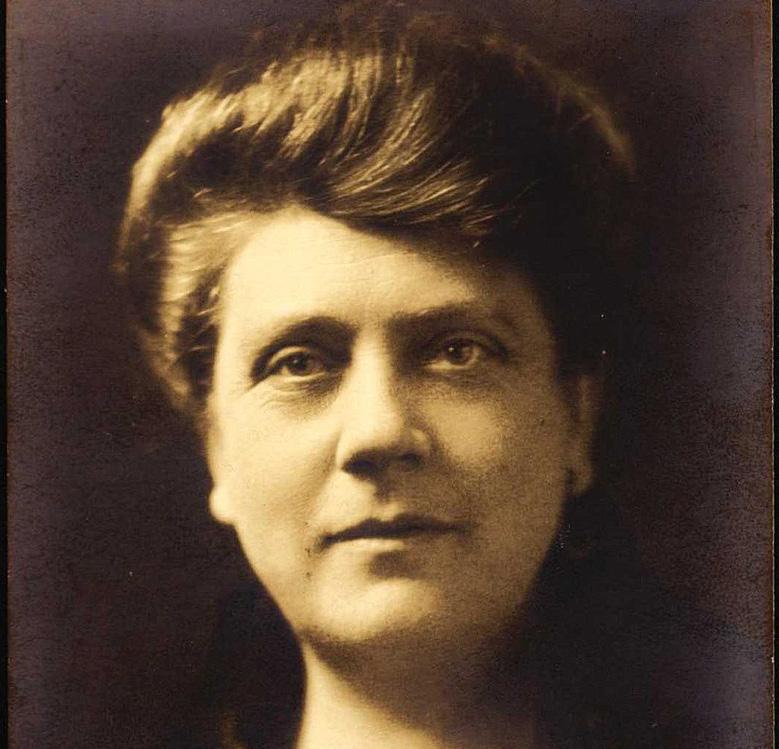
15 The LAMPSTAND, 2022
In 1899, Richard played for the Wellington College Old Boys’ Football Club. He is pictured here, seated far-left in the middle row.
Visitors to the Archives
It’s a real privilege when a family visits us to donate memorabilia from their Old Boy father, grandfather or great grandfather and for us to take on the responsibility of caring for these family items for the foreseeable future.
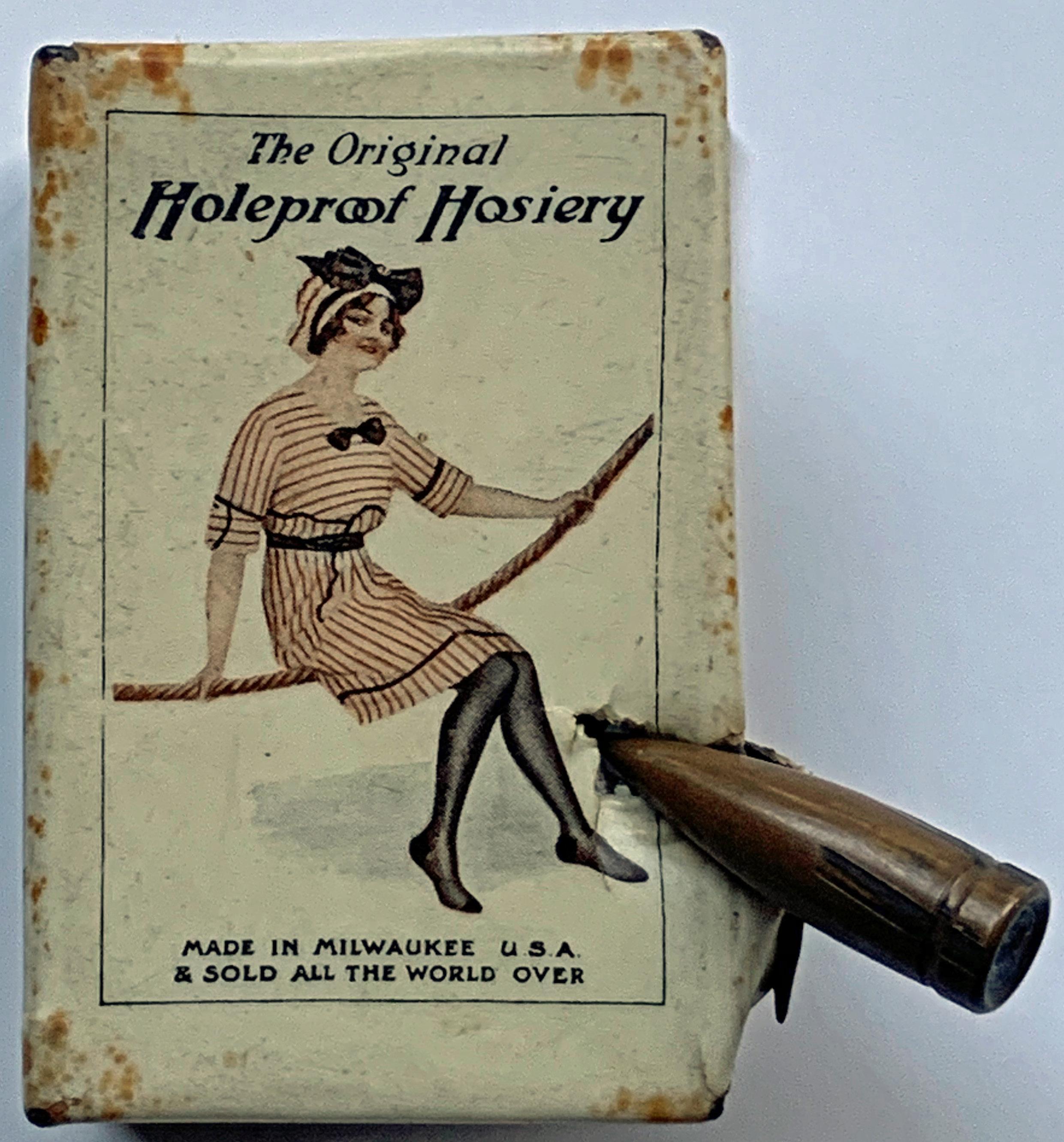
) In July, we received a visit from Old Boy, Ralph Faamalepe-Jones [Class of 1984] and his wife Mandy. Mandy’s grandfather, Allan Carlton Elliott, [1908-1909], was one of many who served in WWI where he was attached to the NZ Rifle Brigade (Wellington Division) and was awarded the Military Medal for acts of bravery on the battlefield at Passchendaele, October 1917. Lance Sergeant Elliott took command during an advance when his platoon officer was killed and continued the advance ‘with the utmost skill’ until he was wounded. He would certainly have been killed when another bullet struck the metal matchbox cover in his breast pocket.
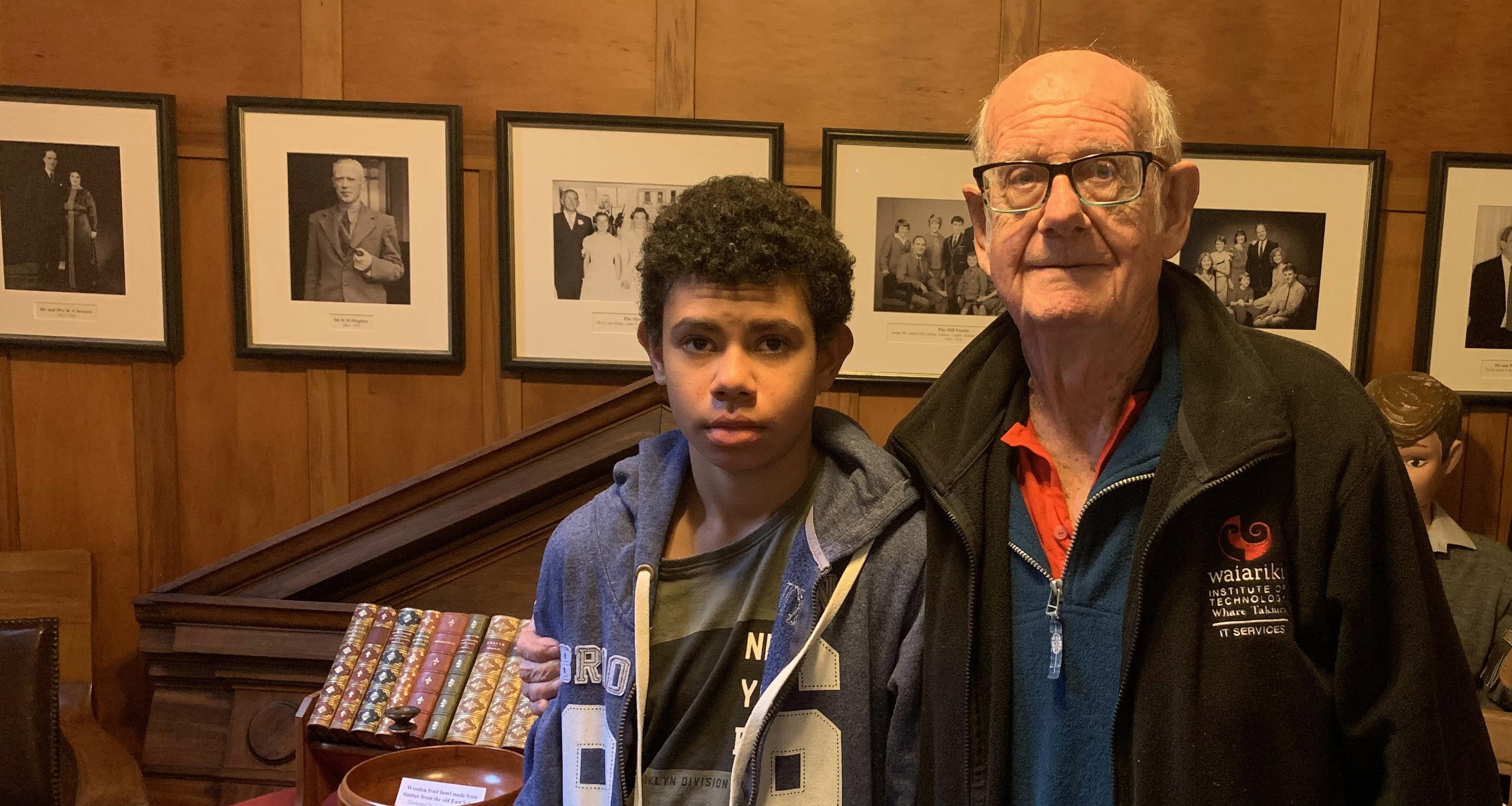
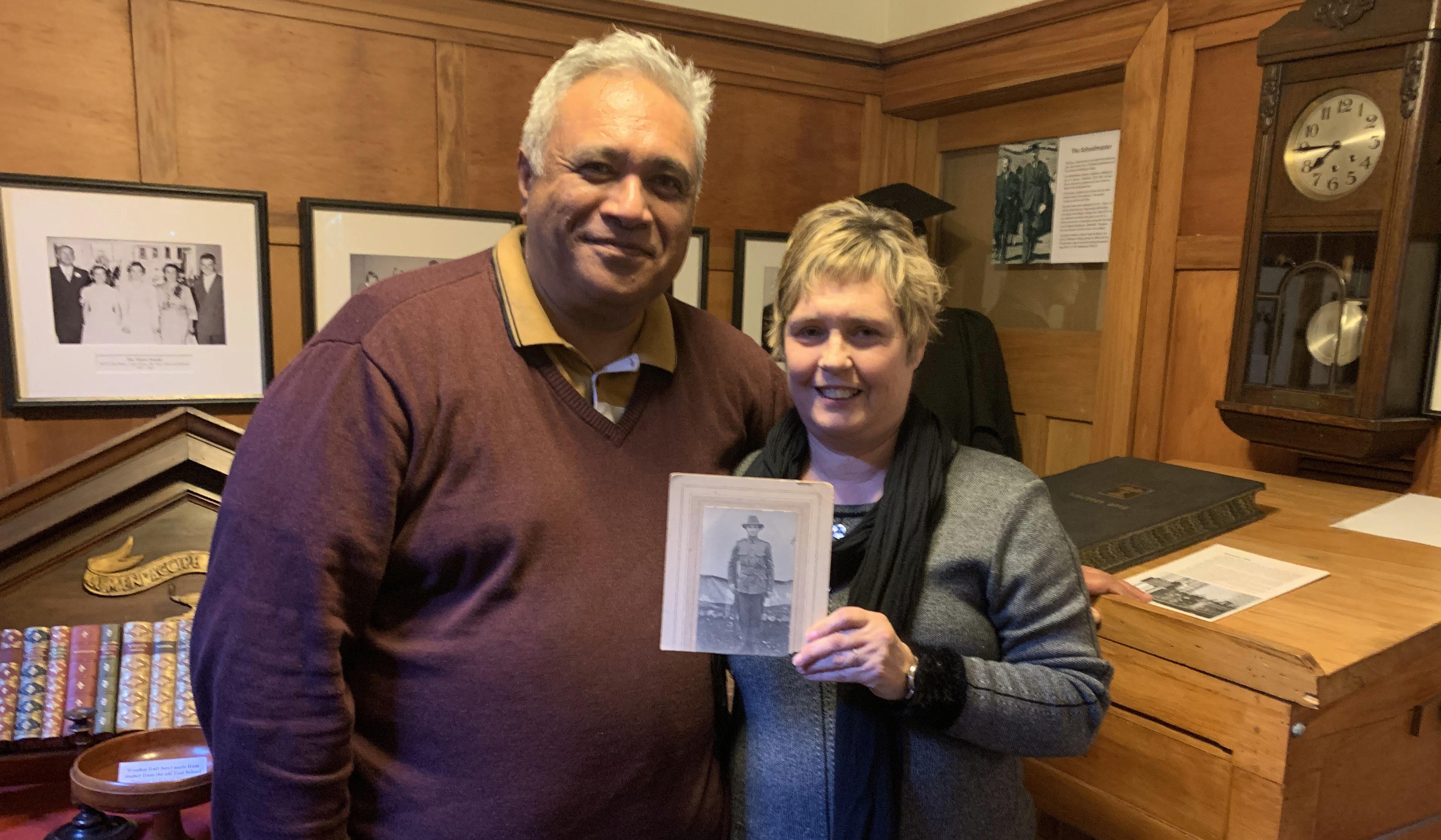
Faamalepe-Jones, and wife Mandy in the Archives.
Mandy also gave us several letters and postcards written by the Headmaster J. P. Firth to Allan and his father at the time.
Mandy plans, in due course, to also donate her grandfather’s medals to the Archives.
Alan Quartermain [Class of 1953] visited the College with his son Leslie. Alan was the son of Leslie Quartermain, who was on the staff from 1930 to 1956 where he was Head of English and in charge of the Library. He was also a leading authority of Antarctica and author of several books on Antarctica.
After studying for a BAgSci at Massey in 1958, he then completed his PhD in Animal Breeding in the USA in 1965. Alan was a research scientist at Ruakura Animal Research Station. From 1970 to 1974 he worked at the University of Zambia. From 1974 to 1981 he was Associate Professor in animal production at the University of Papua New Guinea. In 2011, he was awarded Officer of the Order of Logohu (OL) – Papua New Guinea Honours.
From 1981 to 2022, Alan continued to work, consult and advise for numerous organisations and published over 150 articles and reports on animal production. He has now retired to Feilding.
( Bruce Baldwin brought in a named and framed photo of the 1906 1st XV that included his grandfather Charlie Baldwin [1904 – 1906] that had been lying in a garage for many years. With some frame restoration and re glassing it looks good as new and completes a gap in
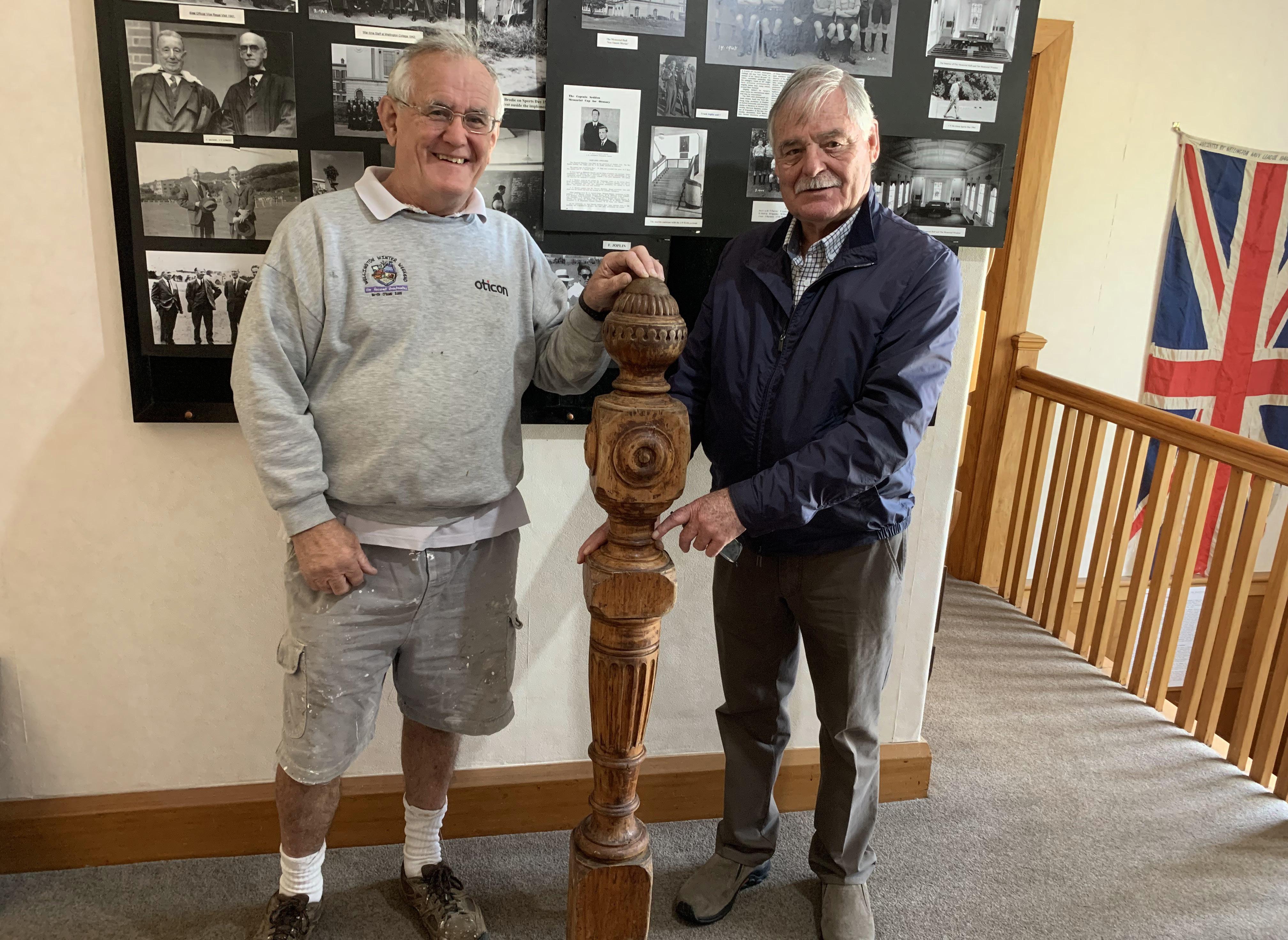
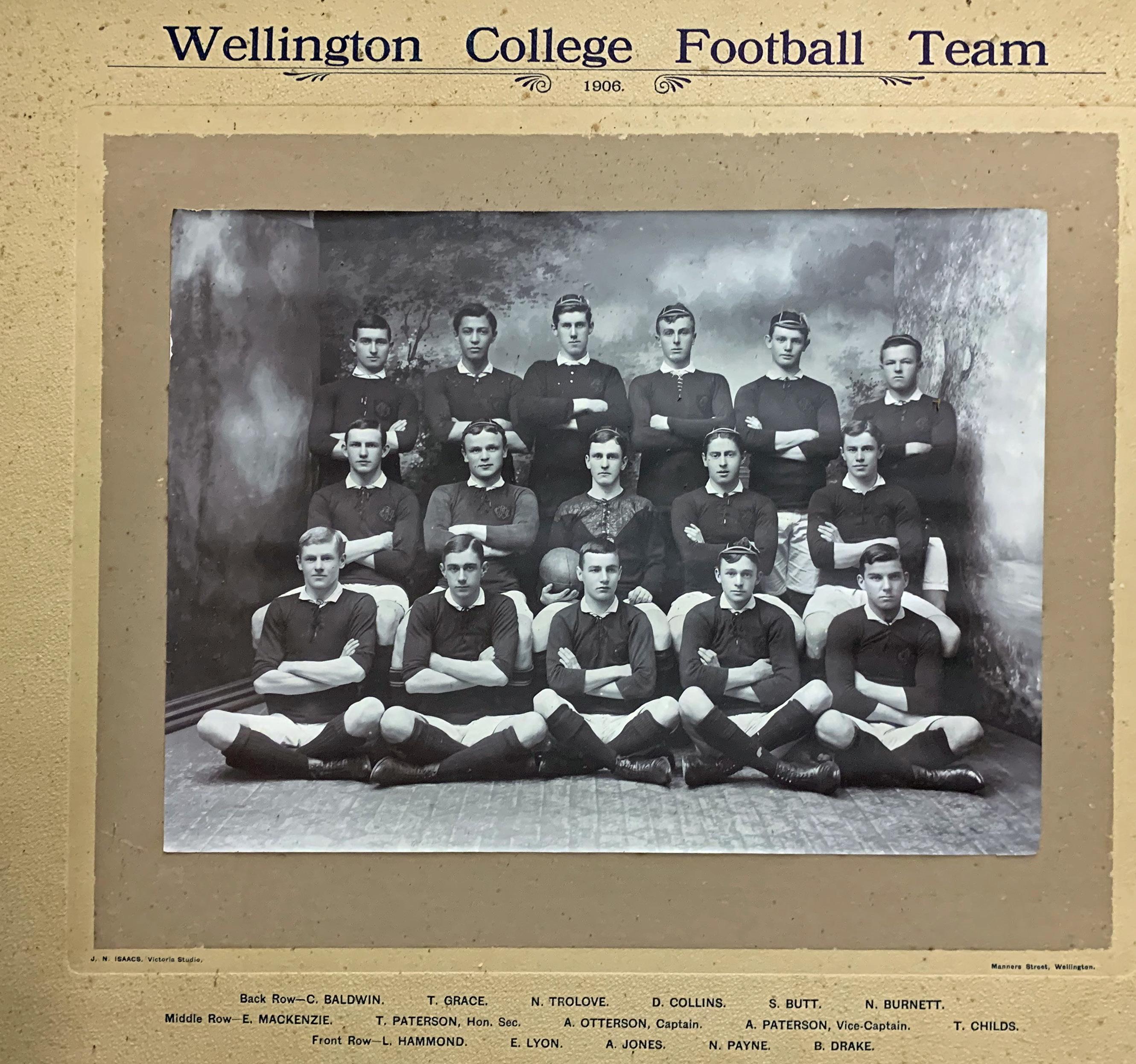
16 The LAMPSTAND, 2022
Ralph
our records of a formal named photo of the team. Charlie is first left, back row and next to Hāmi Grace.
Wayne Deterte [Class of 1969] brought in a piece of West School building history which was demolished in 1977. His father, Morrie Deterte [Class of 1945] rescued a large newel post from the West School stairway that led to the upstairs Library
Former Wellington Mayor, Andy Foster [Class of 1979] returned to Wellington College to feature in the video to promote the push for upgraded accommodation for the Wellington College Archives. He said, The Archives are a treasure trove, full of artefacts, memorabilia and stories from College Old Boys and Staff - sportsmen, politicians, Governors' General and soldiers.
I want to do much more to tell our stories, the stories of our forebears. It adds richness, understanding, and I think pride in who we are and in where we have come from. Wellington City Council is working on a Heritage and Identity Strategy which we will develop with input from mana whenua, heritage groups, and the wider community. We have many treasure troves around our city which can contribute to this, and Wellington College's Archives are undoubtedly one.
The filming and compilation of the stories is being managed by WCOBA Executive Member, Richard Boag and the completed documentary will feature shortly on our new website.
Andy also viewed the Roll of Honour with the 'Far too many' names of Old Boys, who lost their lives during WWI'. He’s holding the sword of Captain Alex McColl, who was killed in action on 2 June 1916, on the Western Front. McColl Street, Vogeltown, is named after him. Alex's and his College mates' stories are superbly told in Wellington College History teacher and historian, Colm McNulty's book, 'A Brotherhood So Splendid'.
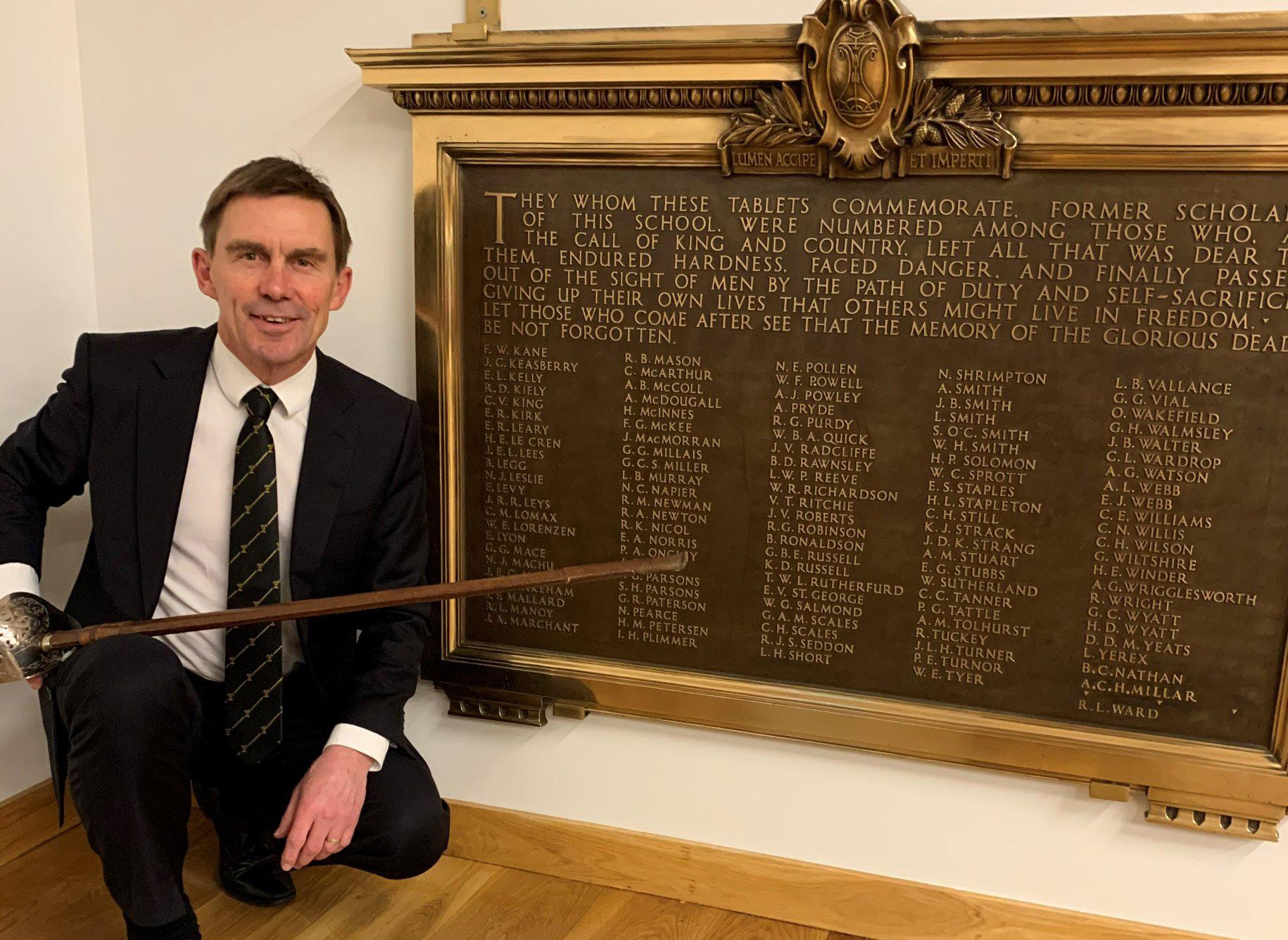
a tour and John particularly enjoyed visiting the new Hall and the old Firth House Dining Room, as well as driving around other parts of the school.
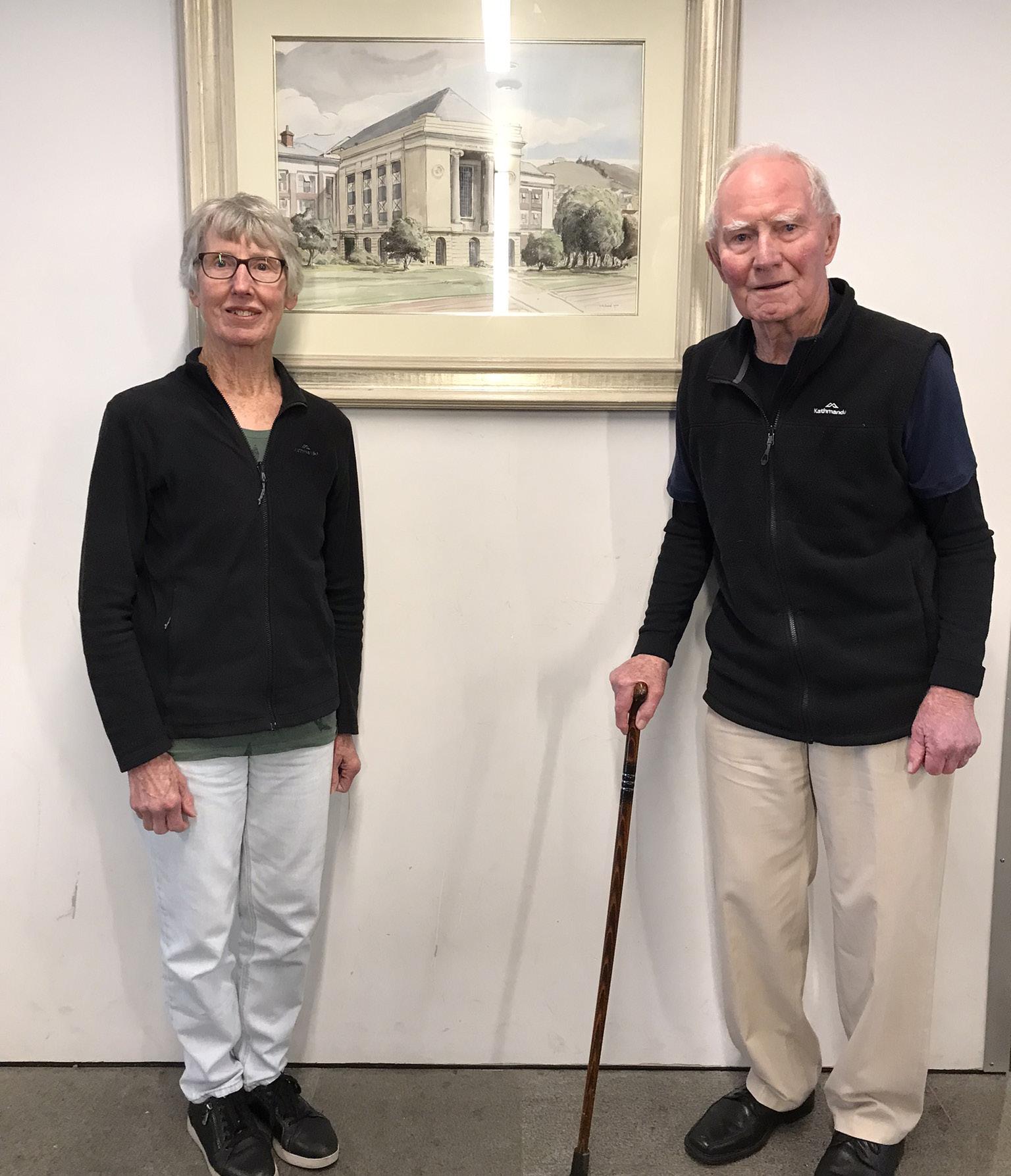

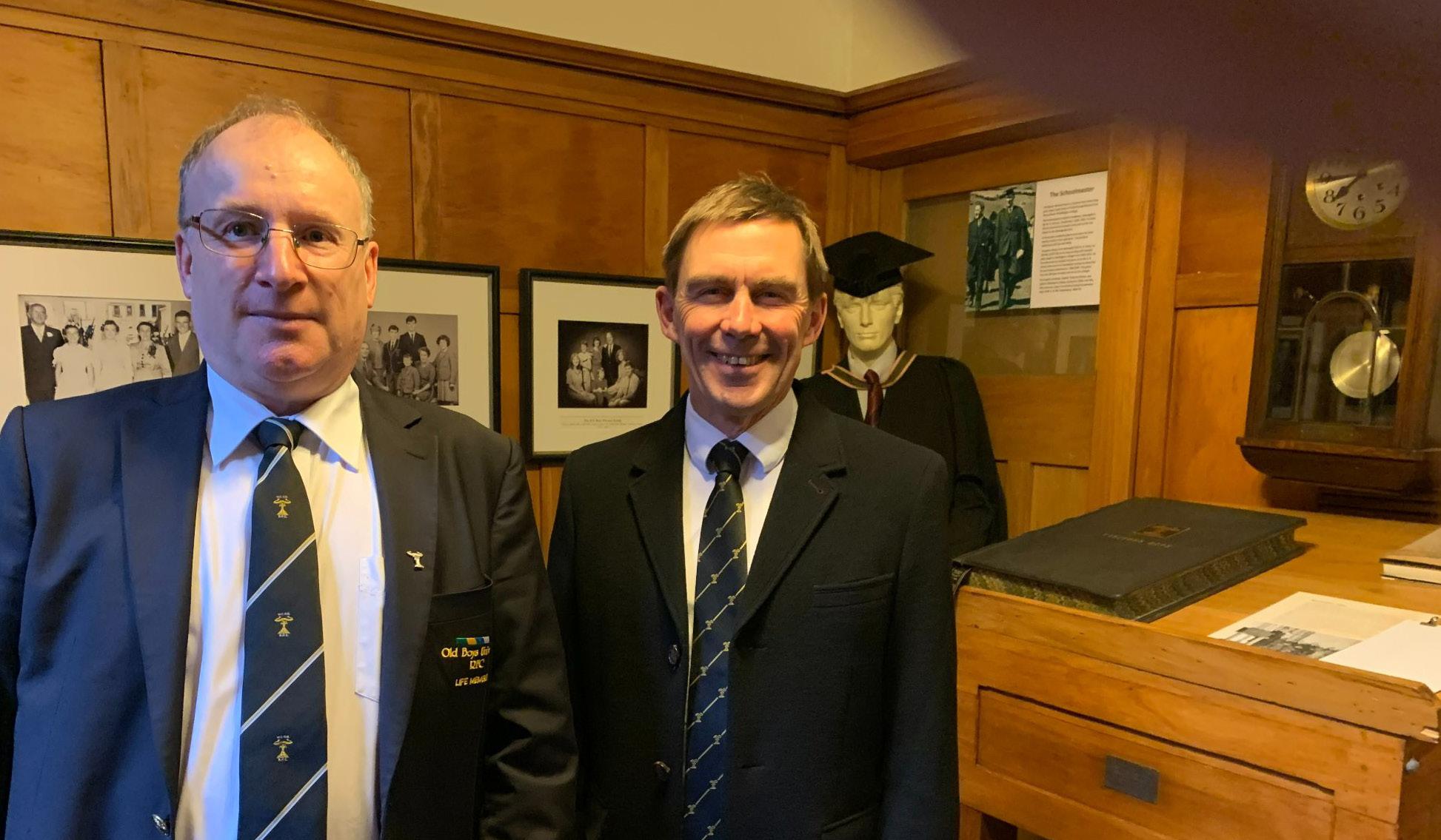
VISITORS WELCOME
We are always delighted to receive visits from Old Boys and their families, whether it's to drop off any memorabilia or take a tour around the school - time it right and you might even get coffee and cake but... please contact us in the first instance to make a time as we are not always present on the school campus.
Telephone: 04 802 2537 or email: oldboys@wc.school.nz
17 The LAMPSTAND, 2022
Andy is pictured with Richard Boag [Class of 1981] in the Archives which is currently too small and is earthquake prone.
Basketballers from the 1984/85 era; Peter Papas, and Konelio Ailao came to visit us and share their memories. Their story features on page 38.
We had a lovely visit from Margaret and John Stuart [Class of 1957 and Firth House]. John donated some memorabilia from his time at the College which were gratefully appreciated. We took them on
Wellington College Tramping Club Centenary
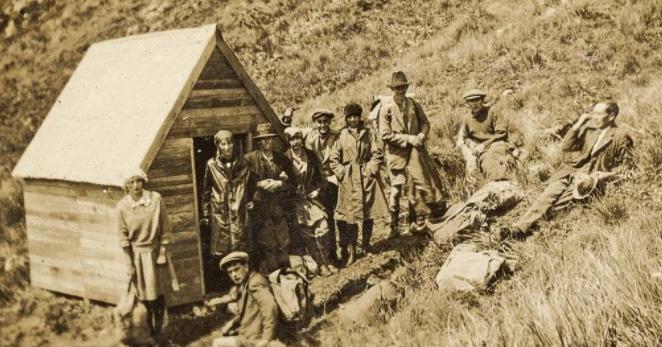
Around 100 years ago, a Tramping Club was founded at Wellington College. The 1921 edition of the annual Wellingtonian contains epic stories from WWI that had only just finished three years earlier. One that stands out just a little, is of Bernard Freyberg swimming several kilometres, from one of the troop ships to the shore on the Gallipoli peninsula at midnight on 25 April 1915. He set up flares on a beach some distance from the landing site as a decoy to divert Turkish troops from where the landings would actually take place. Much of his swim was done under enemy fire. An extraordinary and almost unbelievable story of bravery and commitment.
The 1921 Wellingtonian also has a short article covering the founding of the Tramping Club. One of the Vice Presidents’ was Mr Charles Gifford after whom the Observatory up behind the College was later named. Here is a quote from the article. Commencing on 5 November, a series of short tramps over the hills I
n March this year, the Wellington College Tramping Club completed a memorable Southern Crossing of the Tararua ranges in superb weather. 26 students, four staff, and two parents were treated to stunning views, crimson sunsets and some spectacular flora and fauna.
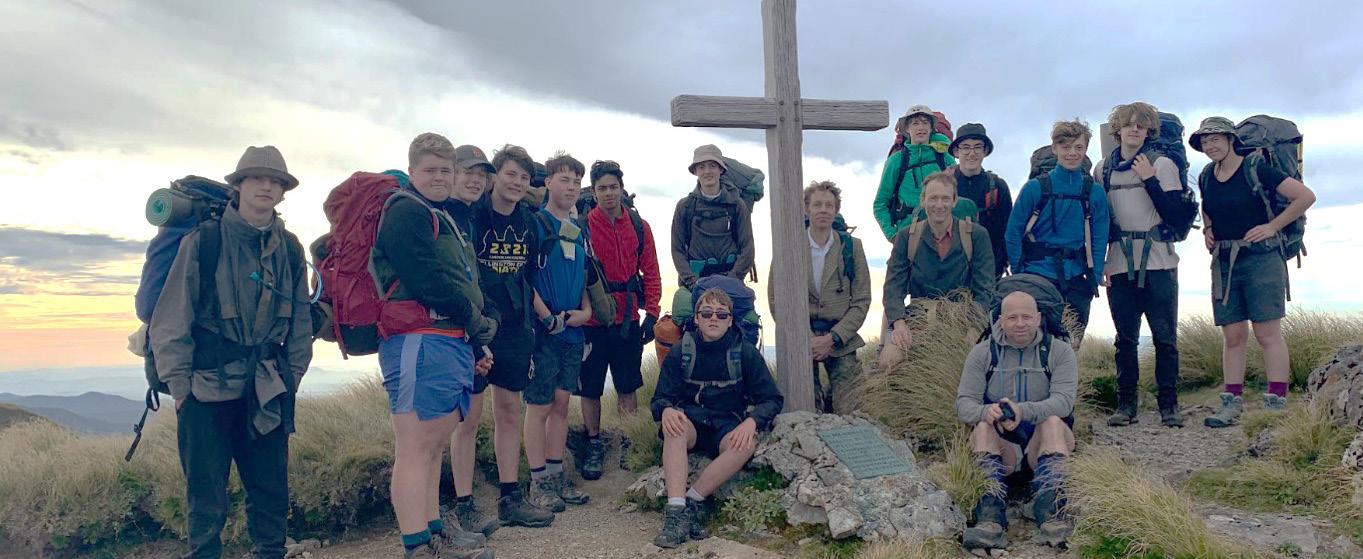
We split the group with half travelling westeast and the others travelling east-west. The trip was all the more significant for being 100 years since the first such trip by a Wellington College Tramping Club, back in 1922. A few of us attempted to re-create some of the clothing styles of-the-era. It turned out that a tweed jacket proved too warm in the balmy conditions that we experienced.
The mid-point of the trip was at Alpha hut where vehicle keys were swapped. A different story back in 1922, when the west-bound party caught the New Plymouth express from Otaki to get home to Wellington.
While the good weather allowed for us to camp out, we had the back-up of the relatively luxurious Kime hut, a far cry from the half – built ‘Hector Dog Box’ that would have adorned the site in 1922.
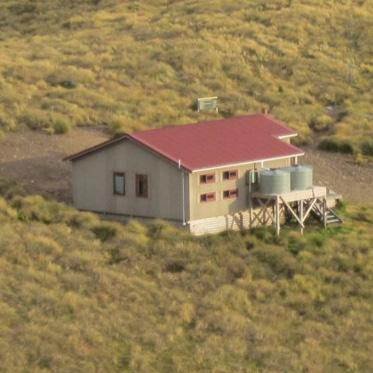
near Wellington will, it is hoped, train our members for more ambitious expeditions into the bush country east of Wainuiomata and at the head of the Hutt Valley
Later the article continues, ... we do not wish to rob cricket and other summer pastimes of their enthusiasts, but we earnestly ask all those who are not engaged in other activities to give the Wellington College Tramping Club a trial… subs 1 shilling per annum.
In the following years, a good number of Wellington College groups have successfully completed the ‘Southern Crossing’ of the Tararua Ranges. This was no mean feat, in an era when clothing and equipment, transport, lack of accurate weather forecasts and the condition of the tracks made such trips extremely challenging.
 Phil Kendon, Tramping Club Convenor
Phil Kendon, Tramping Club Convenor
18 The LAMPSTAND, 2022
Wellington College Tramping Club group on a Southern Crossing in 1923.
ABOVE: West-East group at the WWII Memorial Cross on Mt. Hector. Luke Clausen on the left looks dapper in retro-style hat and coat.
BELOW: (L) Mt. Hector Dog box, mid 1920s. (R) Kime Hut, 2022
The Coat of Arms story
In 1987, the then Chairman of the Board of Governors, Mr A W (Wyn) Beasley, designed a Coat of Arms for the College and applied for it to be formally granted. Until that time, Wellington College had a crest and a motto which is shared by three other Wellington Schools.
A grant of Arms, on the other hand, would be unique to Wellington College. Mr Beasley’s design incorporated the traditional crest and motto together with heraldic symbols which conveyed the College’s ethos and history.
The Arms give heraldic status to the College’s traditional colours, black and gold. The lamp on the shield conveys a love of learning, while the open book symbolises an open mind. The bookmark is charged with the five white plates of the Wellesley family arms, and above are the four gold stars derived from the arms of Lord Freyberg, one of our most notable Old Boys.
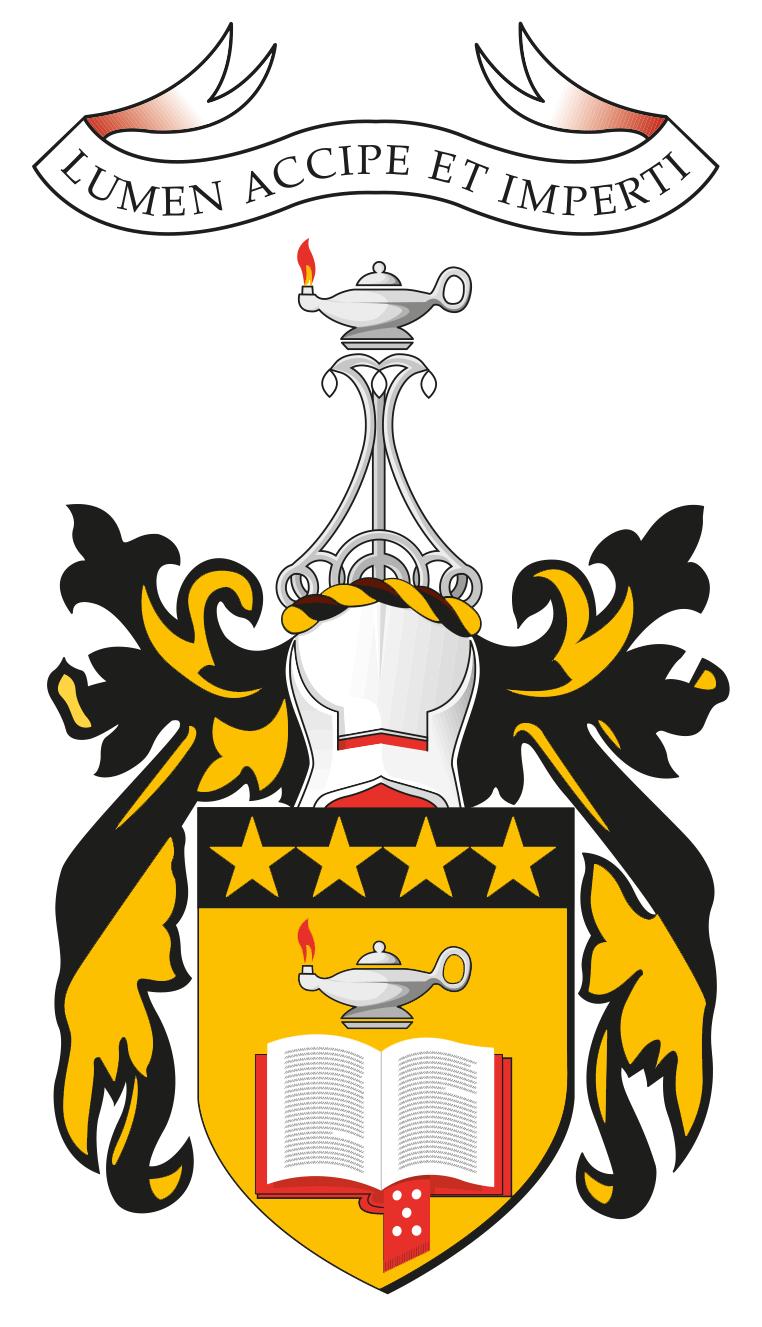
The four stars also remind us of our national flag and the part star navigation
using the Southern Cross played in bringing our Māori ancestors to New Zealand. The helmet is a reminder of the medieval knights with whom heraldry arose with black and gold mantling hanging from a wreath around the top of the helmet. Finally, our motto sits above our traditional crest.
The Arms were granted by the Lord Lyon King of Arms in Edinburgh and the Letters of Patent (above) bear the date 17 October. This date represents our Founders’ Day, significant as it was the day in 1853 that Sir George Grey KCB as Governor, signed the original Deed of Endowment establishing Wellington College and it is also the day the school opened in 1874 on its present site.
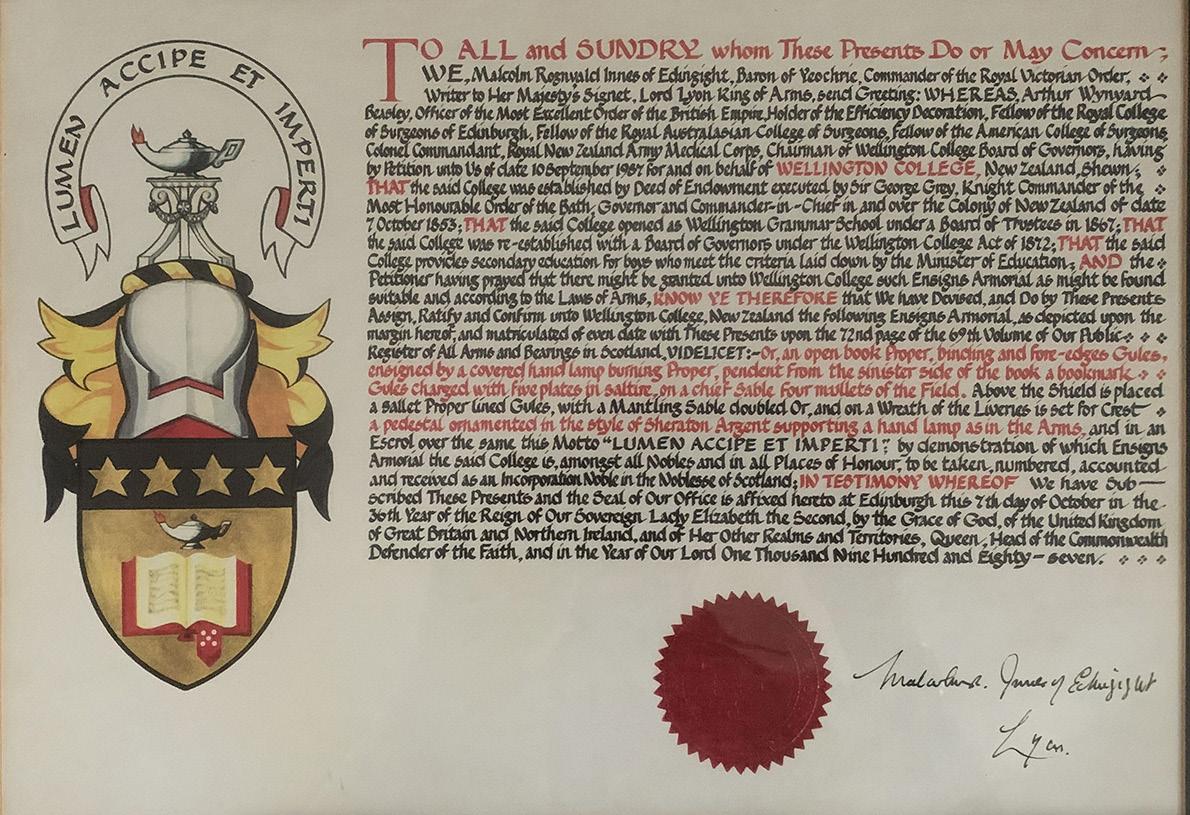
A Mystery Solved
The team at the Archives has proved to be pretty adept at providing information for people engaged in family histories involving Old Boys and in researching the background of many of the College’s historical artefacts. One item, however, had been on our research agenda for some time but other events took precedence over it so that its story remained something of a mystery.
The leather strap pictured here had been in the Archives workroom for some years, but we had not been able to establish who had donated it and the story behind it. The strap itself gave some clues to its provenance. Students had carved their names into the leather and some of these remain decipherable. Research showed that they were all students from the 1960s,
some of them now very distinguished in their fields of endeavour, and all had been boarders at Firth House. No, we will not be disclosing these names. Your secret is safe with us.
However, all was revealed at the most recent Firth House Reunion. On a tour of the museum, Phil Pacey, [Class of 1965], asked what had happened to the strap he had presented to Archives at the previous reunion. The mystery was solved. He was able to identify the strap which had been a prized trophy of his since he left Firth House at the end of Term Two in 1964. He had 'souvenired' it from the House Master (details of this feat remain vague) and had his dorm-mates carve their names on it.
His illicit prize, obtained no doubt with no
small degree of personal risk, remained with Phil and his family as a reminder of the joys of boarding house life.
A Firth House reunion some years ago provided an appropriate occasion for him to present his trophy back to the College.
Now that its story has been established, the strap will be a prized exhibit at the museum as an artefact of a by-gone era.
The qualities of daring and determination he demonstrated then, have served Phil well. It came as no surprise to learn of his considerable success in later commercial enterprises.
19 The LAMPSTAND, 2022
Back in the day: Two new codes enter competitions
THE WELLINGTONIAN, 1946 ASSOCIATION FOOTBALL (Soccer)
First official year of Inter-Collegiate Competition
Soccer was started this year with some seventy players. Some had played before for outside clubs but the majority were new to the code. Taking this into consideration, and also that there were no coaches at the beginning of the season, the boys have performed well, and next year should be able to meet the best of their opponents on an equal footing.
This lack of coaches was the greatest handicap. For the first half of the season, two of our seniors who had played for some time, Gerondis and Mastrogeorge, took the teams in hand and knocked them into shape; then towards the middle of the season, two staff members volunteered their services.
Four teams were entered, the seniors in grade four, age limit 18. They played 11 games, won 3, lost 6 and drew 2.
At the beginning of the winter school holidays, a team representing Wellington Schools travelled to Auckland to play similar teams. Four of our boys were selected – B. Blades, K Gerondis, T Holmes and D Robertson. Gerondis was chosen as vice-captain. The team played four matches, winning two and losing two.
THE WELLINGTONIAN, 1957 BASKETBALL: The first official year of inter-collegiate matches.
Although a comparatively young sport at College, Basketball has attained great popularity and many boys fill in their odd moments during intervals and at lunch-time by having a few shots with the basketball. During the first term, a number of friendly games between some of the senior forms attracted a good deal of interest and gave some of the junior boys an idea of the game. Towards the end of the year, the annual inter-form basketball tournament was held. There were some extremely good displays and the standard of basketball seems to be rising every year.
This year has been of unusual interest to Wellington College basketballers for the school entered an A and B team into the first Secondary Schools’ Basketball Tournament, held in Wellington. This tournament was controlled by the Wellington Basketball Association and came at a time when some of our senior players were keen to extend their competitive playing beyond the school bounds.
The colleges concerned were Wellington, Wellington Technical, Scots (each entering an A and B team), Naenae and Rongotai (one team each).
SOCCER 1ST XI, 1946

Standing: T G Holmes, R R Watchman, C F Nelson, T C Mathewson, M L Reeve, R T Dixon, J C F Phillipps
Sitting: D L Robinson, K D Gerondis (Captain), W F C Balham (Coach), J Mastrogeorge (Vice-Captain), C W Strathern
In Front: B Blades, R S Mather
Our B team, drawn to play in the first section, lost to Technical A 17-22, won against Rongotai 16-11, and won against Scots B 34-5, and on a count back of scores headed off Technical A, who had lost to Rongotai, and so entered the final. Here the B team met the A team, who had in the second section of play won against Technical B 33-1, won against Scots A 179, and won against Naenae 19-17.
The final, Wellington College A v. Wellington College B, was of little interest to anyone but our supporters. In being defeated 19-11, the B team was by no means disgraced but showed itself to be a most promising combination which will have a chance to develop still further during 1958. Our A team players will be leaving us this year and we regret their going for their enthusiasm has given a lift to our basketball, and their keenness made manifest in their play has brought credit to the school.
SENIOR A BASKETBALL TEAM, 1957

Back Row: John Xanthopoulos, Bill Boshier, Gary Couchman. Front Row: Richard Webb, Douglas Roberts, Brian Hastings *.
* Brian Hastings is a former New Zealand cricketer. A middleorder batsman, he played 31 Tests between 1969 and 1976, scoring four centuries. He played first-class cricket for Wellington, Central Districts and Canterbury between 1958 and 1977.
20 The LAMPSTAND, 2022
I
Students to benefit from two recently-added scholarships, donated by two esteemed Old Boys
MATTHEW BEATTIE:
1954
- 2019 Servant Leader
The Matthew Beattie Scholarship The University of Otago Graeme and Mary Fogelberg Entrance Scholarship
Wellington College: 1970 - 1972 Head Prefect 1972 WCOBA President: 1998-2000 and 2014-2019 Soldier and Company Director
Matt joined Wellington College in the 5th Form (Y11). He was well-built and tall for his age and played in the 1st XV Rugby team for three years. In his last year, he was a popular Head Prefect.
In his day, the only connection between a Prefect and a junior student was when a Prefect gave the junior a detention. Matt and the other prefects wanted to change that. We soon realised that detentions achieved little. As seniors we gained far more respect and friendship through rational reasoning with juniors.
Some changes were made. Juniors began to talk freely with seniors about everyday life. They now ask questions that before they were afraid to ask for fear of being made to look stupid.
Matt didn’t think leadership was about being the front man or performing upon a stage. For him it was about building a stage for others. He believed in duty and that duty was a privilege and not a burden. He called it servant leadership and practiced it his whole life.
Matt passed away in 2019 at the age of 65. In his memory, his family donated The Matthew Beattie Award for Manaakitanga. This award is for a student who, without holding a formal leadership position, has contributed to the school community by their acts of Manaakitanga which reflect their respect, kindness, consideration and care for others. If you ever get the chance to lead, remember that you’re in the service of others.
GRAEME FOGELBERG CNZM
Wellington College: 1953-1957 University of Otago Vice Chancellor: 1994-04

Graeme had an academic background in business, then rare in New Zealand university leadership. He graduated and lectured in accountancy at Victoria University before completing an MBA and PhD at the University of Western Ontario. He returned to Victoria as Professor of Business Administration and was Deputy VC there before taking on the Otago job in 1994.
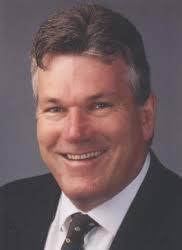
Established in 2021 from a generous gifting of funds from former University of Otago Vice-Chancellor, Graeme Fogelberg and his wife Mary Fogelberg, this scholarship supports students from Wellington College who exhibit leadership potential to undertake first-year undergraduate studies at the University of Otago.
The Headmaster of Wellington College will convene a selection committee to select a recipient of this scholarship based on the following criteria:
• The applicants’ academic achievements while attending Wellington College; and
• The applicants’ involvement in sporting, cultural, or other community, or extra-curricular activities; and
• The applicant’s proposed programme of study.
The 2021 inaugural recipient was Isaiah Opai. Isaiah was the College’s 2021 Pasifika and Māori Sportsman of the Year, and was a member of the 1st XV, the McEvedy Team, played for the NZ Fijian Schools’ 7s team, was the CSW Touch Player of the Year and a School Prefect.
Fulbright Scholarship takes former Head Prefect to the USA
t was announced earlier this year, that Shortland Chambers' junior barrister, Rayhan Langdana [Head Prefect, 2011] was awarded a prestigious Fulbright Scholarship to undertake his postgraduate study in the United States.
The Fulbright programme was founded by Senator J William Fulbright in 1946 in an attempt to promote cross-cultural exchange in the wake of World War II. Previous New Zealand recipients of Fulbright Awards include Judges, Prime Ministers, professors, and several Members of Chambers.
Rayhan will complete a Master of Laws in electoral law at the University of California, in Berkeley, California. He graduated with an LLB (Hons) and a BA in History and Politics in 2018 from the University of Auckland and joined Shortland Chambers in 2019.
While in Wellington for his presentation, Rayhan came to visit the College, and following a tour of the school, met with some of his former teachers and with Headmaster, Glen Denham. He then spoke to the Y13 students, recalling his time at Wellington College, and wished the students all the best for their future.
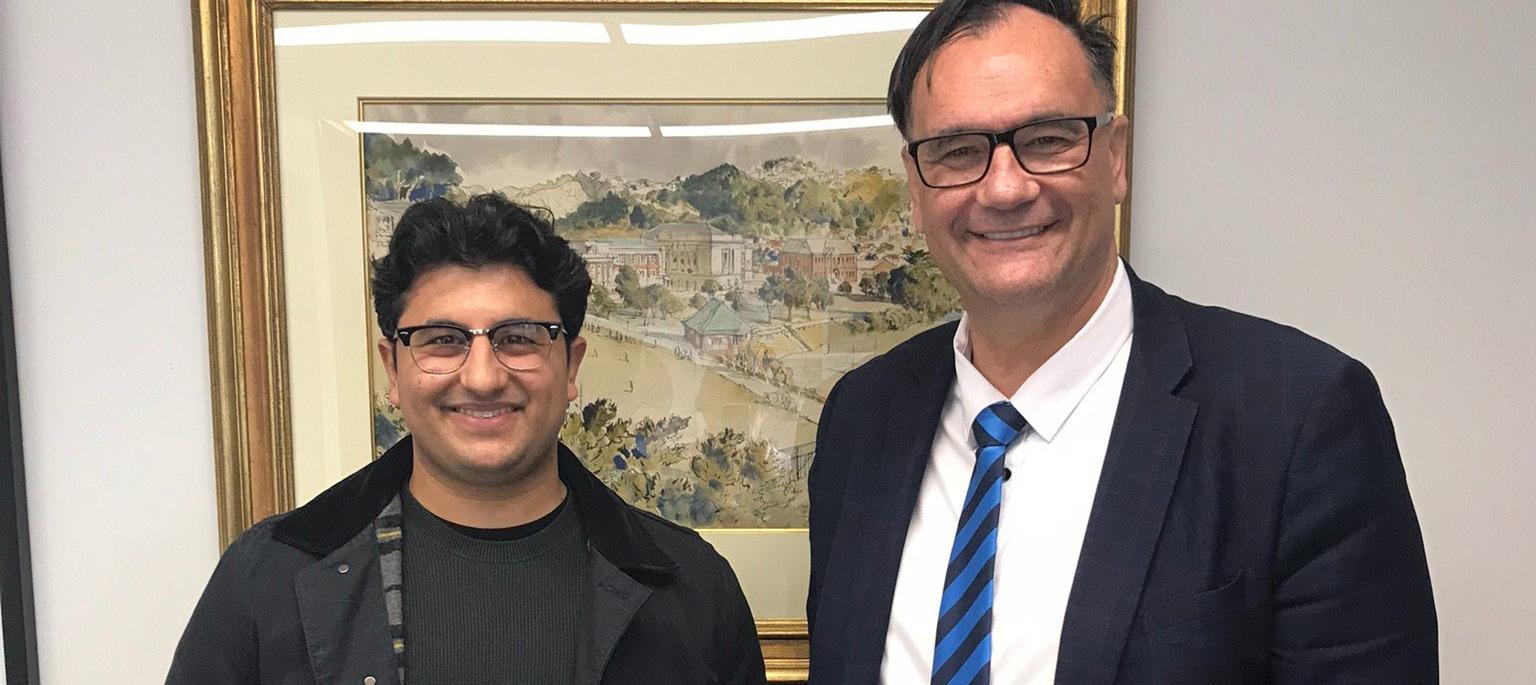
21 The LAMPSTAND, 2022
reunion [ ree-yoon-yuhn ] noun
1. an instance of two or more people coming together again after a period of separation.
2. a social gathering attended by members of a group of people who have not seen each other for some time. “a school reunion”.
We have hosted seven reunions this year, two of them having been postponed from 2020 and 2021. With plans underway for the 2023 reunion programme, we seek Old Boys from the classes of 1963, 1973, 1983, 1993 and 2003 to put their hand up to help. The reunion programme per se, is managed by the WCOBA, but we always need help in tracking down those Old Boys for whom we have no contact details for, and to then ‘rally the troops’ to actually get them to attend. Please get in touch if you can help, by emailing oldboys@ wc.school.nz
[firth-house-Reunion]
Having been postponed twice, the Firth House Reunion finally took place on 30 September (sadly accompanied by rotten weather) and our former boarders were at last able to kick up their heels and enjoy their reunion in style. 85 Old Boys and one former housemaster (Mike O’Connor), travelled from across New Zealand and three in from overseas; (Phil Salt from British Columbia, Marc PaviourSmith from New South Wales and Martin Kerr from Queensland) to come and reminisce on their time in Firth House.
The day started with a welcome from WCOBA President (and a boarder himself), Ted Thomas and then Headmaster, Glen Denham. An extensive collection of photos compiled over the years and presented by Archivist, Mike Pallin and Gary Girvan. They engaged the visitors throughout the day as memories
q 1948 - 1959
came flooding back. A tour of the College, exploring new parts of the school under the guidance of our Prefects, also took in a walk down Memory Lane in some familiar areas.
Our guests returned to the Memorial Hall (Alan Gibbs Centre) for drinks and dinner that evening. MC, Bryan Waddle [Class of 1966] (and a day boy) welcomed everybody and invited Glen to make a toast to the Firth House boys. Ted responded with a toast to the College, then our most senior Old Boy in attendance, Don Adams [Class of 1948] lit the lamp, reciting our motto, Lumen accipe et imperti (Receive The Light and Pass It On), passing the mantel onto 2022 Head Prefect, Harry Zangouropoulos.
Ten years ago, Don’s older brother, the late Cliffe Adams had the honour of
lighting the lamp. Harry concluded the speeches with his reflection on Wellington College today, followed by a Toast to the Brotherhood. To Harry and fellow Prefects delight, Forty Years’ On was sung with much enthusiasm by the Old Boys.
During the evening, Bryan interviewed five former boarders; Kahu Pattison [Class of 1957], Marc Paviour-Smith [Class of 1963], Bert Lamb [Class of 1965], Martin Jarvis [Class of 1980] and Eteuati Eti [Class of 1981 on their memories of their time in Firth House. Many of their anecdotes resonated with the rest of the guests.
While numbers were down from ten years ago, those who returned had a wonderful time visiting their old stomping grounds and comparing stories about their time as students with chance to reconnect with friends from years past.
Back Row: Quentin Collier, Keith Dreyer, John Welsh, Michael Clements, Ian August, Peter George, Martin Kerr, Rob Laking, Warwick Greenwood
Front Row: Alan Quartermain, Errol Cole, Bob Miller, Ted Coutts, Glen Denham, Don Adams, Brian Christie, Cam Odlin, Kahu Pattison
r 1960 - 1969
Back Row: Peter Galbraith, Bert Lamb, Tim Lamb, Peter Speedy, Marc Paviour-Smith, Rod Page, Jeremy Cooper, Neil Kenny
Second Row: Pete Rodger, John Harding, Paul Harper, Phil Pacey, John Robinson, Neale Ames, Clark Pollitt, Ian Bell, Roger Smyth
Front Row: Brian Drake, Phil Salt, Mike O’Connor, Graham Bell, Glen Denham, Andy Tie, Quentin Collier, Errol Cole, John Wedde
s 1970 - 1981
Back Row: Eteuati Eti, Wayne Breeze, Paul Smith, Chris Brown, Murray Grant, Atinae Va’ai, Ian Miller, John Marfell, Ewen Smith
Second Row: Rapi Iremia, Michael Mann, Martin Goulden, Jamie McGregor, Robbi Walker, Tim Kerr, Martin Field, Gary Smith
Front Row: Martin Jarvis, Ian Andrews, Robbie Sampson, Ted Thomas, Glen Denham, Mike Desmond, Richard Borrell, Steve Mann, John Ahearn
Absent for Photos: Matt Birch, Bryan Lawrence, Danny McGrath, Craig Mortland, Hau Te Maipi, Peter Wedde
22 The LAMPSTAND, 2022

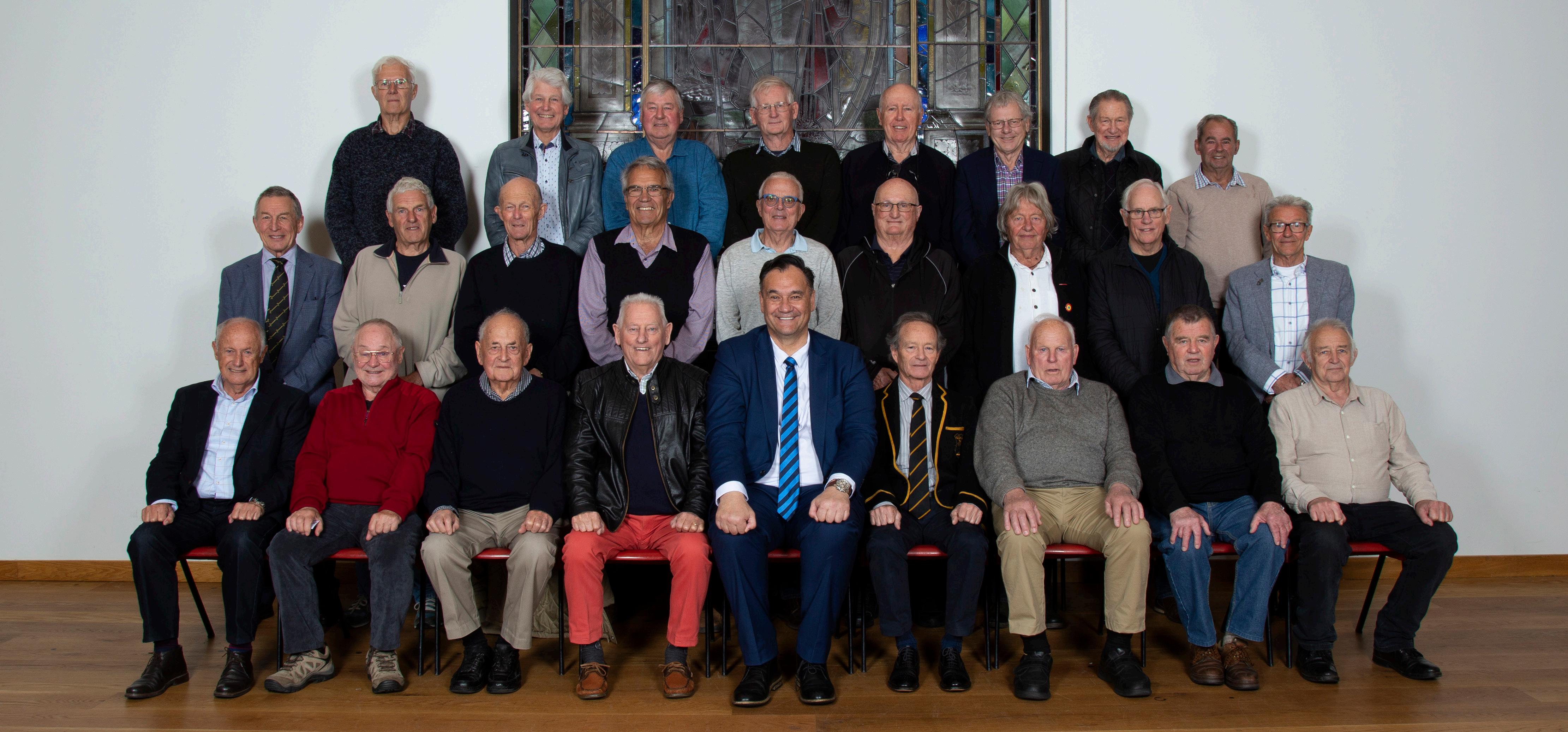
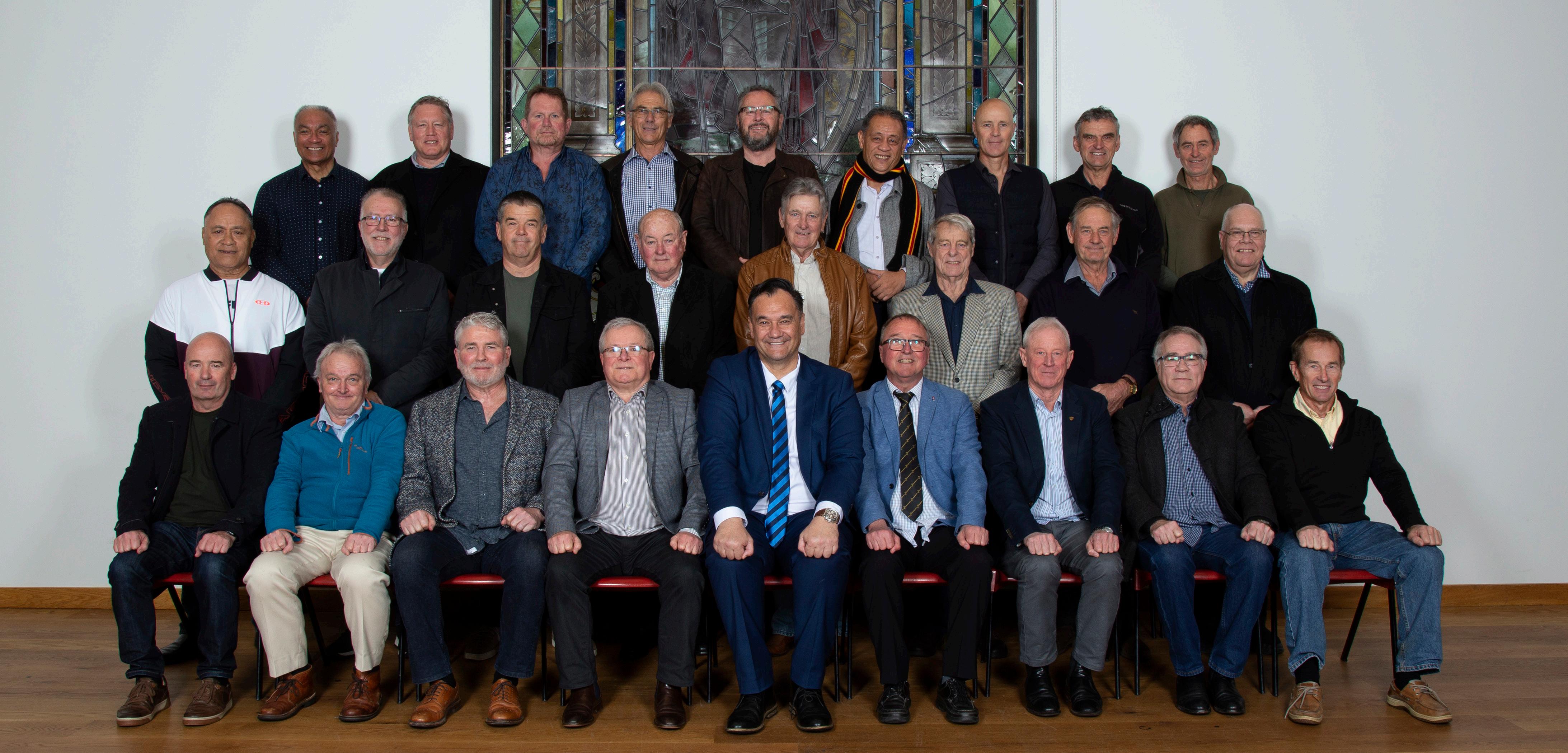
23 The LAMPSTAND, 2022 q
s
r
REUNIONS
An excerpt from the Headmaster’s newsletter following the reunion:

SONS FOR THE RETURN HOME
On the last day of term [30 September], we celebrated the return of our Firth House Old Boys. Approximately 90+ Old Boys that boarded at Firth House, plus a number of staff, came home to us to celebrate their friendship, and brotherhood and visit their College. Some have not been back since they left. Most notably among the staff was Mike O'Connor, a boarding house-master at Firth House, who went on to become a celebrated Headmaster at Palmerston North Boys’ High School.
With ages ranging from those in their late 50s to the oldest at 92, the Firth House boys spent a day with us in school and attended a terrific dinner that night in the AGC. I was incredibly humbled, honoured, and proud to host them.
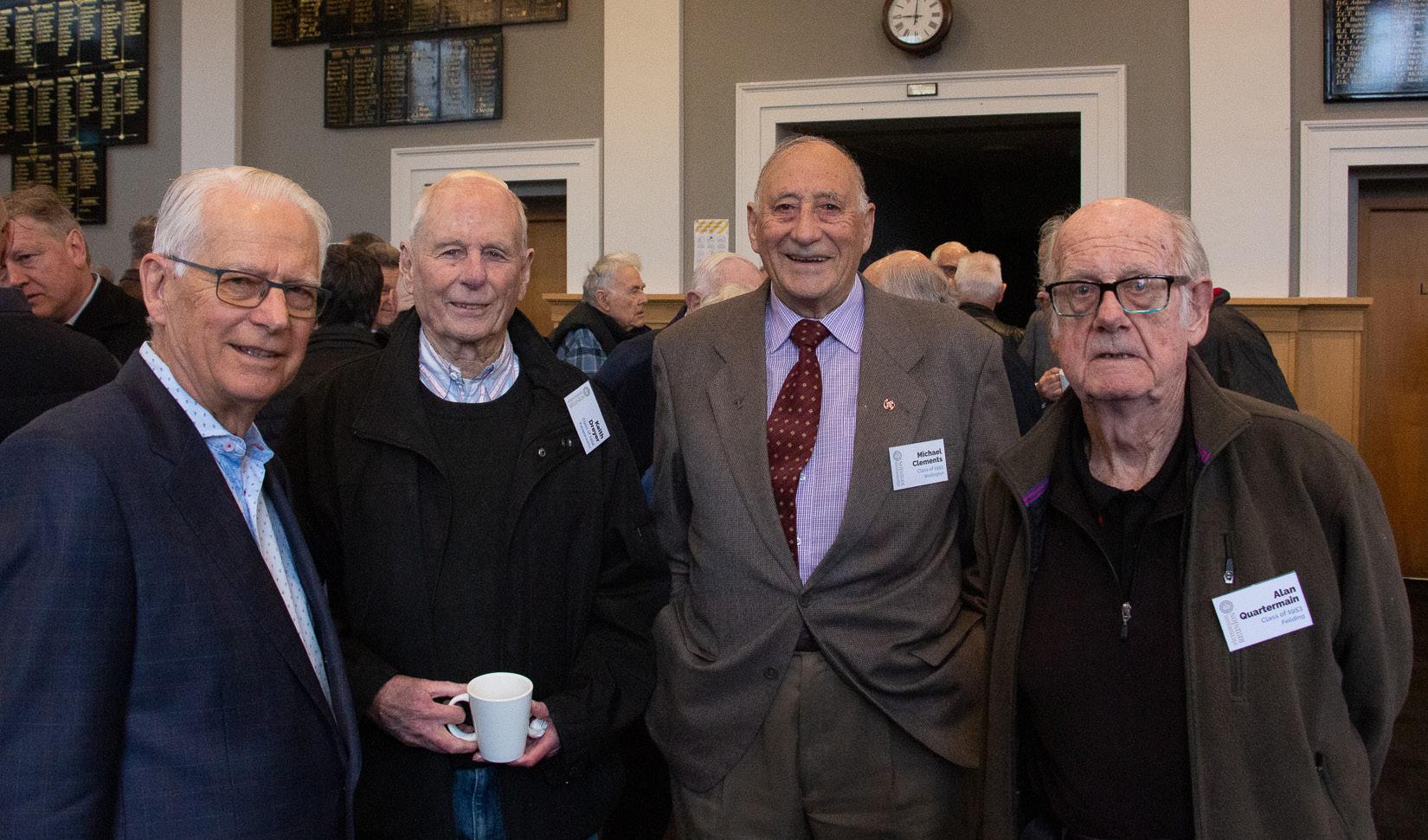
Our MC was Old Boy and cricket icon, Bryan Waddle, and the night was filled with laughter and stories that made me wish I’d been a boarder at Firth House. Well done to Andy Tie - probably the only Old Boy to still fit into his blazer!
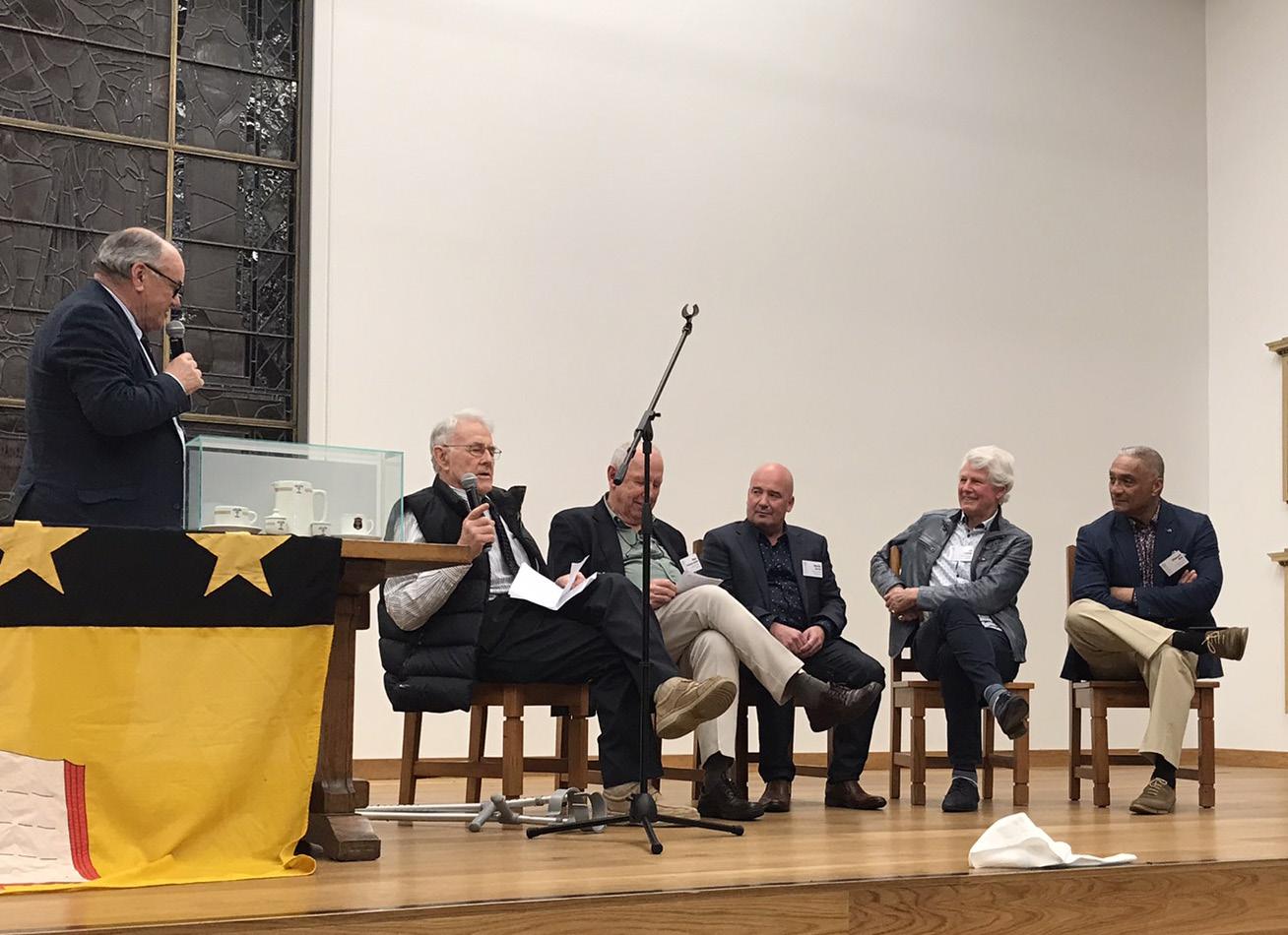
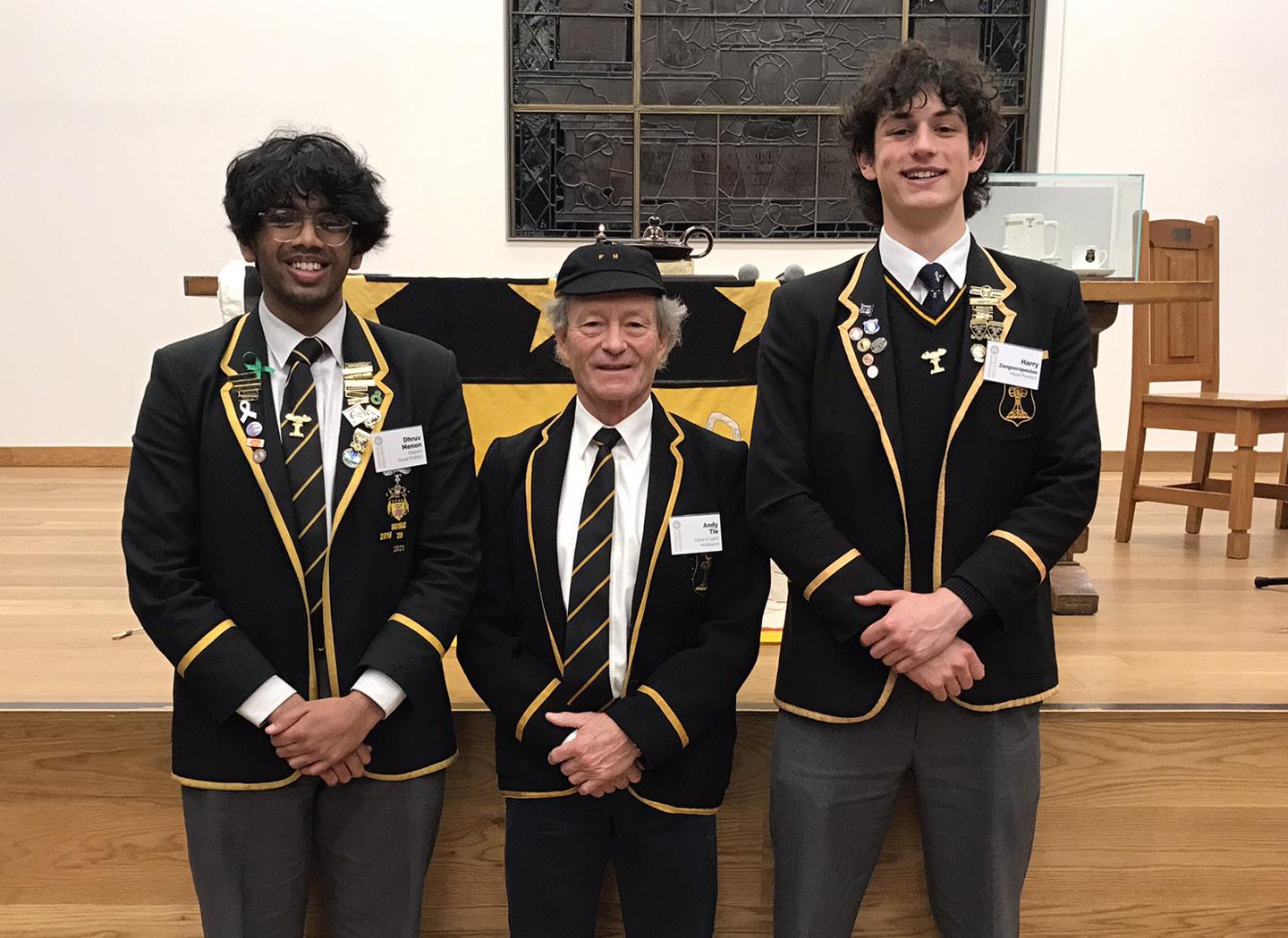
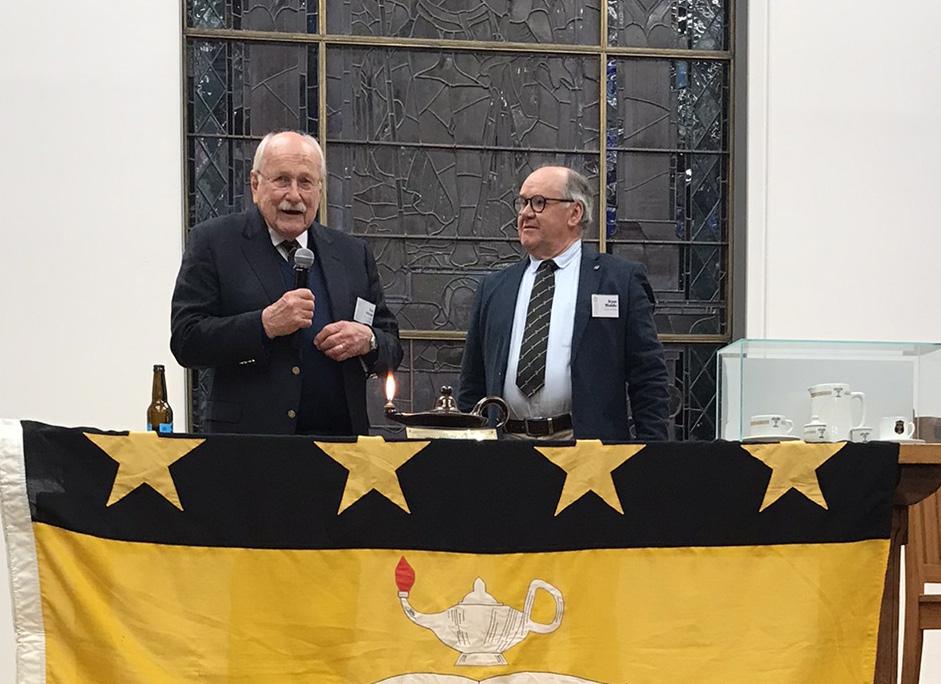



The love and camaraderie that they had for each other was joyful. I had the great pleasure of sitting next to Don Adams, a 1948 Old Boy. Sharp as a tack, with a tremendous sense of humour, Don presided over the ‘lighting of the lamp and passing it on’ to Harry Zangouropoulos, our current Head Prefect, which was a highlight of the night. I have to say that some of the antics that the boys got up to back then were ingenious and incredibly funny, but would have tested me and any headmaster of today’s era.
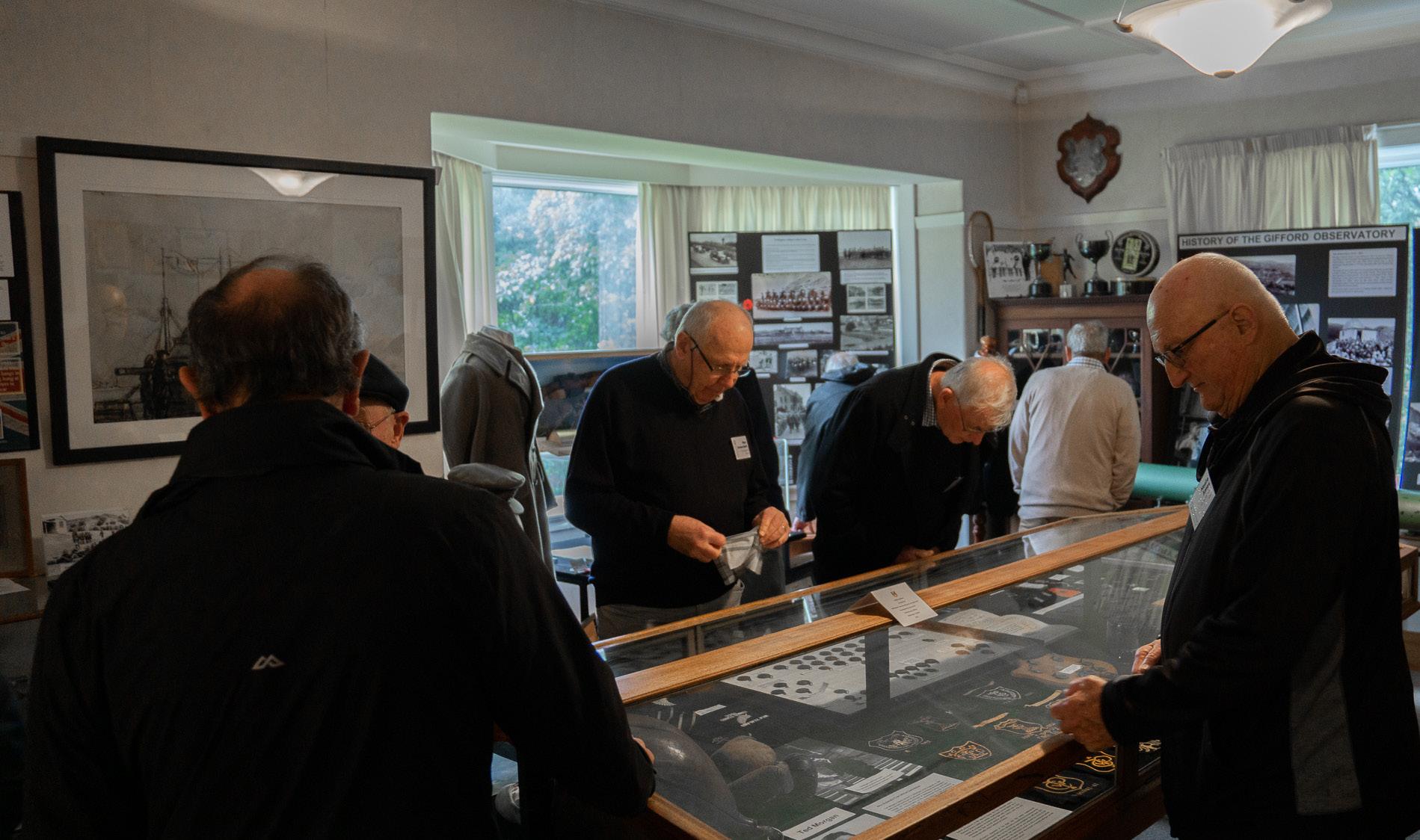
I wish that Firth House were still going today at Wellington College. The opportunity for Old Boys living elsewhere
to send their sons to Wellington College would be invaluable. To have a place where we can bring our international students and those boys that need respite, for a variety of reasons, would be an incredible asset. Firth boys, although only making up 10% of the school population, usually provided half of the 1st XV and Cricket 1st Xl, as well as large numbers of school prefects.
42 years on, after the closure of the boarding facility in 1981, Firth House Old Boys remain a treasure, a taonga, and a touchstone for Wellington College. It reminded me of the breadth of the community that I serve. I thank them from the bottom of my heart for making me feel so welcome and, if only for one night, an honorary Firth House boy. Tradition is not the worship of ashes, but the preservation of fire.
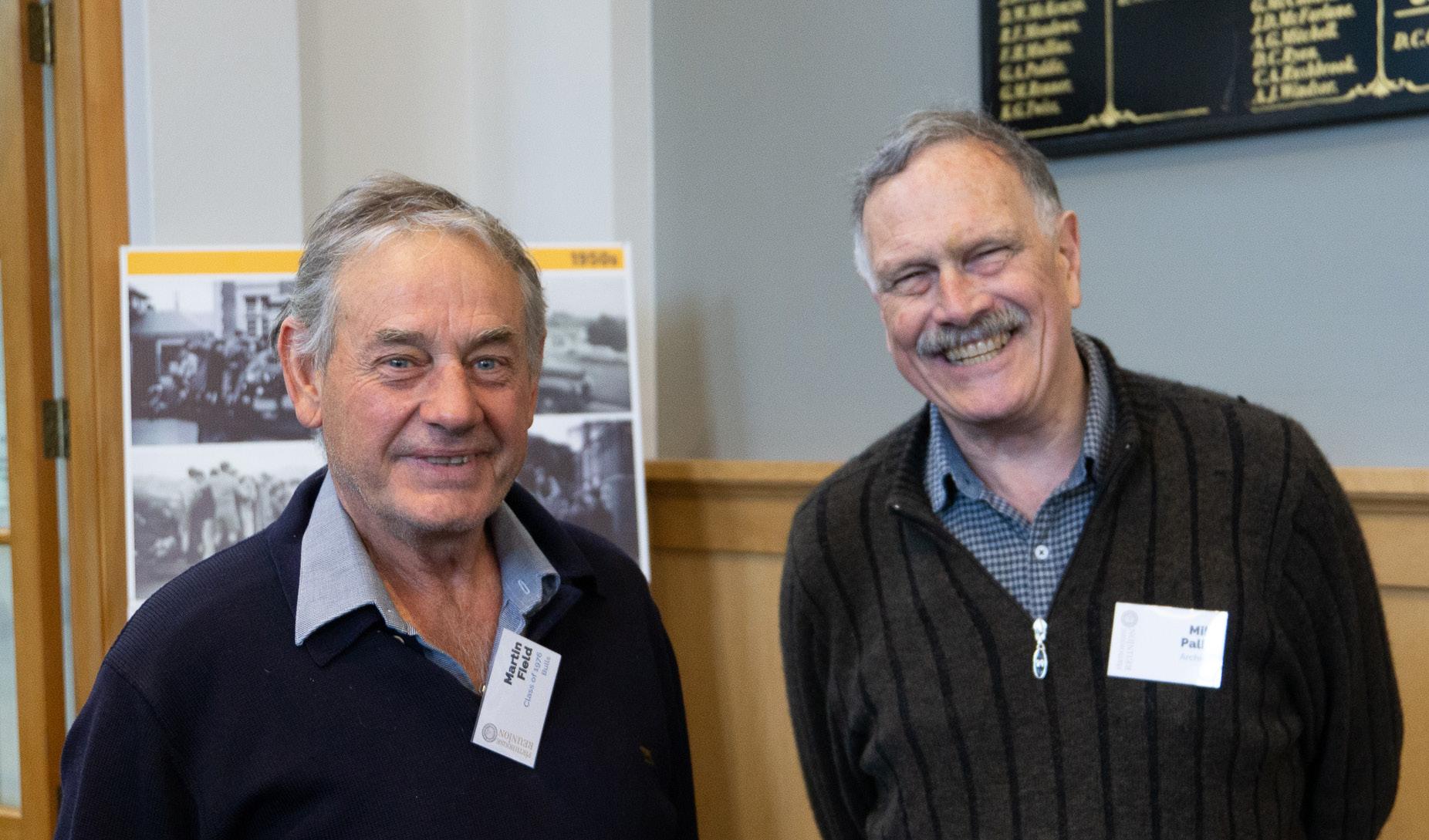
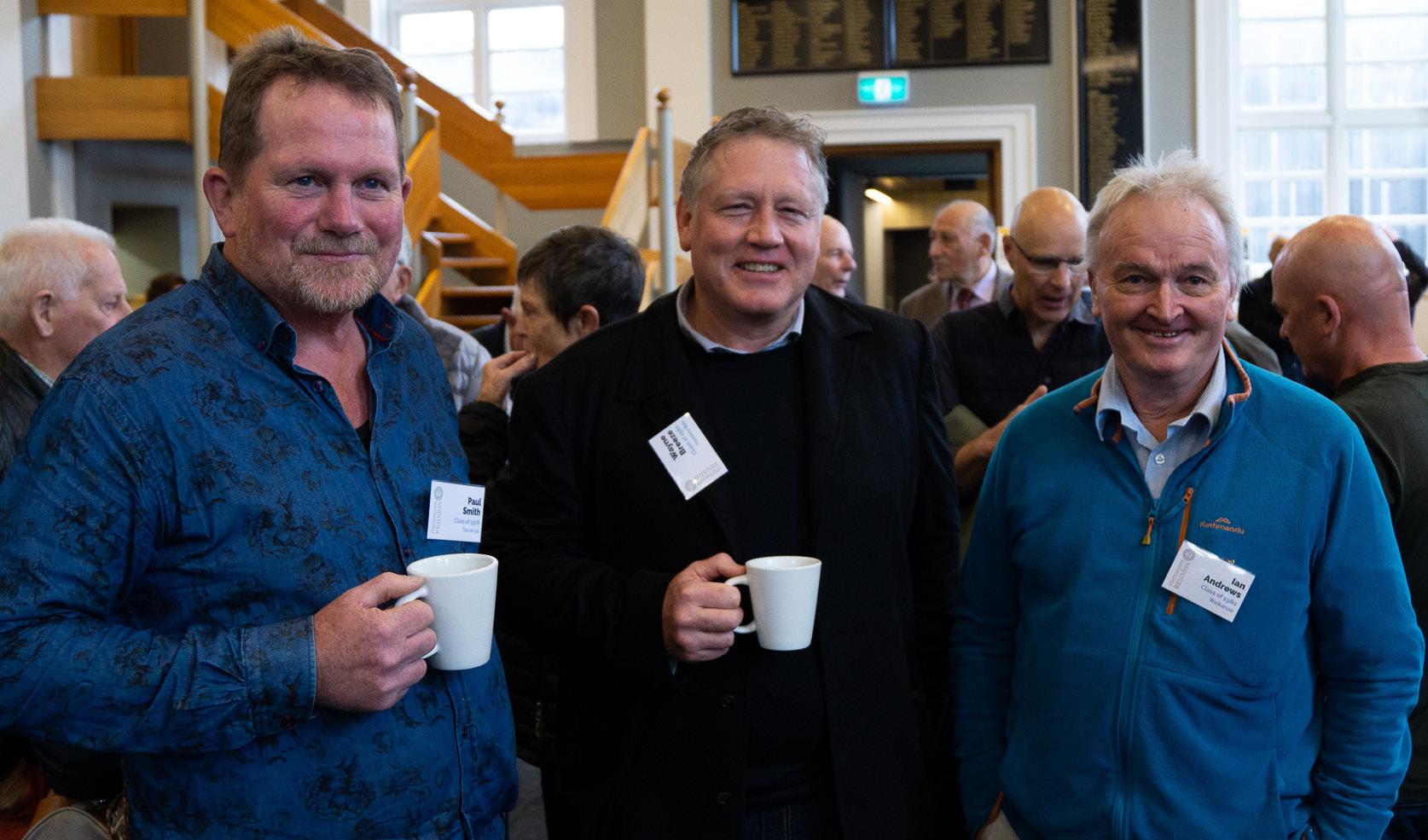
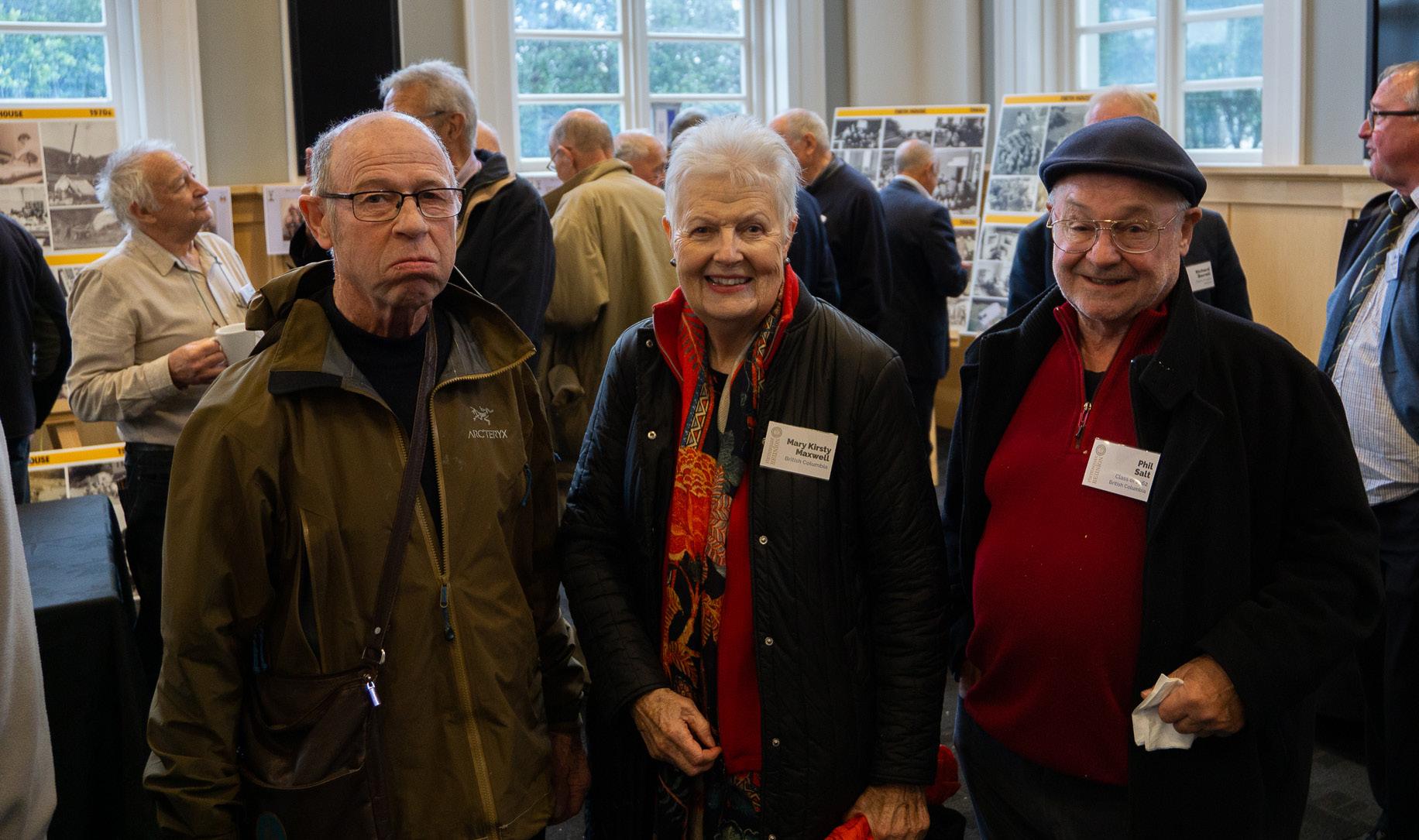
24 The LAMPSTAND, 2022
Glen Denham
[Pasifika-Old-Boys-Network-Reunion]
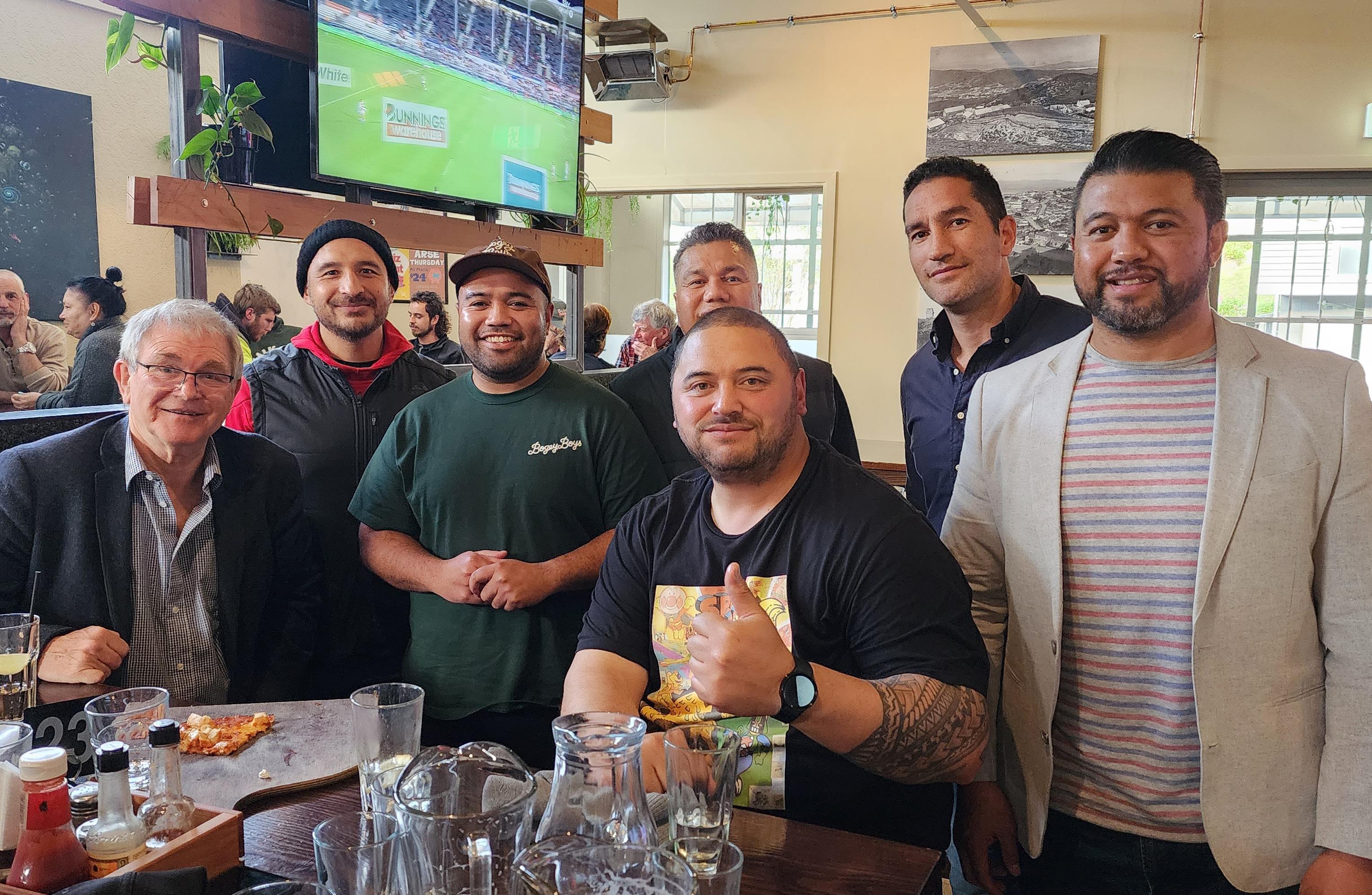
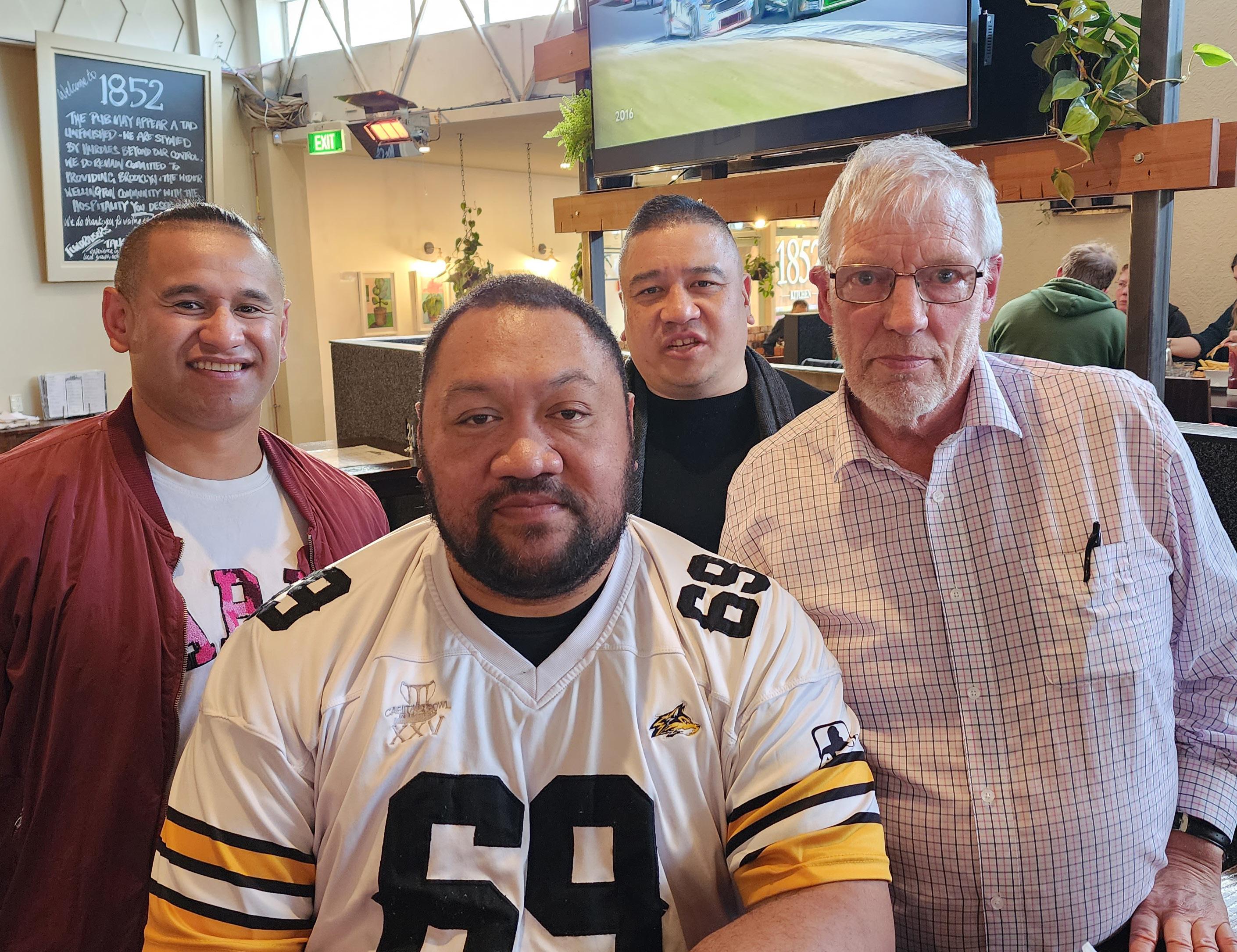
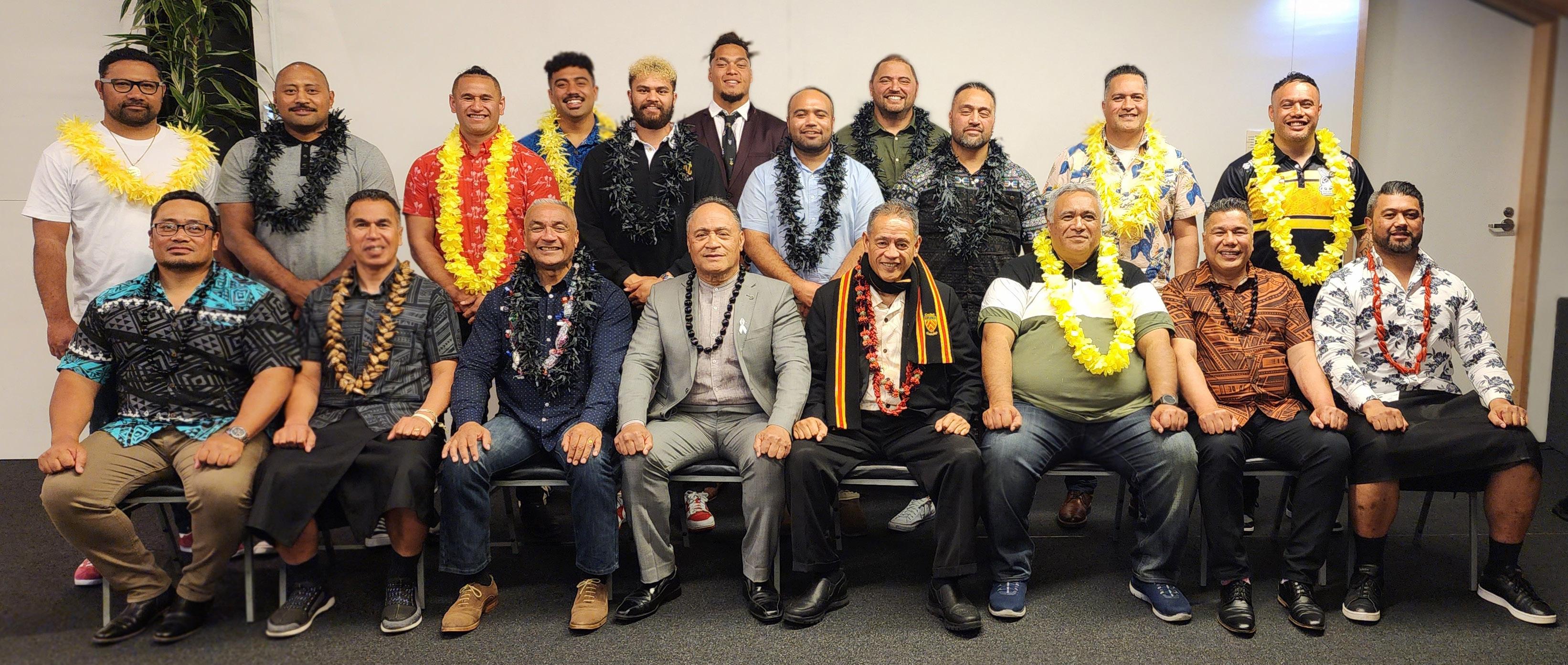
The inaugural Reunion for the Pasifika Old Boys' Network took place over Labour Weekend. A good number of Old Boys attended, representing many decades and cohorts coming together to reconnect and gain some insight from the new Headmaster Glenn Denham of his vision for the school, in particular Pacific students and their aiga. The Network had a tour around the school, then a more social catch-up on the Friday evening at the 1852 Bar and Restaurant in Brooklyn, owned by Old Boy, Jono Cox [Class of 2000] and were joined by Roger Moses and Rob Corliss to share in the memories. Saturday evening was a more formal occasion with the Network Dinner.
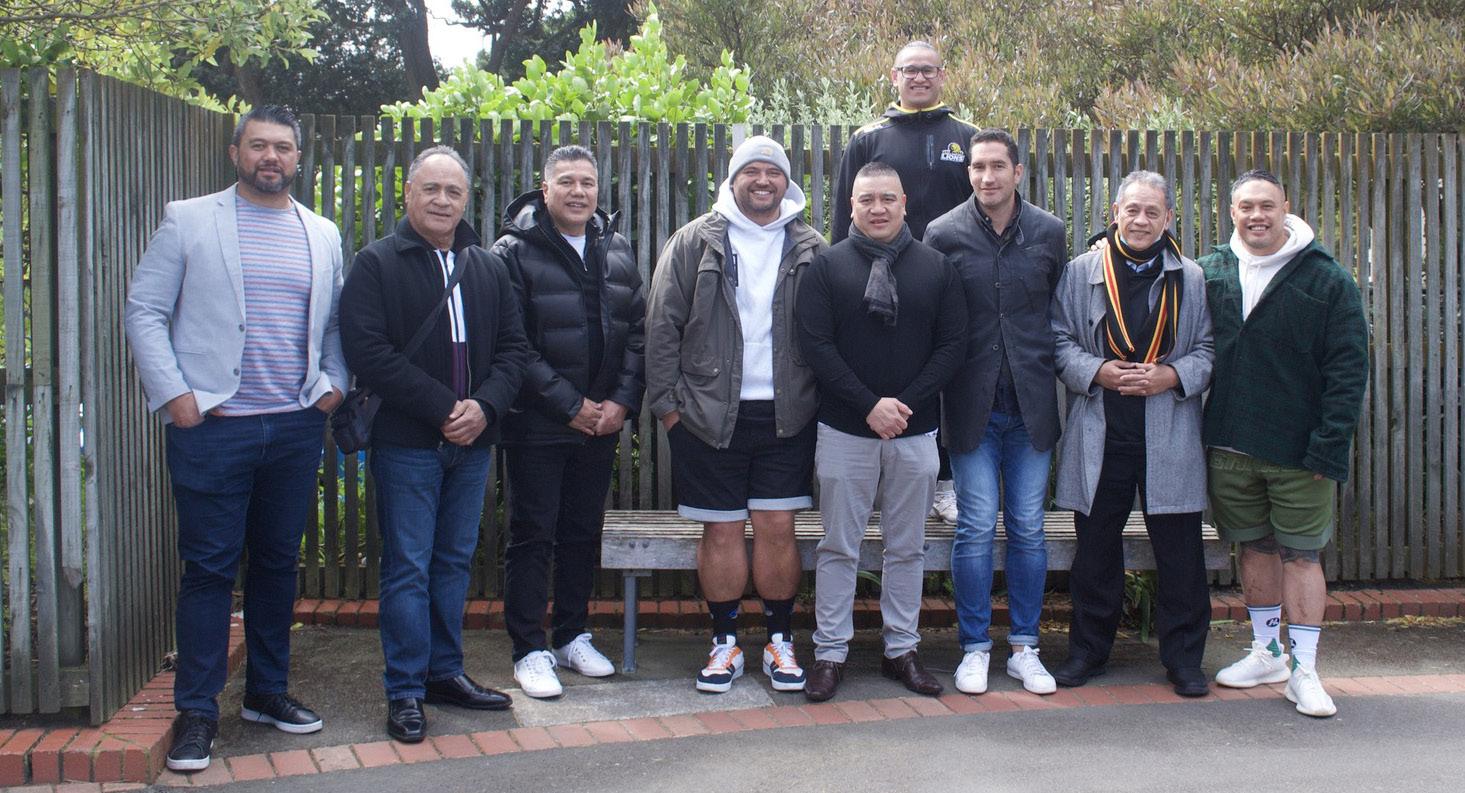
25 The LAMPSTAND, 2022
Standing: Liki Finau (2001), Nua Fianu (2002), Tomasi Palu (2004), Bubba Leota (2017), Reegan Gaualofa (2017), Naitoa Ah Kuoi (2017), Ali Leota (2011), Otto Rasch (1999), Fa'alolo'u Leota (1994), Mark Taulelei (1990), Evan Belford (1996) Sitting: Tufi Auelua (1990), Talalelei Taufale (1985), Eteuati Ete (1981; Firth House), Rapi Ieremia (1973; Firth House), Atina'e Va'ai (1977; Firth House), Ralph Faamalepe-Jones (1984; Firth House), Masalosalo Taufale (1983), Talia Belford (1993)
: [L-R]: Talia Belford (1993), Rapi Ieremia (1973), Maslomaslo Taufale (1983), Otto Rasch (1999), Cory Murphy (1996), Tomasi Palu (2002), Justin Purdie (1998), Atina'e Va'ai (1977), Evan Belford (1996)
: Back Row: Nicholas Joe, Richard Anyon, Dave Bruce, Bruce MacKay, Julian Silver, John Keith, Gary Hooper, Graeme Beggs, Michael Gooch
Second Row: Andrew Hercus, Alex Angelou, Dave Grattan, Richard Muirhead, Phil Gordine, Richard Lomas, Dom Moore, Greg Motu, Luke Turner
Front Row: Derrick Gee, Nick Lourantos, Ray Wallace, Greg Fleming, Glen Denham [Headmaster], Rhys Nimmo, Malcolm Shaw, Vince Wong, Richard Boag
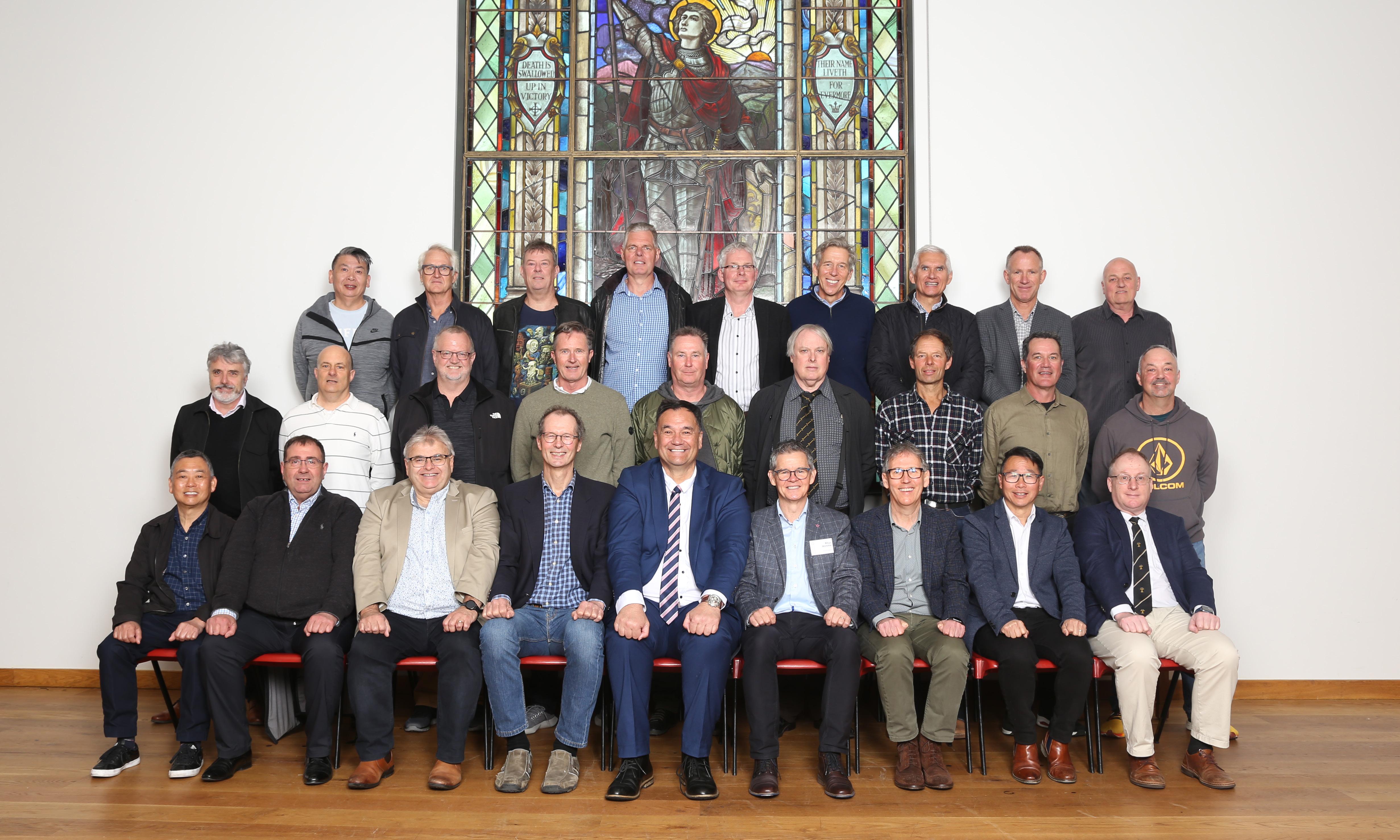
Absent for Photo: Steve Butland, Ete Eteuaiti, Andrew Ioannou, Nigel Willis
Below: The Class of 1981, much later in the day at their Reunion Dinner.

26 The LAMPSTAND, 2022
[class-Of-1981]
The Class of 1981 were finally able to assemble and enjoy their 40-year reunion in style, albeit a year late. It was heartening that twenty nine Old Boys travelled from across New Zealand and Australia for the special gathering on 21 October 2022. It was a memorable time to reminisce on their time spent at Wellington College as students.
The Reunion began with a welcome from the Headmaster, followed by a tour of the College, as they explored some new parts of the school as well as taking a walk through some more familiar areas. Dinner that evening included the group recounting their memories of their school days and bringing their classmates up-to-date on their lives since leaving
It was a special occasion as the Class of 1981 had a wonderful time visiting their old stomping ground and compared stories about their time as students, renewing the camaraderie and importantly, to reconnect with friends from years past


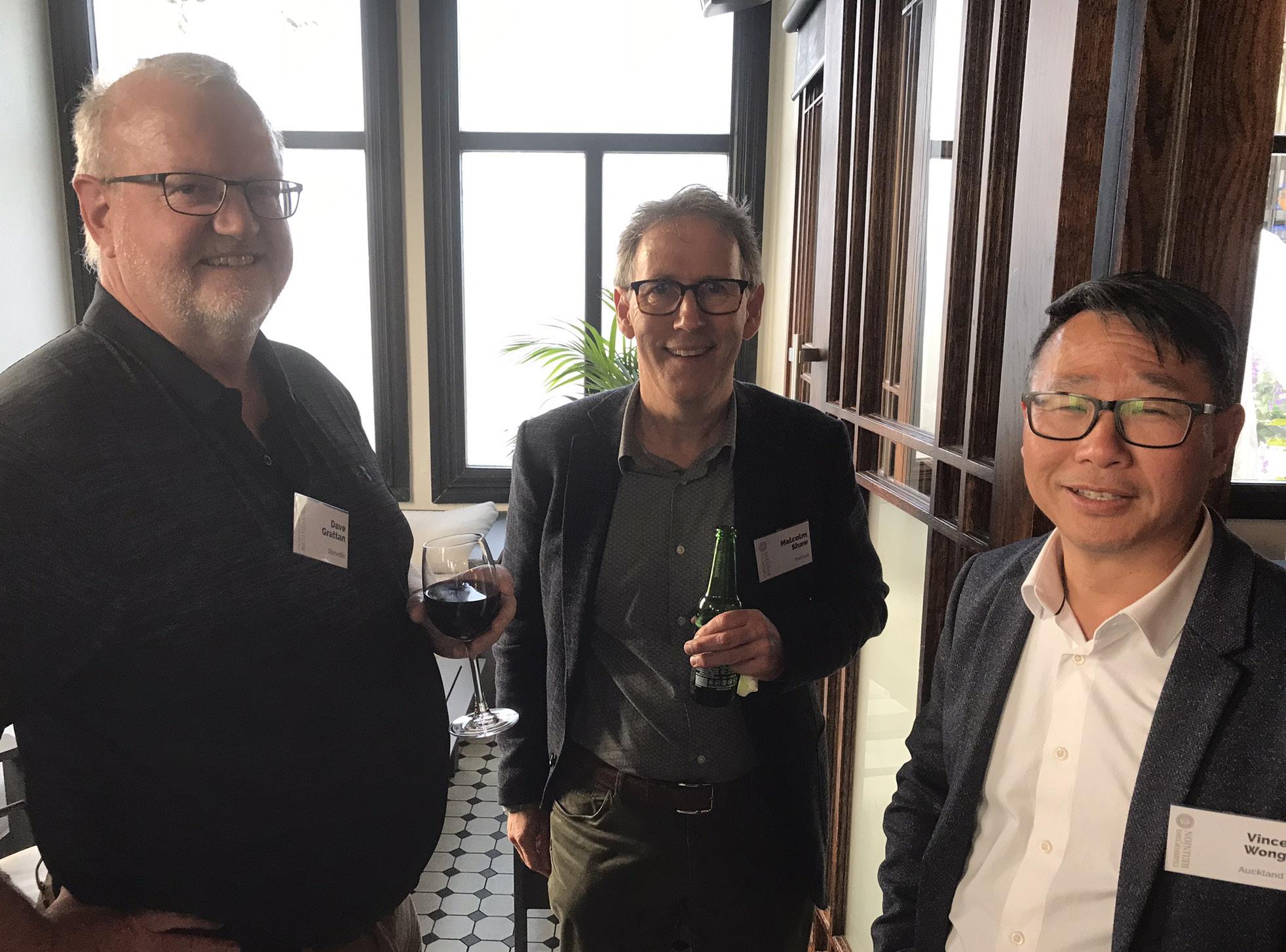
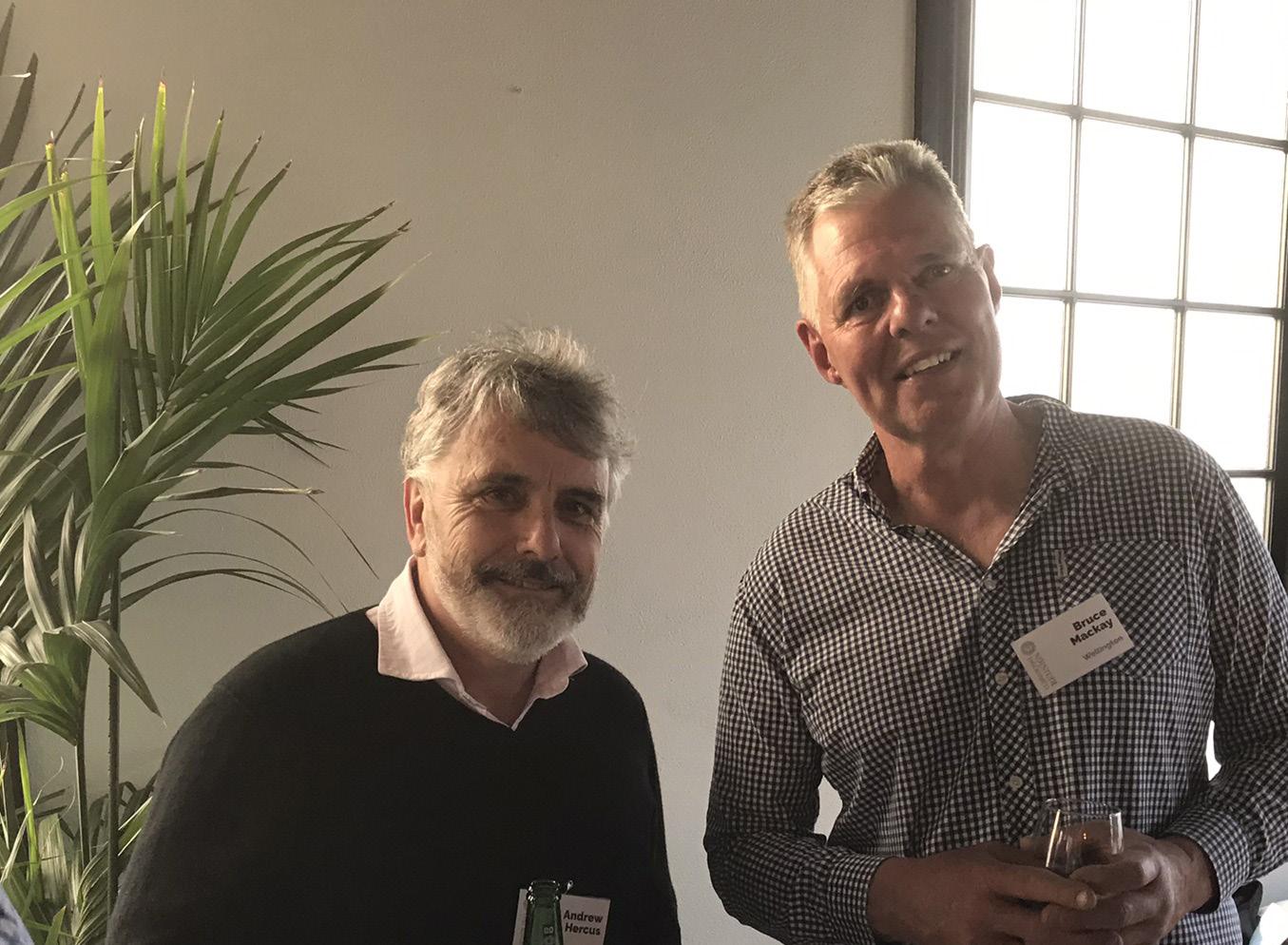
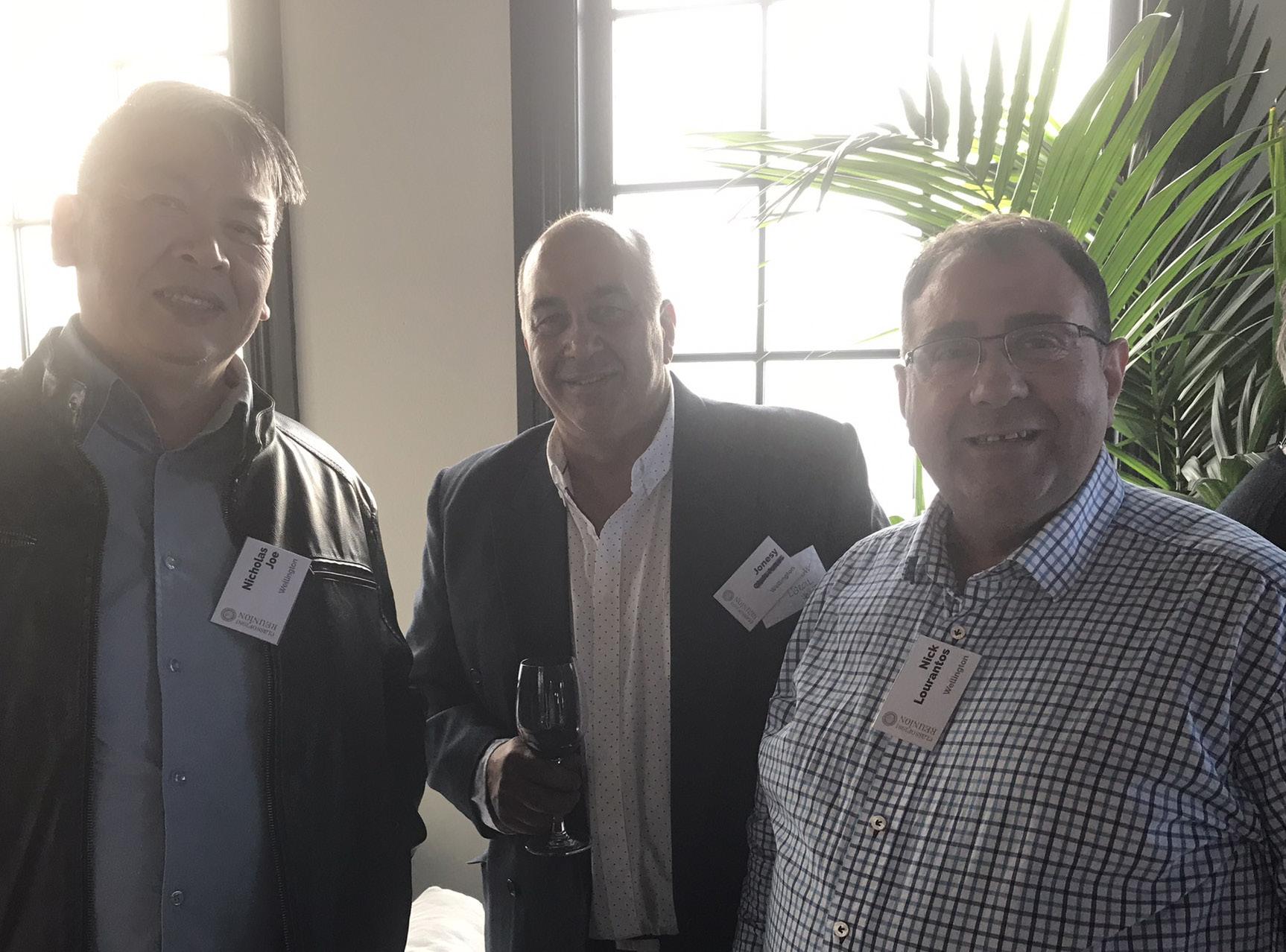

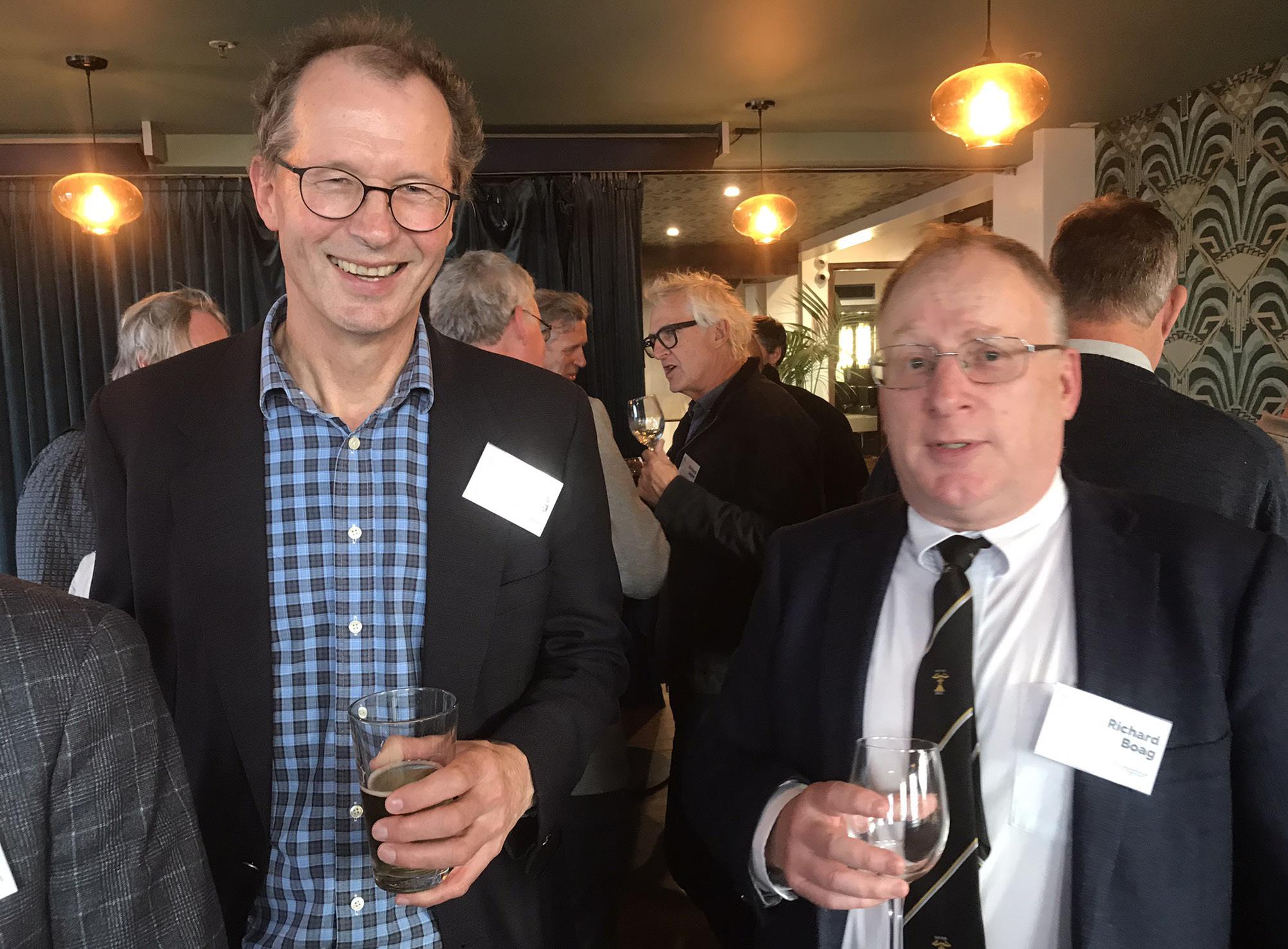
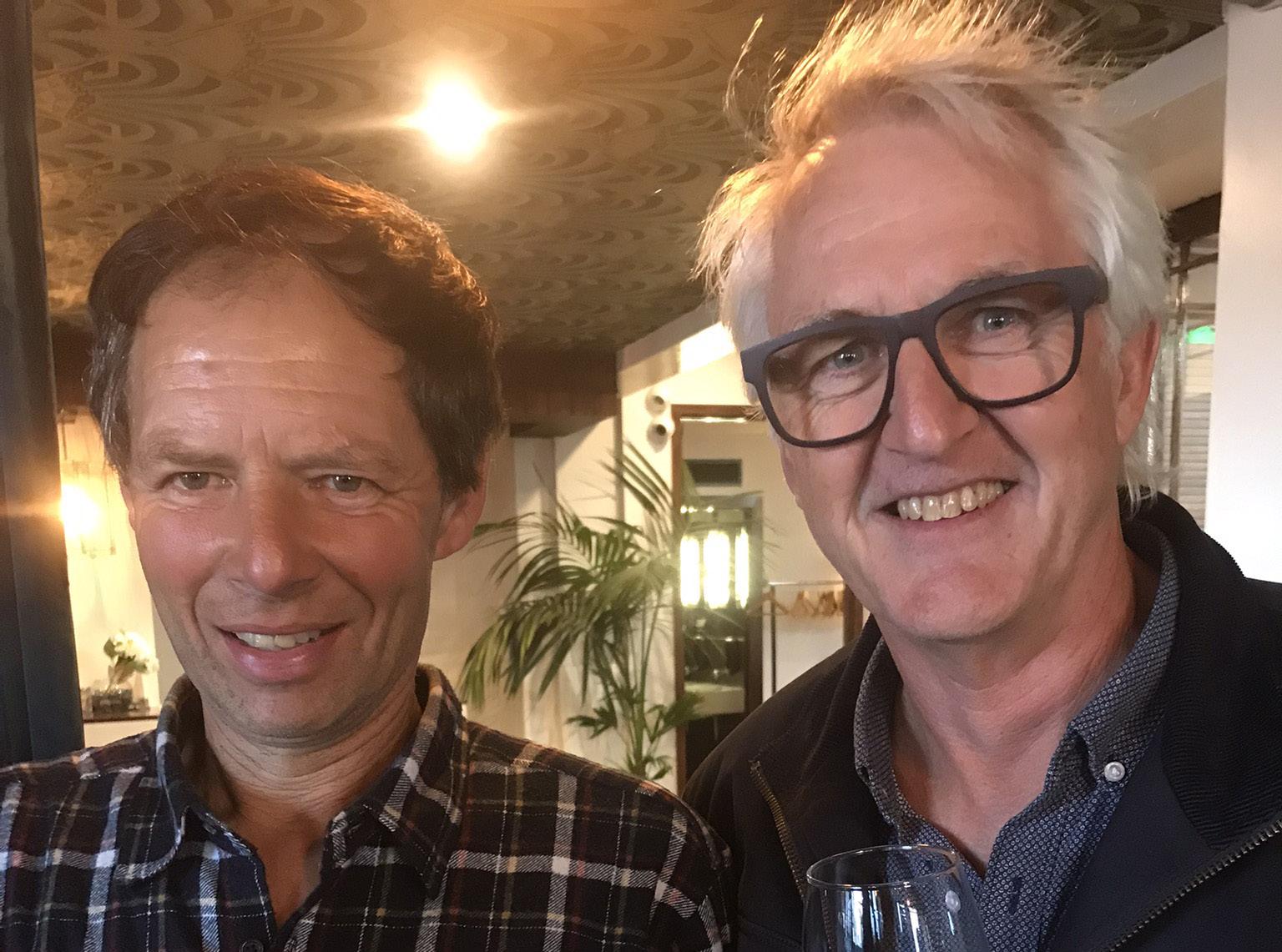
27 The LAMPSTAND, 2022
Second

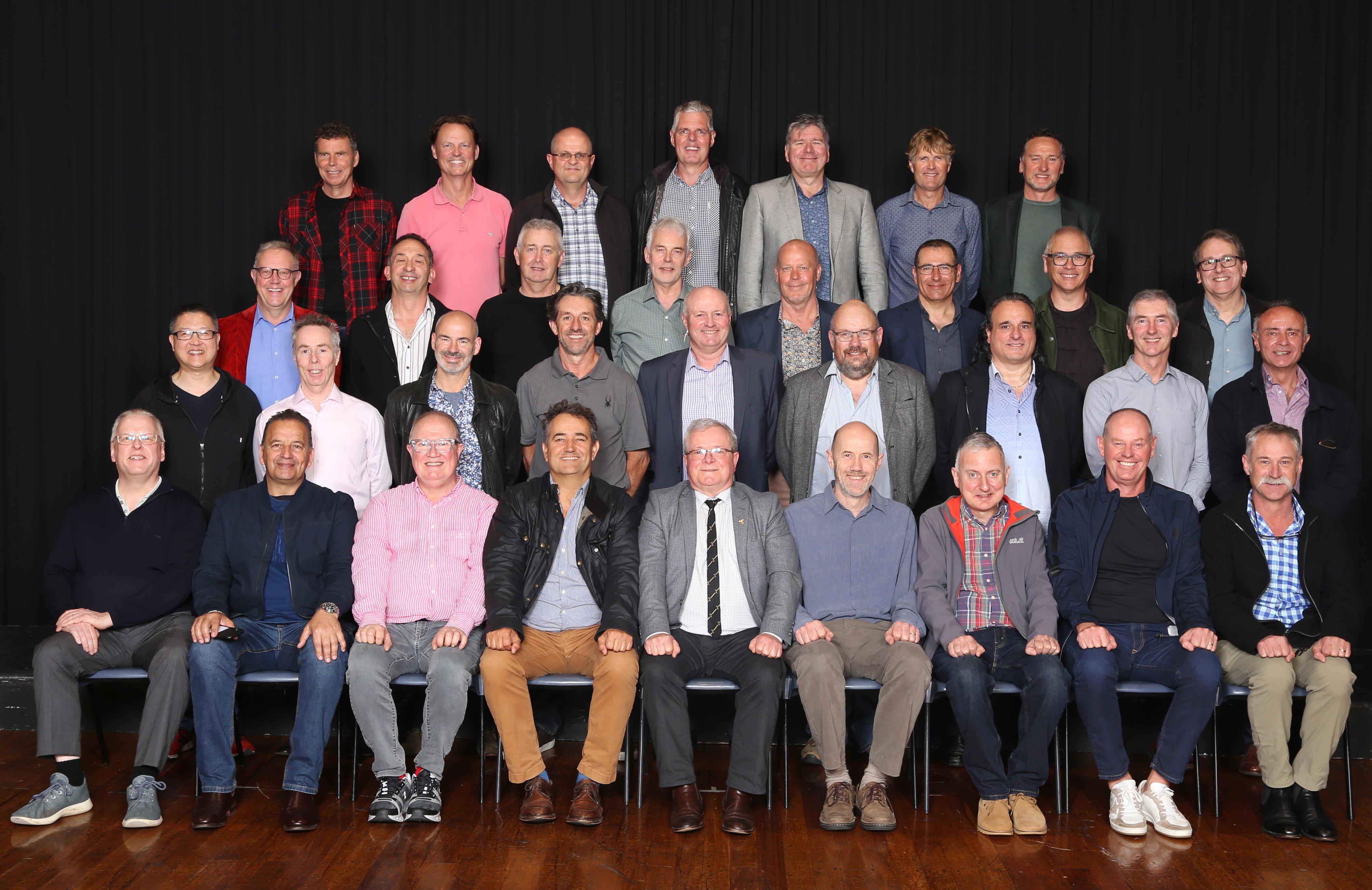
28 The LAMPSTAND, 2022
Back Row: Greg Freeman, Al Scott, Trevor Cuttriss, Bruce MacKay, Mike Tomkins, Guy Callender, Andrew Gair
Third Row: Michael Daymond-King, Garry Baranyai, Alan Lowndes, David Trow, Brent Hagan, Chris Yiavasis, Stephen King, Phil Larsen
Row: Phillip Ngan, Tony Wallace, Mike Ritchie, Tom Jeffries, Simon Rees-Thomas, Jim Sim, Mario Dometakis, Steve Mairs, Andrew Lourantos
Front Row: Allen Gainsford, Damian Papanicolaou, Alistair Duncan, Richard Boon, Ted Thomas (WCOBA President), Jake Preston-Thomas, Ian Stewart, Chris Hunter, Peter Domanski
Absent for Photo: Ian Gault, Dean Gerrard, John Kippenberger, Steve Langridge
Below: The Class of 1982, much later in the day at their Reunion Dinner.
[class-Of-1982]
The Class of 1982 came together on 28 October 2022, to celebrate 40 years since they finished at Wellington College. Thirty-six Old Boys gathered on the Friday afternoon at the school for a tour, and in particular, they enjoyed reminiscing and reconnecting as they visited both old and new places, before heading to the waterfront for their Reunion Dinner. Just as the Class of 1981 Reunion did the week before, these classmates found that recounting memories of their time at school, as well as sharing more recent news during the course of the evening was so fulfilling.


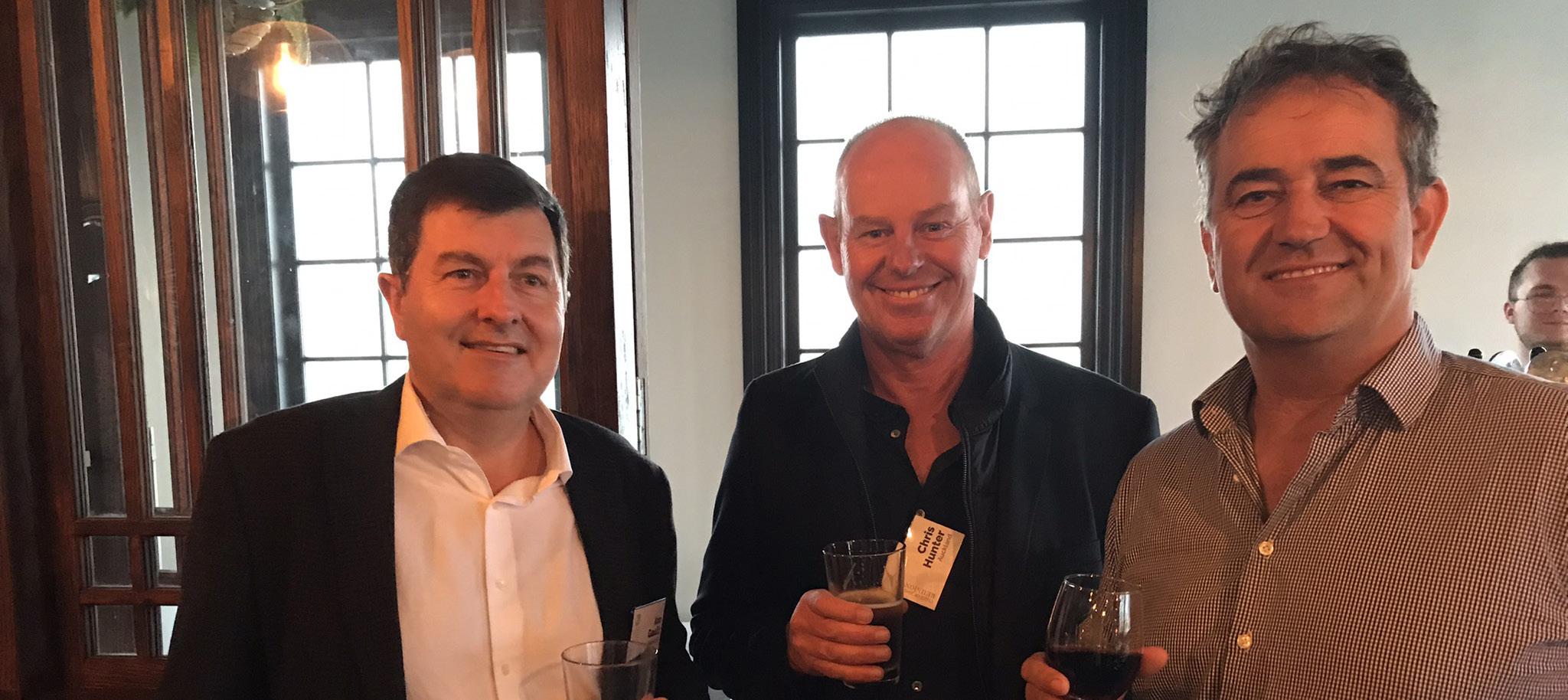
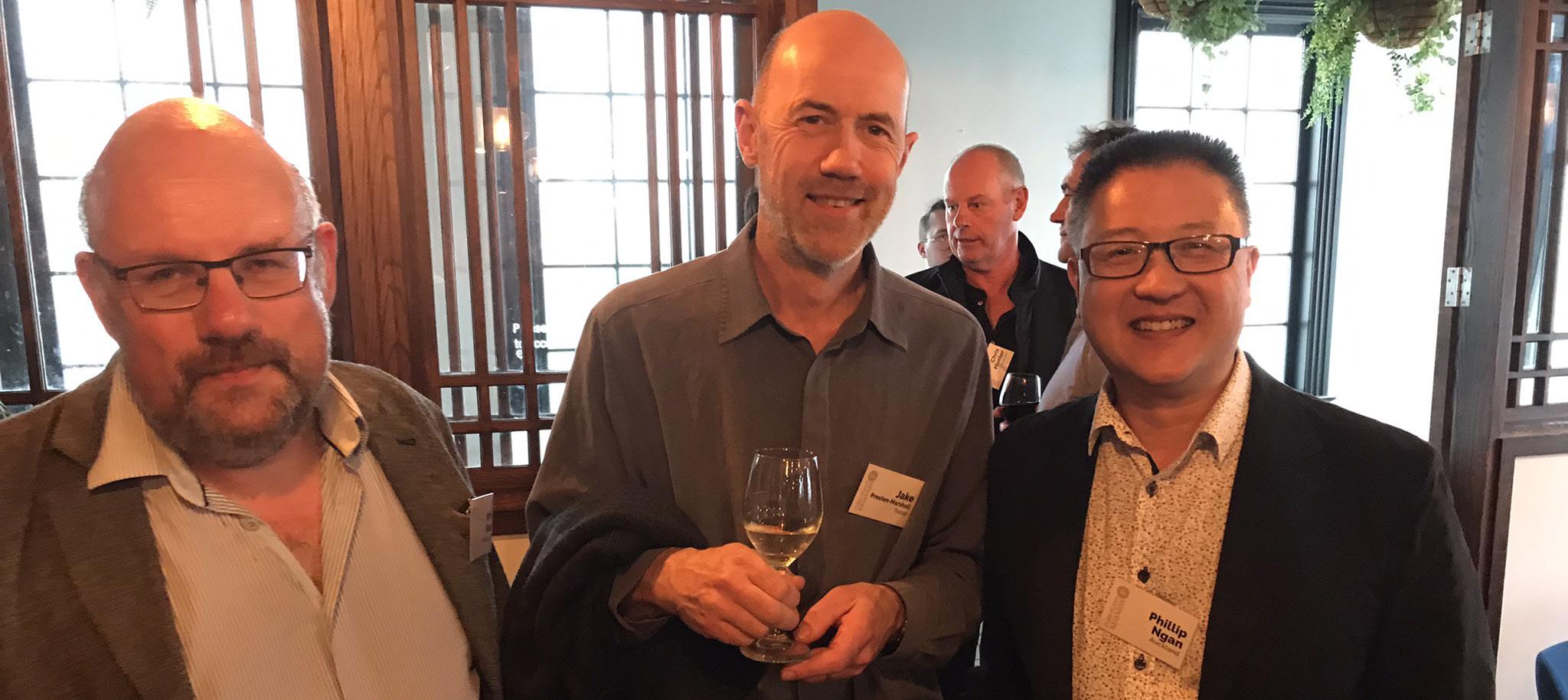
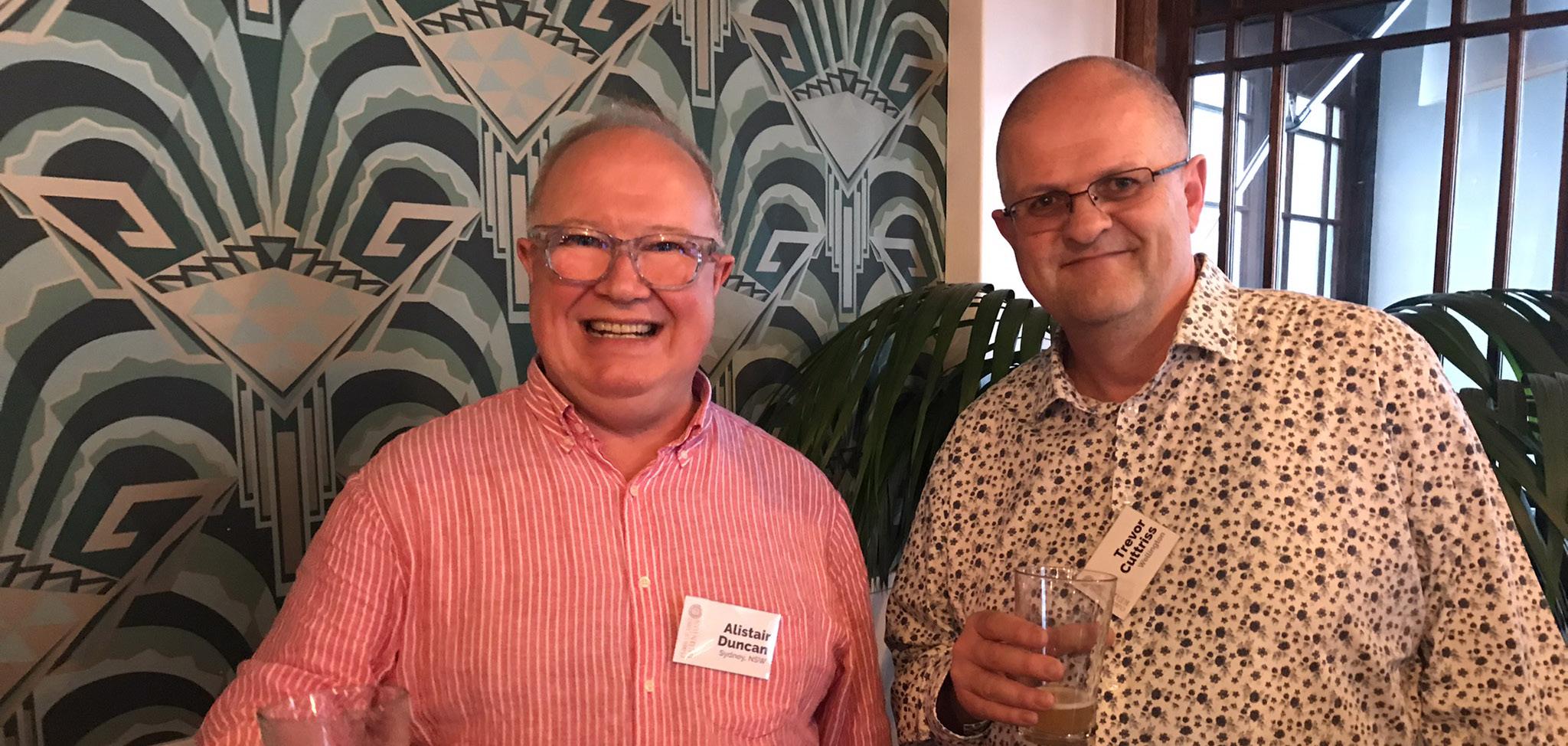
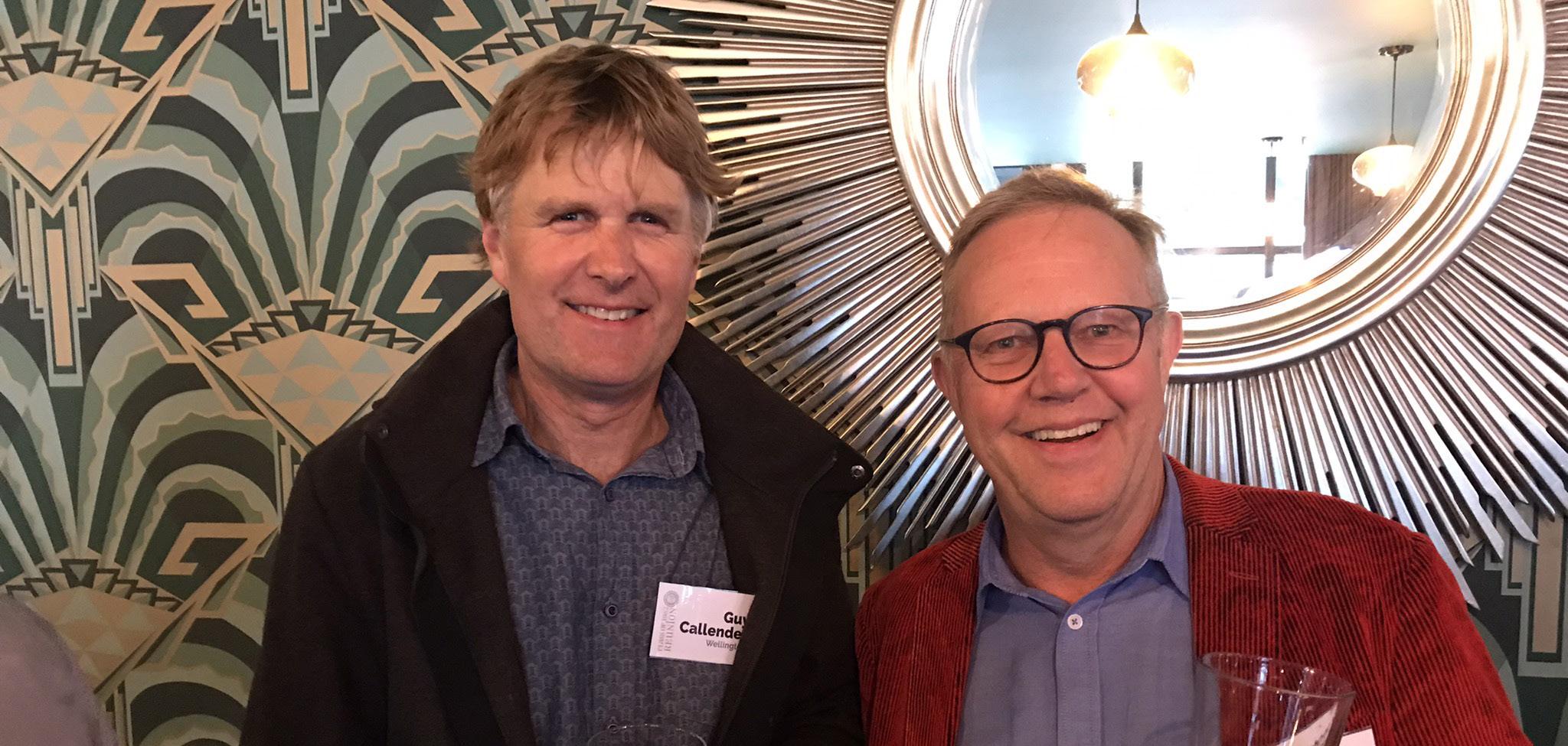
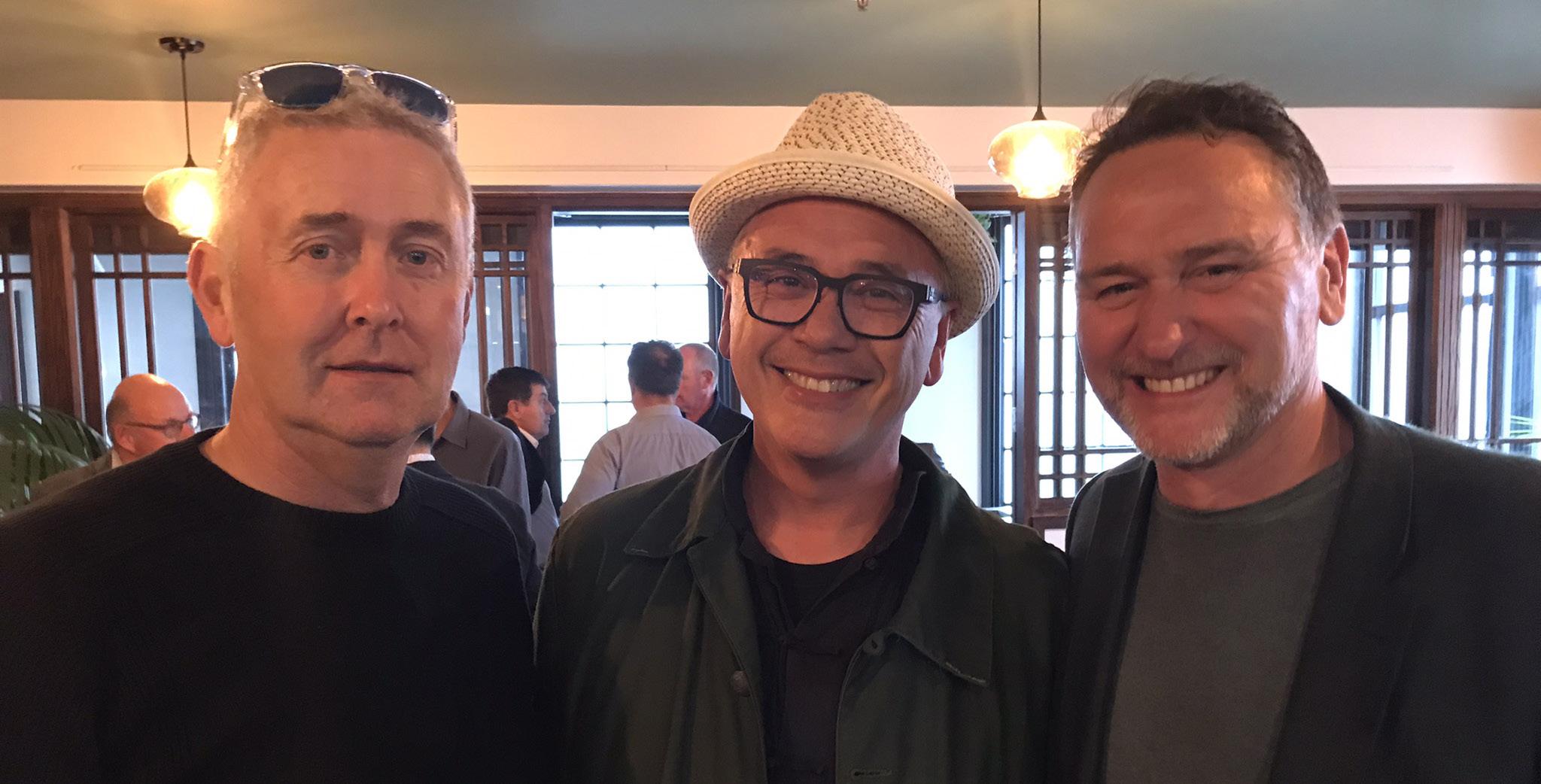
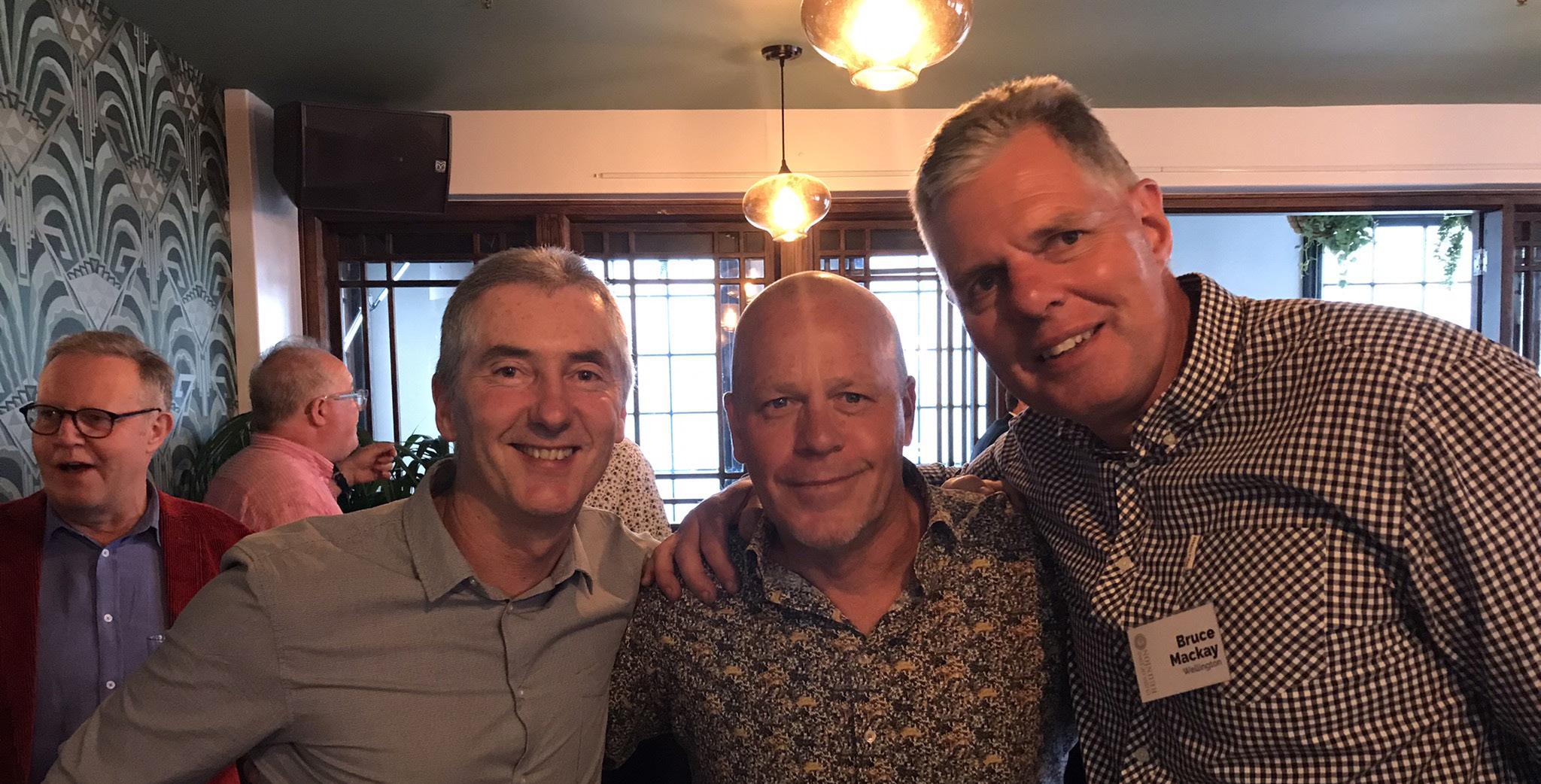
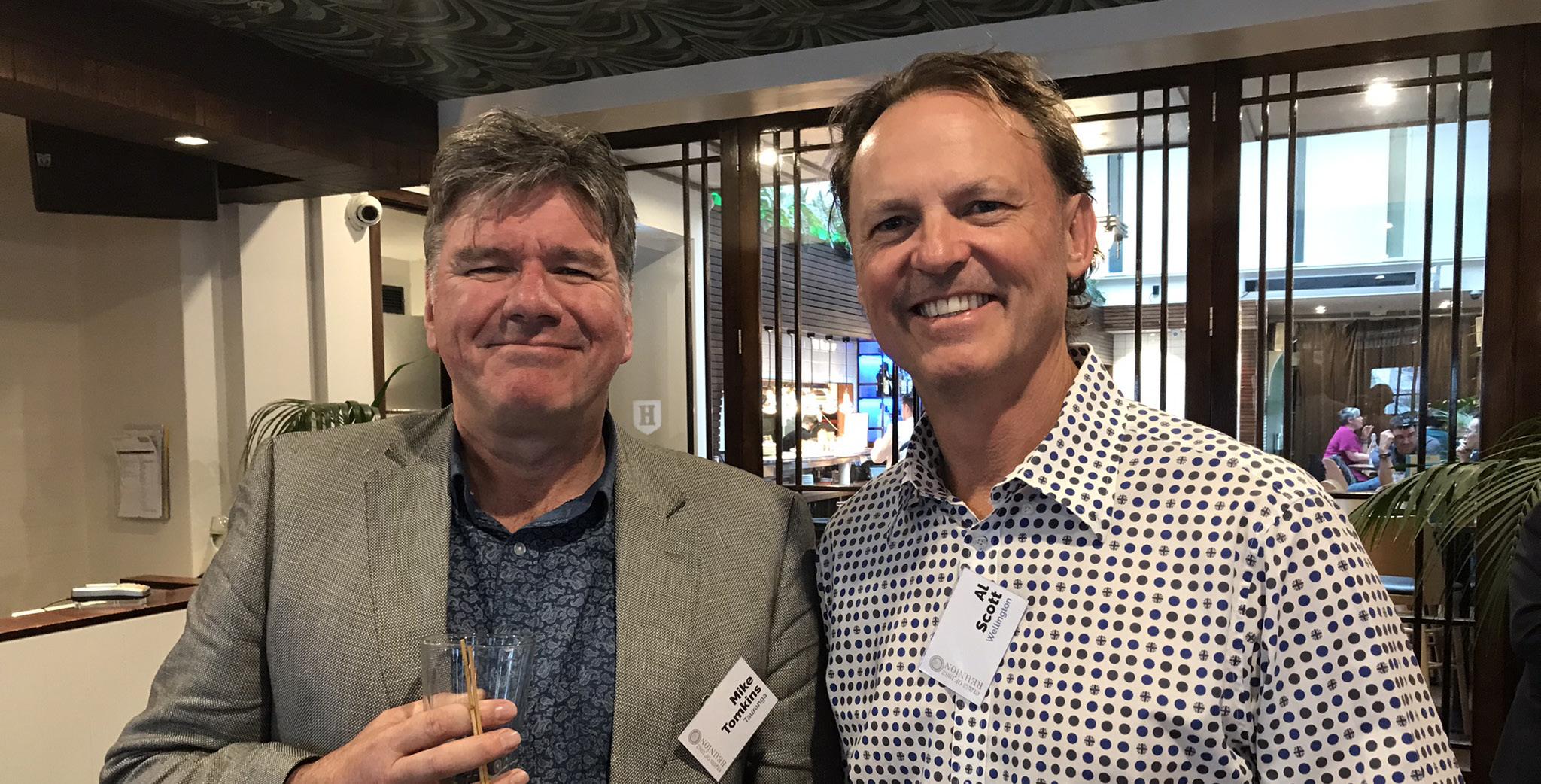
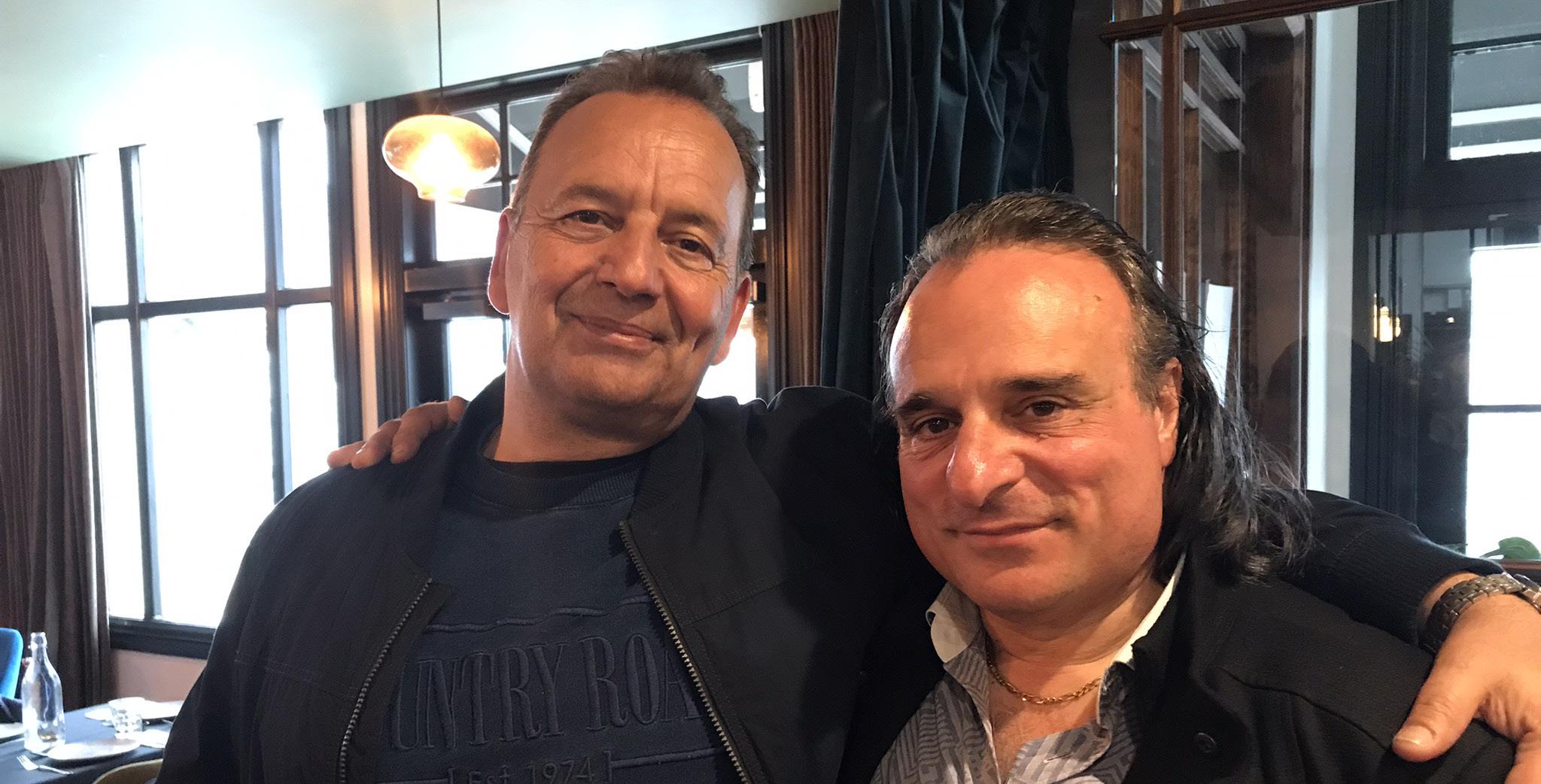
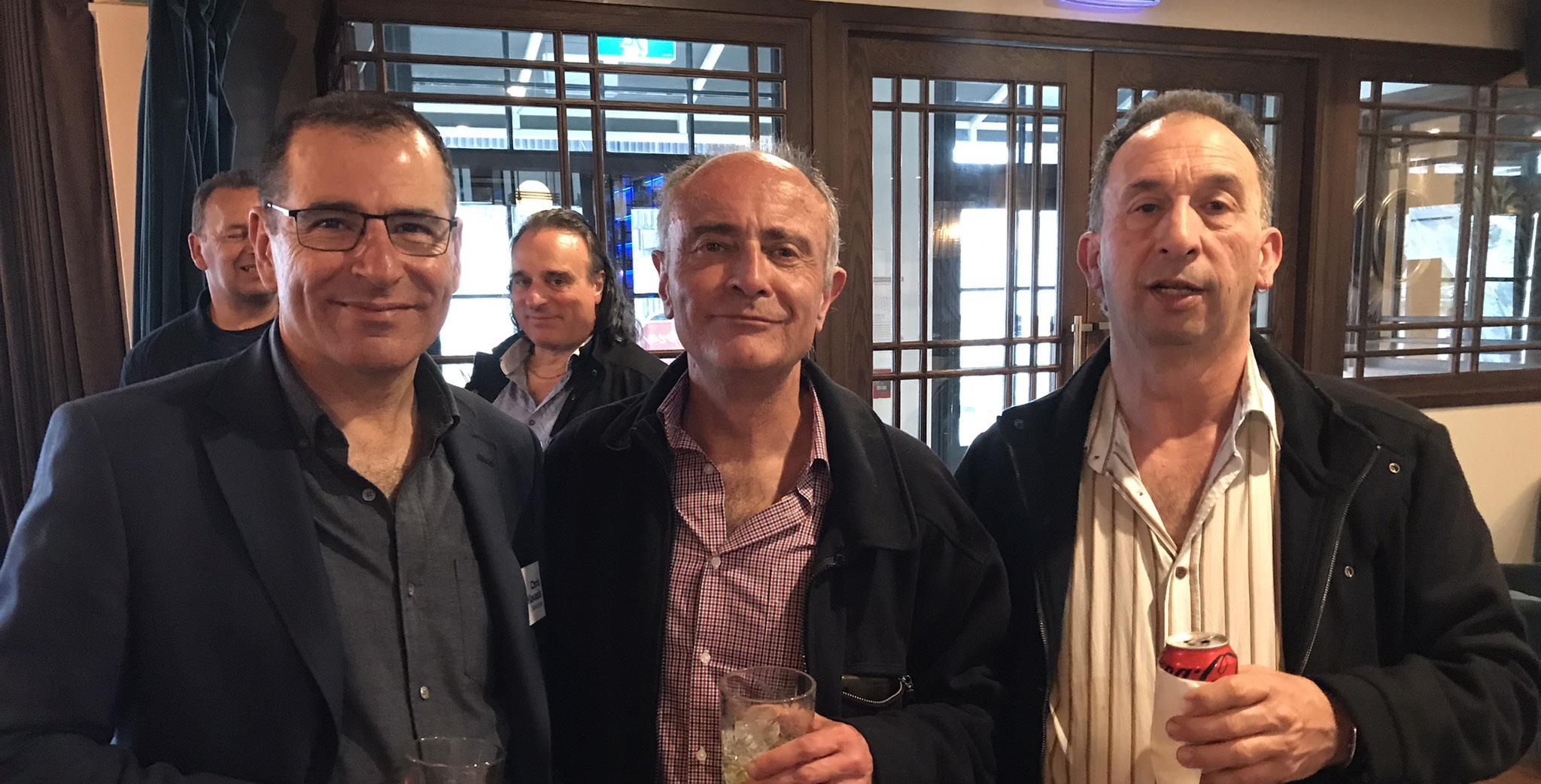

29 The LAMPSTAND, 2022
Back
Second
Front Row: John Roberts, Rahim Khan, Ted Thomas (WCOBA President), Glen Denham (Headmaster), John Ayers, Bruce Holmes, Mike Ward, David Lane
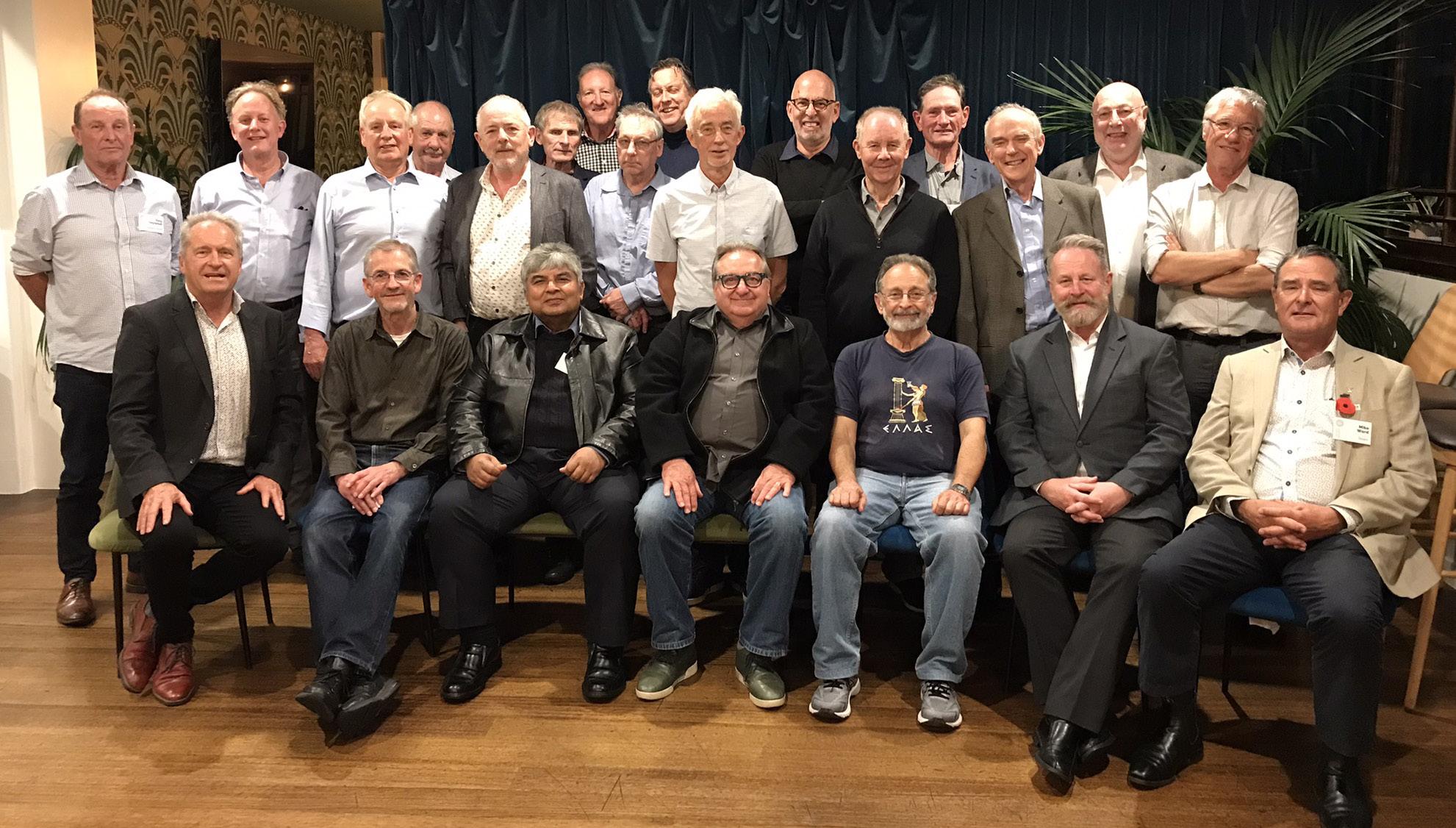
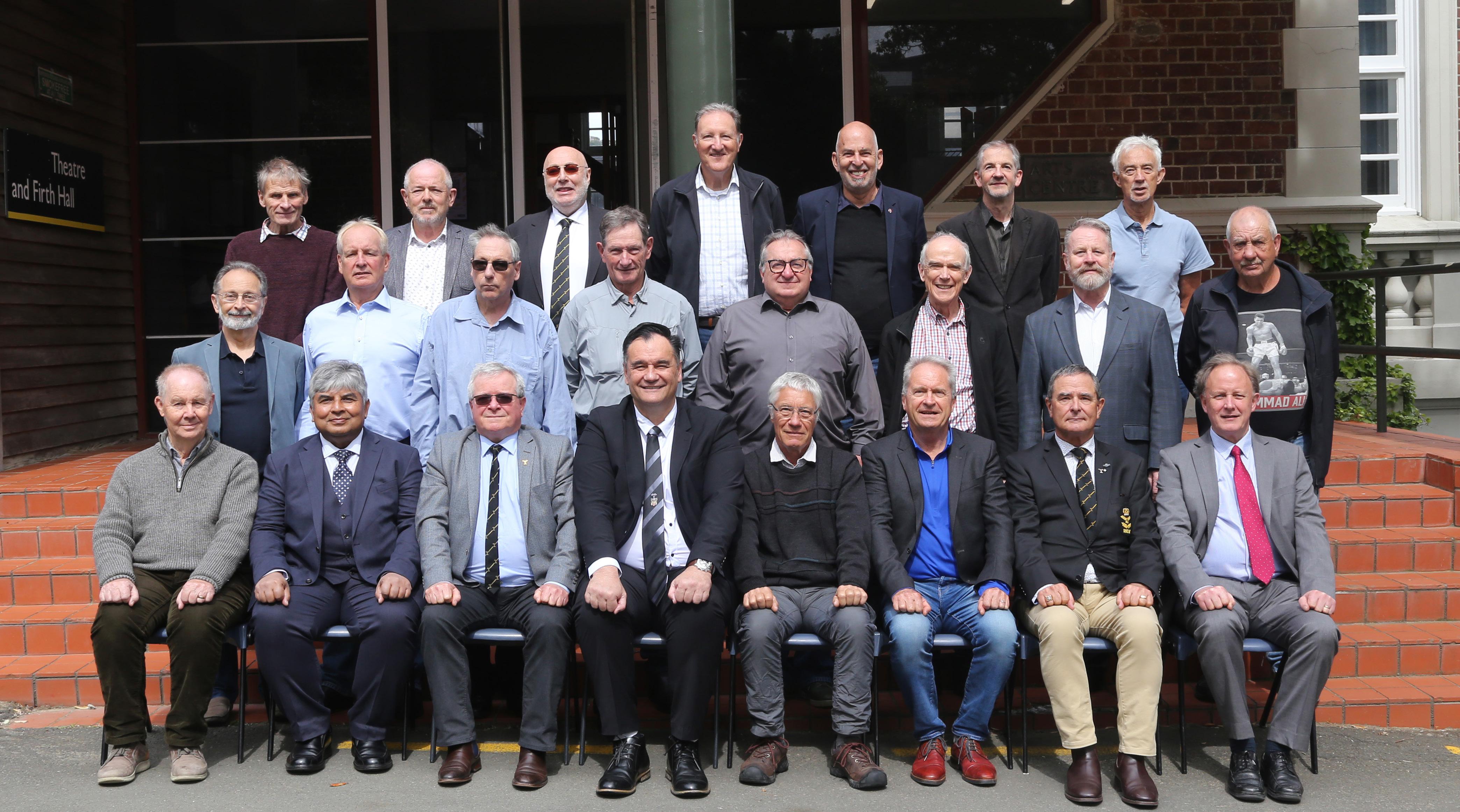
Absent for Photo: Tony Heywood, John Saker
Abig shout-out to Simon Kember, who two years ago, reached out to fellow classmates to encourage them to return to Wellington College for their 50-Years On Reunion. His tireless efforts came to fruition on 11 November 2022 when twenty three people were able to attend. Unfortunately, travel and accommodation constraints prevented a larger turnout for the occasion. However, those who returned, enjoyed reminiscing about school days during the tour of the school and later that evening over dinner, confirming the special bond the cohort have as classmates, even after 50 years.
30 The LAMPSTAND, 2022
Row: Rob Crawford, David Peirse, Adrian Shine, Simon Kember, Malcolm Rands, John Shimmins, Peter Tait
Row: Demetrius Christoforou, Doug Spoor, Tim Frost, John Shaw, Nick Tramoundanas, David Pointon, Richard Benge, Robert Best
[class-Of-1972]
The Class of 1962 gathered on 4 November 2022 to remember their school days at Wellington College and once again, to enjoy each other's company. The occasion began with Morning Tea with the Headmaster, followed by a visit to the new Hall, and then to the Archives. A lovely meal followed at The Wellington Club with the continuation of memories and reflections of each guest's life journey. Special thanks to Ian Fraser and John Benton who took the initiative to plan this reunion and also to those who travelled from off shore to join their fellow classmates.
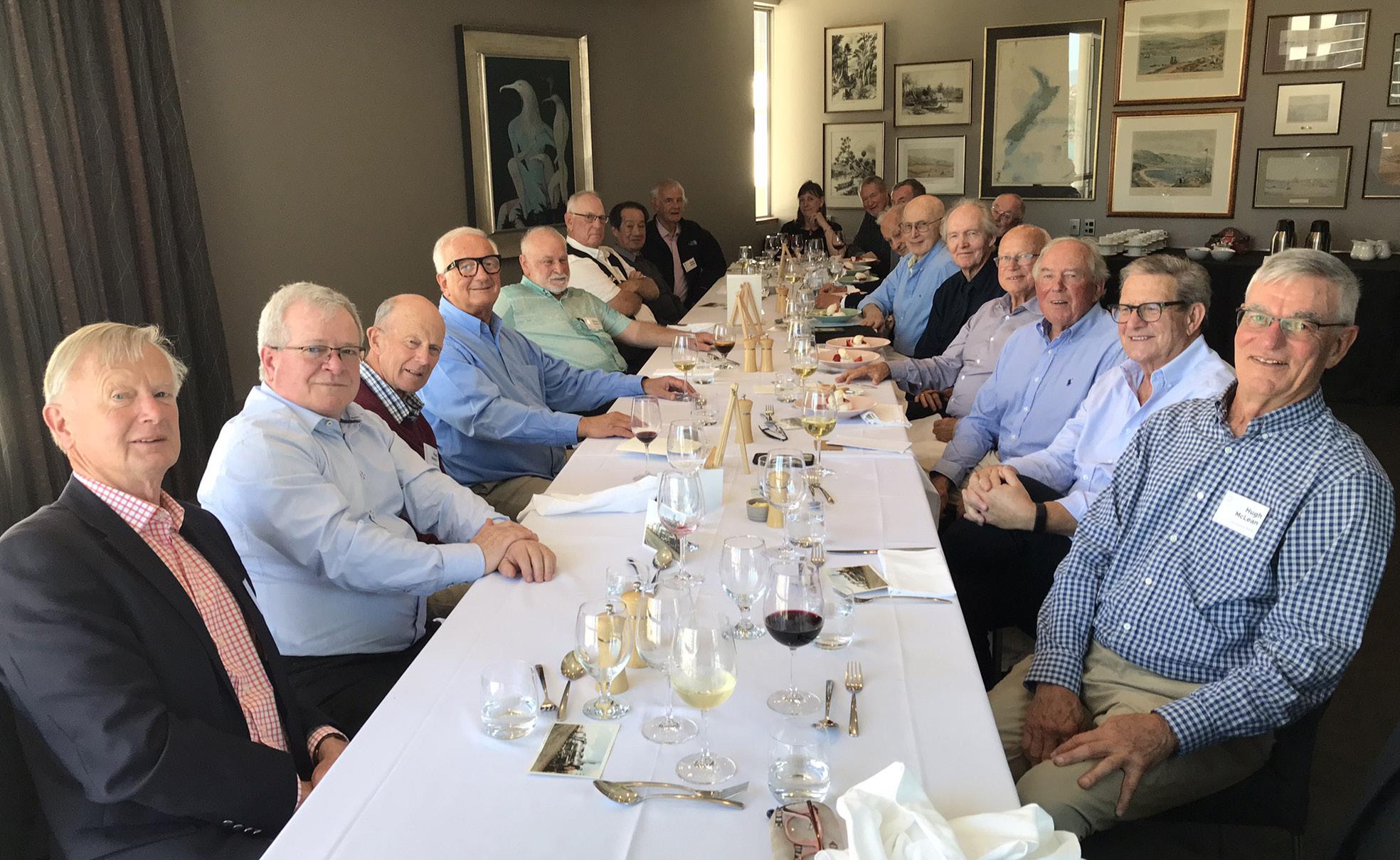

31 The LAMPSTAND, 2022
[class-Of-1962]
Back Row: John Gates, Stephen Freed, Ronald Mayes, Ian Burtt, Jeremy Cooper, Murray Higgs, John Benton, Hugh Mclean, Rob Cable, Doug Congalton, Steve Porter
Front Row: Rodney Mulholland, George Rizsko, Ray Poy, Roger Booth, Glen Denham (Headmaster), Ian Fraser, Phil Salt, Rodney Mulholland, Bevan de Berry, Ted Thomas (WCOBA President)
Absent for Photo: Paul Harper, Chris Roberts
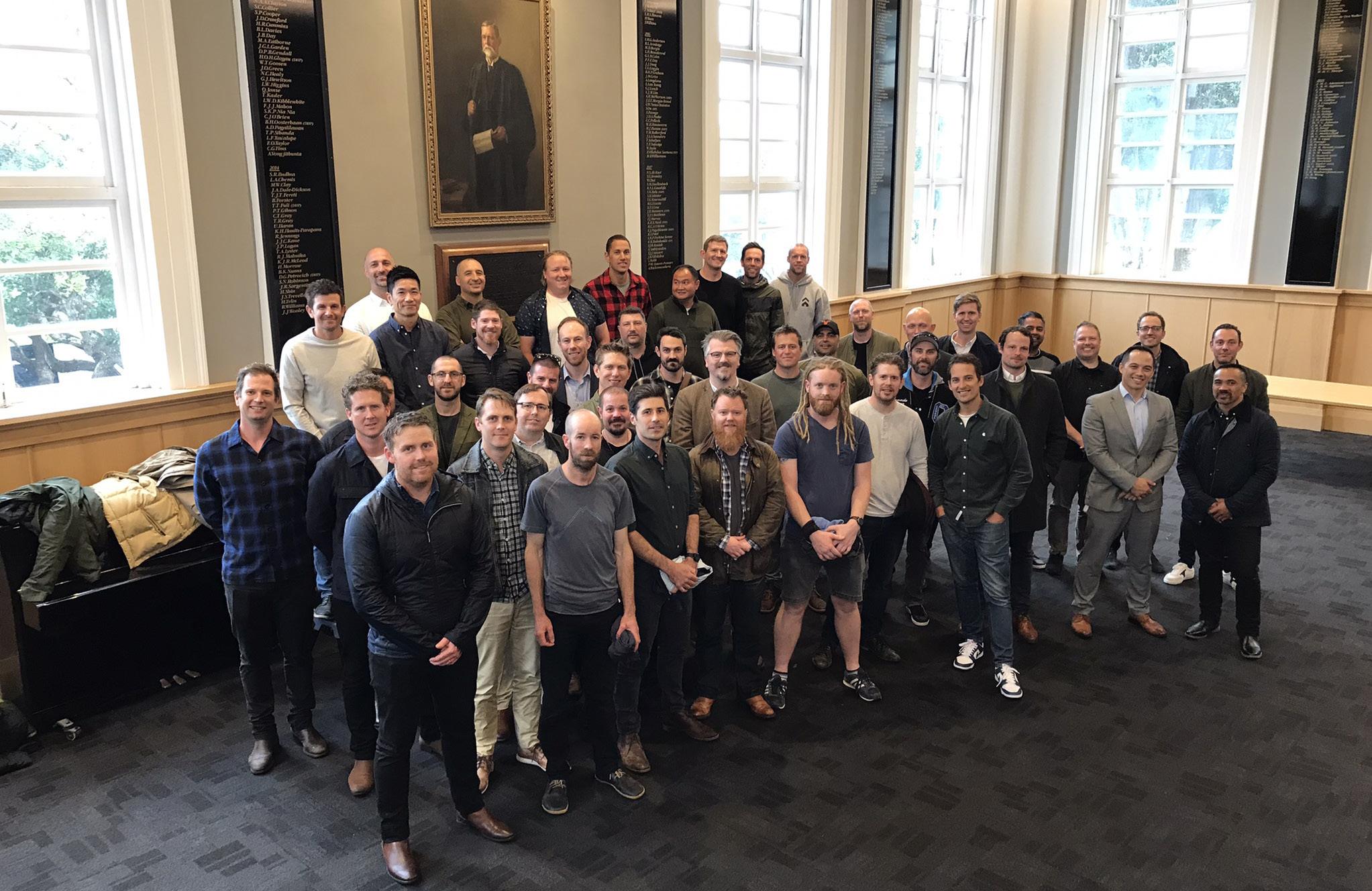
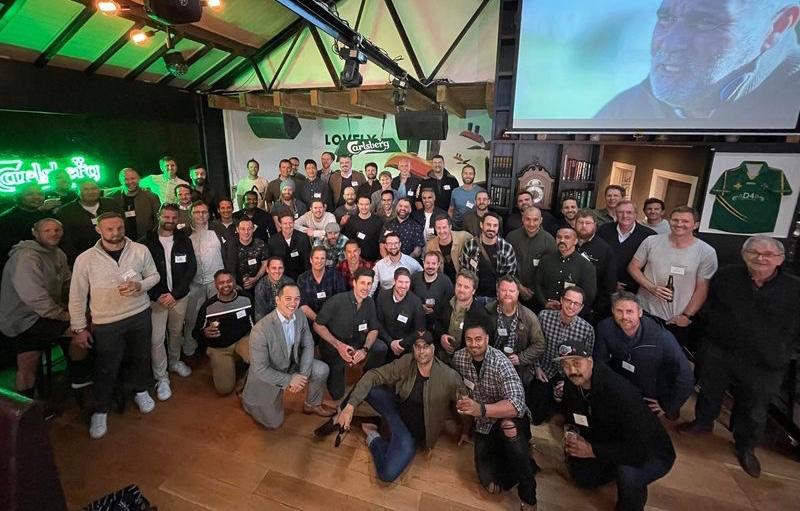
32 The LAMPSTAND, 2022 [class-Of-2002]
On 11 November 2022, the Class of 2002 celebrated their 20th year-on Reunion, with seventy-six classmates in attendance. Appreciation is especially given to Peter Halsted and Sam Forward who undertook the organisation of the gathering. Classmates began the day by playing a round of golf, followed by a tour of the College, before meeting at a CBD establishment for a long night of reconnecting, reminiscing and a very vocal rendition of Forty Years On. The cohort were joined by Roger Moses and Rob Anderson.
A PERSONAL REFLECTION ON THE MOTTO
Lumen accipe et imperti
Dr Robin Philipp
Receive the light and pass it on
Iexpect that for many of us, ‘What’s In A Motto?’, (Lampstand, December 2021, Issue # 10; p.12) will have pulled back the curtain of time and had us reflecting on the years gone by. Those College words (Lumen accepi et imperti - take the light and pass it on) truly do hold so much wisdom.
I for one, Robin Philipp [Class of 1960], (and residing in England), am often reminded of the motto and sitting through the many different gatherings in what was then the Assembly Hall. Instead of concentrating on whatever was going on, I not infrequently used to find myself absorbed in the wonder of the large stained glass window with its College seal and my attempts to interpret the Latin motto underneath it. It just did not seem possible that from the mix of subjects we were being taught in class, I could possibly become enlightened in any way such that something might take hold and then in time be of use to anyone else.
It was many years later before I realised that this light does come, that it dawns on us through a wide range of interacting factors, and that it can come in one or more of several forms. Moreover, I’ve come to appreciate more and more that for each of us, whatever that light turns out to be, it’s how we see and act on it that matters in life. ‘Accepi’ does after all translate as ‘receive’ and/or ‘accept’.
By way of saying thank you to Wellington College for what you helped to instil in me and in the hope it might resonate with others who have also benefited from their College years, I’d like to express it this way:
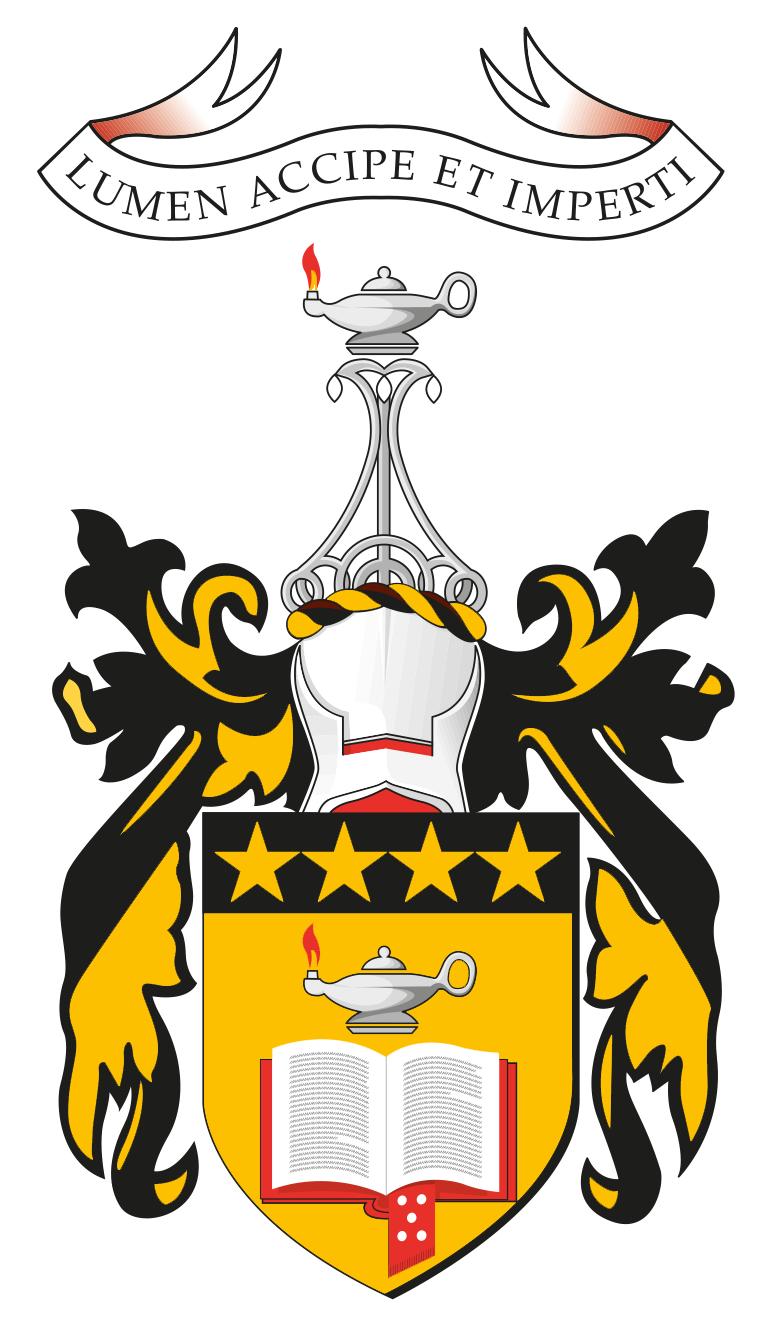
FOSTERING VISION
We are taught and learn from the experience of others to look for ourselves and examine what’s there, to see what’s being shown and from the seeds
being sown to think for ourselves, to mean what we say and say what we mean, become better tuned, to hear what is said and see what can be done, to take part in what happens within and around us, to care about others and think of their needs;
We are taught and learn with our eyes and our ears, to then in our thoughts and our deeds, read and study, explore and examine, research and inquire, audit, critique and review
what we have done, and in judging, broaden our outlook and deepen our drive;
As it is both within our work and without that others to us have given their trust, we must for them and to better ourselves, foster our vision and open our minds, keep abreast and aware and continue to learn, to show that we do listen; we can and will help and that we continue to care.
After College, Robin had a year at Victoria University, Wellington, before studying medicine at Otago University. He then worked back in Wellington in general medicine and paediatrics for four-and-ahalf-years years before, supported by a Department of Health Travelling and Study Bursary, he ventured forth to the United Kingdom. There, in Bristol and Dundee, he focused on preventive medicine. It led to a Consultant Senior Lectureship in Public Health Medicine and Occupational Health, and 23 years in the University of Bristol. His research and clinical interests in the university focused on health risks associated with environmental pollution, health education, and the assessment of emotional wellbeing needs. At the request of the W.H.O., it included establishing and directing a WHO Collaborating Centre for Environmental Health Promotion and Ecology.
Associated with his wish to take on more clinical work, Robin then transferred to the Bristol Royal Infirmary for a further 22 years and as one of their two Consultant Occupational Physicians. The opportunities in this post allowed him to continue his WHO collaboration and, together with The Nuffield Trust and the Royal Society for Public Health, to help develop and shape, particularly in medical education, the renaissance of interest in roles for the arts in health and wellbeing.
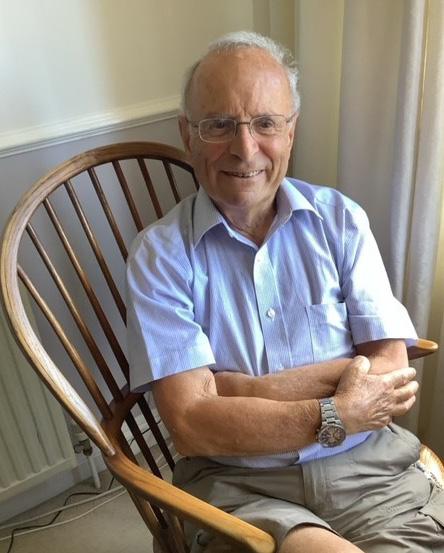
A personal highlight with the arts was his appointment in 2005 as poet laureate for the Society of Occupational Medicine's Golden Jubilee celebrations. An earlier version of the accompanying poem was printed in the conference dinner menu!
Outside of work, Robin has continued his long-standing sculpture and poetry interests. Back in both 1971 and 1972 he was a finalist in the first two, New Zealand-wide Mansells contemporary sculpture competitions, and in the UK, he co-founded Lapidus, (Literary Arts in Personal Development), and was a member of the Research Committee of NAPT, the USA-based National Association of Poetry Therapy.
For many years, Robin was a keen sculler, swimmer and jogger, interests he still follows, and he is happily married to Fiona. Although Robin has nowadays retired from clinical work, he retains an honorary consultant post in the BRI and from which to continue his writing interests.
Covid has unfortunately restricted his opportunities for trips back home. Nevertheless, his links remain very strong through the Philipp Family Foundation, (PFF), a charitable trust he founded in 2006, together with two Wellingtonbased friends, and which, thanks to remote access, he chairs. Its aim is to support the public health of New Zealanders. He has family in Wellington, Auckland and Nelson.
33 The LAMPSTAND, 2022
This is Gil Roper’s [Head Prefect, 1961] third publication relating to Tawa. He was motivated to write this new book: Redwood Bush, Tawa after reading how Redwood Bush was saved when the Redwood subdivision began making inroads into the native bush for housing development in the 1970s. Many Tawa residents objected seeing pristine
OLD BOYS' IN
PRINT
Summer Reading
native bush destroyed. Ultimately, the Tawa Borough Council secured a loan from The Treasury to purchase the area as a reserve. Today it’s an invaluable recreational resource of mature lowland native bush.
The colour-illustrated, 160-page, A4 size book features:
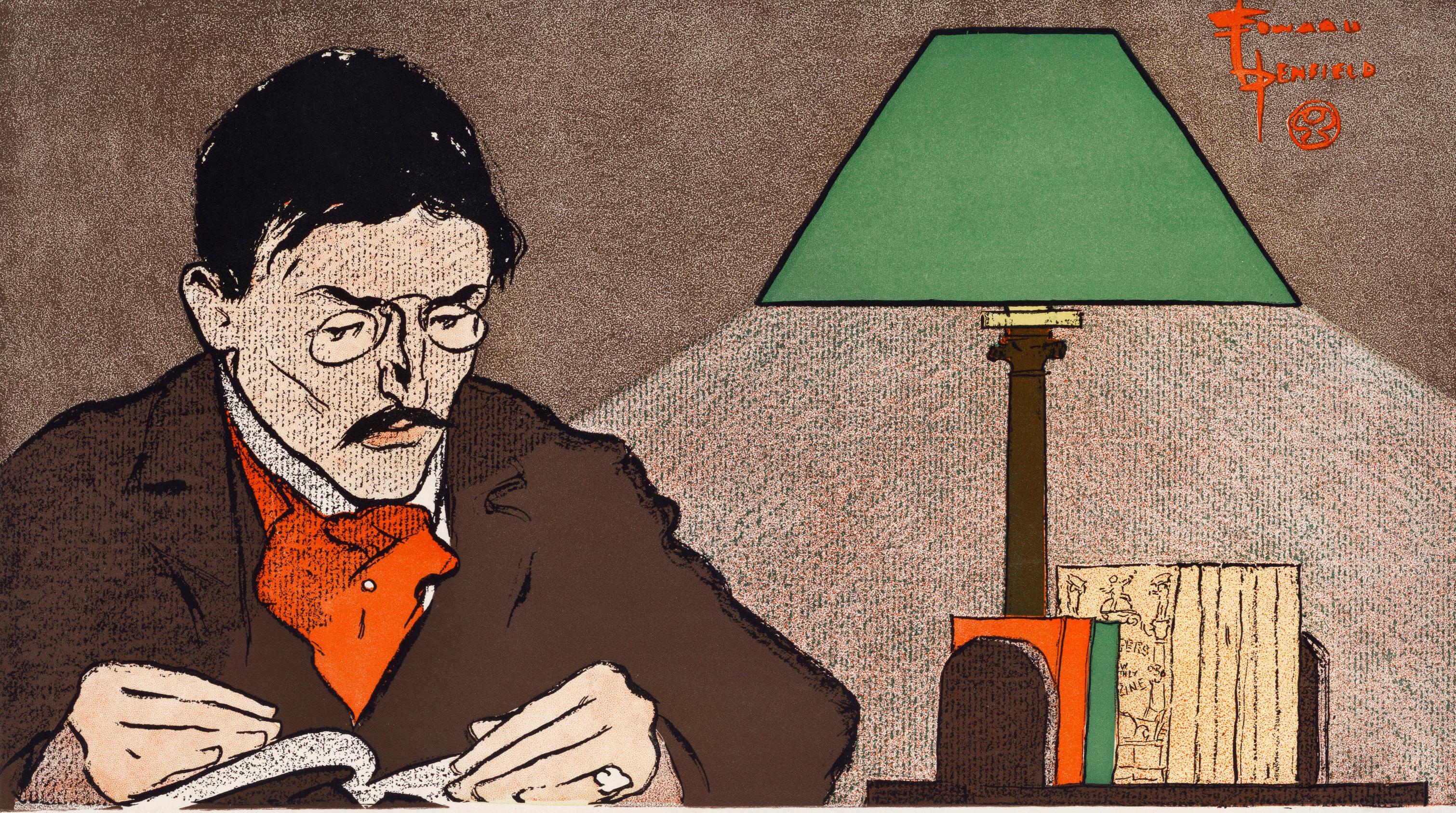
• native bush in Tawa at the time of pioneer settlement
• some history of the Redwood subdivision
• residents of Tawa protest and action is taken
• recollections by residents of changes in Redwood Bush over time
• walking Redwood Bush in the present day
• visual details of the native flora and birds in Redwood Bush and how these have changed
• lizard studies, lichens and fungi recorded in Redwood Bush
• pest control and the resurgence of the flora and fauna
• information on a new signed botanical walk in Redwood Bush
Missing from the 2021 Lampstand was the promotion for Dr Alastair MacKenzie’s PhD, Lt Col (Ret.) [Class of 1965] new book, Pilgrim Days, and which he kindly sent us a copy for our Old Boy Authors’ Library.
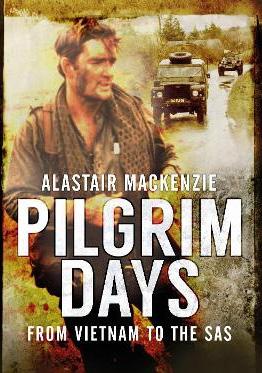
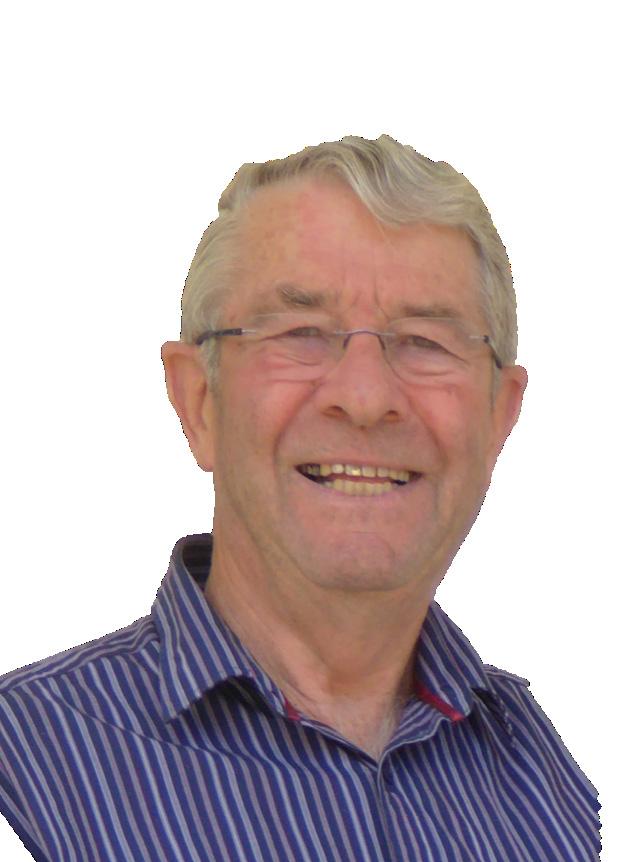
We are the Pilgrims, master; we shall go, Always a little further; it may be, Beyond that last blue mountain barred with snow.
If there was ever anyone who went a little further, a little beyond, it was Alastair MacKenzie. In a career spanning 30 years, Alastair served uniquely with the New Zealand Army in Vietnam, the British Parachute Regiment, the British Special Air Service (SAS), the South African Defense Force's famed ParaBats, the Sultan of Oman's Special Forces, and a host of private security agencies and defense contractors.
This new publication is sponsored by the Friends of Tawa Bush Reserves (FOTBR). See: https://tawabush.org.nz

Please place orders with Denis Rogerson, Friends of Tawa Bush Reserves: denisrogerson@gmail.com Ideally, payment can be made by direct credit into FOTBR’s bank account, using ‘Surname and initials’ as Reference and ‘Redwood Bk’ in Details: 03 – 1534 – 0043966 – 25
For those who live beyond Wellington, books can be ordered but will incur an extra few dollars postage cost. When placing an order with Denis, please indicate the address to which the book is to be sent. Books can also be purchased directly from ‘Tawa Books and Post Shop, Main Road, Tawa’ for $30 (cash) or ordered by email from Denis Rogerson for $30 per copy.
Please note: This book is published by FOTBR which is a non-profit organisation and seeks to defray the cost of printing through the sales of the book.
Alastair lived the soldier's life to the full as he journeyed ‘the Golden Road to Samarkand’. This extraordinary new work from the author of Special Force: The Untold Story of 22nd Special Air Service Regiment (SAS) vividly documents, in a detail that stuns, the experience of infantry combat in Vietnam, life with the Paras, the tempo of selection for UK Special Forces, covert SAS operations in South Armagh and SAS Counter Terrorist training on the UK mainland, vehicle-mounted Pathfinder Brigade insertions into Angola, and maritime counter-terrorism work in Oman.
Industry Review: "Nicely illustrated with a special section of photographs, "Pilgrim Days: From Vietnam to the SAS" is an impressively written, exceptionally informative, and inherently riveting read that is unreservedly recommended for both community and academic library Military History & Biography collections.”Midwest Book Review
34 The LAMPSTAND, 2022
Six years to create 'the' book on NZ's Basketball history
For six years Roger Booth (Deputy Head Prefect, Class of 1962) has given most of his time to creating an authoritative history of Basketball in New Zealand. History of New Zealand Basketball is hitting book shop shelves after a series of nationwide launches/reunions throughout June and July.
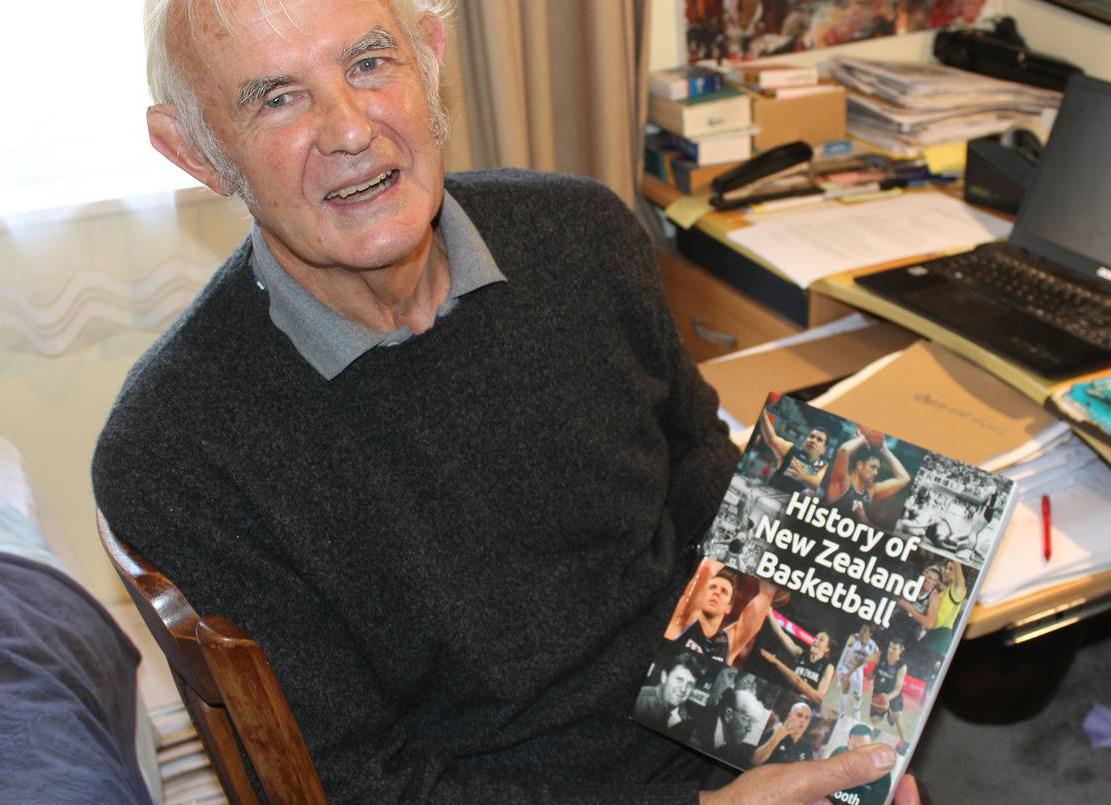
Roger's love of the game started when he was in the third form at Wellington College in 1958.
As part of Roger’s research, he met with former national captain and Wellington College’s new Headmaster, Glen Denham. Roger said, Glen was the most incredible person I've ever interviewed. I could ask him about any player he had been associated with and he could tell me everything about them from exactly what they did on the court, what they were like as an individual, to their background.
To order a copy of the book, which is $60.00, email Roger via
chrisrog@outlook.com NZ HERALD
Barry Johns [Class of 1959) has recently written a paperback book titled Random
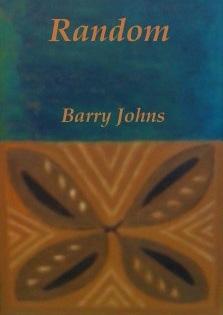
It is a moving and sensitive compilation which ties together certain life experiences and events in a personal history. Topics included are: Samoan Diary, Sabbatical (France), Jem (a special dog), The Making of a Barrel of Wine, recent writings, my painting and personal philosophy. The book has 218 pages and includes 31 photo and painting images. The Polynesian image on the front cover is taken from a painting by Barry.
The price for this special book is $35.00 + postage if any ($5.60 within NZ) for direct sales. Orders by email to bj@oogywawa.co.nz
The Wellington Alternate is the debut novel of author Oliver Dace [Mark Paguntalan, Class of 2009]. Born in the Philippines, Oliver now resides in Wellington, which serves as a forefront location in many of his stories. Oliver’s writing style is firmly rooted in magical realism, the imagery he paints with words describe worlds that are both familiar and fantastical and woven together seamlessly. Stepping into one of Oliver’s stories is akin to entering a new dimension and so it is very befitting that his first novel is titled The Wellington Alternate.
The Wellington Alternate tells the story of eighteen-year-old Merinette Dace Nadean who comes from a magical family who are tasked with maintaining a centuries-old tradition of controlling various surreal entities that live in Wellington. These entities—called Fiction—can only be seen by people with Merinette’s powers yet Merinette is more interested in being an academic than a glorified maintenance worker, a life she perceives as a chore.
Originating from an airplane seat in August 2014, The Wellington Alternate is a story involving floating stars, family, friendship and the extraordinary ordinary.
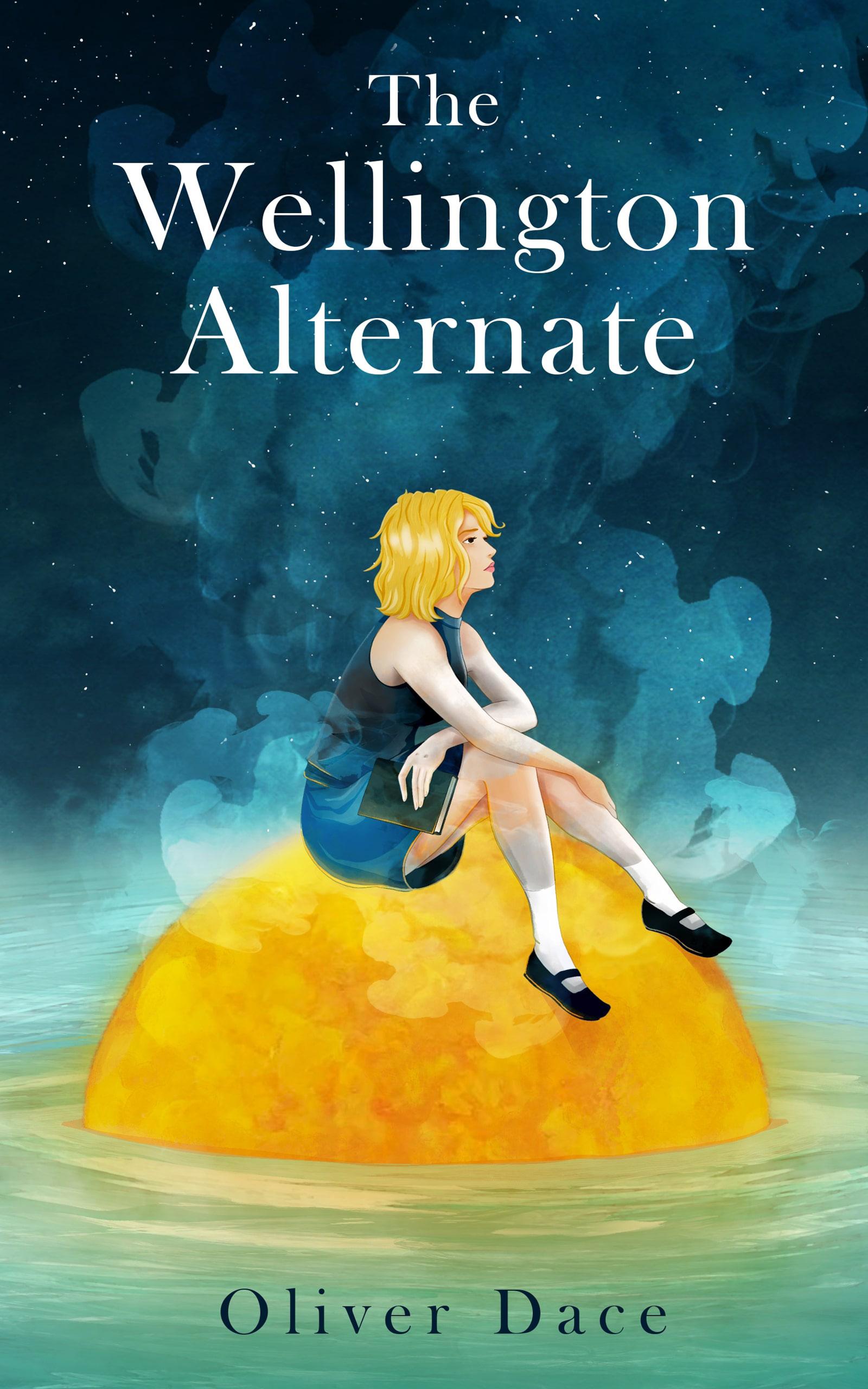
Oliver attributes his fascination with Horror and Magical Realism as being what led him to develop an addiction to the taste of words. Oliver currently works, is studying to be a teacher at university, and enjoys pondering philosophical questions.
To learn more about Oliver Dace and buy a copy, visit his official website: writeoliverdace.com
35 The LAMPSTAND, 2022
Cricket Wellington and Wellington College Connection
During the Lockdown In April, 2020, Cricket Wellington (CW) approached Wellington College about a partnership that would see a Cricket Training Facility constructed on the school grounds. This facility would be used by both CW and Wellington College students.
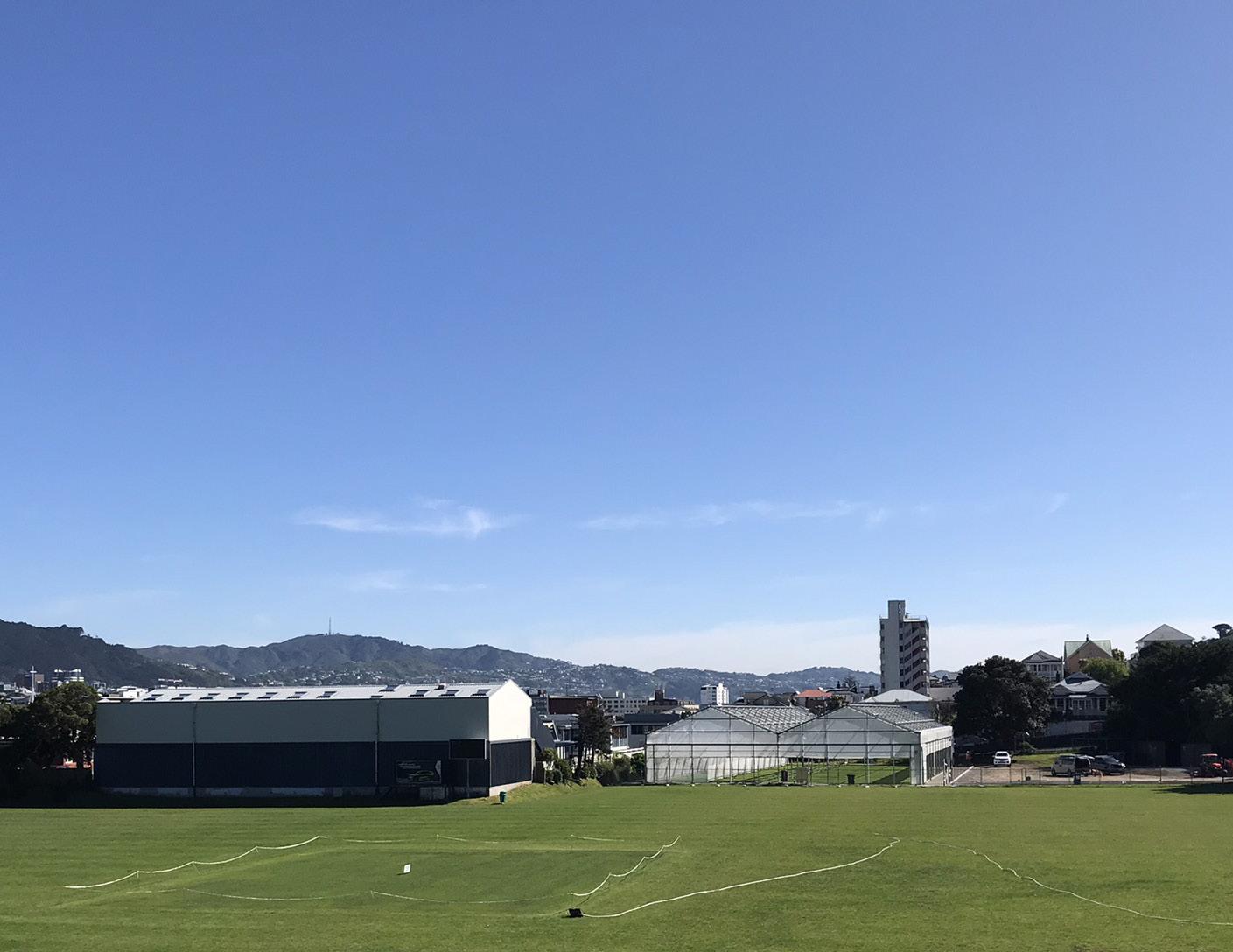
The school received a first draft document that captured the key elements of the proposed facilities partnership between CW and Wellington College in August 2020. The initial proposal was for a marque to be erected on the site of the school’s practice nets. Discussions included the WC Cricket Club who were keen to ensure our cricketers had access to good practice wickets.
As discussions developed, Wellington College proposed to include artificial
practice wickets into the facility. And then the concept of a marque developed into a Cravo retractable roof system. This is the same system as used at Blake Park in Mount Maunganui.
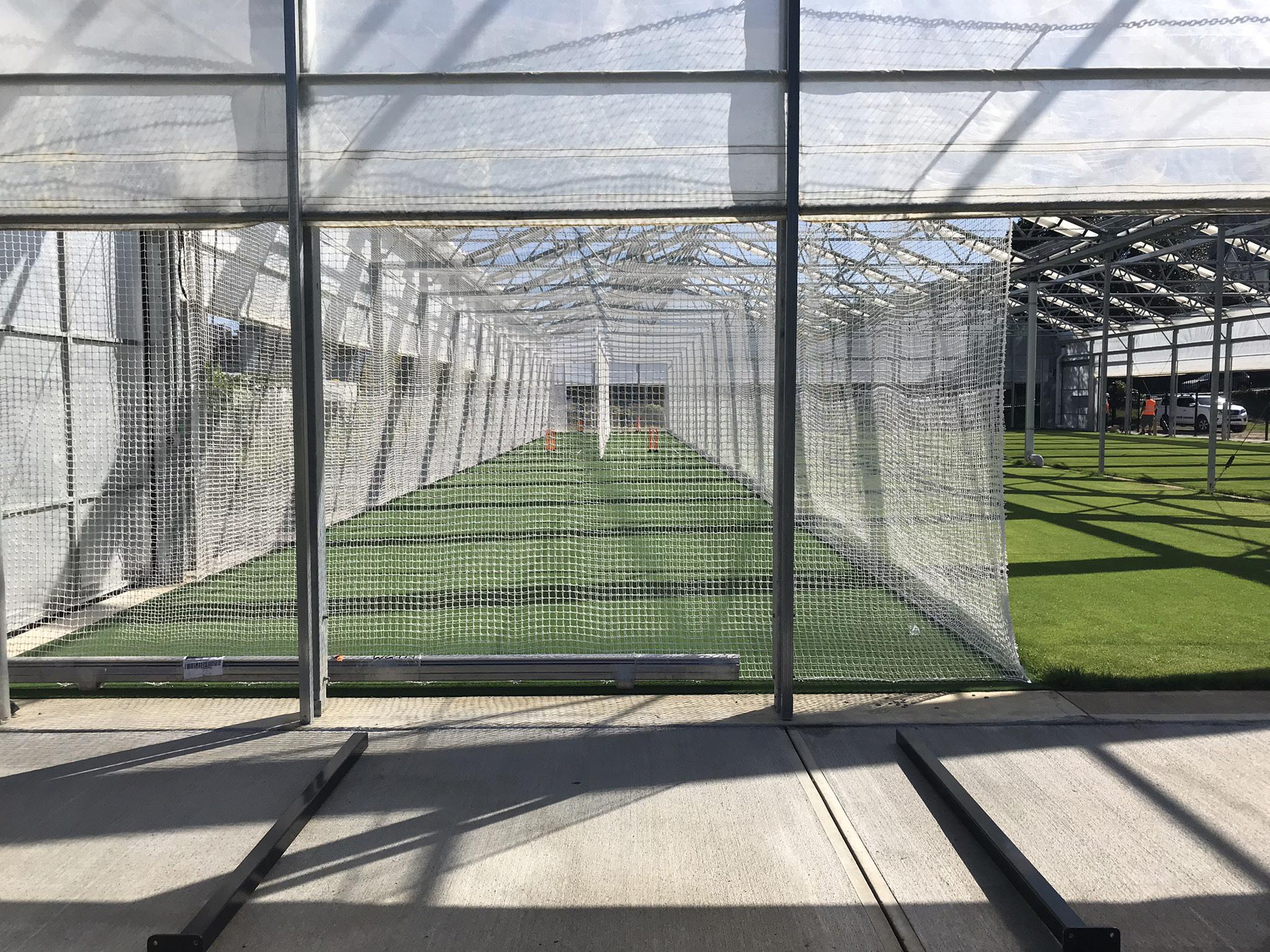
CW received funding for the construction of what is now called the Cricket Talent Centre from NZ Cricket. There will be 20 grass and four artificial wickets included in the facility. Wellington College Cricket will have full use of the artificial wickets and will have scheduled use of the grass wickets. The heads of Agreement was signed in May 2021 and the Deed of License signed in March 2022.
It is envisaged that CW will use the facility in winter as its grass-training base for the Firebirds and Blaze and winter training squads. In summer, it will be a supplementary training base to the Basin
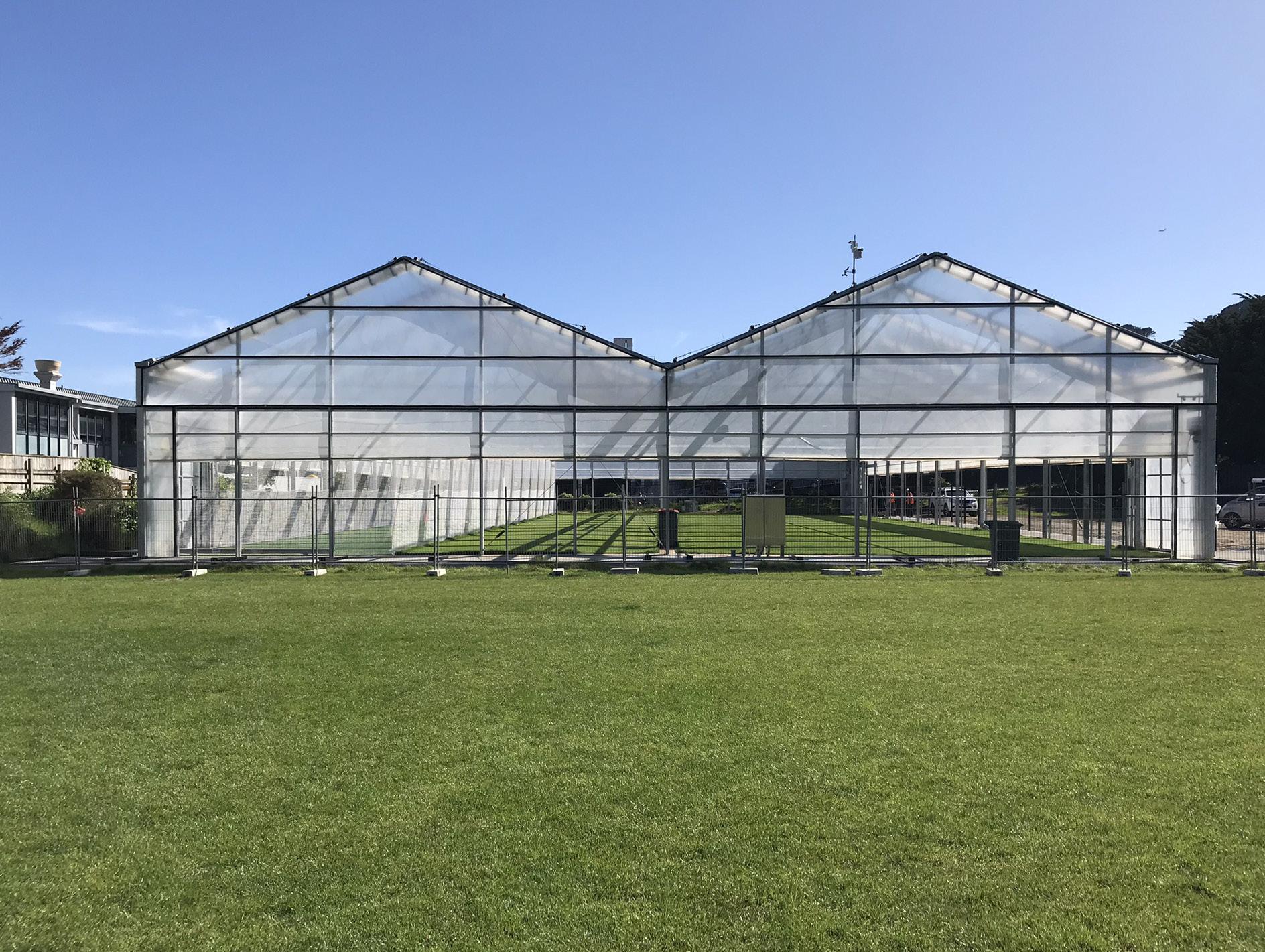
Reserve including use by the Wellington U19 Men and Women's teams, and wider training squads.
This is a significant partnership between CW and Wellington College, one that we hope will see greater sharing of resources and growth and development opportunities for Wellington College cricketers.
The official opening date has been mooted as 18 February, 2023, as this coincides with a strong presence from NZC in Wellington and an international fixture (NZ will be hosting India in a T20 at Sky Stadium).
Cam Harland Chairman Wellington College Board of Trustees
36 The LAMPSTAND, 2022
Meet-Ups
Sarasota: Beaches and Beyond
; Darrin Wilkinson [Class of 1982] recently met up in Sarasota with fellow Old Boy Floridians. (L-R): Darrin Wilkinson, Geoff Bridges [Class of 1965], and John Pether [Class of 1963]. They all look like they are living the dream and enjoying the Wellington College connection. Old Boys also living in the Florida State are most welcome at the next gathering – get in touch: oldboys@ wc.school.nz
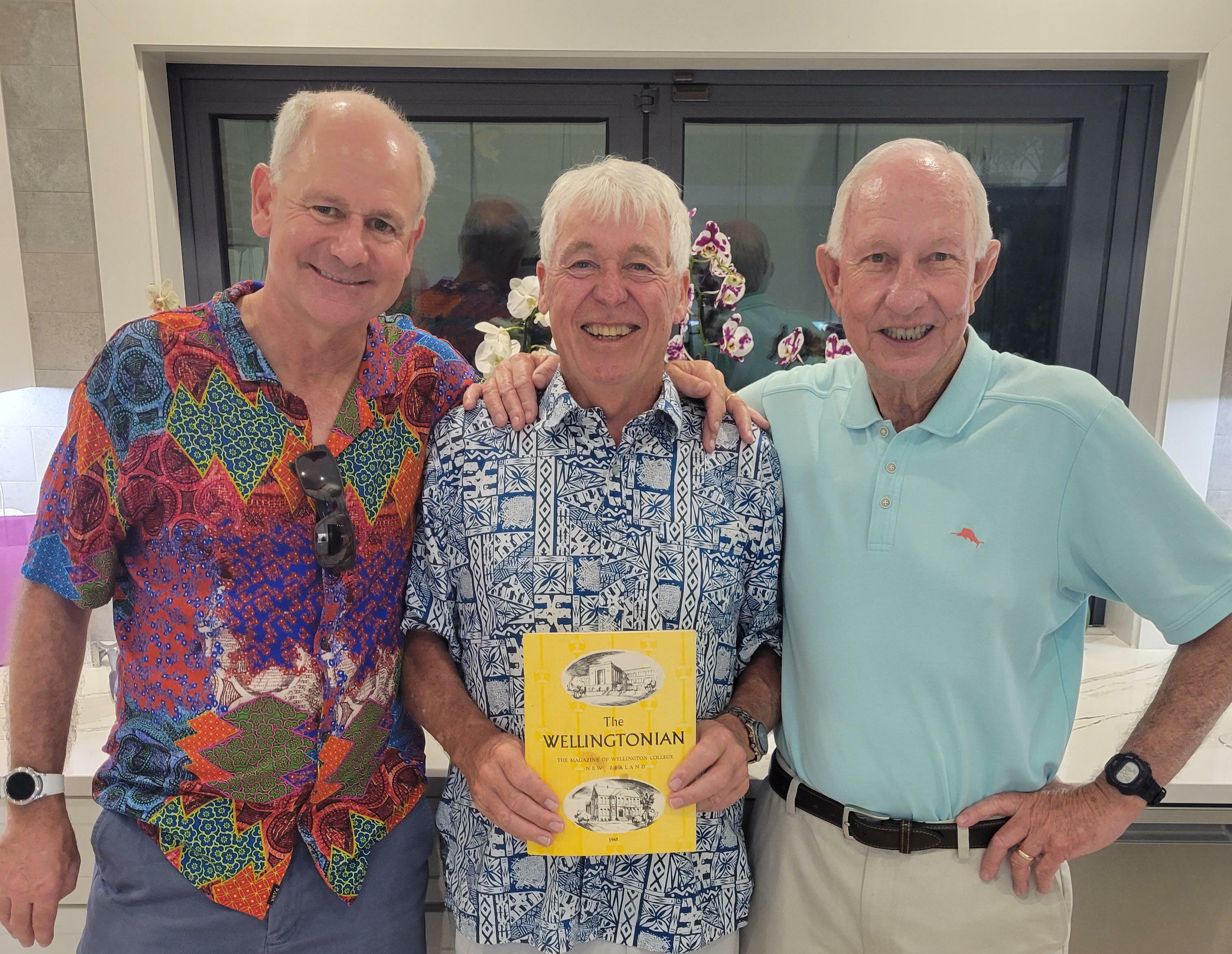
Birthday, buddies and buns
: Gathered together are eight Old Boys attending a morning tea to celebrate Roy Archibald’s (ex Firth House) 90th birthday.
Most of these Old Boys meet weekly at the Bethlehem Shores Retirement Village cafe to reminisce on past school days, current news and to solve world issues.
(L-R) David Cooke, Lynn Morrison, Blair Wingfield, Garry Mason, Nelson Crisp, Roy Archibald and Malcolm Magill. Behind the camera is Bruce Waddel.
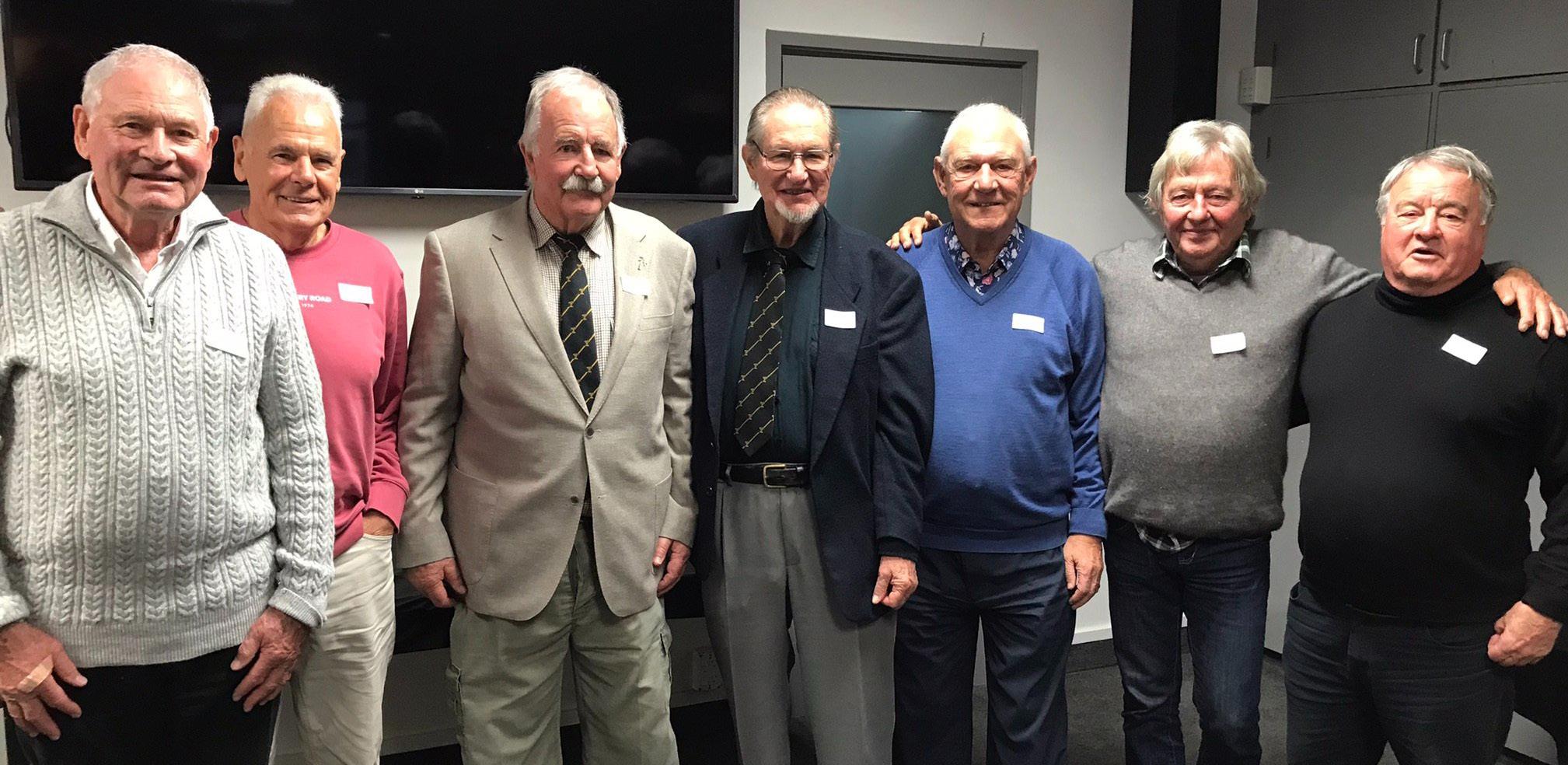
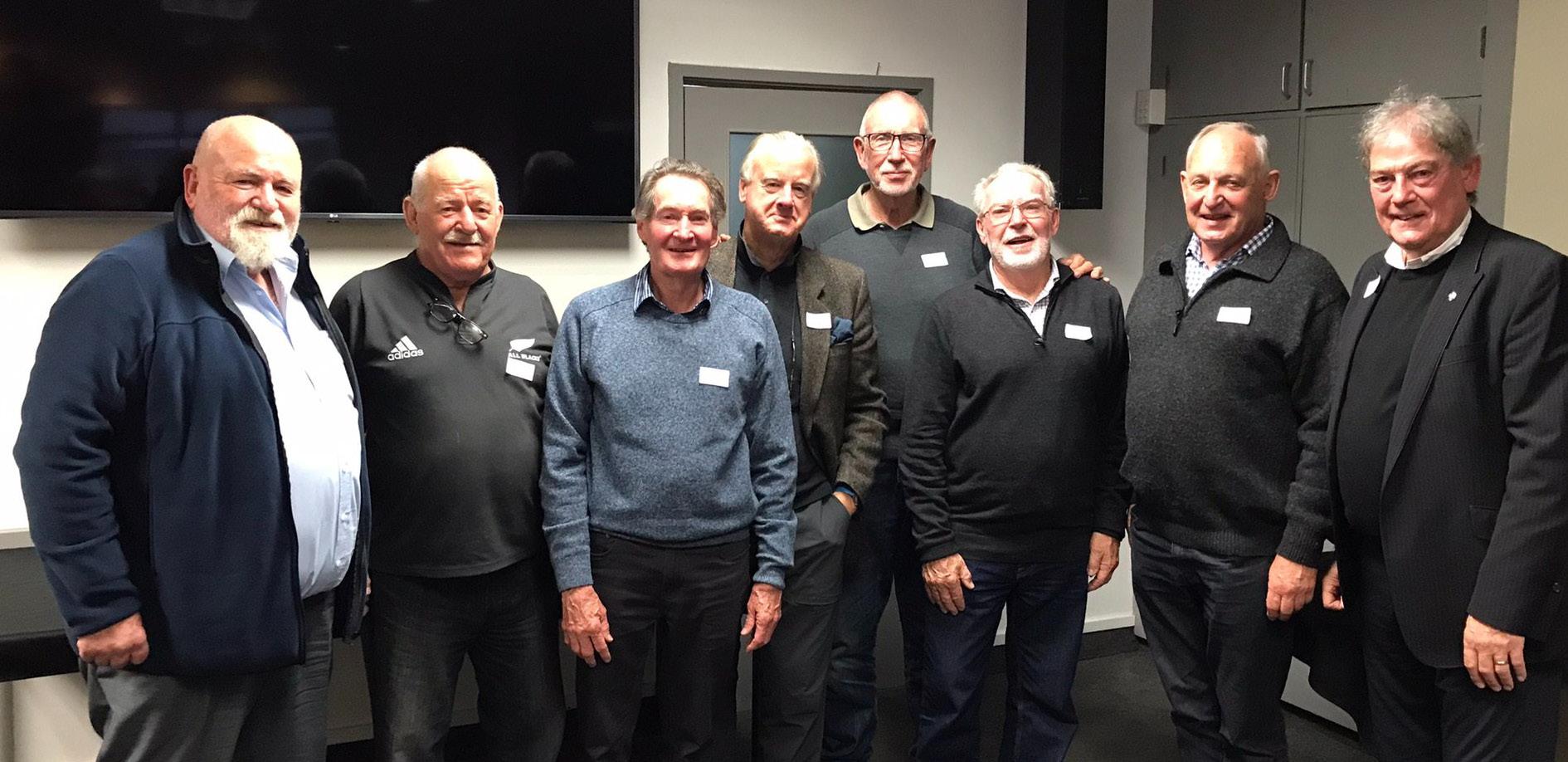
Classmates continue to connect
) Members of the 1956 6 Special Form Class met up recently over lunch, with partners to reminisce about their school days. Pictured are (L-R): Murray Selig, Pat Scott, Malcolm Woods, Susan Macdonald, Peter Thomson, Marie Woods, Bobby Selig, Dennis Lahman, Steve Phillips, Jill Phillips, Mary Stevens, John Stevens, Doreen L’Cruz, John Ross and Ross Macdonald.
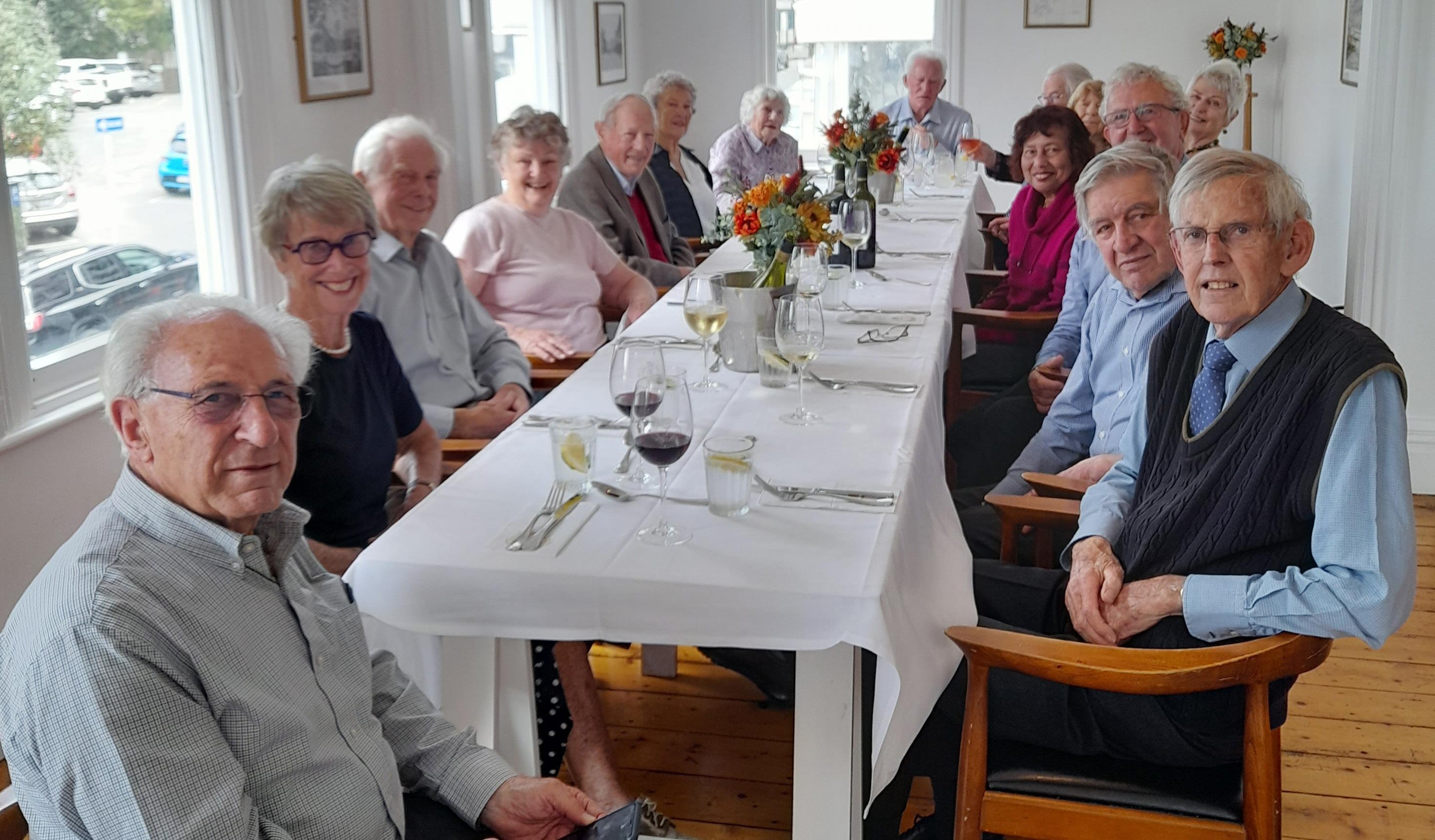
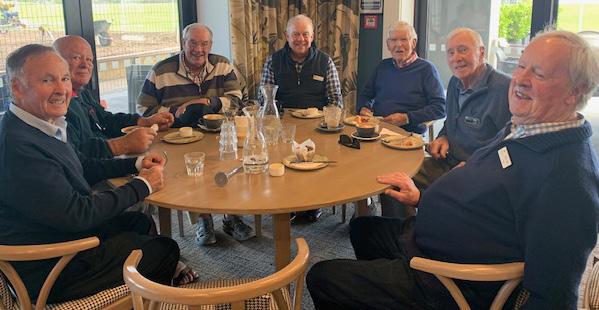
; Rugby,
Reunions
and Reminiscing: In conjunction with the Whanganui Tournament, players from two former 1st XVs gathered to remember their ‘Quad at Collegiate’. The 1962 team played Collegiate first up, winning 6-3. The game against Nelson in the final saw the exact same score, with a win to Wellington College. Four years later, the 1966 team played in the final against Collegiate and won 14-8 (They beat Christ’s 18-6 in the first game). Members from both teams enjoyed catching up and reminiscing on their rugby playing days and were vocal supporters at this year’s matches. Marvellous that 56 and 60 years on, the camaraderie remains just as much as their passion for their old school.
1962
(L-R):
37 The LAMPSTAND, 2022
1966 1st XV Team Members (L-R): Lloyd Powell, Wayne Carleton, Brett Windley, Richard Laurenson, Mark Oram, Dave Halliday, John Saunders and David Howman.
1st XV Team Members
John Myers, Rick Ronald, Richard Bramwell, Jeremy Cooper, Bruce Waddel, Clark Pollitt and Dave Heather.
NEWS AND STORIES FROM OUR OLD BOYS
Connections stay alive
Peter Papas [Class of 1984/85], Fotis Liolis [Class of 1984/85] and Konelio Ailao [Class of 1984] were members of the mighty Wellington College Senior A Basketball team of 1983-1984. In 1983, the team won the Wellington Competition and the Wanganui Invitation Tournament. They qualified for the Nationals which was held in Wellington.
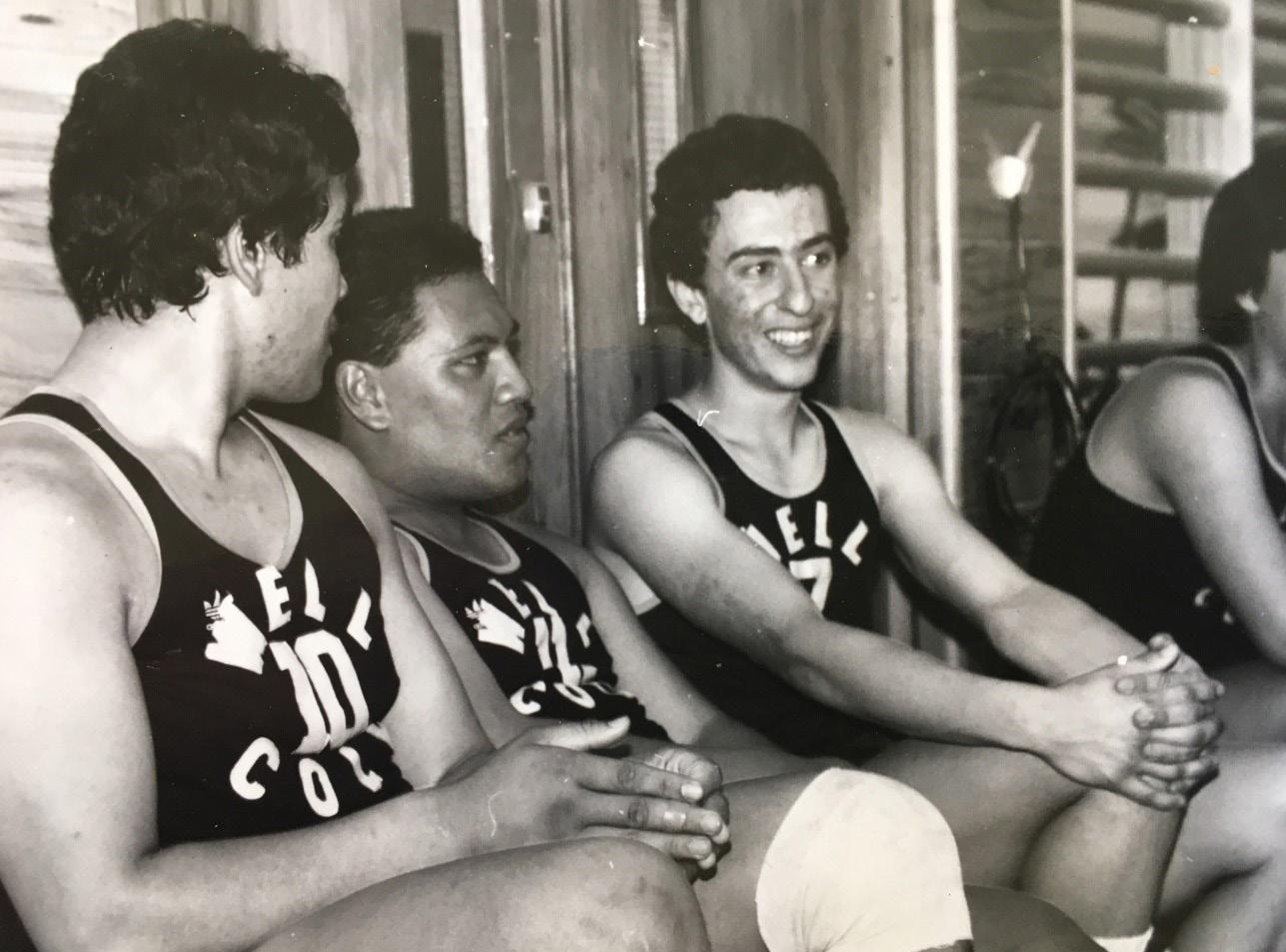
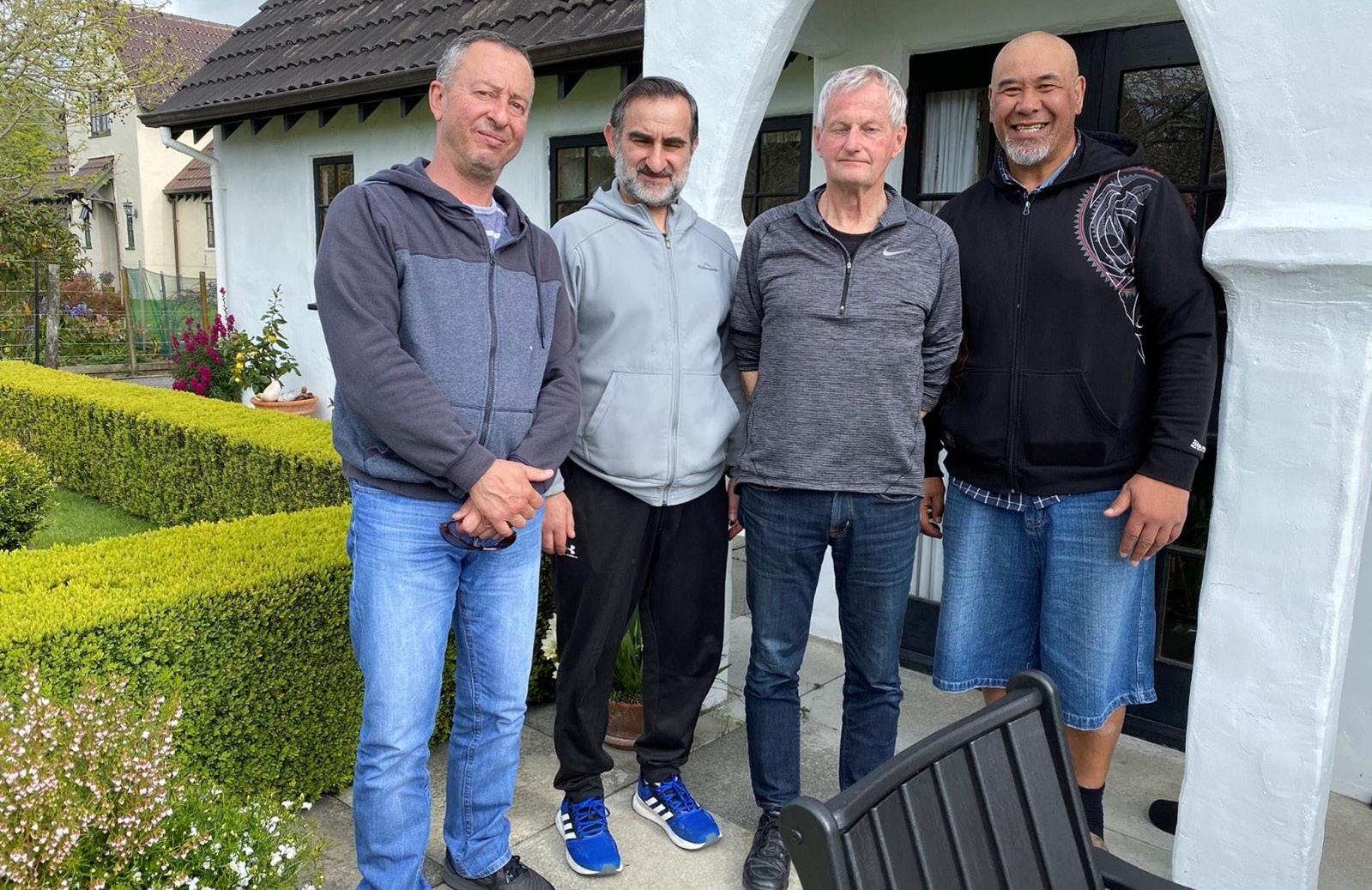
After qualifying through some tough pool play, the team beat Church College in the quarter-finals and Timaru Boys' High School in the semi-final. In the final, they faced Auckland's Kelston Boys' High School. This team included some amazing players (none of whom were at the school the previous year. Hmm?). The final was tense and close as Wellington College had a narrow one-point lead at half time. By full-time, we had lost by nine points but were commended for giving this super Kelston team a close game.
In 1984, the Wellington College team again won the Wellington competition and qualified for the Nationals (held in Christchurch), and were ranked number
1 in New Zealand. In the semis, the team beat Timaru Boys' High School, again, and faced Church College from Hamilton in the final. This team was stacked with talent, strangely with players who were not enrolled the previous year (Hmm, again?). Wellington College lost the final
and had to contend with being national runners-up, again. Still, it was an amazing couple of years with the Basketball team achieving national results that I believe have not been surpassed to this day. Come on the 2023 Senior A team, what are you waiting for?
Wellington College's Renouf Sports Centre Grand Opening, September 1984
( The 1984 Wellington College Senior Team is warmed up and ready to take on Rongotai College in a special invitation match to celebrate the opening of the new gym. Unfortunately for Rongotai College, the match wasn’t even close, and we ran away with the game by a margin of more than 30 points. Is that Vic Paulsen in the middle pretending to be one of the players?
The Wellington College team appreciated the commitment, wisdom, and mana of master coach, Victor Paulsen, who took them on an amazing journey, culminating in back-toback national runner-up placings in 1983-1984.
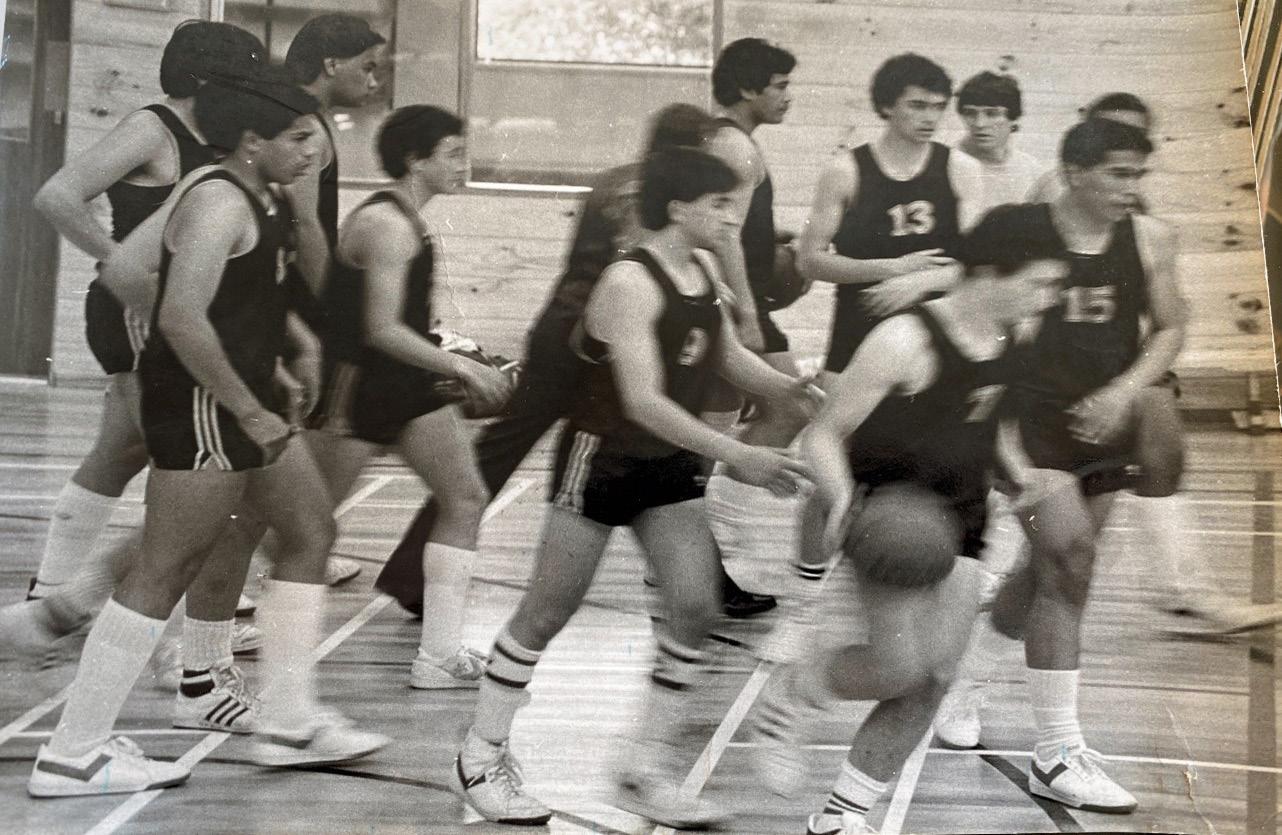
38 The LAMPSTAND, 2022
(L-R): Peter Papas, Fotis Liolis, former Basketball Coach, Victor Paulsen, Konelio Ailao
) (L-R): Konelio Ailao, Iona Siolo and Peter Papas look on from the bench as the game goes through the final minutes with Wellington College well ahead of Rongotai College.
Asian, Italian, and now Turkish: Dean White has a vision for Wellington cuisine
Restaurateur Dean White [Class of 2008] has just opened his third Wellington venue in six years. He tells STUFF that eating at a restaurant should feel like dining at home.
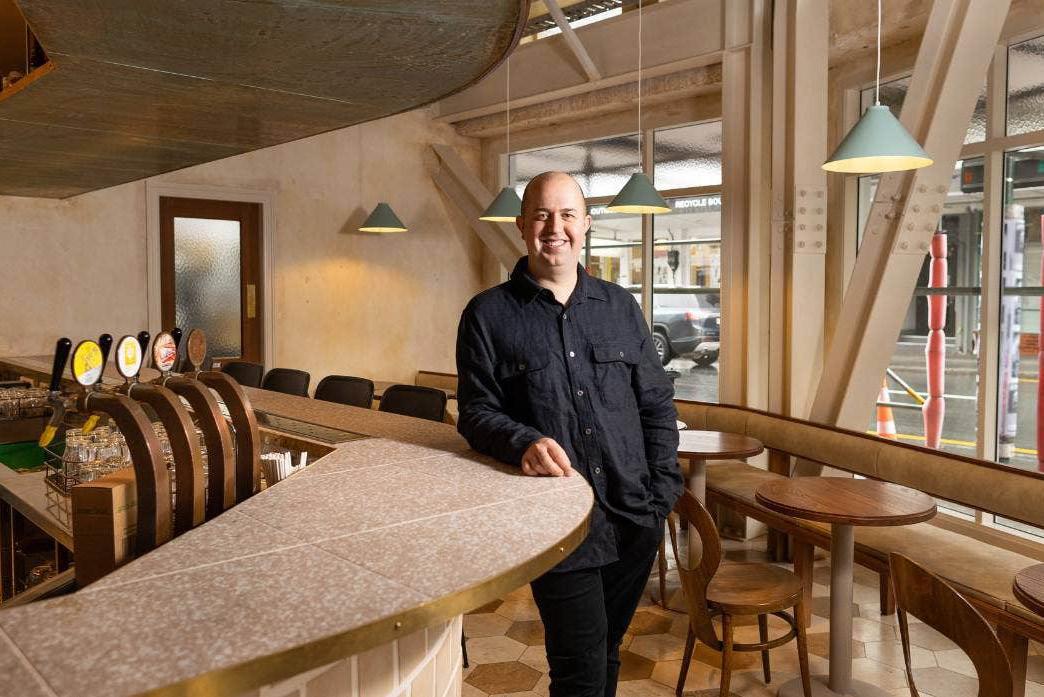
Dean White is spread thin these days. His Asian street food business and Italian eatery were already popular, and now there’s a Middle Eastern restaurant in the mix.
One of the challenges of owning three places is he can’t be on the floor as much as he would like. Guests like knowing who's serving and cooking for them, Dean says. That said, we've found good benefits in having more than one restaurant.
The 31-year-old is part of a new generation of up-andcoming restaurateurs opening eateries with an enthusiasm not seen in the capital for decades – despite staffing shortages, rising food costs and the ongoing impact of Covid-19.
Dean grew up in Wellington, and studied hospitality and economics at Otago University, where he managed the waterfront eatery Plato He spent three years in food sales back in Wellington, and then moved to Auckland to manage Bird on a Wire - a chicken-based eatery with takeout – before returning to the capital to set up shop.
Dean runs his eateries under the banner The Dining Room Group - a name he chose because he believes diners should be treated like guests in your own home. More broadly, he’s a big fan of Wellington, and says the city deserves good
dining and good concepts
He brought Asian street food to Wellington in 2016 when he opened Mr Go’s - a bustling eatery serving pan-modern Asian cuisine. Dean calls it ‘fast casual’ – $12 bao buns come out quickly, appealing to a diverse range of diners who don’t want to spend a fortune.
Two years later, he bought Ombra on Cuba Street, an Italian eatery reminiscent of the shabby-chic backstreet bars and eateries popular in Italy. Now he’s expanding with Kisa, a Turkish-inspired eatery just across the road.
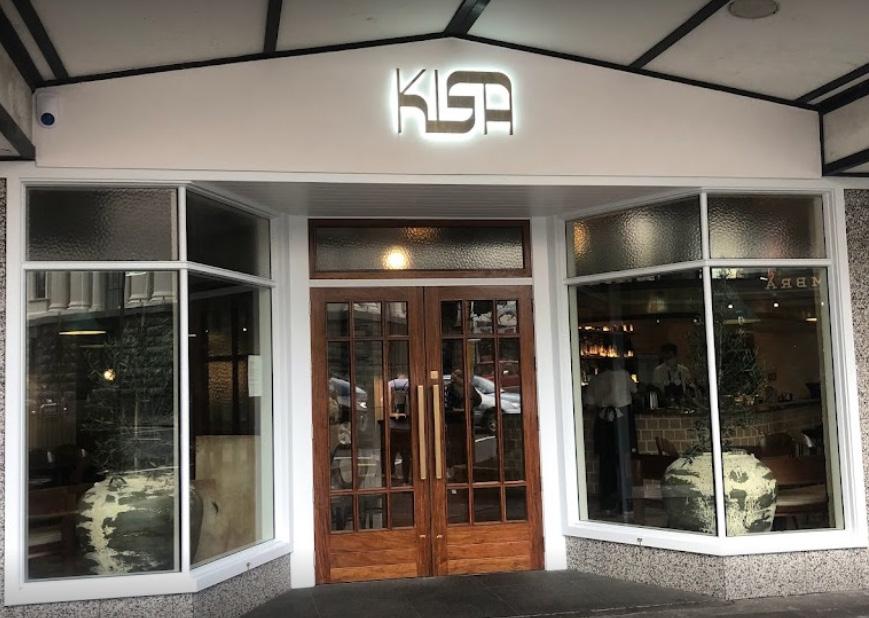
It’s the realisation of a longheld dream. Growing up, Dean used to eat with his family at Cafe Istanbul on Cuba St, where he loved sitting on cushions on the floor and tucking into a kebab.
I always thought there was room for a Middle Eastern restaurant in Wellington, Dean says. Cuba Street has enough Italian in my opinion. We don’t need more.
Johnny Taggart is the executive chef at Kisa, joined in the kitchen at the only Josper Mangal (charcoal bbq) grill in New Zealand by head chef
Chris Morgan. Unlike other Wellington restaurateurs such as Leonardo [Class of 1998] and Lorenzo Bresolin, who followed their father into the restaurant trade, Dean doesn’t have it in his blood. Instead, he describes himself as more of an entrepreneur, with an eye for gaps in the city’s cuisine.
All three of his venues are about ‘approachable dining’. If you don’t manage to book a table, 50% of seats are saved for walk-ins.
Dean sees Kisa as a chance to showcase New Zealand food and beverages – especially with international tourists finally arriving again. He serves wine from Marlborough and spirits from across the country, and thinks ‘eating local’ is a buzzword that’s overdone. I’m not trying to wave a good footprint flag. I think the nice part of going to a restaurant if you’re overseas is they’re trying something they haven’t had at home.
Dean shrugs his shoulders when asked about the wisdom of opening a new restaurant in the current market. He won’t talk about staffing pressures, and sets out to pay his staff competitive salaries.
A recent survey from the Restaurant Association found 80% of restaurants had increased their prices due to rising food costs, and Dean’s also been affected.
This does mean we’re needing to make quick, sometimes hard calls, cutting popular dishes that aren’t making money any more, such as if we see a $4$7 plate price increase that isn’t going to work.
Dean says diners have become more sophisticated in recent years due to shows like Masterchef. Ten years ago if you mentioned the sauce, Sriracha, no-one would have any idea what you were talking about, he says.
We can underestimate how skilled some people are at cooking. And lockdown has made everyone better cooks.
Dean welcomes the challenge, and says scarcity breeds creativity. We have to use everything, minimise waste and think hard about each ingredient on a plate - does it need to be there and what’s it adding?
Being frugal and sustainable, he adds, isn’t just about being trendy any more Now it’s also plain, smart business. Which is a good thing.’
STUFF, May, 2022
195
Email: kisarestaurant.co.nz
39 The LAMPSTAND, 2022
Cuba Street, Te Aro, WLG Tel: 021 449 820
Reflections of 'Rhubarb' Radford
Iwas interested to read about New Zealand’s acclaimed classical music composer, Lyell Cresswell in your eNewsletter. He finished at Wellington College in 1962. I finished three years later. I did not know him. It was a large school and Head Prefects and sports figures stood out, not those with interests in music or art. But it got me thinking about my own experience with music at Wellington College. Let me say at the outset that my abilities and career in music were miniscule compared with that of Lyell Cresswell!
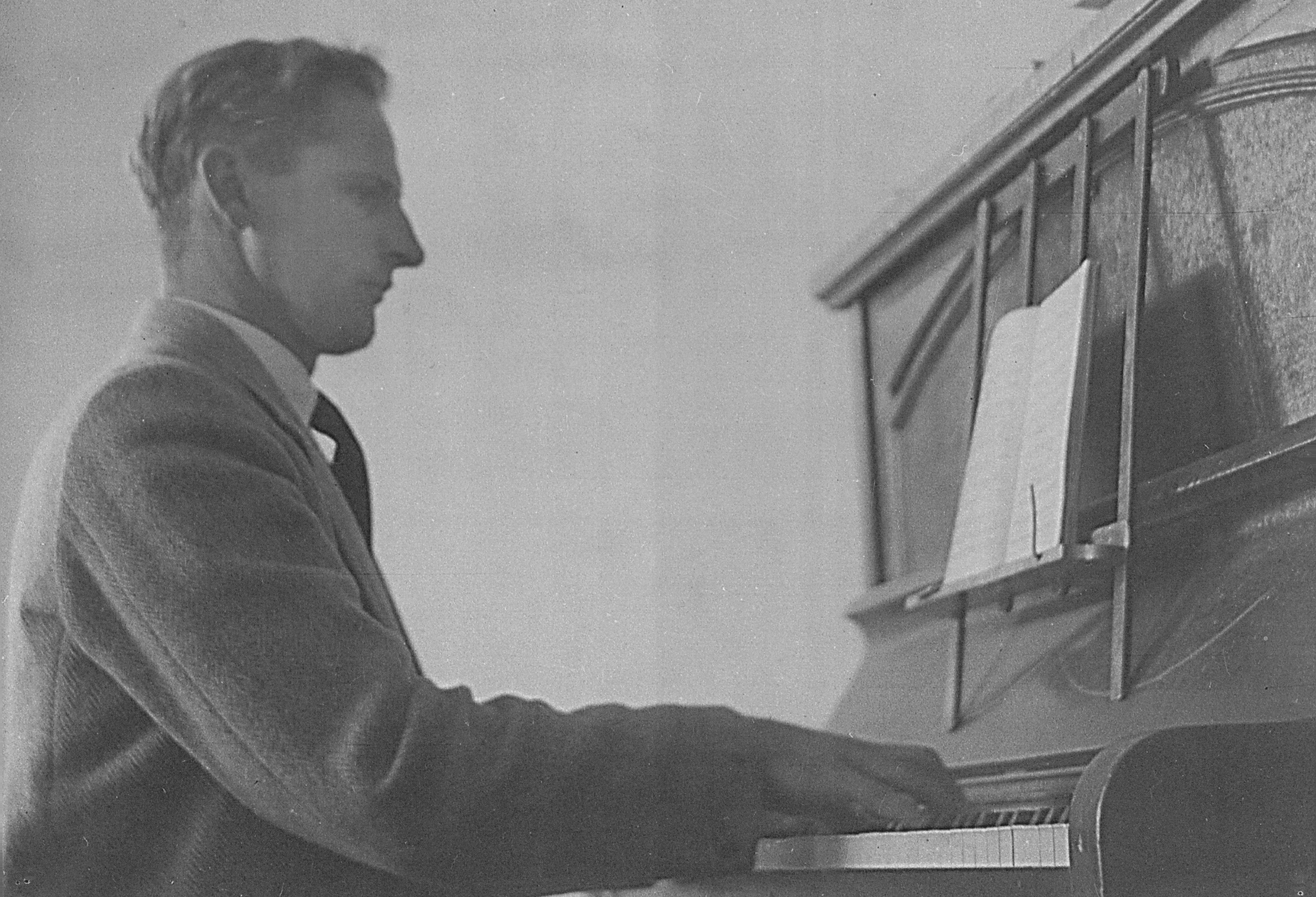
My mother had a music degree and was a big supporter of what was then called the New Zealand National Orchestra. At primary school, I went with her to attend many concerts in the beautiful old Wellington Town Hall. I took piano lessons from an elderly European lady called Madame Hall who lived in a granny flat behind a grand house on Randwick Road in Lower Hutt.
When I started at Wellington College in the third form, and at Firth House, my mother arranged for me to continue my lessons from the staff music teacher whose name was Rhubarb Radford. I apologise for using his nickname but that's what he was universally called, and I do not recall his proper name. *
Early in each year, Rhubarb Radford would arrange for the singing of the hymn Oh, Worship the King. The second to last verse was sung only by the incoming third formers in the gallery and conducted by Rhubarb Bradford who had made his way up to the gallery and stood at the bottom exhorting us to sing up! I remember the first words of that verse were Frail children of dust, and feeble as frail. In thee do we trust, nor find thee to fail. Since we were around 13 years old, most of the voices still had not broken.
The Vienna Boys’ Choir we were not! but with Rhubarb’s exhortations, we did a pretty good job! AND in subsequent years we listened very critically to the efforts of the incoming third formers singing the same verse of the same Hymn.
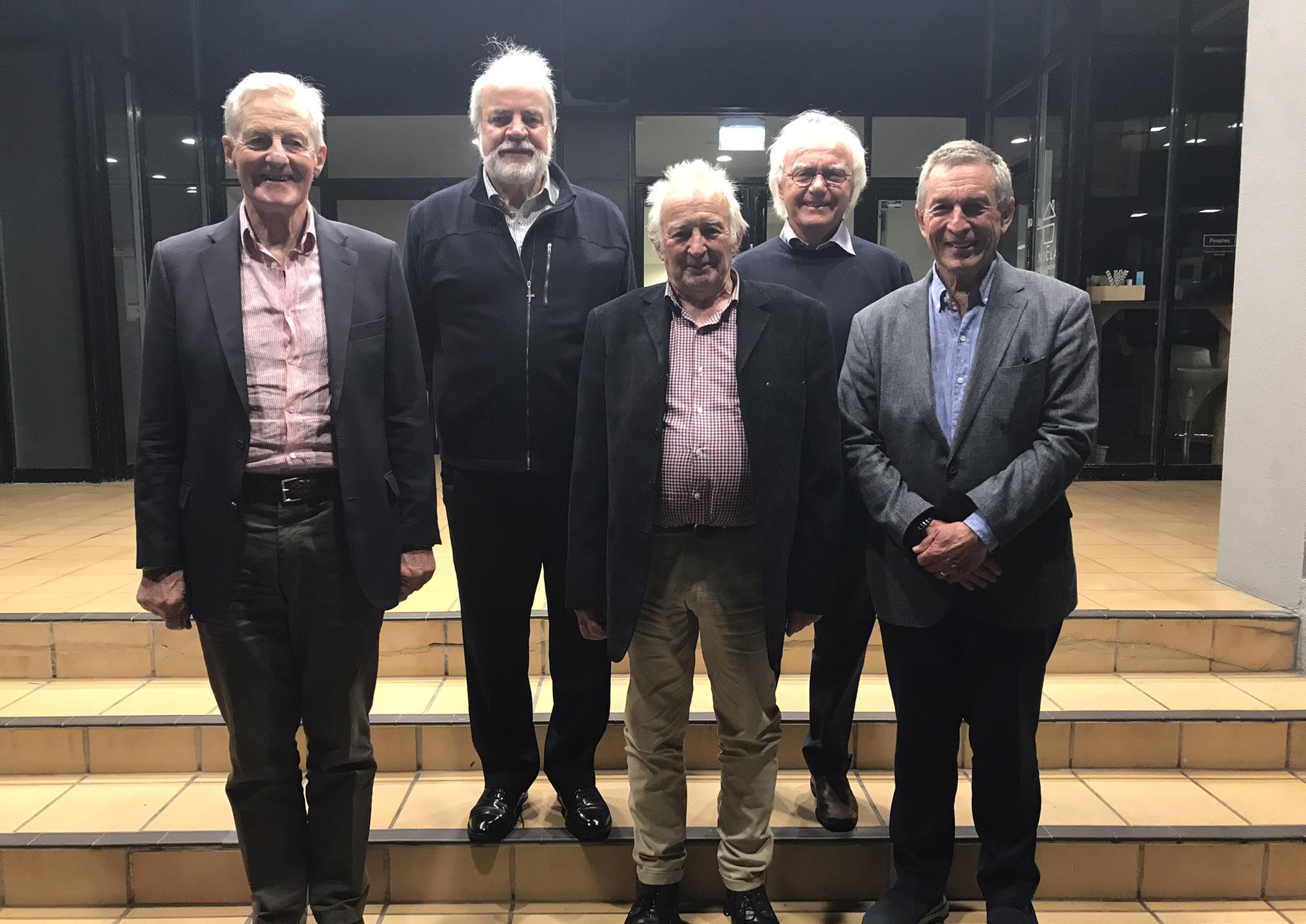
Andy King, Class of 1965
* Robert Harry Radford, MusB, LRSM, LTCL, left Wellington College in 1963 for Auckland Grammar School and taught there until May 1976, when he died. Hal, as he was known, had been ill for a number of years, but had continued to serve AGS and School Music extremely well in spite of his ill-health. Editor.
My first lesson with Rhubarb Radford was in the afternoon after school on the piano in the Memorial Hall. Mr Radford was dressed formally in a suit and tie and was always seen wearing his black academic gown. I noticed that Mr Radford seemed very suspicious of me at first and I thought this was probably because my two older brothers at Wellington College had established a reputation for being troublemakers. (I was the quite studious one of the five King boys who attended.). However, when I played portions of Mozart’s Sonata in A which I had learned from Madame Hall, he warmed up and I took lessons from him for a year, until he left the school. I very much enjoyed his lessons,
There was a very large third form class of baby boomers that year. Over 300 of us. At Assembly, we were all placed in the upstairs tiered gallery at the back of the Hall. Assembly started with a hymn selected from a little green hymnbook that we were all given. I remember the daily singing of the hymns as spirited. They were led by a student pianist and quite a large student orchestra which included all the strings, woodwinds, a brass section and percussion. (I wonder if Lyell Cresswell was ever part of this group?).
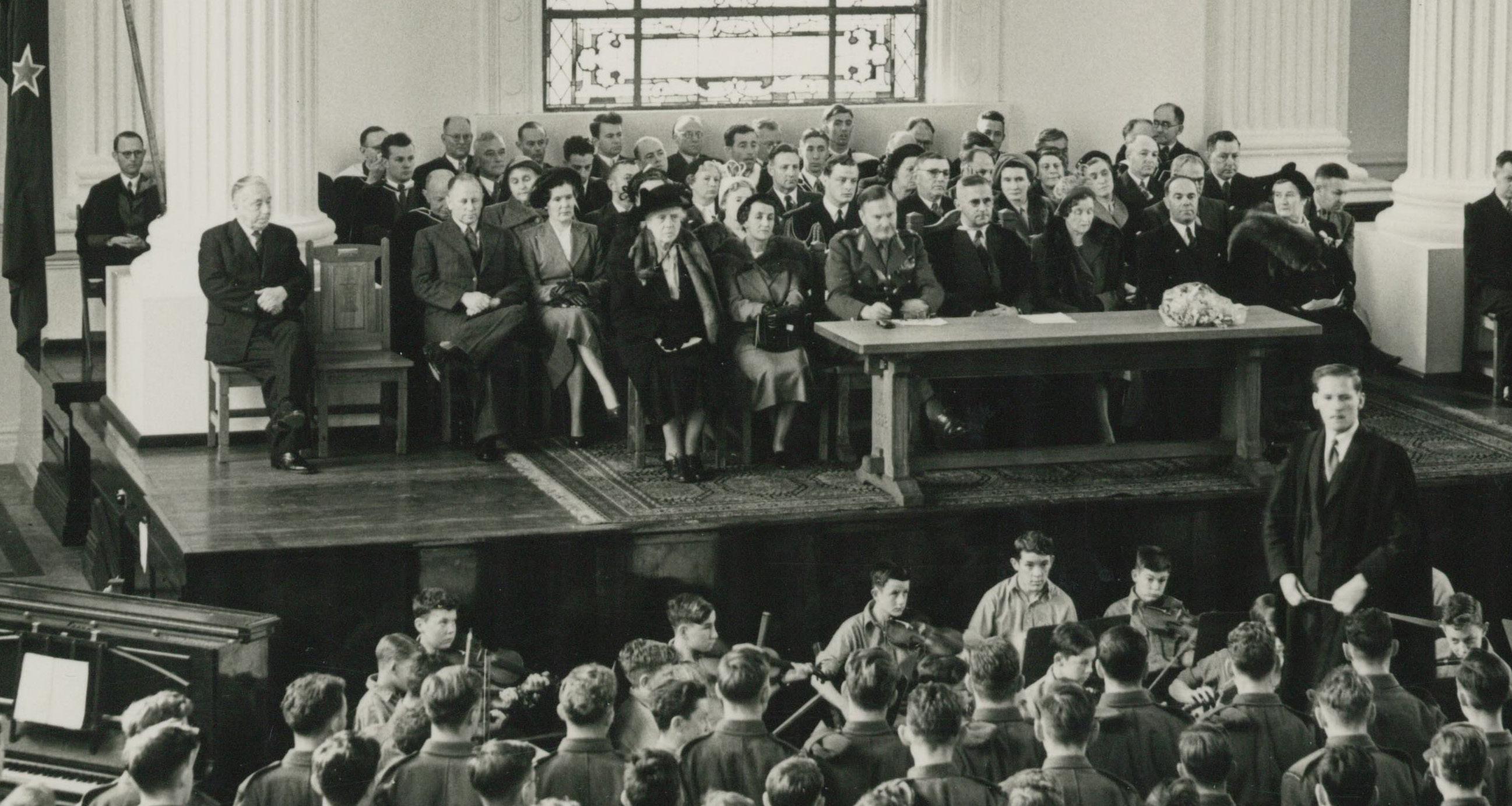
40 The LAMPSTAND, 2022
Professor of Orthopaedic Surgery, Andy King recently visited Wellington from his home in New Orleans, and caught up with fellow 1965 classmates. (Back: L-R) John Culliford, Andy King, (Front L-R): David Kember, John Wedde and Pete Rodger.
Mr Radford leads the School Orchestra at an Assembly to farewell Lord Freyberg after his term as New Zealand Governor-General had finished in 1952.
Cricket Wellington seems to be over run with Old Boys
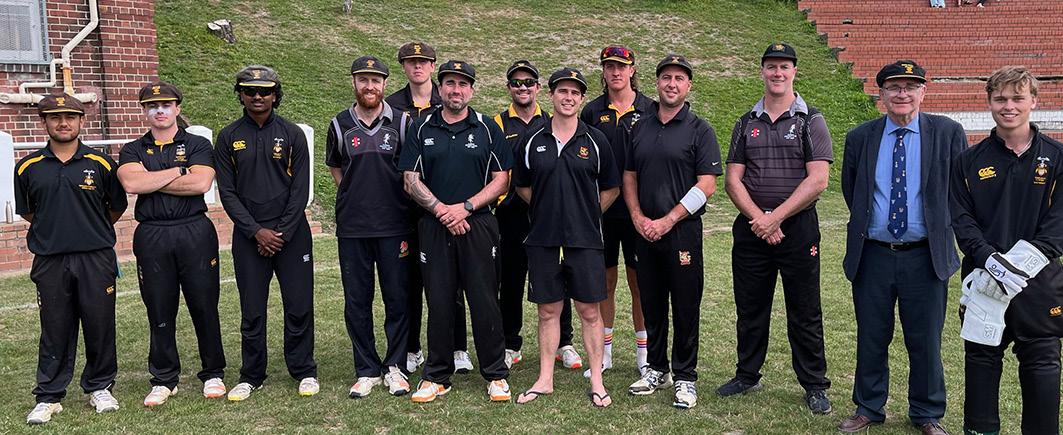
Cricket Wellington is delighted to announce the election of Bryan Waddle [Class of 1966] as President.
Truly earning the title ‘voice of New Zealand Cricket’, Bryan has been our country’s senior cricket broadcaster for 35 years, this year notching up his 280th cricket match behind the microphone. A MNZM recipient, he has greatly enhanced our knowledge of and love for this great game.
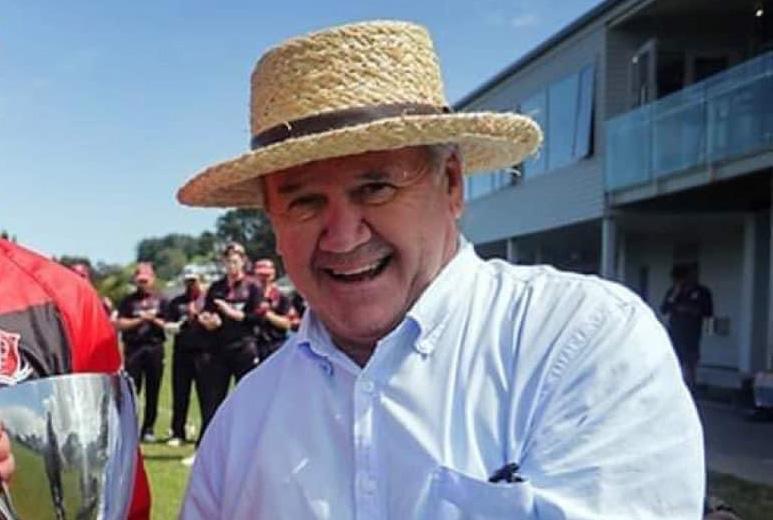
At CW’s recent AGM, David Howman [Class of 1966] was re-elected as Board Chairman, and Robbie Kerr [Class of 1986], Matt Roche [Class of 1980] and John Sewell [Class of 1976] were elected as Vice Presidents.
Michael Pollard [Class of 2007] was elected as an Honorary Cricket Member.
Three more recent Old Boys have contracts with the Firebirds; Black Cap, Tom Blundell [Class of 2008], Jacob Bhula [Class of 2016] and Tim Robinson [Class of 2019].
It was a great day at the office for Old Boy, Tom Blundell, with his third test century for the Black Caps, against England at Trent Bridge in June. Together with Daryl Mitchell, the pair made 236 in the

They eclipsed the 222-mark set by Craig McMillan and Nathan Astle against Zimbabwe at Wellington in 2000. In addition, the pair surpassed the 195 they made to resurrect first test hopes in the
Their efforts also became the highest New Zealand stand in England, beating Martin Crowe and Bruce Edgar’s 210 in 1986 at Lords.
Old Boys show young ones who’s the boss
Sunday, 13 March was a special day on the Number 1 at Wellington College.
It began with a presentation of a ‘100’ game cap to Oscar Jackson. Oscar, who is the 1st Xl Captain, began his cricket at Wellington College in 2018 and came to everyone’s attention when he lifted one off the then 1st Xl bowlers onto the pavilion roof as a Y9 during the 1st Xl trial.
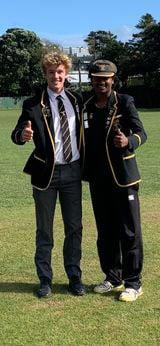
He played his first 1st Xl game in Term Four of his second year at school. Since then, he has amassed nearly 1,600 runs (in PYG) and plenty of wickets too, including eight hundreds. His cap was presented by former Headmaster, Roger Moses, after kind words from former team mates, coaches and others.
Following the presentation, the match between the 1st XI and the Old Boys’ XI began with Wellington College in the field. After a couple of quick wickets, the Old Boys (coached by Roger Moses) got into their work with an especially good knock from Simon Allen [Class of 1998]. A very classy 44no, cut short by a suspect hamstring.
Simon was very ably supported by the last ‘100’ game recipient, Kavindu Weerasekera [Class of 2021] with a stylish 43 and Ben Cameron's 35. All told,
WCOB made 228 in 48.1 overs. Amogh Paranjpe and Marco Muollo were the pick of the 1st XI bowlers with three wickets apiece
The 1st XI began its run chase against Jacob Vandenberg [Class of 2020] and Jago Sperring [Class of 2021], who offered bounce and pace the 1st XI found difficult to deal with. Coupled with Jono Sole [Class of 2004] bowling very straight, the 1st XI stuttered to 39-5. Marco Muollo and Duncan Mutch then added the only real partnership of their innings with 45 and 27 respectively. Kavindu came in and finished the job for the OB’s side taking 4-6 of three overs. Wellington College ended at 117 all out in 28.3 overs, going home with a bit of a lesson from the ‘old and not so old boys’.
Richard Boag [Class of 1981] from the WCOBA Executive was on hand to present the Old Boys’ trophy to Captain, Kevan Weerasundara after the game.
After the match, the Old Boys team enjoyed a good catch up along with managers, coaches and parents. The OB’s side had a great day; taking home the Old Boys’ Cup, and no doubt many would have made a trip to the physio over the following week.
41 The LAMPSTAND, 2022
Garth’s recipe for staying Young
Veteran musician Garth Young [Class of 1949/1950] is about to blow out the candles as he nears 90. The past couple of years have seen him make significant lifestyle changes as the work dried up during Covid. He’s starting to reap the benefits.
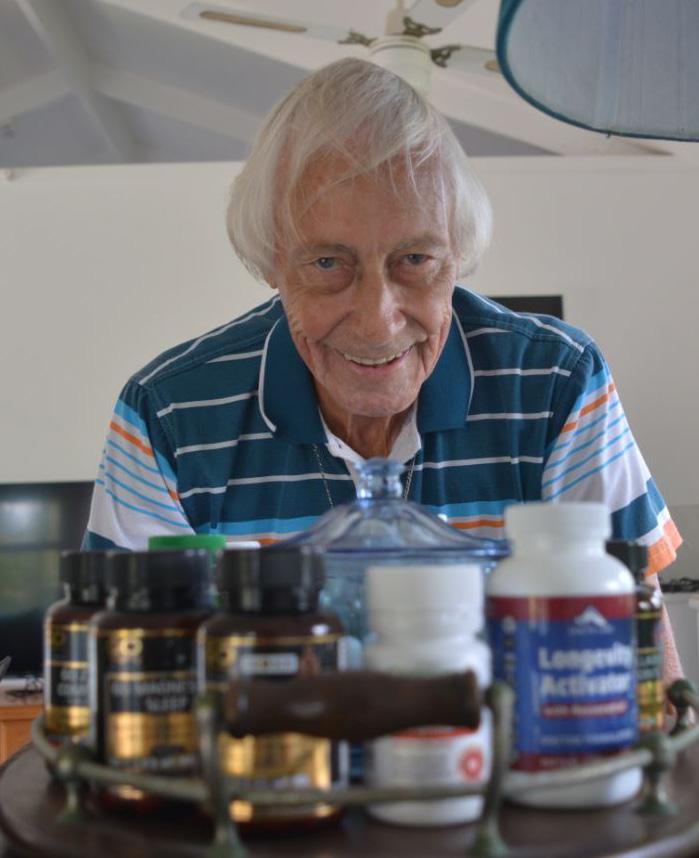
Garth turns 90 on 11 November and believes he’s defied the sceptics. It’s been a long life of late nights, early mornings, large drinks and lots of cigarettes. He’s been a workaholic at times, spending much of his career serenading Rarotonga with his piano music.
Before that, Garth worked on many of the New Zealand pop hits of the 1960s through his recording and arranging work with record labels such as Viking Records, Phillips, and EMI.
Before moving to the Cook Islands, Garth was perhaps one of the hardest working men in Kiwi show-biz. A dedicated and talented pianist, musical director, and music arranger, much of his work would have served as the soundtrack of New Zealand music in the 1960s and 70s.

He provided backing for countless, wellknown hit singles and best-selling LP’s, but upon fleeing to Rarotonga to take a break from the thrilling buzz of his busy career, he fell in love with the place and since then made a life for himself here, playing sweet piano music wherever he went and contributing immensely to the musical industry of the Cook Islands.
He left New Zealand permanently for the Cook Islands in 1980, a move he says, literally saved his life. The lavish lifestyle continued to a certain extent as he continued entertaining, up to six nights a week. Covid finally put a stop to it and signs of fatigue set in. Garth says he was then encouraged by a number of people to get active and change his diet. And so he did
Looking at his daily diary, in which he keeps a record of his distance walked, sleeping patterns and meals, makes impressive reading. Up to 20 kilometres of walking on some days – and he’s feeling better for it. His children, a son and a daughter, are both coming to Rarotonga for his birthday, and bringing him a new electric piano.
He plans to start work again, entertaining at various venues around the island, but has no plans to slip back into old habits.
I stopped work when Covid-19 came in 2020, then I sat down like a slob, I then realised I was barely able to stand up after a while. I decided I had to start moving; the first walk I did was 100 metres along the road to where my late wife Maurine is buried. Maurine died in 2019.
Garth says he was told by a doctor there was nothing he could do about his ailing health, so he set about working his own programme. I didn’t want to be a cripple. I then set about getting a second opinion and doing my own research.
As he worked his own programme, looking at natural alternatives, combined with exercise and diet, he sought more opinions. Garth says he was then told by medical professionals: We don’t know what you’re doing but keep doing it. I’m on my second pace maker, but my heart is normal now. I’ve had high blood pressure problems all my life, my blood pressure is extremely good now. He attributes the turnaround, mainly to getting active, being out and about walking. I got rid of hypertension.
Garth reflects on decades of life on stage, at a piano. Being a musician, you tend to drink and smoke a lot. I smoked 100 cigarettes a day, working ridiculous hours. When I was out playing music, it was always booze on the house and large quantities of spirits, dark rum and coke by the gallon, whiskey and milk for breakfast.
Now, he says, cut out the sugar and cut down alcohol intake.
Garth has also cut out certain medications in his quest for health, and says his diabetes is now in recession. I used to drink everything except water, I’m drinking water by the gallon now.
He swears by garlic, it’s a must have, Garth says. I go through a bag of garlic every two weeks, I have it chopped up and raw. I threw out all my sugar, butter cream and red meat. I also have a lot of olive oil, two table spoons in the morning, and a table spoon of ground flax seeds. My mood is excellent. Garth says he still enjoys a red wine now and then, I’m quite happy without booze, I will have some booze on my ninetieth.
He has advice for those of us feeling the effects of age. First of all, get moving, just do a little bit. Don’t sit too long, don’t snack on salty food. I’m enjoying life now, now I’m aiming for 95. I look forward to each day.
COOK ISLAND NEWS
42 The LAMPSTAND, 2022
Not all heroes wear capes… Some drive bulldozers
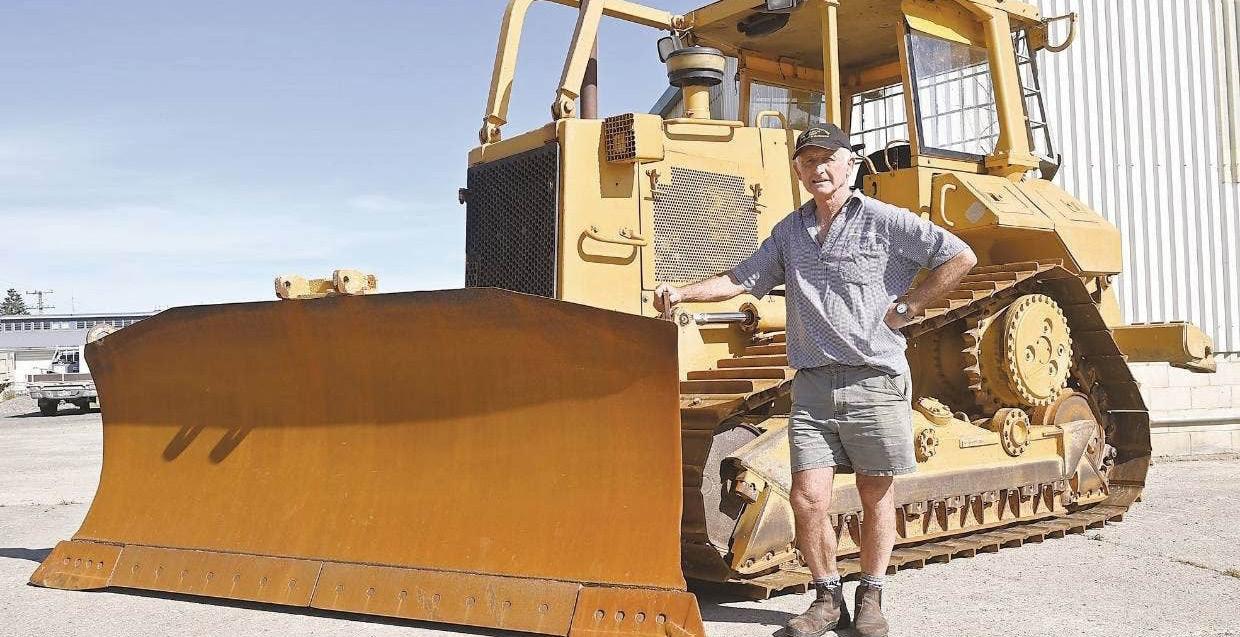
When the rain began falling in northern Hawke’s Bay in April, Old Boy/Boarder/1stXV, Hamish Pryde [Class of 1973] feared his small town might be in trouble. In late March, a state of emergency had been declared for Gisborne and the East Coast where bad weather was wreaking havoc. As the storm moved south, Wairoa was copping its fair share too, and emergency personnel were kicking into action.
Enter Hamish, a man with over 40 years’ bulldozing experience, who just happened to be driving near the mouth of Wairoa River that morning. As he looked out at the rising water, alarm bells went off. Wairoa becomes quite vulnerable to flooding if the river bar gets too offset from its preferred mouth position, he said After that first big belt of rain, the Wairoa River was at pretty extreme levels.
Crossing farmland in his trusty bulldozer, he encountered floodwater that was already halfway up one of the gates he had
t the recent Wellington Rugby Football awards, Jack Sargentina [Class of 2014] won the WRFU Club Referee of the Year. Jack's season was topped off refereeing the Jubilee Cup Final for the second year in a row, and then getting a call to referee his first 1st Class game in Blenheim refereeing Tasman v North Harbour Women's NPC game. Then more recently he refereed the NZ Secondary Schools' 1st XV Final in Palmerston North.
to open. Next, he had to wade his machine through a couple of hundred metres of deep water, which had him 'quite nervous'.
But Hamish would not be denied and with the help of his team member on a digger, he began excavating the river mouth in the early afternoon. It wasn’t until darkness began descending that the job was complete, and the river was able to flow as it should. He downplayed the technicality of the job, despite his heroics. The end result was worthwhile. We got it open… we were just quick enough and then that extreme weather event came and that helped open the new bar and saved the town.
It has been another Golden Year for NZ Men’s 8 Gold Medalist, Phillip Wilson [Class of 2014] who was awarded The Les Mills Hutt City Sportsman of the Year 2022 and also took out the Supreme Award. Following that award, Phillip then went on to win the Supreme Award at the Dominion Post Sport and Recreation Awards of 2022. He also took out the Sportsman of the Year category. To top off his award-winning year, Phillip also won the Welly Sports Section at the 2021 WELLY AWARDS Ceremony (postponed to earlier this year).
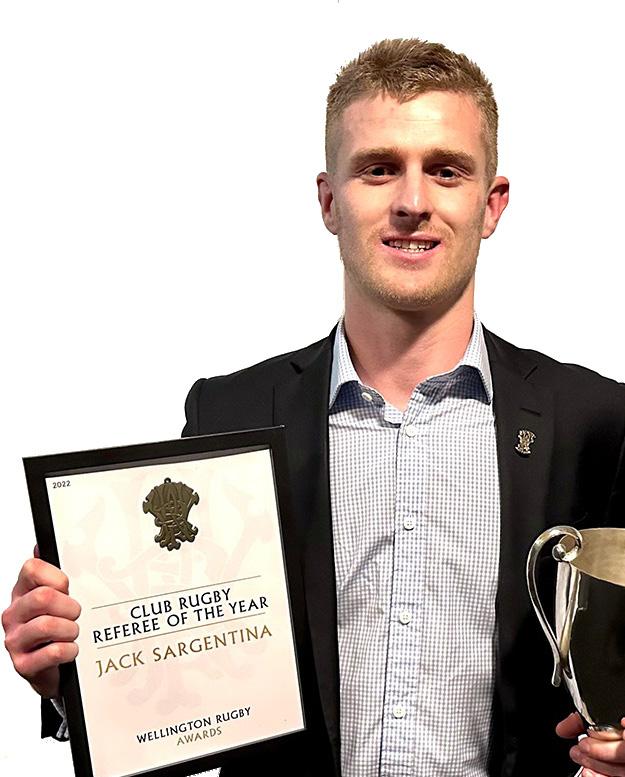
Filmmaker, Fergus Grady [Class of 2004] has a new documentary film called Gloriavale which premièred in Wellington through the NZ International Film Festival and will then open in cinemas around the country.
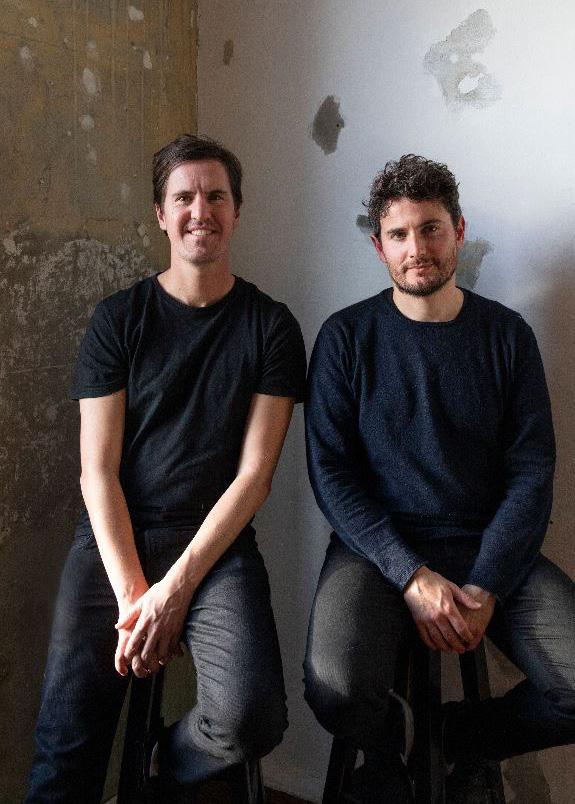
Fergus, below left, and Noel Smyth previously made Camino Skies - about six strangers walking the 800km Camino de Santiago.
The film has been selected for Cannes Film Festival Docs-in-progress and examines institutional failures that have enabled human rights abuses to continue inside Gloriavale for decades.
Phillip joined the Petone Rowing Club in 2015 and quickly showed his passion for rowing and its values through hard work and dedication. He always makes the effort to catch up with younger members of the Petone Rowing Club and often takes the opportunity to get on the water with them for a training row.
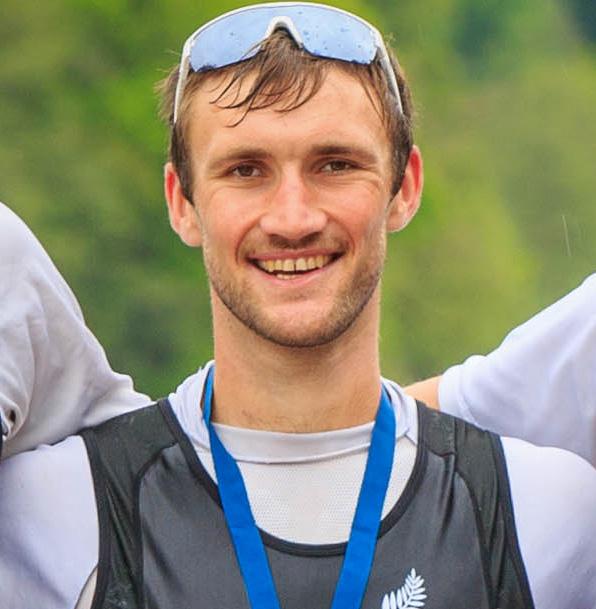
Our congratulations to Tim Brown [Class of 1975] who won the ‘Welly Business Section at the 2021 WELLY AWARDS Ceremony (postponed to earlier this year).
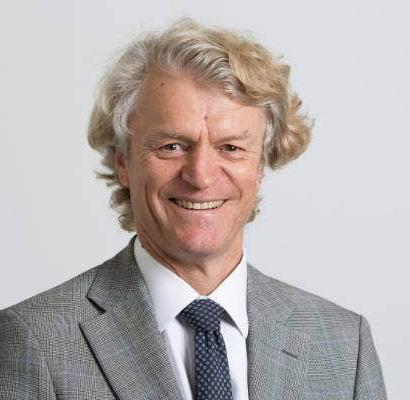
Tim, as the Chair of Wellington Airport and the face of ‘Infratil’ recently retired after 27 years as part of the team at this major investment company.
More recently, Tim was elected to the Wellington City Council, standing for the Eastern Ward.
43 The LAMPSTAND, 2022
Enlightening, heart-rending doco lifts the veil on 'NZ's secret cult'
The Caddy Life
I
t pays to keep the boss relaxed and on their game, just ask NZ golf caddy Sam Pinfold [Class of 2002], who hit the jackpot at the 150th British Open in Scotland.
Sam caddied for Australian Cameron Smith in what was a come-from-behind victory over local favourite Rory McIlroy at Saint Andrews in July this year. He was also at Cam’s side when Cam won the The Players Championship in Florida in March.
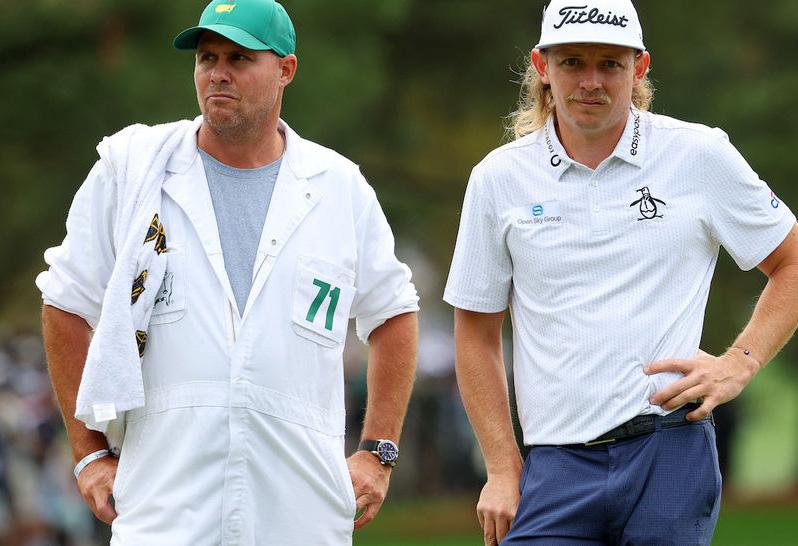

Sam, like most caddies on tour, has a very strong background in golf. He grew up playing most of his competitive golf at Manor Park. Though Sam was good, he wasn’t as confident that he had a future competing at the highest level of golf, so he shifted his focus and that led him to caddying. Sam did represent Wellington at Junior level but by the age of 22, he knew he wasn't going to be a professional. Therefore, he moved across to the Gold Coast and took up a golf position at Royal Pines. There he worked for 18-months before he started caddying for Brad Iles when he competed on the Nationwide Tour in 2007
He has caddied for the likes
Top: Sam (L) with Cam Smith after Cam’s win at the British Open. Below: Sam holds the winning flag from the 18th green at the 150th British Open at St. Andrews, Scotland.
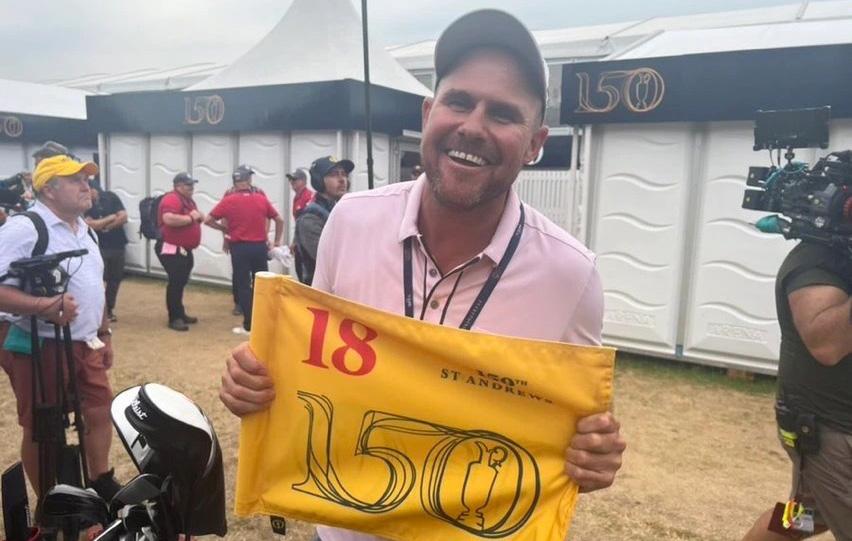
of Ryo Ishikawa, when he was top 50 in the world golf rankings and Brad Iles, while on the Nationwide tour.
Because of his work ethics, Sam was highly regarded among the caddies on tour
and became very good friends with many.
His relationship with Cam Smith dates back to 2014, when Cam employed Sam for two rounds in the New Zealand Open. Cam has kept Sam on
his bag since they started working together, making them a long-running partnership.
The two seemed to have great chemistry immediately, as Cam ended up finishing T10 in the Tournament. The win wasn’t enough to secure a permanent position for Sam at the time, so the two agreed to keep in touch. In a surprise turn of events, Cam reached out to Sam in July 2015 to discuss a partnership. The two continue their partnership to this day.
Earnings for a caddie are based on a performancebased nature - the formula most tour players use for paying their caddies is 5% of earnings if the player places outside the top 10, 7% if the player finishes within the top 10, and 10% if the player finishes in 1st place.
Sam is now caddying for Smith on the LIV Golf tour.
Old Boys help bring home the Log O'Wood
The Ranfurly Shield is back in the capital for the first time in 13 years, following Wellington's 19-12 victory over Hawke's Bay.
Four Old Boys were part of the team defending the Log O’ Wood; James Blackwell [Class of 2012/13], Pepesana Patafilo [Class of 2013/14], Solomona Sakalia [Class of 2008/09] and Taine Plumtree [Class of 2017]. Vince Sakaria [Class of 2012] wasn't available for this match and Wes Goosen [Class of 2013] has moved overseas to play for Edinburgh Rugby.
The last time Wellington held the Ranfurly Shield, Old Boy and current 1st XV Coach, Neemia Tialata [Class of 2000] was playing for the team.
To top of an excellent season, the Lions also won the NPC. The Ranfurly Shield visited Wellington College as part of the Rugby Club's Awards Function.
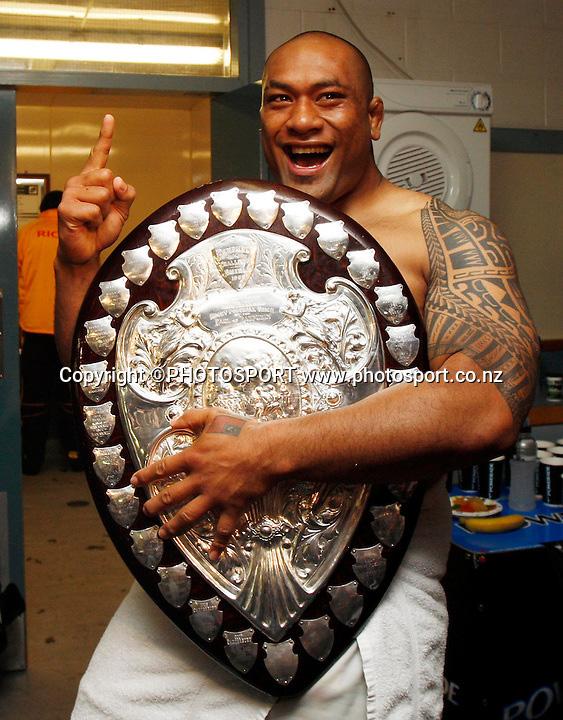
44 The LAMPSTAND, 2022
I
Congratulations to Max Abbot [Class of 2020] who was named Athletics Wellington U20 Men’s Athlete of the Year. Max's success continues, having outstanding successes at McEvedy Shield, NZSS and NI SS Events during his time at Wellington College.
Max has just been named in Athletics NZ Performance Development Squad (in Throws) after having made the equivalent Canterbury programme earlier this year while studying at Canterbury University.
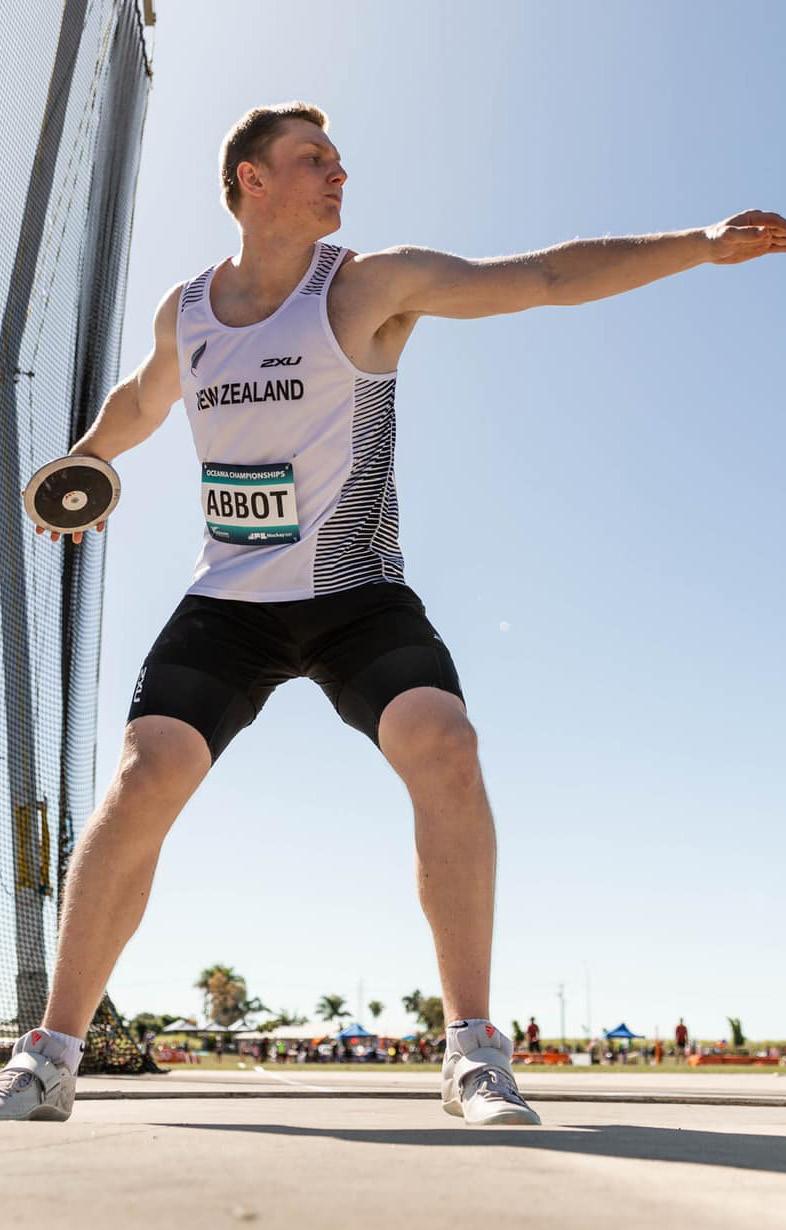
This two-year NZ squad is limited to 20 athletes aged 16-19 years who have demonstrated further international performance potential. (Only 14 athletes were named with another intake early next year.)
(L-R): Adam Cooper, Sean Hogan
AN EARLY START TO THE DAY
n the 2021 Lampstand, we featured an article om Adam Cooper [Class of 2010] and his role as Operations Manager and Sports News presenter with Wellington's Newstalk ZB. Earlier this year, fellow Old Boy, Sean Hogan [Class of 2011] joined Adam as the Wellington News Director and Newsreader.
Sean started his broadcasting career after a year abroad in 2012, teaching English in Argentina. Through a recommendation from Careers Advisor, Ernie Rosenthal, he studied at the NZ Broadcasting School in Christchurch gaining an internship at 1 News in Wellington. He spent seven years at the flagship television news service as a reporter on Breakfast, 1 News Tonight, 1
News at 6pm and Seven Sharp, including a four-year stint as their correspondent based in Hawke's Bay covering everything from labour shortages to natural disasters.
After a short break and career deviation working at the Abuse in Care Royal Commission in Wellington, Sean returned to the industry in July this year to take on the role of News Director and Newsreader for the Newstalk ZB Wellington team alongside Adam Cooper.

The fast pace and relentless deadlines, coupled with the 5.00am starts make for a chaotic but thoroughly rewarding and enjoyable role filled with fun, challenges and the occasional plot loss.
SHEDS ARE MAKING A DIFFERENCE
David Cope [Class of 1964] keeps busy as President of The Centenary Suburbs Men’s Shed in Queensland, a role he has held for the past eight years. CSMS was established in 2011 in order to deal with the stress and depression bought about by the floods of that year. Many homes in the area were badly damaged or destroyed. The shed grew but badly needed their own premises as they were operating out of an old shed at the local Golf Club which was temporary indeed.
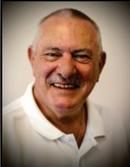
David joined the CSMS in 2013 after retiring that year after having his own business for the past 20 years. His property development experience was seized upon and he was elected President with the sole aim of locating suitable land and developing the great sheds they now have. David approached the Brisbane City Council for a suitable site and the CSMS were fortunate to be offered some 6700m2 of land that they owned. From there it was a matter of raising funds to build their sheds. He had plenty of help from the Committee and others.
David was proud to say we opened in March 2017 and have further expanded. We raised over 700 thousand dollars from the council, state and federal Governments and private companies and individuals in our precinct over the years.
Our activities include woodworking, metal work, an art studio, model making, bee hives, we have 20 hens providing eggs for members and a market garden.
The metals workers have just finished building a working ¼ scale Allchin steam traction engine which has taken two years to complete and provided a great challenge for many or our shedders. We have four sheds onsite with landscaped gardens and lawns. We have around 80 members and are a member of the Australian Men’s Shed group which now numbers over 1000 shed in Australia and more still in other countries including NZ.
45 The LAMPSTAND, 2022
School Report from the 2022 Head Prefect
The 155th year of Wellington College has been a blend of the old and the new. We started the year with more covid restrictions and learning-from-home, which we have had plenty of practice with over the last two years! This happily came to an end, in time for a one-day Runathon with a new five-team format. We finished the term by farewelling the legendary Associate Principal, Mr Dave Ashby with a large and passionate haka, after he had been lured to the turf under the false pretenses of a 'full school bull-rush'. His forty years of service to Wellington College is remarkable
Term Two marked a new epoch in the College's history, as we welcomed our new Headmaster/Tumuaki, Mr Glen Denham. He immediately embraced the school and the boys. Paired with the release from Covid, it really felt like a fresh and exciting start for the school. His Tall-Black presence courtside for Senior A Basketball games inspired us to our highest national placing in ten years. He has similarly supported other sporting and cultural events with the same passion.
From the start of the term, regular school life largely resumed as normal, which was a relief for everyone. Sports and the Arts got underway and have had their first uninterrupted season since 2019.
It has been another great year in the extra-curricular areas. Premier A
Debating won the local Competition and the Big Band won Gold at the National Jazz Festival. The Athletics team won the McEvedy Shield for a record seventh straight year, while the Football and Hockey teams won the CSW competitions

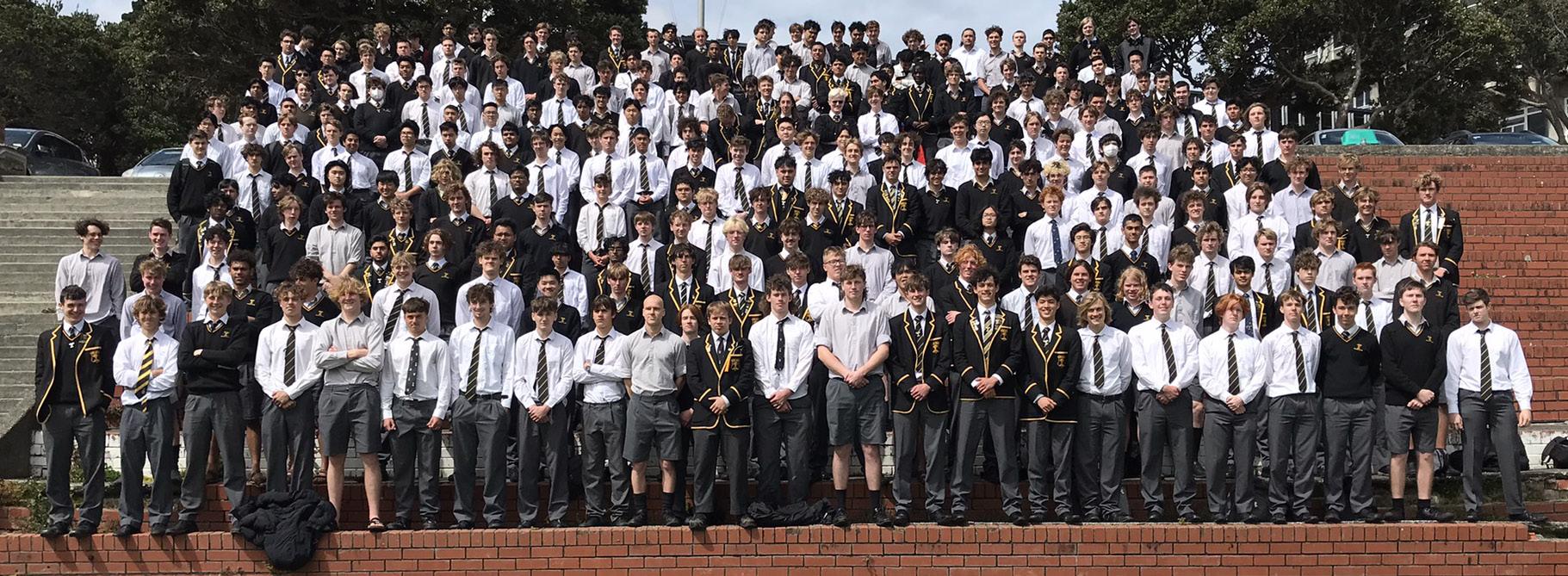
Throughout the year, the senior students aimed to increase the supporters' culture which has declined in recent years. There were large turnouts at a variety of Rugby, Basketball, Football and Hockey games, along with some hearty chanting. Chanting is part of a general effort by the boys to recognise and carry on our traditions, championed by Mr Denham. We learnt and finally sang Forty Years On at Prize Giving - the first time in three years, and we have also worked
on promoting the Archives and history of Wellington College in Assemblies and throughout the school. For example, we plan to display the historic sports and cultural team photos in the corridors. We have also set up a new school house system, starting in 2023. The five houses are named after important locations in the school’s pepeha; Te Ranga-aHiwi, Kaipapa, Hauwai, Waitangi and Te Aketārewa. This is to help foster brotherhood and togetherness, as well as participation as part of a House Cup.
A special word of thanks goes to the staff this year. They have been instrumental in keeping the spirit and energy of Wellington College alive through these challenging times, despite ever-changing rules and guidelines. They always go the extra mile, inside and outside the classroom
During the last few weeks of school, some of the Prefects accompanied the Class of 1981 through the school for their belated 40 Years On Reunion. One of my friends said to me, “This will be us in 2062!” We will have a wealth of memories to reflect on and be grateful for - on the turf, the Terraces, in the classroom, and for some of us, in 'Ashby’s Office'!
Next year, I am going to Dunedin to study a BA and BCom at the University of Otago, and hope to continue playing Basketball.
Harry Zangouropoulos, 2022 Head Prefect
46 The LAMPSTAND, 2022
WCOBA President, Ted Thomas and Executive Member, James Blackwell spoke to the Class of 2022 cohort at their last Assembly about becoming members of our Association The boys concluded the formalities by singing Forty Years On. Welcome to our extended family and we wish you all the best in your future endeavours.
[class-Of-2022]
(L-R): Harry Zangouropoulos, 1981 Head Prefect, Greg Fleming, Rhys Nimmo, 1981 Deputy Head Prefect an d Sean Wipatene, 2022 Deputy Head Prefect
What's happening to the Tower Block? His work is done!
Wellington College requires seismic strengthening and recladding of the Tower Block. The project will be delivered across three stages, including recladding and structural upgrades to; both South and North stairs, West elevation (core) lifts and the bathrooms.

The three stages will take approximately 13 months to complete starting with the south stairs - commencing the last week in November 2022.
While the work is going on, some classes will move to six prefabs that are to be installed over summer ready for Term 1 2023 across the Terraces to the main field. This will let contractors get the work done in the shortest possible time. A one-way system for all vehicles entering and leaving the school will be established during the contract work.
Communities benefit from runners
In a ruse to get retiring Associate Principal, Dave Ashby out to the Turf, Wellington College students faked an impromptu game of Bullrush. Instead of a panic situation, Dave was honoured with a haka to commemorate his retirement from the school after 36 years of service.

Dave would have preferred to bow out quietly without any fanfare but the boys weren't going to let that happen.
Prior to Dave's last official day on staff, he was Acting Headmaster for Term One, until the appointment of Glen Denham. Since his 'retirement', Dave has pretty much been at Wellington College as a relieving teacher and no doubt pretty pleased to be done with issuing detentions and catching the smokers up behind the No. Three field.
After a long year riddled with Covid and even more working from home, the Wellington College World Vision Runathon team leaders are pleased to announce that we have raised $69,412.27 for our five charity’s this year; @worldvisionnz @mhfnz @wgtnrapecrisis @kaiboshnz and @dcm_wellington. Thank you so much for everyone who contributed, by buying a shirt and donating money.
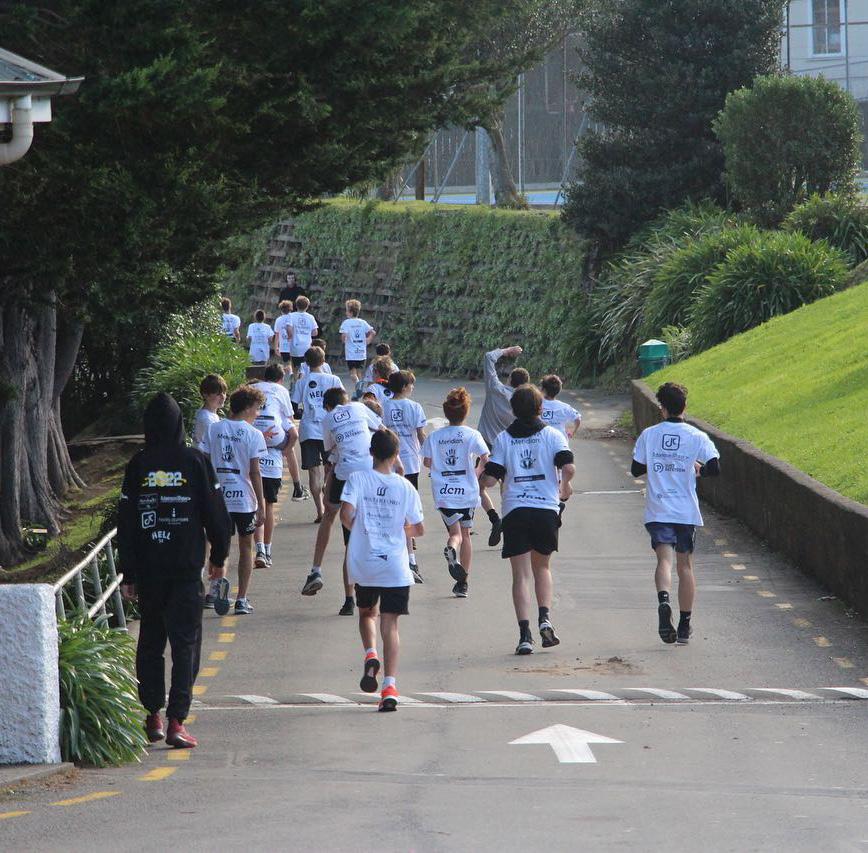
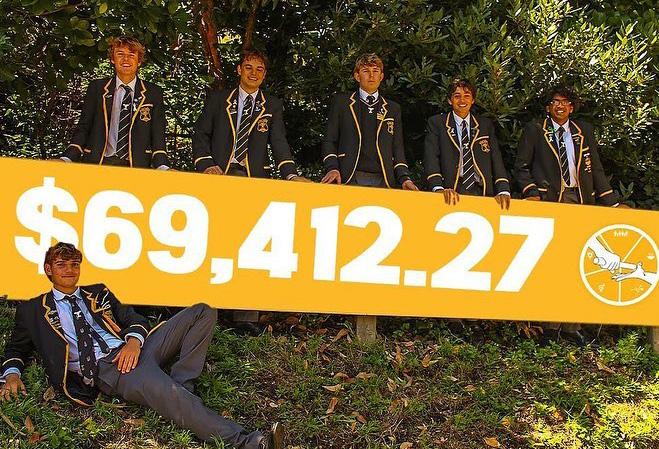
Joint Dux for 2022
Congratulations to Harry Hampton (L) and Sumner Hancock (R) who are the joint Duxes for 2022.
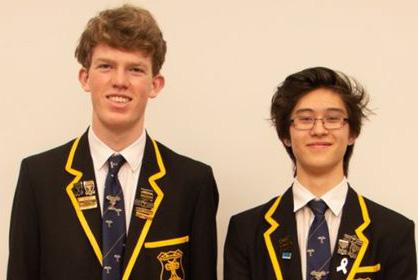
Along with the top honour, Harry also won The John F Lewis Award For Mathematics, and The Arthur W Griffin Cup for Excellence In Modern Languages. He was also first in class in Chinese, Latin and Statistics - The Norman Nicholls Prize.
Head Prefect, Harry Zangouropoulos was Proxime Accessit.
47 The LAMPSTAND, 2022
Outward Bounders report in from camp
Each year, the WCOBA subsidies Y12 and Y11 students to take part on Outward Bound and Spirit of Adventure. The two 2022 recipients have reported back on their adventures.
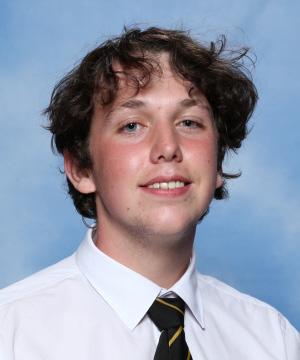

Iwould like to give a huge thank you to the WCOBA for the sponsorship I received to help me get on the Mind, Body, Soul 21-day course on Outward Bound in January 2022.
After a false start when the government moved the NCEA exams back by 2 weeks, bumping me off the December 2021 course, I thankfully secured a January spot.
It was an amazing journey that gave me the opportunity to experience tramping through the bush, sailing through the Sounds, rock climbing, bouldering, kayaking, coasteering, etc. I learnt that you don’t have to be an elected leader to show leadership and that anyone can put themselves out there and show leadership qualities just by looking after the group and leading by example.
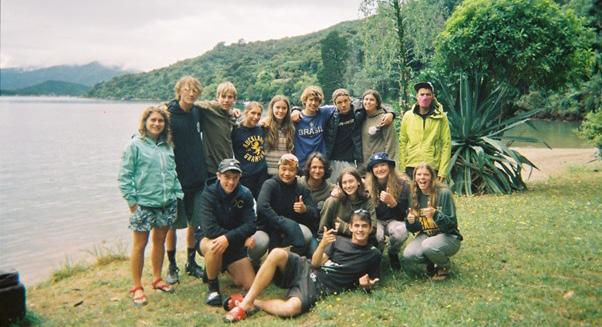
I was also pushed out of my comfort zone in areas I’m not strong in, such as physical activities, like swimming, long
Iwould like to thank the WCOBA for supporting me in my Outward Bound experience. I had a wonderful time and I think it has made me a more resilient and driven person who is more willing to give back to my community. I think it is really wonderful that scholarships are being given to help support other students like myself to attend this course.
distance running and also self reflection.
I met heaps of great people from all around New Zealand and created strong friendships that were developed over the course. It was a great experience coming into an environment where I was surrounded by strangers and it has given me a lot more confidence.
My highlights are wide and varied but one of my favourites was day 19 when we did the half marathon because I had
been working really hard to get to a level of fitness that I was proud of and I ended up running quite well and managed to keep a solid pace. It was a very rewarding experience and it encouraged me to push myself and achieve at the highest level, instead of doing the bare minimum.
I am so grateful to the WCOBA for this opportunity, I really loved it.
Luke Jones, Class of 2022.
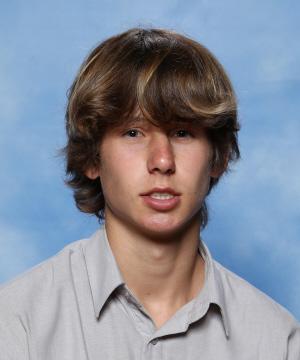
My course had to be changed due to exams being pushed back because of COVID, so I completed it in January 2022 rather than December, 2021.
Once again, thank you so much for supporting me during Outward Bound, I really appreciate it.
Gray Hamilton, Class of 2022
Maxim Ericson,(Y12), is pictured with Old Boy, Phillip Wilson. Maxim is holding Phillip’s Gold Medal from the Tokyo Olympics where Philip was a member of the NZ Men’s Eight.
Maxim and Phillip bumped into each other at Lake Karapiro in April because Maxim was selected for the North Island Quadruple and Double Sculls team for Rowing New Zealand's North vs South U18 Regatta.
In September, Maxim was awarded highly commended in the 2022 Mansfield Short Story Competition. 'Full Grey Sky’ 'was described by judge, Victor Rodger CNZM, an award-winning writer, as having 'an incredibly strong rhythm and a muscular use of language that builds to a dark, unsettling climax.'
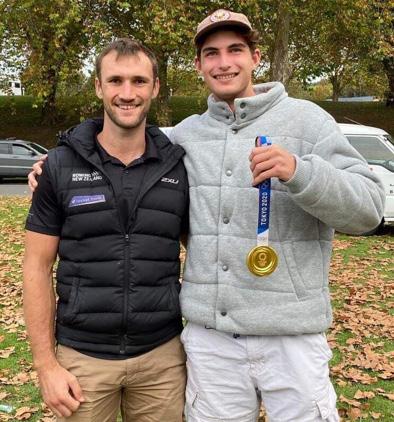
48 The LAMPSTAND, 2022
Black & Gold Awards
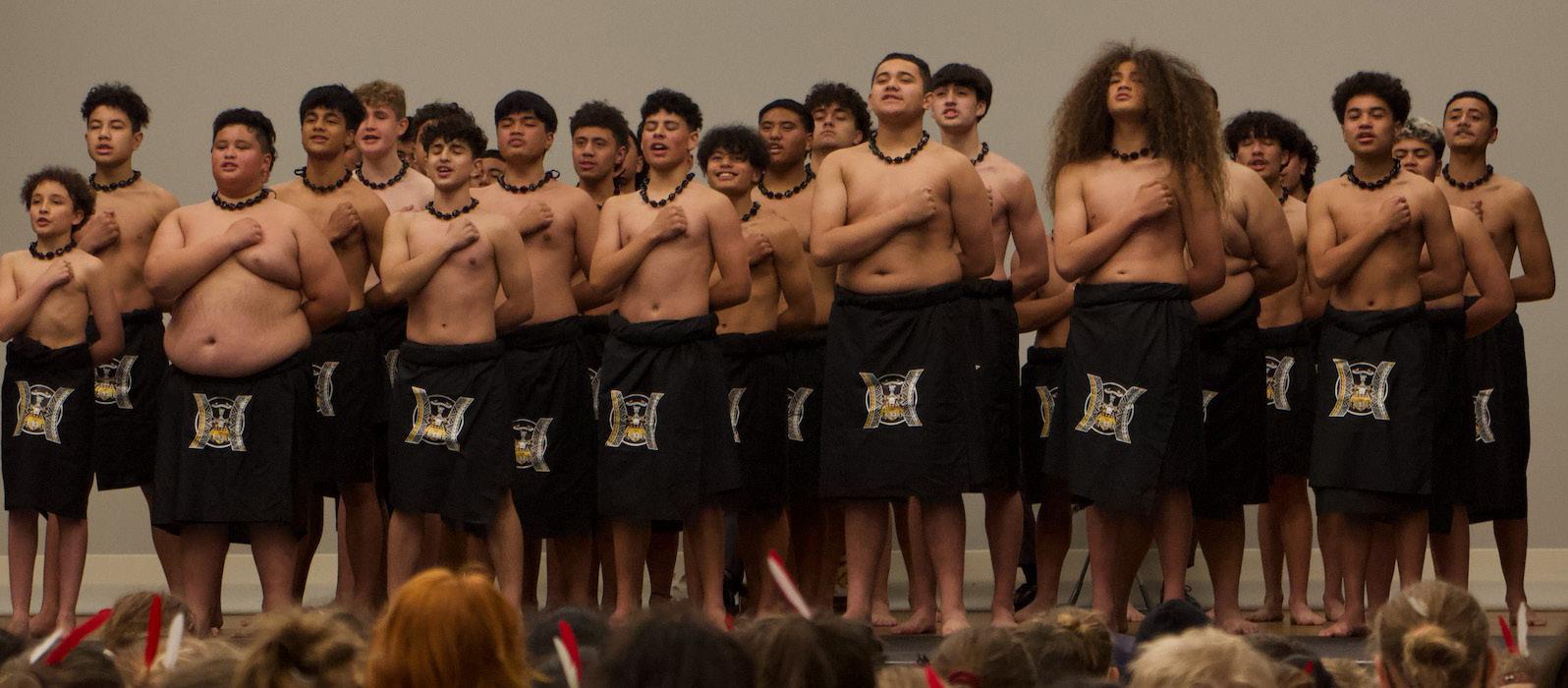
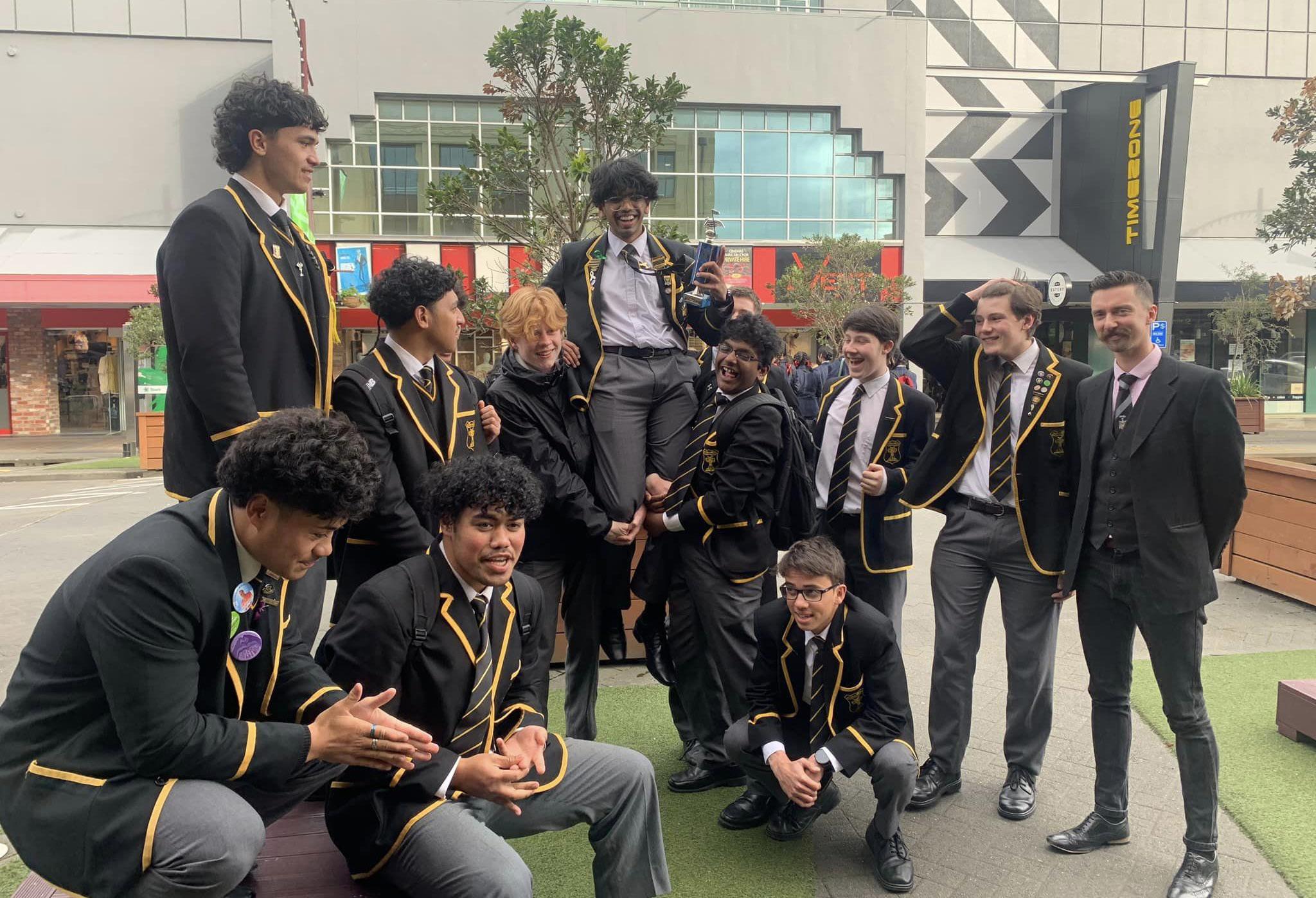
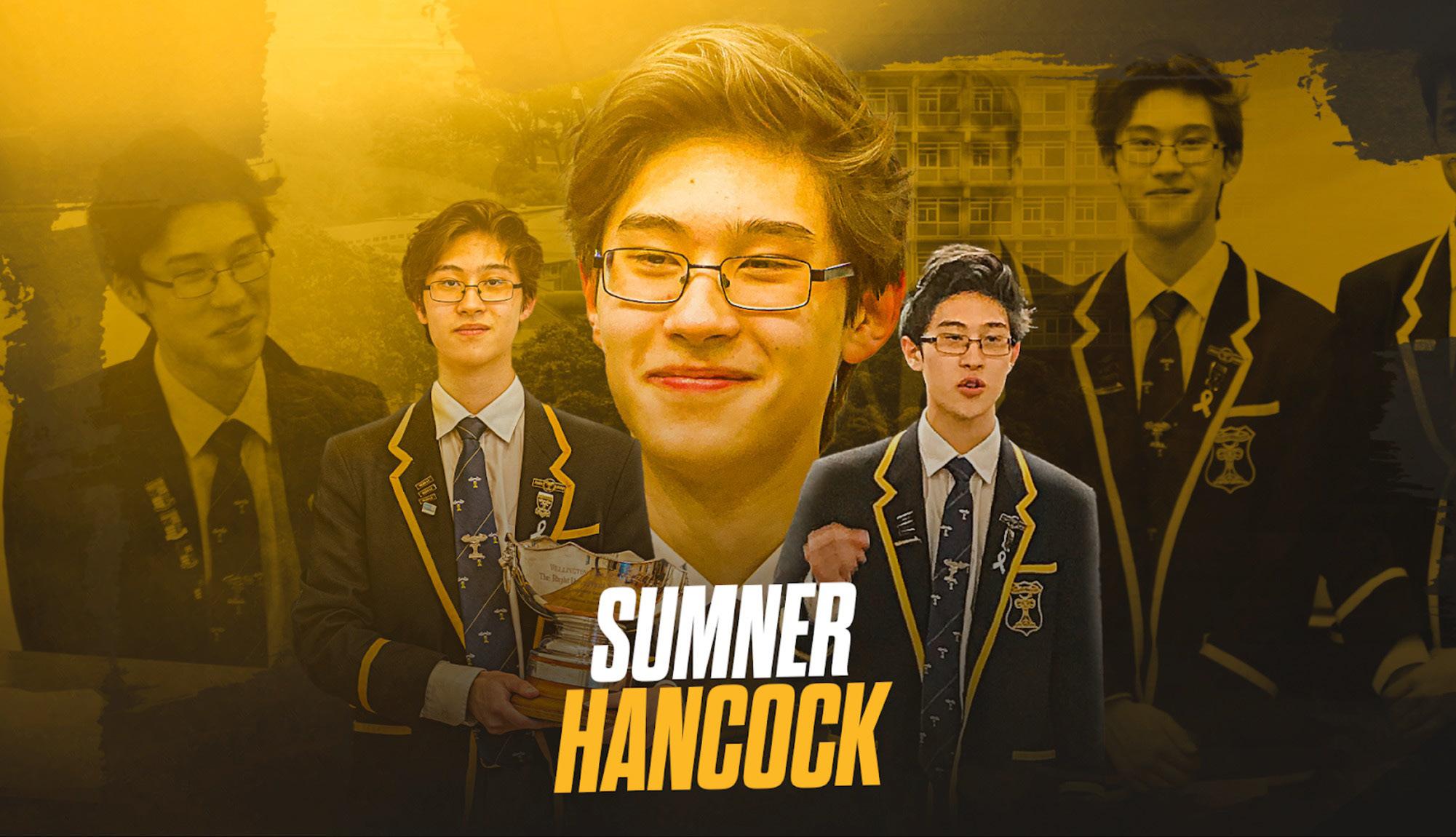
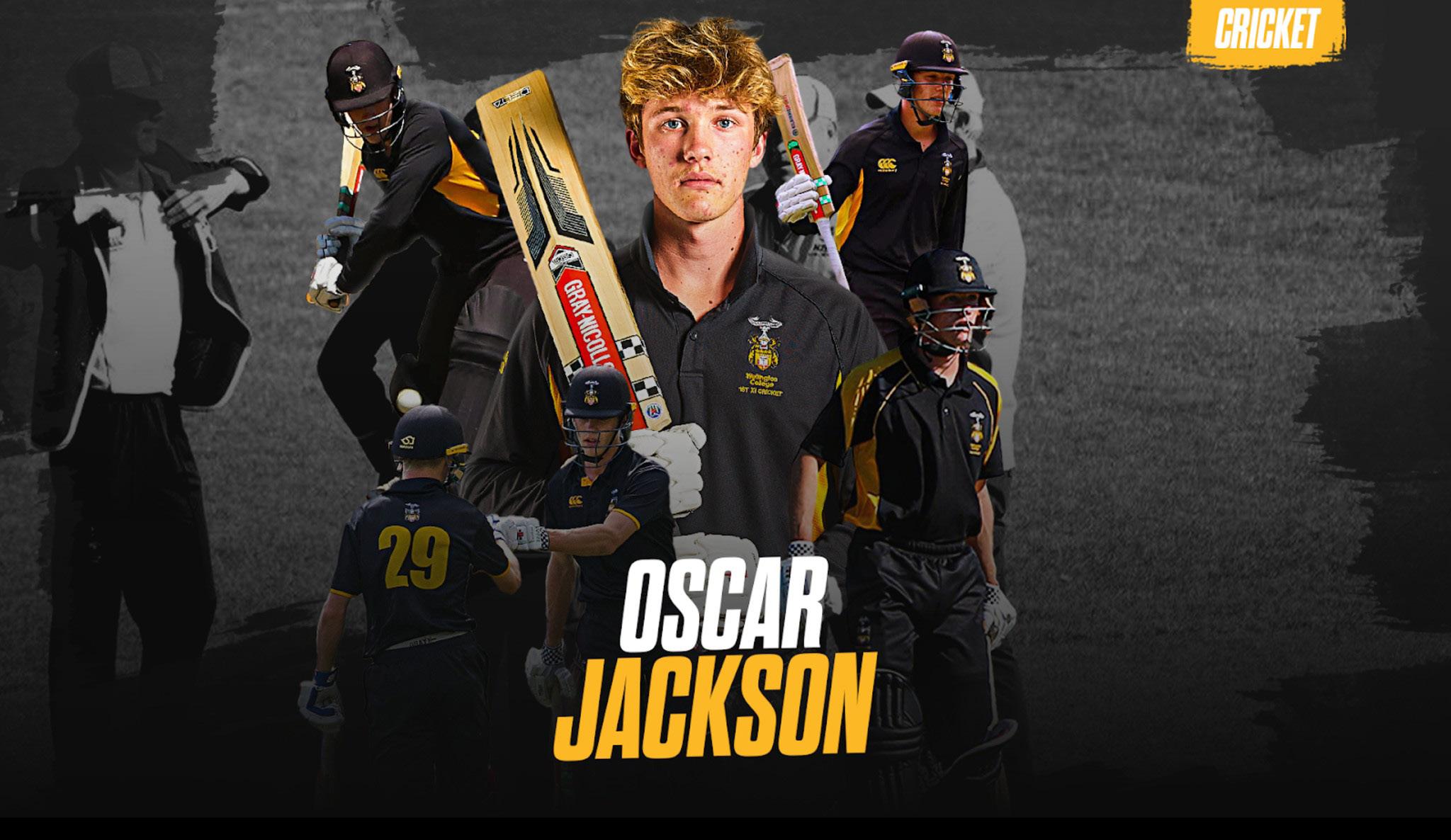
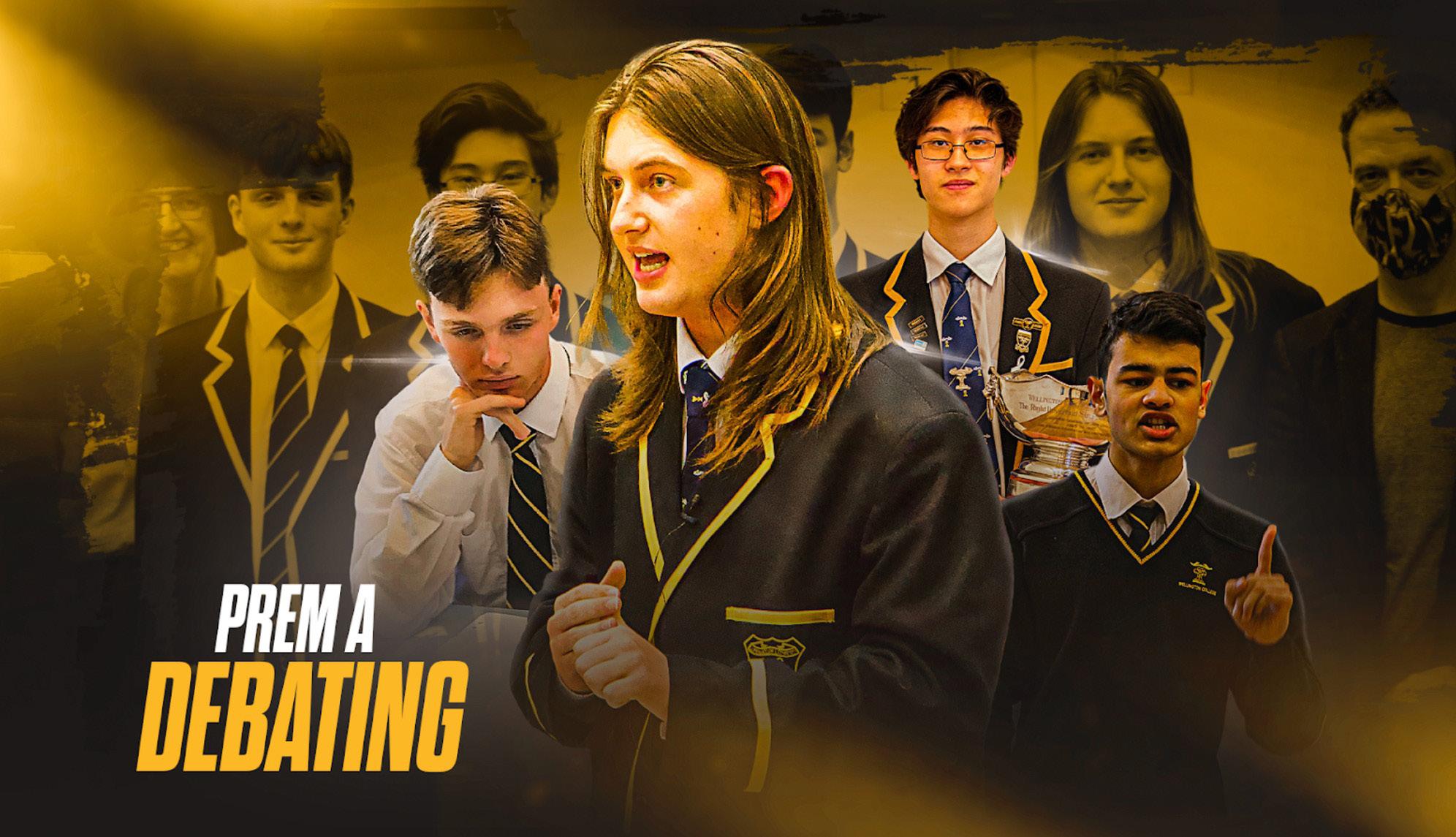

) The Unity Night Concert is a new student initiated performance evening that showcases the richness of cultural diversity in our school community. With invited performances from other schools and led by two Cultural Prefects Dhruv Menon and Chimney Madhusudhah, this was a fantastic night, full of colour, music, dance, humour and celebration!
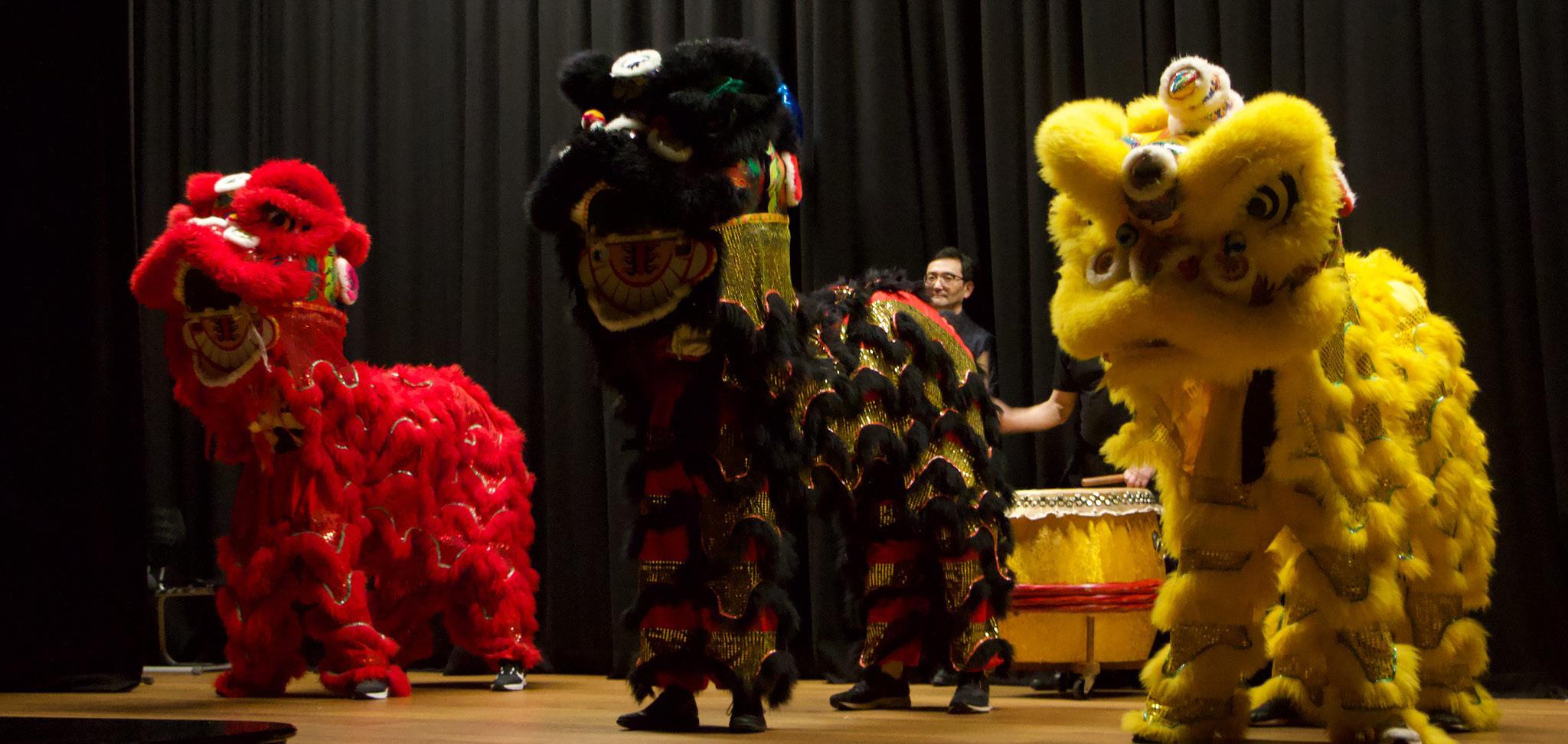
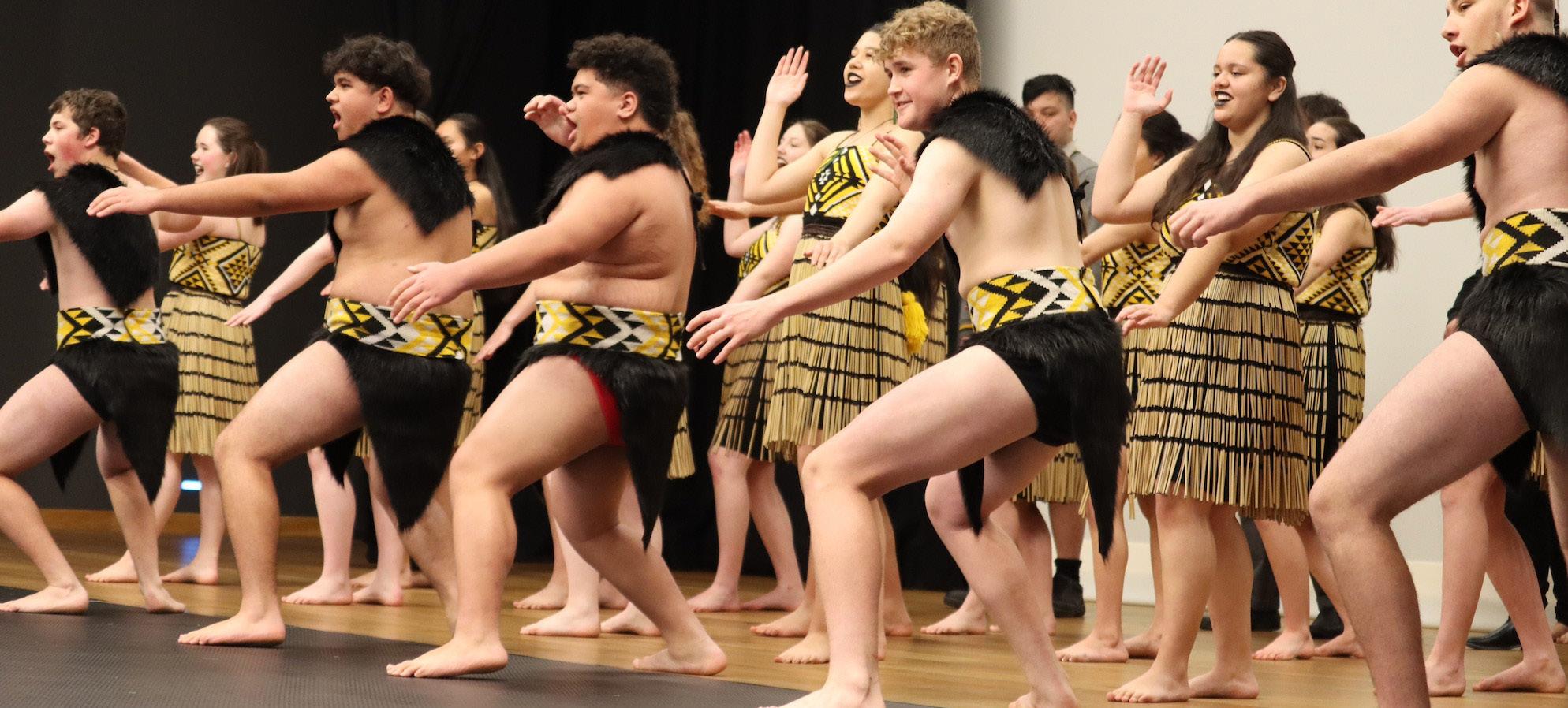
49 The LAMPSTAND, 2022
Senior Arts Person of the Year for Debating and Drama Senior Sportsman of the Year for Cricket
Arts Group of the Year Sports Team of the Year
: Congratulations to The Basin Boys who were awarded first place in the Lower Voices section of the Chorus Competition at the Young Singers in Harmony National Convention.
Refuelling 'Coll'
Since the inception of the Wellington secondary schools' premier competition in 1979, the Wellington College 1st XV has won double the number of titles (14) than the next leading school, St Patrick’s College, Silverstream (7).
It was almost inexplicable, then, that Wellington missed the semifinals of the Premiership in 2019 and 2020.
Between 2017 and 2021, Naitoa Ah Kuoi was Wellington College’s only NZ Schools' selection – a barren run for a school that has produced 34 All Blacks.
Quick, intuitive, and mature with a prodigious appetite for rugby knowledge, Stanley Solomon (Ngāi Tahu) has been first five for Wellington College the past two years.
The son of former Black Fern Erin Rush and Wellington Axemen stalwart Nigel ‘Solly’ Solomon, Stanley played for the New Zealand Schools' in their wins against the New Zealand Māori Ngā Whatukura U18s (27-24) and Fiji Schools (67-12) in Hamilton last month.
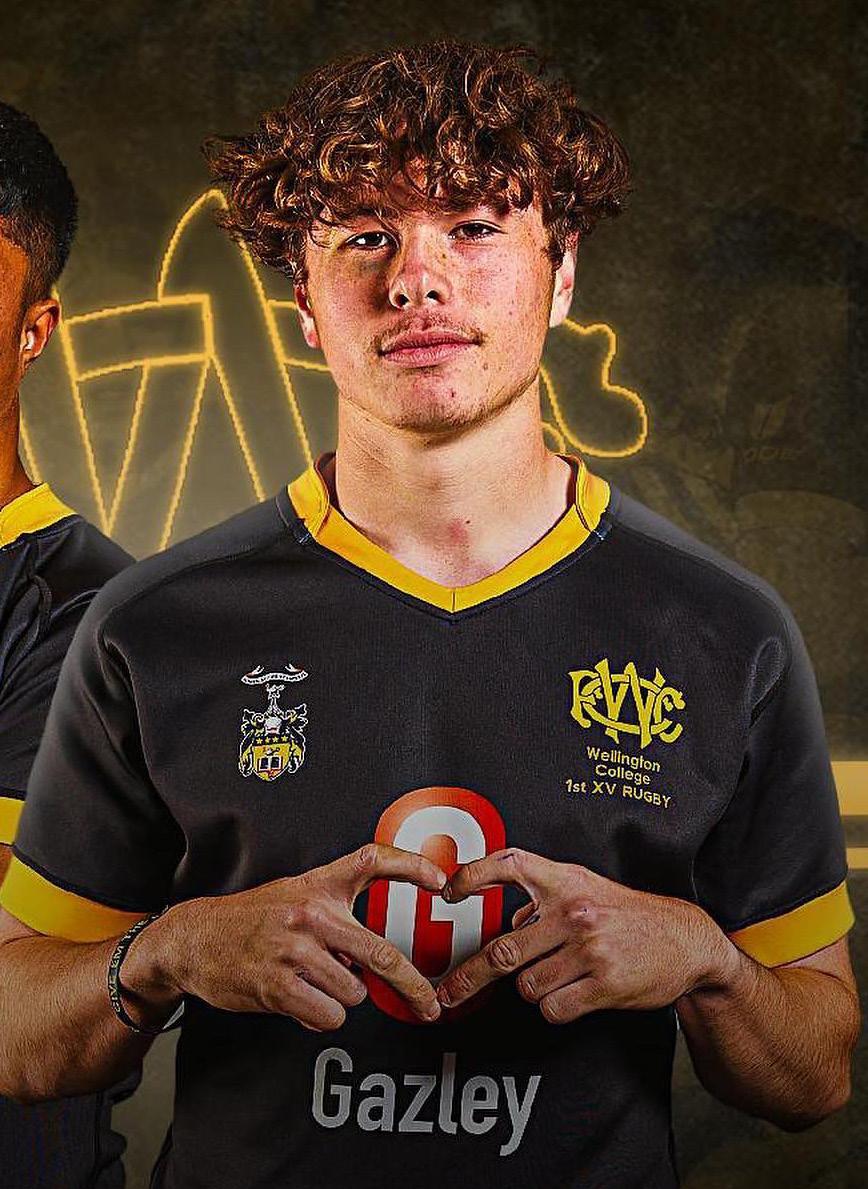
His selection in the national side would have been little surprise to those in the capital. In 2019, Stanley scored four tries in the premier U15 final won by Wellington College over Silverstream from a mile behind at halftime.
Despite a considerably smaller pack than their main rivals, the past two seasons have been kinder to the Wellington 1st XV, making the semifinals of the Premiership only to suffer heartbreaking single-point defeats to Silverstream (32-33 in 2021) and St Patrick’s College, Town (23-24 this year).
Stanley has been at the forefront of the resurgence, a rugby whippet not dissimilar to Damian McKenzie.
In 2021, he scored a 75-metre solo try against Silverstream that went viral and led to a first traditional success against the Catholics since 2016.
This season, he scored a similarly cracking try against Gisborne Boys’ High School and slotted a 35-metre angled penalty to beat Scots College (18-17) for the first time in six years.
In the Town semifinal, he was masterful, scoring all of Wellington’s points (two tries, two conversions, two penalties and a drop goal) as he almost single-handedly led his team to victory. A gassed pack surrendered a 20-5 advantage.
To be scored on in extra time along with the suspense of the referee and his assistant chatting for ages about it was heartbreaking, Stanley says. It was a great game, in all honesty, and I don’t think either team deserved to lose. The support from friends, family and students was spectacular, one of the best atmospheres that I’ve played in. I’ve loved being a part of such a special era in Wellington
College rugby and wouldn’t trade it for any school in the world.
A more diverse roll, greater choice of sports, and the emergence of Scots as a force are just some of the factors that contributed to a lull for Wellington College.
Former All Blacks Neemia Tialata [Class of 2000] and Piri Weepu coaching the side helped drive improvement, as did the arrival of a charismatic new Headmaster, Glen Denham. Stanley warmed to Denham right away.
Mr Denham is not only a great Headmaster but a great man. He has had a big impact on me in such a short amount of time. He restored the Coll brotherhood and supporters club. He makes sure all students’ uniforms are impeccable, standing at the bottom of the school drive every morning greeting the boys and telling them to pull up their socks or tuck their shirts in. He’s really helped me with advice and provided me with different career opportunities.
It’s plausible that rugby could be a career for Stanley. Only Ethan Webster-Nonu, George Prain and Tiaan Tauakipulu (Waratahs) of the 26-strong New Zealand Schools' team in 2018 haven’t played in the NPC yet. Josh Lord is already an All Black.
Stanley was chosen to start for NZ Schools' in the toughest of their two fixtures against the NZ Māori Ngā Whatukura U18s. An opportunistic charge-down try when his side was down 12-21 was a key blow in a narrow victory.
The Māori were a force to be reckoned with. Our plan heading into the game was to avoid up-front contact and to play in space. The Māori got stuck in from the get-go and it was a tough grind we had to battle out of. I got lucky with my try as their No 10 took a long time in kicking the ball out, so I thought I’ll charge through. It worked and I dived on the ball and scored.
Fiji represented a different challenge. They were big, strong, and relentless, after 60 minutes still offloading and running with a full ticker. I asked one of the players at the tournament dinner if he found the weather hot as it was 20 degrees and humid. He replied, ‘It was freezing.’ I couldn’t believe it. I was gasping for air, and they were out there shivering.
Rest, rehydration and refuel are three key elements to recovery Stanley was unaware of prior to the New Zealand camp. He conceded he’s not the best eater but application of the triple theory helped him feel better after games and ensured he was 'properly equipped with the right things in my body before going to sleep.'
Education around active stretching and mobility also helped “get the blood flowing to the right muscle groups.”
Stanley is unsure where he will be based in 2023.
50 The LAMPSTAND, 2022
RUGBY NEWS, November 2022: Adam Julian talks to one of the prime performers from last month’s NZ Schools’ programme, a young man with impeccable rugby genes.
:
to our
at the recent CSW Awards. (L-R): Nick Jones (Underwater
of the Year), Paddy Martin (Service to Sport Award), Finn Harland (Swimmer of the Year), Rob Greenfield (Volunteer of the Year for Football), Maxim Ericson (Rower of the Year) and Oscar Jackson (Cricketer of the Year). Oscar was a finalist in the overall Sportsman category and he was Wellington College's Sportsman of the Year for 2022.
;
;
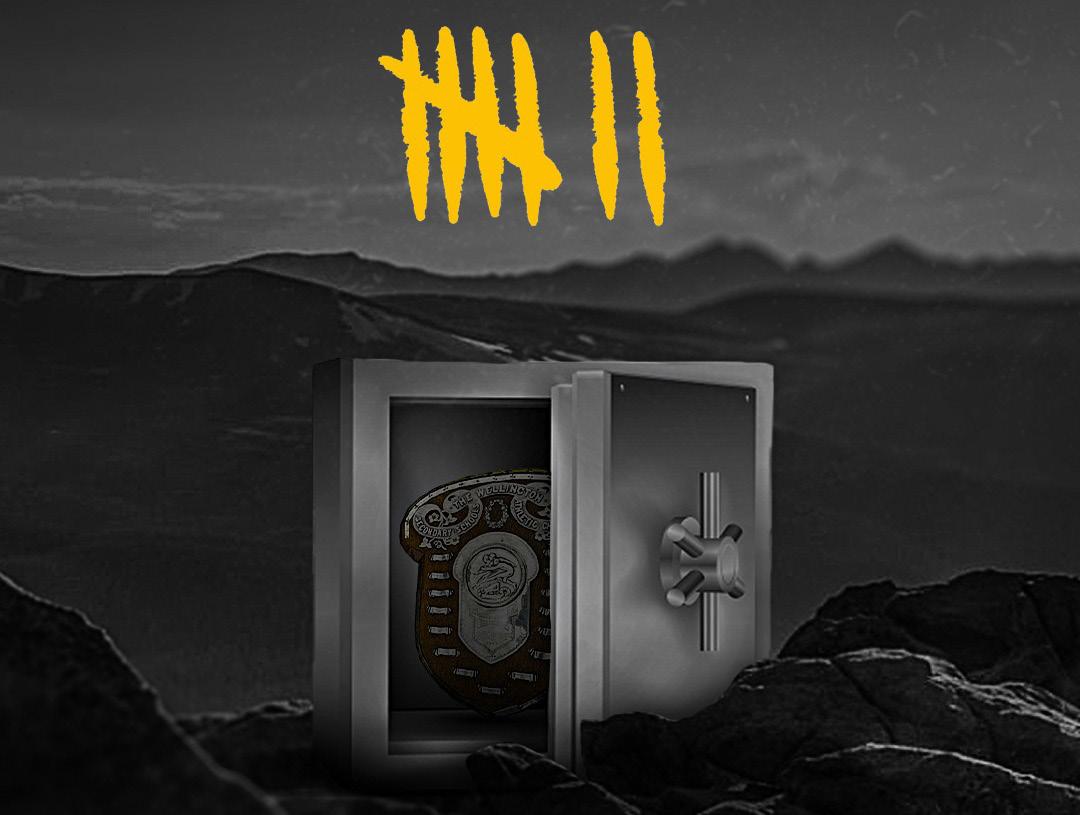
The evening was a great opportunity for a get-together between the ages and enjoyed by everyone.
; The Senior Floorball team won the national title beating local rival Rongotai College 1 - 0 in a very close competitive final, which was a reverse of last year's result.
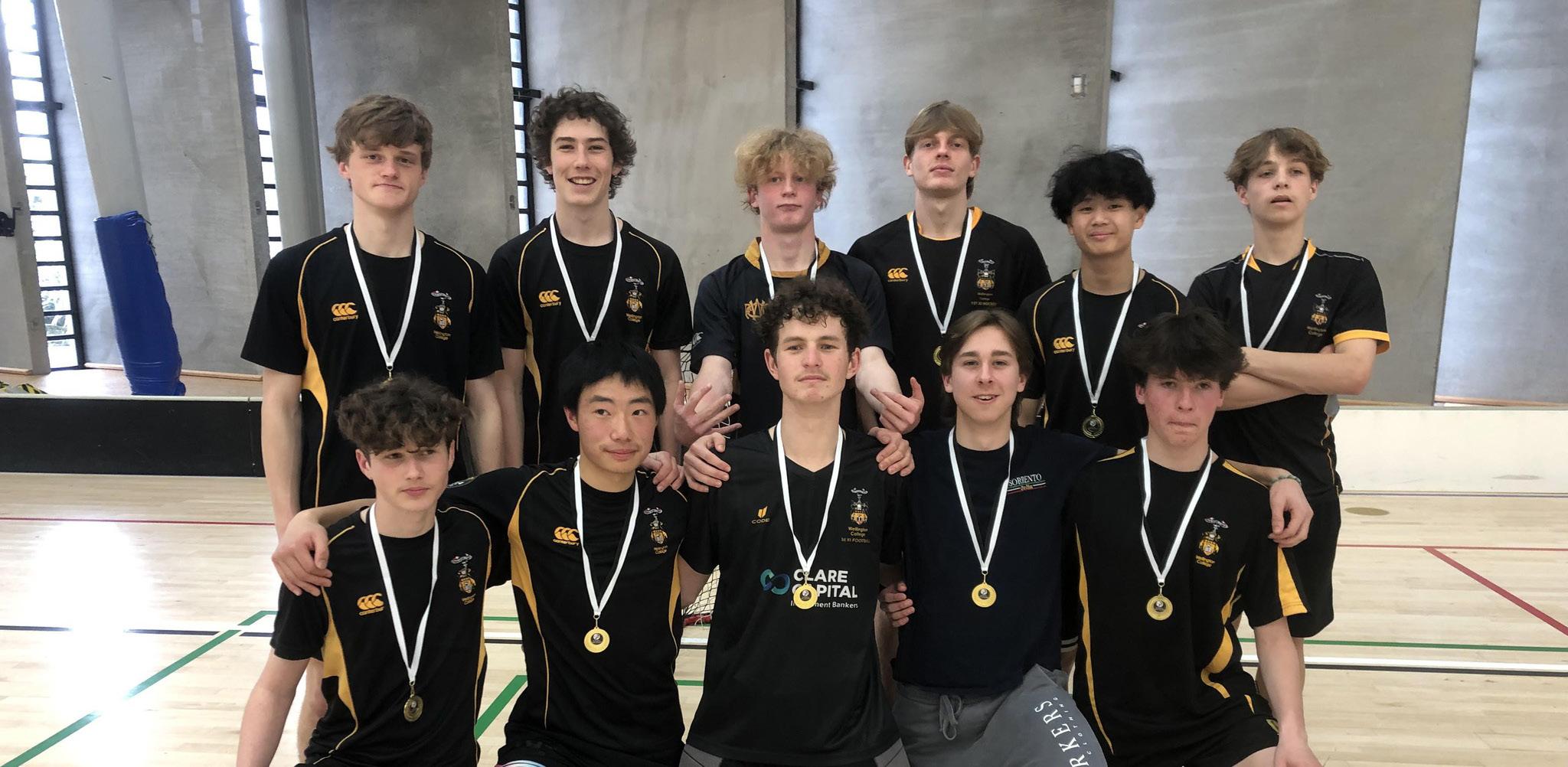
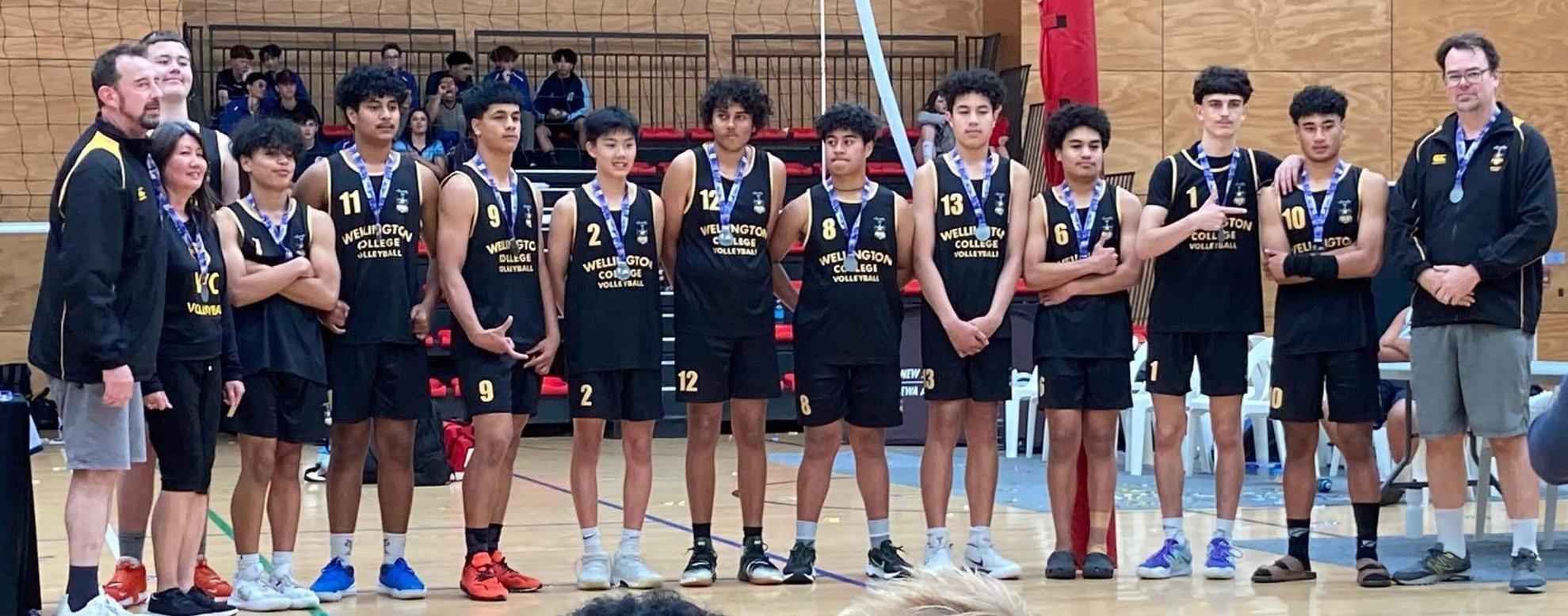
: The 1st XI Football retained the CSW Premiership. They went into the final as underdogs against HIBS. However, the 1st XI scored within the first couple of minutes to put the pressure on HIBS. The team held on into the second half until HIBS took a penalty. Both teams battled it out to the end, where the win was decided on penalties.
; Wellington College retained the McEvedy Shield for record seventh year in a row.
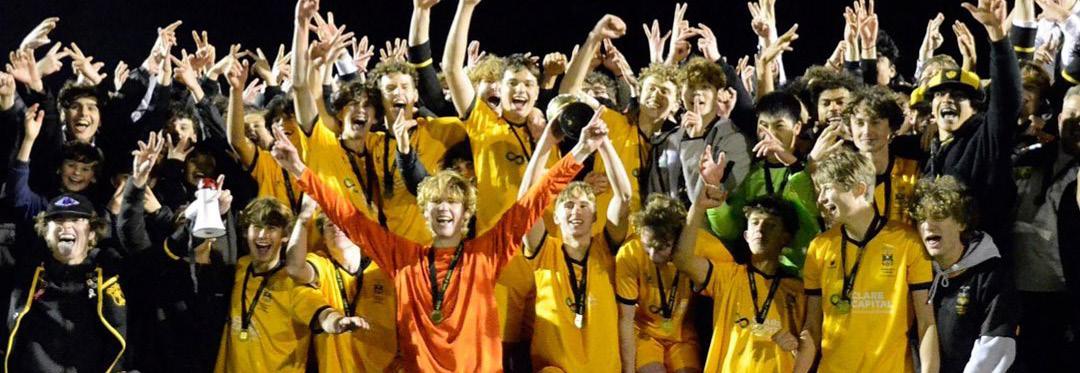

The rescheduled meet took place in blustery, cold conditions but all four teams gave 100% and the performances reflected this.
Wellington College finished on top with 219 points, St Patrick's Town 152, Silverstream 106 and Rongotai 83.
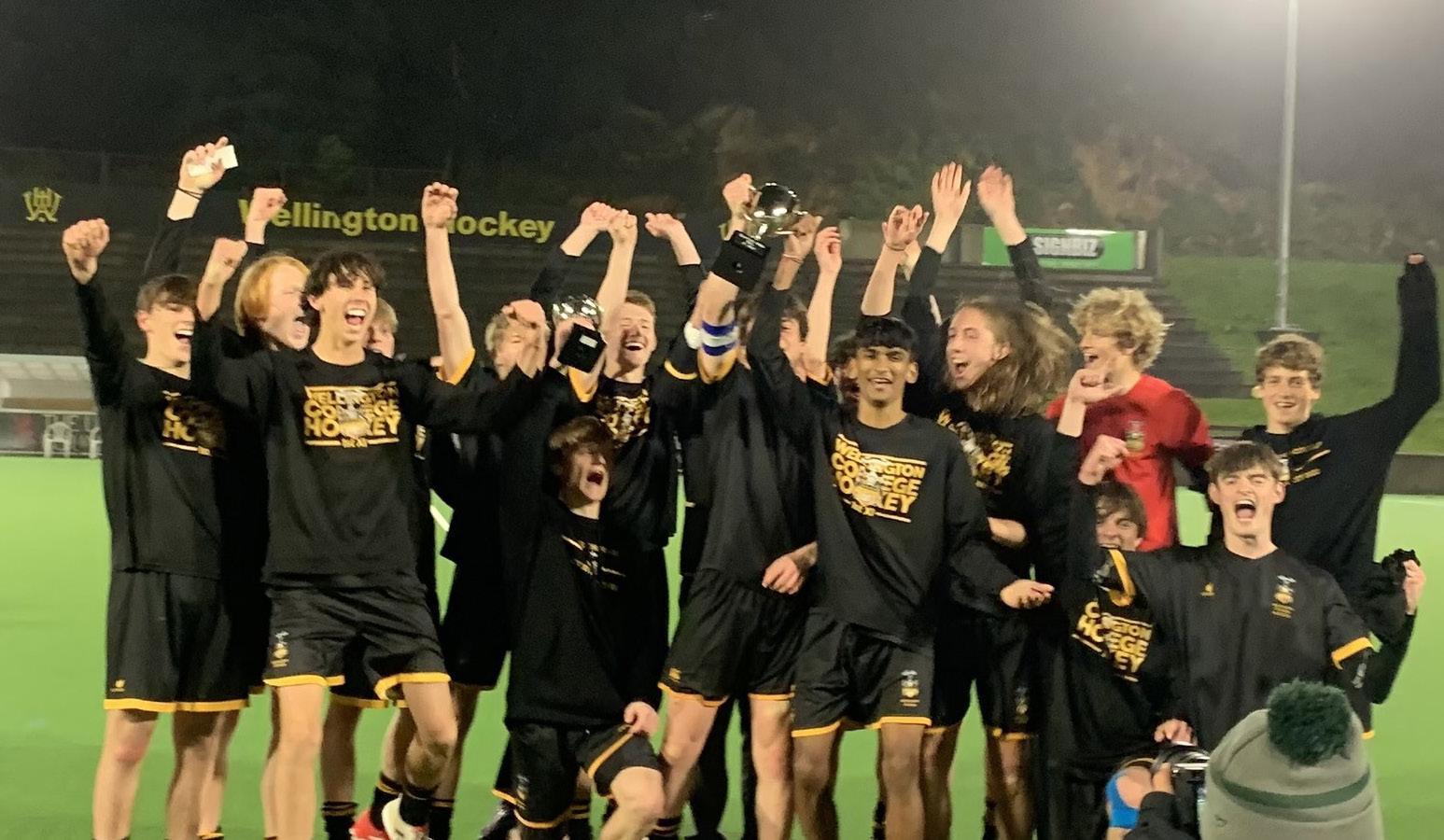
Congratulations to all concerned in particular Head Coach, Mark Tinkle [Class of 2004] and his coaches, including Chris Wells [Class of 1975] and Adrian Shaw [Class of 2000], co-Captains Corran Hanning and Stanley Solomon, and of course the team.
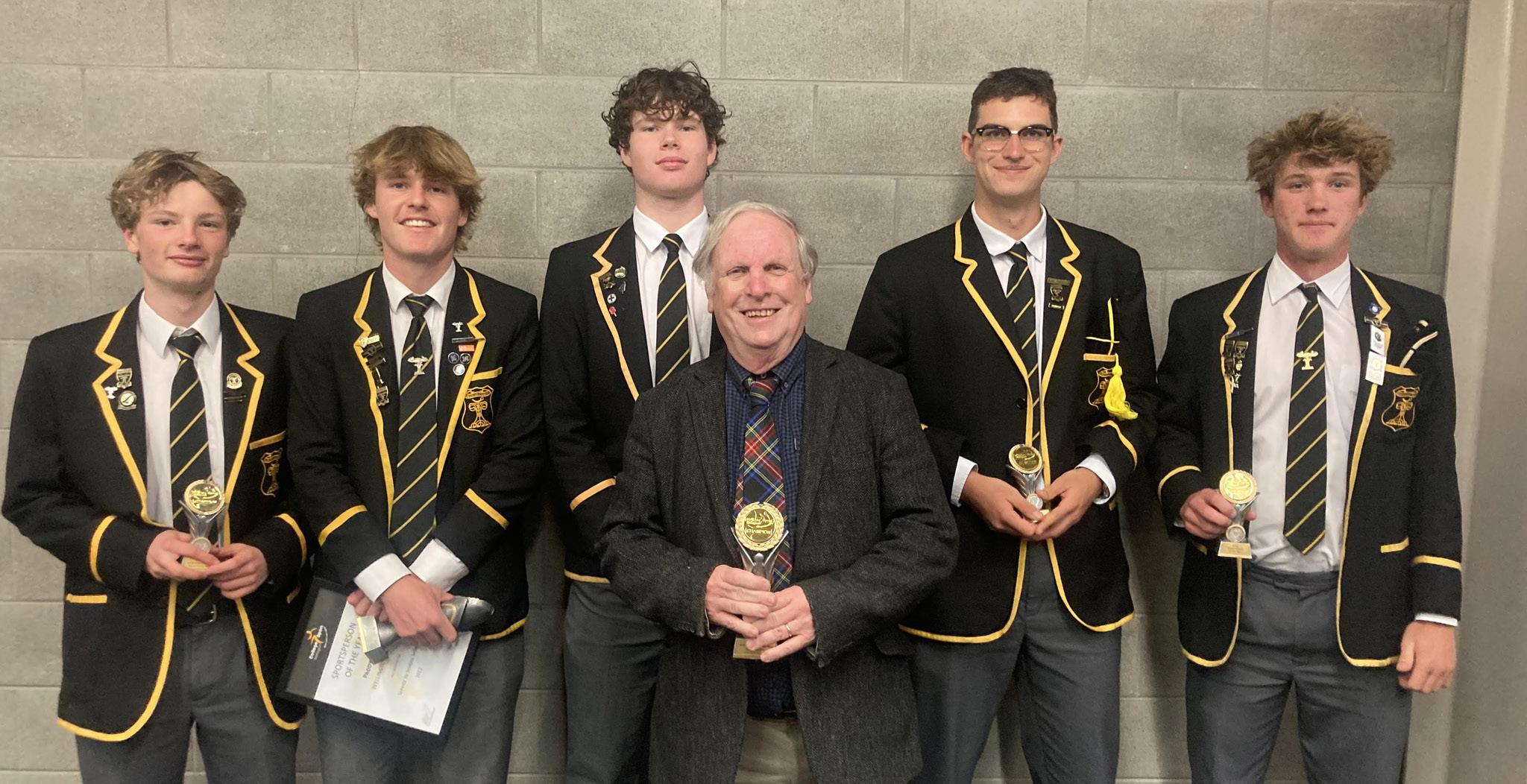
51 The LAMPSTAND, 2022
Winners at CSW Sports Awards. Congratulations
sportsmen who won recognition
Hockey Player
The College's Junior Volleyball team won the Silver Medal at NISS Championships in Tauranga in November - runners up to Hillcrest High School.
Wellington College 1st XI Football beat the Old Boys' Football XI 8-3 to retain the Old Boys' Football Trophy played in October on the artificial turf.
: The 1st XI Hockey retained their CSW Premier title, beating a competitive HIBS team 1-0. Dominating the play, Wellington College scored early through Captain, Olaf Baker, but weren't able to score another, keeping HIBS in the game throughout.
Obituaries

Deaths of Old Boys or former staff members of which the WCOBA is aware are listed here. Obituaries for those indicated by a R appear on the following pages. We extend our condolences to family and friends on their loss.
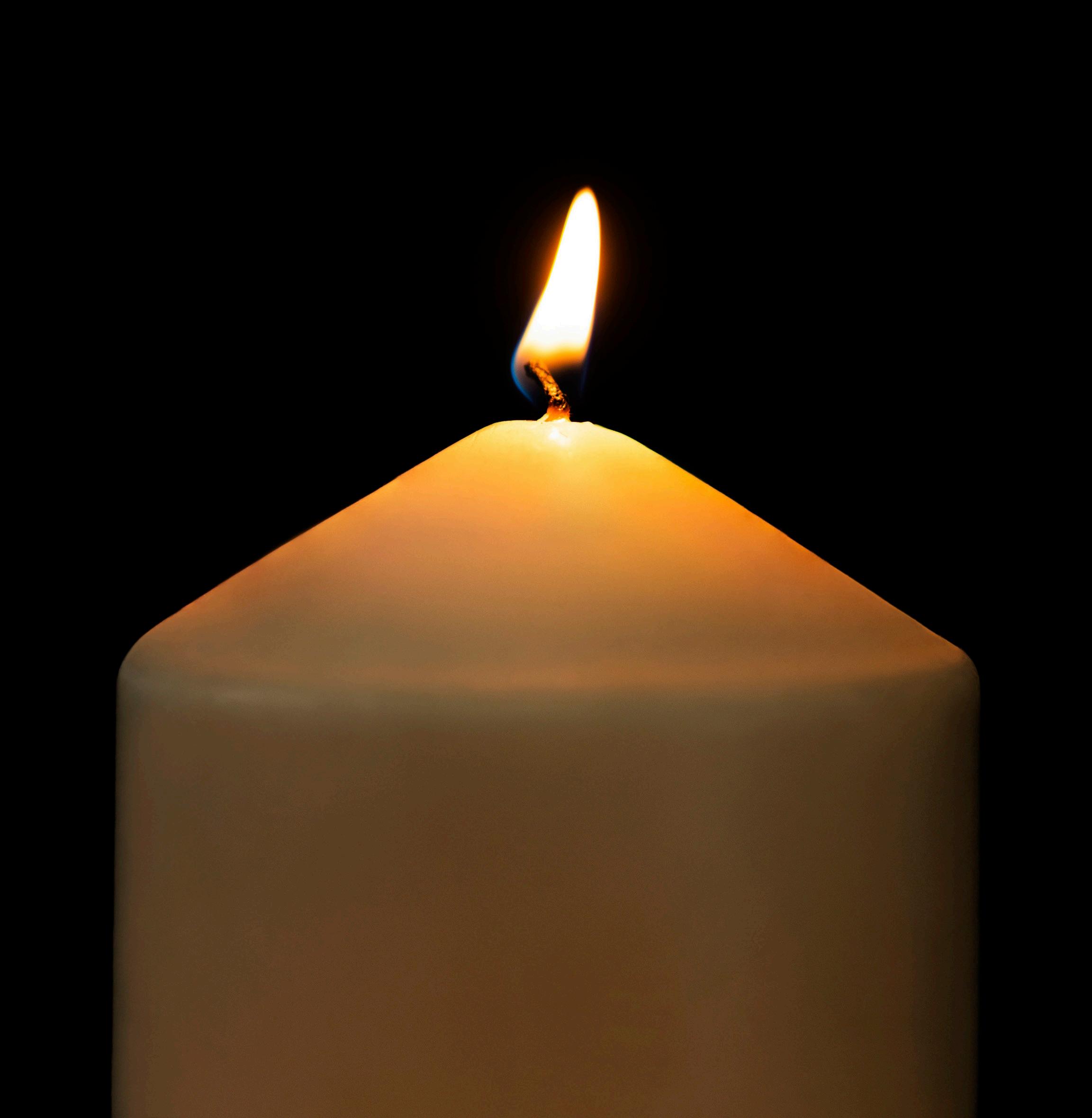
Class of 1938
BRYAN, Clifford Frederick [Bob]
1921 - 2022 Late of Nelson Wellington College 1936 - 1937 RNZAF Burma Campaign F/O Class of 1942
COX, Roslyn Woodrow [Woody] MD, MSc, D.Phil (Oxon), FRCPath, FRCPA
1924 - 2022 Late of England Wellington College 1941 - 1943 Dux 1942
STONE, Arthur Richard MB,ChB, FRACP
1926 - 2022 Late of Wellington Wellington College 1938 Positions held included Medical Superintendent in Chief to the Whanganui Hospital Board and Medical Director of the Alcohol and Drug Assessment Unit. In retirement, Richard had a keen interest in medical history. Class of 1943
SHEARER, Stanley Henry R
1926 - 2021 Late of Auckland Wellington College 1939 - 1942 Class of 1944
MACDONALD, William James Peter R 1926 - 2022 Late of Wellington Wellington College 1940 - 1943 Polar Medal 1958; New Zealand Antarctic Expedition for the International Geophysical Year 19571958. Retired DSIR geophysicist
SCLATER, Ian Kerr
1927 - 2022 Late of Auckland Wellington College 1940 - 1944 1st XI Cricket
POWER, Cedric Arthur B.SC., A.M.LC.E., M.N.Z.I.E 1933 - 2021 Late of Bay of Plenty Wellington College 1940 - 1943 Class of 1945
DANAHER, Martin Denis R B.E., M.I.C.E., M.N.Z.I.E., A.M.I.STRUCT. 1927 - 2022 Late of Auckland Wellington College 1941 - 1944
GROVER, Bruce Campbell 1932 - 2021 Late of Auckland Wellington College 1945
NEALE, Alexander Anthony 1927 - 2022 Late of Wairarapa Wellington College 1941 - 1944
Founding Member and Past President of Masterton Probus
Club. Honorary Member of NZ Meteorological Society and was an active researcher in the field of Meteorology, with a number of books and publications written.
Class of 1946
MAJOR, Fouad George R
1929 - 2020 Late of USA Wellington College 1942 - 1945
O’CONNOR, Raymond Gerald 1928 - 2018 Late of Sydney, NSW Wellington College 1942 - 1946 1st XI Hockey, 1st XI Cricket
ROAKE, John Hamish ONZM
1929 - 2021 Late of Bay of Plenty Wellington College 1942 Firth House
ONZM awarded in 1996 for Services to Gliding. Editor of 'NZ Gliding Kiwi', 1965 to 2008; NZ Team Manager at World Championships Poland 1968; Director World Gliding Championships, New Zealand 1995; Gliding NZ President 2002-2006; Life Member of Gliding NZ.
Class of 1947
BLADES, Basil
1928 - 2022 Late of Kapiti Wellington College 1943 - 1946 1st XI Football
CHARLES, Ronald Barry 1931 - 2022 Late of Wellington Wellington College 1943 - 1948
COOPER, Brian Trevor 1928 - 2022 Late of Wellington Wellington College 1943 - 1944
EVANS, David Mervyn
1929 - 2022 Late of Wellington Wellington College 1943 - 1947
GARDINER, Boyd Thomas
1930 - 2022 Late of Marlborough Wellington College 1943 - 1947 1st XV
ROBERTSON, Struan
1928 - 2022 Late of Bay of Plenty Wellington College 1945 - 1946 Firth House
SOLOMONS, Arnold Louis R
1930 - 2022 Late of Kapiti Wellington College 1943 - 1946
TRIPP, John Richard
1929 - 2022 Late of Auckland Wellington College 1943 - 1944
Farmer and former Dairy Co
Chairman and NZ Dairy Board member.
Class of 1948
ANDREWS, Maurice Bary
1931 - 2022 Late of Kapiti Wellington College 1945 - 1948
BUCHANAN, Reverend, John Dermot MNZM R
1930 - 2022 Late of Bay of Plenty Wellington College 1944 - 1946 Firth House
It was announced in the 2022 Queen’s Birthday Honours that Dermot was to receive the MNZM for Services to the Community, but sadly died prior to his investiture.
CALDWELL, Richard Pringle
1930 - 2022 Late of Kapiti Wellington College 1944 - 1947
DIXON, Horace [Harry]
1930 - 2022 Late of Wairarapa Wellington College 1944 - 1945
MORSHEAD, Frederick Keith
1930 - 2022 Late of Kapiti Wellington College 1944 - 1948
SPOLSKY, Bernard Julius, Professor R
1932 - 2022 Late of Israel Wellington College 1944 - 1948
TINGEY, Norman Barry
1929 - 2022 Late of Wellington Wellington College 1944 - 1947 WC Staff 1966-68, 1973-74
WHITE, Professor, Bruce Langton R
1931 - 2022 Late of Canada Wellington College 1944 - 1948
Class of 1949
BERNARD, Victor Rayner Dr
1931 - 2021 Late of Bay of Plenty Wellington College 1945 - 1949 Firth House
Former GP Ngati Kahu Hauora Clinic
BOURNE, Ian Grant, Archdeacon R
1932 - 2022 Late of Canterbury Wellington College 1945 - 1950
BROOKE-ANDERSON, Bryce
1931 - 2022 Late of Bay of Plenty Wellington College 1945 - 1947 Firth House
52 The LAMPSTAND, 2022
Class of 1949
BUCKTHOUGHT, Russell Ernest
1931 - 2022 Late of Northland Wellington College 1945 - 1947 Firth House
HOLMES, Thomas Graham
1929 - 2022 Late of Auckland Wellington College 1944 - 1949 1st XI Football
HARRIS, Desmond George
1932 - 2021 Late of Hawkes Bay Wellington College 1945 - 1948 Firth House
JARVIS Sydney Alexander
1930 - 2021 Late of Bay of Plenty Wellington College 1945 - 1947 Firth House
MEXTED, Milton Owen
1931 - 2022 Late of Kapiti Wellington College 1945 - 1949 Firth House, 1st XV
SCHOLES, Gordon Harold R

1931 - 2020 Late of Bay of Plenty Wellington College 1945 - 1948 Firth House
WOODWARD, Donald Edward Darke [Ted]
1931 - 2022 Late of Marlborough Wellington College 1946 Firth House
40+ years with Marlborough Express
YATES, William Edward John [Bill]
1932 - 2022 Late of Auckland Wellington College 1945 - 1949 1st XV
Class of 1950
BJORNGAARD Ronald George
1932 - 2021 Late of Bay of Plenty Wellington College 1946 - 1949 Firth House
CURTIS, John Billing
1933 - 2021 Late of Bay of Plenty Wellington College 1946 - 1948
McKENZIE, Richard Tilyard [Dick] R
1932 - 2022 Late of Hawkes Bay Wellington College 1946 - 1950 1st XV
MOFFAT, John Alexander
1932 - 2022 Late of Wellington Wellington College 1946 - 1949
MOLLER, Donald Garth
1931 - 2022 Late of NSW Wellington College 1946 - 1950
VINCENT, Leonard Charles [Len]
1933 - 2022 Late of Wellington Wellington College 1946 - 1949
Class of 1951
GAUNT, Christopher Edward
1933 - 2022 Late of Wellington Wellington College 1947 - 1951
WC Staff: 1970-72
Member, Tawa Historical Society
GREENBANK Donald William
1933 - 2022 Late of Bay of Plenty
Wellington College 1947
HUMPHRIES, Murray McLean
1933 - 2022 Late of Marlborough Wellington College 1947 - 1951
KNIGHT, John Monro
1933 - 2022 Late of Wairarapa Wellington College 1947 - 1948 Firth House
O'DONNELL, Warren Charles [Chas] R
1934 - 2021 Late of Wellington Wellington College 1947 - 1951
ROBINSON, Richard Hepworth [Dick]
1933 - 2021 Late of Bay of Plenty Wellington College 1947 - 1951
Author of ‘Farm Tractors in New Zealand’. Pub: 1989 and ‘A Century of Farm Tractors’., Pub: 2004.
TUNNELL, James Martin [Jim]
1933 - 2022 Late of Auckland Wellington College 1948 - 1951 Firth House, 1st XV Retired Principal of Leabank Primary School from 1984 to 2000.
Class of 1952
ALMAO, Charles Quentin Martin R
1934 - 2022 Late of Waikato Wellington College 1948 Firth House
HARTSHORNE, Barry John
1935 - 2022 Late of Manawatu Wellington College 1948 - 1951
MORGAN, Victor Henry
1935 - 2020 Late of Taranaki Wellington College 1948 - 1951
OSBORNE, Alan John
1934 - 2022 Late of Horowhenua Wellington College 1950 - 1950
Class of 1953
COOMBER, Brian Stanley R
1935 - 2022 Late of Wellington Wellington College 1949 - 1953 Prefect, 1st XV
DOUGLAS, Kenneth George ONZ R
1935 - 2022 Late of Wellington Wellington College 1949 - 1953
McCORKINDALE, Ralph Benson
1936 - 2022 Late of Kapiti Wellington College 1949 - 1954 Prefect, 1st XI Hockey
WAH, Ivan Paul R
1932 - 2022 Late of Wellington Wellington College 1949 - 1950 Firth House
Class of 1954
ALLEN, Terrence David (Terry)
1937 - 2022 Late of Canterbury Wellington College 1950 - 1952
BEAGLEHOLE, Giles Cawte
1936 - 2022 Late of Canterbury Wellington College 1950 - 1953
CAMERON, Duncan Alexander (Slug)
1937 - 2022 Late of Bay of Plenty Wellington College 1950 - 1955 Firth House, Prefect
FLETT John Alexander
1936 - 2021 Late of Bay of Plenty Wellington College 1950 - 1952
McCAW, James Ian
1935 - 2022 Late of Bay of Plenty Wellington College 1950 - 1953 RNZAF
Class of 1955
DICKENS, Bevan Charles
1938 - 2022 Late of Kapiti Wellington College 1952 - 1953
LYND, William David [Bill]
1937 - 2021 Late of Auckland Wellington College 1951 - 1954
Class of 1956
COOPER, Ross Francis
1939 - 2022 Late of Kapiti Wellington College 1952 - 1957
EVANS, Noel Geoffrey
1939 - 2022 Late of Kapiti Wellington College 1952 - 1956
GRANT, Derrill Thomas
1939 - 2022 Late of Kapiti Wellington College 1952 - 1955
JACKSON, Peter John
1939 - 2021 Late of Northland Wellington College 1954 - 1956
UTTING, Neville John
1938 - 2021 Late of Waikato Wellington College 1952 - 1953 Firth House
WALLACE, Euan Geoffrey Robert
1938 - 2022 Late of Hawkes Bay Wellington College 1952 - 1955 Honorary Life Member, NZ Institute of Agricultural and Horticultural Science.
Class of 1957
BELL, Roger Anthony
1939 - 2022 Late of Bay of Plenty Wellington College 1953 - 1955 Firth House
KOOLMAN, Anton R
1940 - 2022 Late of NSW Wellington College
SPENCE, Arthur William
1939 - 2021 Late of Hawkes Bay Wellington College 1953 - 1956
WELLINGS, Dr. Peter Caradus R MB ChB (Otago) 1963, DO RCS (Eng) RCP (Lond) 1968, FRCS (Eng) 1972, FRACS 1974, FRANZCO 1983
1939 - 2022 Late of Wellington Wellington College 1953 - 1957 Firth House
WRIGHT, Alan Bernard R
1940 - 2022 Late of Hawkes Bay Wellington College 1953 - 1958 Prefect, 1st XV, 1st XI Cricket, McEvedy Shield Team
Class of 1958
HOLMES, Gavin Stuart
1940 - 2022 Late of Wellington Wellington College 1954 - 1955
JACKSON, Malcolm Lawrence
1941 - 2022 Late of Wairarapa Wellington College 1954 - 1957
KEY, Gary Clifton
1941 - 2022 Late of Kapiti Wellington College 1954 - 1958
METGE, Kevin James Pierre
1941 - 2022 Late of Horowhenua Wellington College 1954 - 1956
53 The LAMPSTAND, 2022
WRIGHT, Norman Webster
1940 - 2022 Late of Wellington Wellington College 1954 - 1955 Class of 1959
MOSES, Kenneth Roger R
1942 - 2022 Late of Auckland Wellington College 1955 - 1958
SINCLAIR, Ian Bruce
1941 - 2022 Late of Bay of Plenty Wellington College 1955 - 1959 Class of 1960
BROWNE, Christopher Mervyn R
1944 - 2022 Late of Virginia, USA Wellington College 1957 - 1960
HARPER, John Alain
1943 - 2021 Late of Waikato Wellington College 1956 - 1960 Prefect, Firth House
SHERRING, Stephen Peter
1943 - 2022 Late of Kapiti Wellington College 1956 - 1960 Firth House
TROTMAN, Alistaire Clynton [aka Clynton Cooper-Alyn]
1942 - 2022 Late of Victoria Wellington College 1956 - 1959 Class of 1961
MIRAMS, David Paterson
1943 - 2022 Late of Wellington Wellington College 1957 - 1960 Class of 1962
ALLEN, Gary Sol
1945 - 2022 Late of Wellington Wellington College 1958 - 1962
CRESSWELL, Dr, Lyell Richard R
1944 - 2022 Late of Scotland Wellington College 1958 - 1963
FELL, Roger Barraclough R
1944 - 2021 Late of USA Wellington College 1958 - 1962
HUGHES, Roger David, PhD
1946 - 2021 Late of England Wellington College 1958 - 1962 Dux 1962
LYSAGHT, Eric Philip
1944 - 2021 Late of Wellington Wellington College 1958 - 1960
McIVOR, Ewen George
1944 - 2022 Late of Auckland Wellington College 1958 - 1959
STRONG, Peter Alexander
1945 - 2021 Late of Bay of Plenty Wellington College 1958 - 1962 Firth House NZ Special Services Medal (Erebus Embalming Team)
Class of 1963
CAVANAGH, Kenneth James
1945 - 2022 Late of Manawatu Wellington College 1959 - 1961
LUMSDEN, Richard John
1946 - 2021 Late of Auckland Wellington College 1959
MERRINGTON, Michael John [Mike]
1945 - 2022 Late of Auckland Wellington College 1959 - 1961
STOCKER, John Christopher
1946 - 2022 Late of Bay of Plenty Wellington College 1960 - 1963 Firth House
Class of 1964
McALLISTER, Lauchlan [Mac]
1947 - 2022 Late of Kapiti Wellington College 1960 - 1962
OLSEN, Michael William [Mike] R
1946 - 2022 Late of Kapiti Wellington College 1960 - 1962 Firth House
TAYLOR, Terence Harold Charles [Terry]
1947 - 2022 Late of Horowhenua Wellington College 1960 Class of 1965
RAMSDEN Peter Te Rangi Hiroa MNZM R
1947 - 2022 Late of Canterbury Wellington College 1961 - 1964 Firth House
SMITH, Ross Wilson
1947 - 2022 Late of West Coast Wellington College 1961 - 1965
SPEED, Dr Richard Allan
1947 - 2022 Late of Bay of Plenty Wellington College 1961 - 1965 1st XI Football
Retired obstetrician and gynaecologist
WILKINSON, Anthony Ralph [Tony]
1947 - 2022 Late of Wairarapa Wellington College 1961 - 1964 Class of 1966
GORDON, Don Graham
1948 - 2022 Late of Wellington Wellington College 1962 - 1965 REDSTONE, Peter Garth
1948 - 2022 Late of Tasmania Wellington College 1962 - 1964 Firth House Class of 1967
BRUCE-SMITH, Michael
1949 - 2022 Late of Wairarapa Wellington College 1963 - 1965
INSTONE, Antony, Neal [Tony]
1950 - 2022 Late of Wellington Wellington College 1963 - 1967
STEPHENS, Donald Maxwell
1950 - 2022 Late of Wellington Wellington College 1963 - 1964 Class of 1968
CASSELS, Alasdair Lorne R
1950 - 2022 Late of Canterbury Wellington College 1964 - 1968
Class of 1971
BOSWELL, Kevin Arthur
1953 - 2022 Late of Wellington Wellington College 1967 - 1971
VA’AI, Vaepule Alo Vaemoa, Justice R
1952 - 2020 Late of Samoa Wellington College 1968 - 1972 Firth House Prefect, 1st XV Class of 1972
SHIELDS, Mark Raymond
1954 - 2022 Late of Wellington Wellington College 1968 - 1969 Class of 1973
BISS, John Tattersall

1956 - 2022 Late of Hawkes Bay Wellington College 1969 - 1973 Firth House, Prefect Class of 1974
BARBER, Peter Norman R
1957 - 2022 Late of Wellington Wellington College 1970 - 1974 Class of 1975
DRAKE, Michael Richard Arthur
1957 - 2022 Late of Wellington Wellington College 1971 - 1975 Class of 1982
RILEY, Vernon James
1964 - 2021 Late of Bay of Plenty Wellington College 1978 - 1981 Class of 1986
ROWE, Cameron John
1968 - 2022 Late of Queensland Wellington College 1983 - 1984
STOCKLER, Markus Franz [Mark]
1968 - 2022 Late of Wellington Wellington College 1982 - 1984 Class of 1988
POPE, David Michael
1971 - 2022 Late of England Wellington College 1984 - 1988 Class of 1989
McGRATH, James Peter Miller
1971 - 2021 Late of USA Wellington College 1985 - 1988 Class of 1994
CASTLE Samuel Paul
1976 - 2022 Late of Hawkes Bay Wellington College 1990 - 1994 Class of 1996
ACTON, Jay Robert
1978 - 2022 Late of Auckland Wellington College 1992 - 1996 Prefect
Staff Members
MAINWARING, Jennifer Anne [Jenny]
1946 - 2022 Late of Wellington
WC Staff Member: 1991 - 2009 Granddaughter of W A Armour
NEELY, Don MNZM MBE R
Wellington College Archives
READ, Ronald Frederick
1930 - 2021 Late of Waikato
WC Staff Member 1955 - 1961
54 The LAMPSTAND, 2022
Life Stories
QUENTIN ALMAO
Class of 1952
Quentin resigned his warrant as Hamilton Crown Solicitor in the year 2000. The following April, in a retrospective piece celebrating his contribution to the city's legal community, a headline in the Waikato Bay of Plenty District Law Society Newsletter declared The King is 'Dead' - Long Live the King. It was a pardonable, aptly humorous exaggeration for a jurist who had been with the Crown Solicitor's Office since his admission to the bar in April 1964 and who had served as Hamilton Crown Solicitor since 1983.
Ironically, Quentin was renowned for his 'war stories', of regaling colleagues with tales of cases and incidents past, sometimes with himself as the butt of the joke and often in Hamilton High Court tearoom, where he held a less formal form of 'court'. Yet, with one minor exception, he never made a public statement of any kind about any trial. By nature a raconteur and people person he was also inherently humble and - as his profession required - the soul of discretion.
Quentin was born 7 November, 1934 in Nadi, Fiji, the only child of Ken and Dorothy Almao. Ken was a District Officer in the Colonial Service. It was an idyllic childhood, exposure to Fijian choirs and early swimming experiences leading to a love of music, the sun and the water. Retaining an identification with Fijian culture and the Fijian people throughout his life, he considered himself a 'boy from the tropics'.
With the threat of Japanese invasion, Quentin was evacuated to New Zealand in 1941, staying with an aunt and uncle in Auckland and attending Three Kings Primary School. Youthful adventures were had on and around One Tree Hill andsomewhat surreptitiously at the races.
In 1943, Dorothy returned to New Zealand, while Ken enlisted in the army and was deployed overseas. Mother and son relocated to Wellington. Quentin attended Scots College, initially as a day student then, with the war's end and Dorothy's return to Fiji, as a boarder.
With Ken, an Old Boy of Wellington College, in 1948 Quentin followed in his father's footsteps, experiencing the challenges of a single sex boarding school. Quentin learnt independence, self-discipline and the capacity to adapt to surroundings, becoming, in the parlance of the day, an 'okay chap'. He also established himself as an athlete of considerable prowess
The following year, Quentin joined his parents in Hong Kong, where he completed his secondary education at King George V School. He set numerous records in sprinting and long jump and furthered his interest in language with the assistance of at least one Russian girlfriend
Returning to New Zealand in 1953, he completed a year at Victoria University before travelling to England and Oxford University. Although details about an unscheduled stopover en route in Panama are murky, it left Quentin with a dislike of rum and a determination to never again combine alcohol with sea travel. He read law at Brasenose College and continued to excel in athletics, chairing the Athletics Club.
Graduating in 1957, Quentin trained as a barrister at the Middle Temple Inn of Court in London. He then taught geography for a year at a secondary school. Enjoying the experience immensely, he came to believe that his true vocation lay in education.
In 1960, Quentin married Kirsty. The young couple shifted to Sarawak – now a state of Malaysia - where Ken was now
commissioner of taxation. With bookies well established within the courthouse, openly taking odds on trial outcomes, it was a challenging environment in which to begin one's career in the law. The stress involved representing a young man facing the death penalty, contributed to Quentin developing an ulcer.
In 1962, with the birth of first son Martin, the Almaos relocated to Auckland. Quentin briefly toiled as a window cleaner. When the family first shifted to Hamilton, he was employed as a trust officer at NZ Insurance.
Appointment to the Crown Solicitor's Office afforded an opportunity for the hitherto itinerant to put down real roots. Quentin was to remain in Hamilton for the following 47 years, a pillar of the legal fraternity but also an extremely proactive father whose support for his sons' sporting endeavours spilt over into a junior boys' rugby coaching stint that lasted a decade. With the capacity to establish a rapport with people of any age, he genuinely loved coaching and teaching.
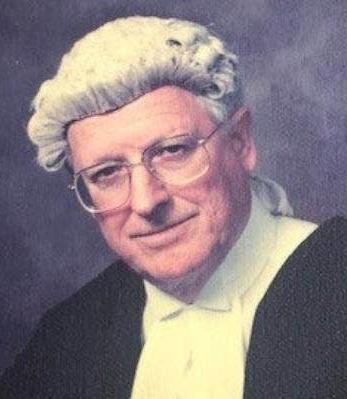
Respected as a feisty prosecutor whose cross-examination often skewered the hapless, the decision about whether to call the accused in a Hamilton criminal trial often turned on Quentin's presence. While renowned for his preparation and grasp of precedent and legal principle, his habit of affixing small Post-It notes to his lectern as a relevant point occurred to him was a technique uniquely his own. Recalled one colleague, it was terrifying indeed to hear Quentin pause in delivering the closing address and to watch him reach for a Post-It... there seemed to be no order about where they were... he would grasp one, interpret the illegible handwriting and address the jury from it.
From the early 1970s until the close of last century, Quentin prosecuted the most serious criminal trials heard in the Waikato. Although many
attracted lurid newspaper coverage - Painter Killed Naked Woman, Jury Finds.. screamed a headline in The Truth, with reference to a 1971 Hamilton homicide - Quentin himself maintained a dignified silence and cautioned junior colleagues against any emotional expressions or handshakes in court. Only once, on an infamous occasion in 2000, when a jury returned a 'not guilty' verdict inside two minutes, did he comment to the press and then only to remark upon the obvious.
In retirement, Quentin travelled extensively. Indulging a passion for history and literature, with wife Christine there were numerous trips to Greece and Turkey, retracing the career of Alexander the Great and visiting locations mentioned in the Iliad. When Christine sat for a time as a judge in Rarotonga, he enjoyed the Cook Islands, feeling that he had come home. He also ventured to the USA, spending lengthy periods in California, displaying a notable command of the Spanish tongue.
Quentin was a voracious reader who always had four to five books on the go. Intellectually curious, with a vast knowledge about a great many things and a facility with languages, he had an excellent memory and loved to talk, debate and tell stories. He played classical music loudly, swam frequently and enjoyed the sun. An industrious man, he always found time for his children and was a friend and mentor to many. He lived a full and rich life.
Quentin died in January, 2022, surrounded by his family. He is survived by his wife Christine, two sons and four grandchildren.
STUFF
55 The LAMPSTAND, 2022
Life Stories
PETER BARBER Class of 1974
Peter Barber was passionate and unwaveringly positive in every aspect of his life, whether practising the viola at home, performing in the NZSO, or engaging with the public to talk about music and why he loved the Orchestra in which he played for 47 years.
Peter was a staunch champion of the NZSO and was always excited to play to new audiences and introduce them to great music. His positivity and enthusiasm were infectious, which made him a much-loved Orchestra member, where he formed deep and lasting friendships and was admired and respected by all his colleagues. His impact on the NZSO is immeasurable. What is clear is that over 47 years and thousands of performances, he brought joy to audiences young and old.
He was equally held in high regard throughout New Zealand's music community, and internationally as a violist, colleague, chamber musician, and mentor, especially to young musicians.
Before joining the NZSO's Schola Musica as a trainee player in 1975, Peter was taught by renowned music teacher Zillah Castle and played in Wellington College's Orchestra with future NZSO players Dean Major, Lucien Rizos and Donald Armstrong.

From very early in his career, Peter also performed overseas. His first time was as part of a ground-breaking NZSO National Youth Orchestra tour in 1975 to the UK, China and Japan, beginning with the Seventh International Festival of Youth Orchestras in Aberdeen, Scotland
In 1982, Peter was himself a trailblazer when he took part in an exchange programme between the NZSO and Tokyo's NHK Orchestra. The recipient of the first Japan Foundation
Scholarship, he spent four months with the 140-piece Orchestra as the sole foreign player. Three years later he studied for a year in Germany under acclaimed violist Reiner Moog and with members of the Amadeus String Quartet. He found the experience so valuable, he returned to Germany for a second year under a Deutsche Academic Scholarship accompanied by his wife Mary and their first child Jacqueline.
Over nearly five decades, Peter also played in the NZSO Chamber Orchestra, New Zealand String Quartet, the New Zealand Soloists, Nevine String Quartet and the Amazon Trio, along with tutoring at the New Zealand School of Music – Te Kōkī.
Peter's other passion was choral singing, and over the years he sang in Cantoris, Bel Canto and Nota Bene choirs.
His zest and natural curiosity also extended to languages, where he learned Mandarin and German and, most recently, Te Reo. He loved tramping and the outdoors, cooking, and most of all, his family. When interviewed in 1996 when his daughter Jacqueline was nine, and his sons James and Felix were six and four, Peter saw the positives and funny side of juggling family life with often being a musician on tour.
The job is very good from a family point of view. It's something you can share with the children because of the hours, and music is a much more healthy activity than many other professions or occupations, although the kids may get sick of hearing me sawing away for hours at a time.
Peter passed away suddenly just two weeks before he was looking forward to being back on the road with the NZSO to perform in New Plymouth and Palmerston North in June 2022. NZSO
IAN BOURNE Class of 1949
Archdeacon
Ian Bourne died peacefully, at the age of 90.
Ian trained for ministry at College House and was ordained deacon in 1956 and priested in 1957. While at College House and in the St Martins’ Spreydon Bible Class, Ian met and courted Margaret Bruhn. Throughout their married life, Ian and Margaret served Christ and Christ’s church together. With the exception of ministry in Epsom, England, 1965-67, Ian was a parish minister in the Diocese of Wellington from 1956 - 1995, notably serving as Vicar of Hataitai-Kilbirnie from 1971 - 1995. This period included two periods as Archdeacon of Wellington and a long period of service on the Prayer Book Commission which produced the 1989 NZPB. In retirement Ian continued in ministry in Wellington in a variety of ways.
Several years ago, Ian and Margaret moved to Christchurch and worshipped in the Parish of Upper Riccarton-Yaldhurst. Anglican Movement NZ
CHRIS BROWNE Class of 1960
Christopher Mervyn Browne, age 77, of Arlington, Virginia, USA passed away in September 2021. Christopher was born in February, 1944. He attended Dulwich College (described as an academically selective independent school), in England before attending Wellington College in 1957 and being streamed into 4A; this being a year ahead of his age group. Although of the 1960 cohort, he left New Zealand (with family) early that year for Adelaide, Australia where, at the age of 16, he commenced University.
His father Mervyn E. Browne C.B.E. was with the British diplomatic service and was a Counsellor Commercial, in Wellington then in Adelaide.
Christopher and I were only a week apart in age and he,
in the earlier years, lived just 100 metres away from me in Roseneath. We were good friends and would spend holiday time hanging out together. His middle name, which was inherited from his father, he did not like, and I was sworn to secrecy not to tell other students!
From official records his father held the position of ‘Australia Commercial Counsellor’ through to 1970 but as to Christopher’s later whereabouts or career I do not know. Former fellow students 4A-6A may have had some contact with him.
Michael McLevie, Class of 1961
DERM BUCHANAN Class of 1948
Reverend Dermot (Derm) Buchanan was born in 1930 and raised in Feilding, and started a career as a wool buyer in Waikato. He attended St John’s College, and was ordained Deacon (1965) and Priest (1966) in the Diocese of Waikato. He served in various parishes in Waikato and Wellington dioceses, and then in hospital chaplaincy.
CPE formed an important part of his education and ministry, and led him for a time to the United States. In 1985, he was accredited as a Full Supervisor in CPE.
With the death of his wife Aileen in 2017, Derm moved to Palmerston North to be closer to family, and was an active member of the congregation of St Peter’s there.
Anglican Movement NZ
ALASDAIR CASSELS
Class of 1968
Alasdair Cassels has been remembered as a communityminded business leader who left a legacy in his patch
The ambitious Christchurch entrepreneur, developer and principal owner of Cassels Brewery Company, he died after a five-year, private battle with
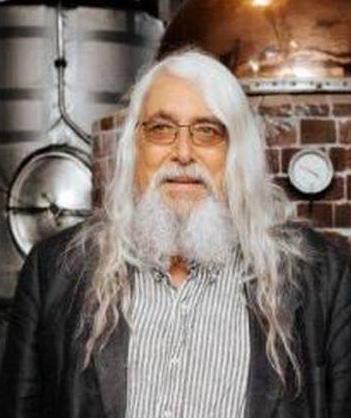
56 The LAMPSTAND, 2022
Life Stories
prostate cancer. He kept his diagnosis a secret from everyone barring his closest loved ones up until his death.
Tributes from craft brewing competitors, his peers, tenants, and city leaders have continued to flow since news of the 71-yearold’s death broke. We were sad to hear the passing of one of our own, Two Thumb beer head brewer Dave Dixon said. Alasdair played an integral part in the forming of our Christchurch brewers community, and he won’t be forgotten.
The Cassels family, led by Alasdair, were credited with providing a haven for stricken Cantabrians who frequented The Brewery bar in Woolston, sharing their losses and planning for the future soon after the 2011 earthquakes.
Many in the Cassels family lost their homes in the quakes, and every piece of beer brewing equipment they owned was destroyed. So they too used the bar as their own form of therapy.
Christchurch Mayor, Lianne Dalziel said Alasdair Cassels left a 'real legacy' through his development of The Tannery, and always gave time to lend support to his local community. I will always remember him as an extremely kind and generous person.
Former Christchurch Labour MP Ruth Dyson was 'very sad' to hear of Alasdair's death, she said on Twitter. The Tannery is such a beautiful spot thanks to his vision and passion.
HAPA store owner Maureen Taane, a tenant of The Tannery for six years, said Cassels created a 'community' of shops and their owners at the boutique mall.
I was blown away by Alasdair, she said. He was gentle, he didn’t say much, but it was always meaningful, and you could see how much his business and family meant to him. He was nothing like the others. He had real passion
for tradition, whakapapa, and led with his values. He was inspiring.
Smith’s Bookshop owner Tony Murdoch says Alasdair will be sorely missed around The Tannery. We have only known him for a short time but quickly came to respect him as a businessman and someone who was devoted to his family.
Fascino Shoes manager Wendy Papps knew Alasdair over roughly ten years and said the news of his death was 'very sad'. He was a 'lovely man' in all of her dealings with him, she said.
Born in Northern Ireland, Alasdair moved with his family first to England, aged four, and then Wellington, aged eight, before shifting to Christchurch to study engineering in the late 1960s. He immediately felt at home
In an interview with Stuff earlier this year, Alasdair said: I loved Christchurch from the off.
His love of the city was made clear through his determination of The Tannery redevelopment post-quake, his efforts to restore the Christ Church Cathedral with the Cathedral Working Group, and his burning desire to uplift the city along with his beer, much like how Guinness had with Dublin in Ireland.
STUFF
BRIAN COOMBER Class of 1953
Brian Coomber attended Wellington College from 1948 to 1953. He was a Prefect and had two years in the 1st XV as hooker. He remembered the staff well. Three had taught his father, and two of the recent arrivals went on to teach his son Martin (later they remembered Brian better)!
The tram from Northland to school was a community eventhis friends, including Ken 'Doony' Douglas (Brian’s best man) had much fun and on the tram, Brian met his future wife Cynthia Canham. They had three children Martin, Alice and Richard. Cynthia passed away in 2018
(L-R): Alex, Martin and Brian Coomber

Brian graduated from Wellington Teachers Training College in 1956. At the time, teacher trainees were paid and he remembered turning 21 and getting double pay. He enjoyed training college with its liberal staff, and he made many lifelong friends including Peter Coates, Grant Tilly, Michael Haigh, Dinah Priestly and Patricia Grace.
He taught for several years at Matamata, Ashurst and Canvastown. In 1967, he joined the NZ Army as an Education Officer, planning and presenting training courses at various camps, and was responsible for the NZ Services School in Singapore. On his return to Wellington, he held Army and Defence education roles, retiring as Colonel Commandant of the Army Education Corps. In later years, he held education administration roles in Wellington
Brian was a Life Member of the Wellington Rugby Referees Association, latterly as a coach and administrator, and was active within WCOB until the last year of his life. At the 150th Celebrations in 2017, Brian, wearing his 1st XV cap blew the whistle to start the centennial rugby match. With Brian on that day were his son Martin Coomber [Class of 1977] and grandson Alex Coomber [Class of 2019] - Alex being the fourth generation Wellington College Old Boy.
LYELL CRESSWELL Class of 1962
Composer, Lyell
Cresswell lived in Scotland for more than half his life. But he did not see himself as a Scot: I am a New Zealander living in Scotland. I feel at home in both places.
His music, too, did not sound like British music. The orchestration has a clarity which is something to do with being in New Zealand, being quiet and nearer to nature, he said. He visited New Zealand regularly and was loved and lauded by friends, family and the musical communities of both countries.
Lyell was born in Wellington into a Salvation Army family. My father played nearly all the instruments of the brass band. So, I was brought up in a brass band, captivated by the music, but awkward in the uniform. His uncle Ray, his father’s brother, composed for those bands and provided an early example of a living composer. Lyell played the trumpet, and later euphonium and tuba.
Armed with a first-class honours degree in composition from Victoria University, where his teachers included David Farquhar, Douglas Lilburn and Frederick Page, and with a Commonwealth Scholarship, he headed to Toronto in 1969 for masters studies. He returned briefly to New Zealand and worked as a postie in Dunedin
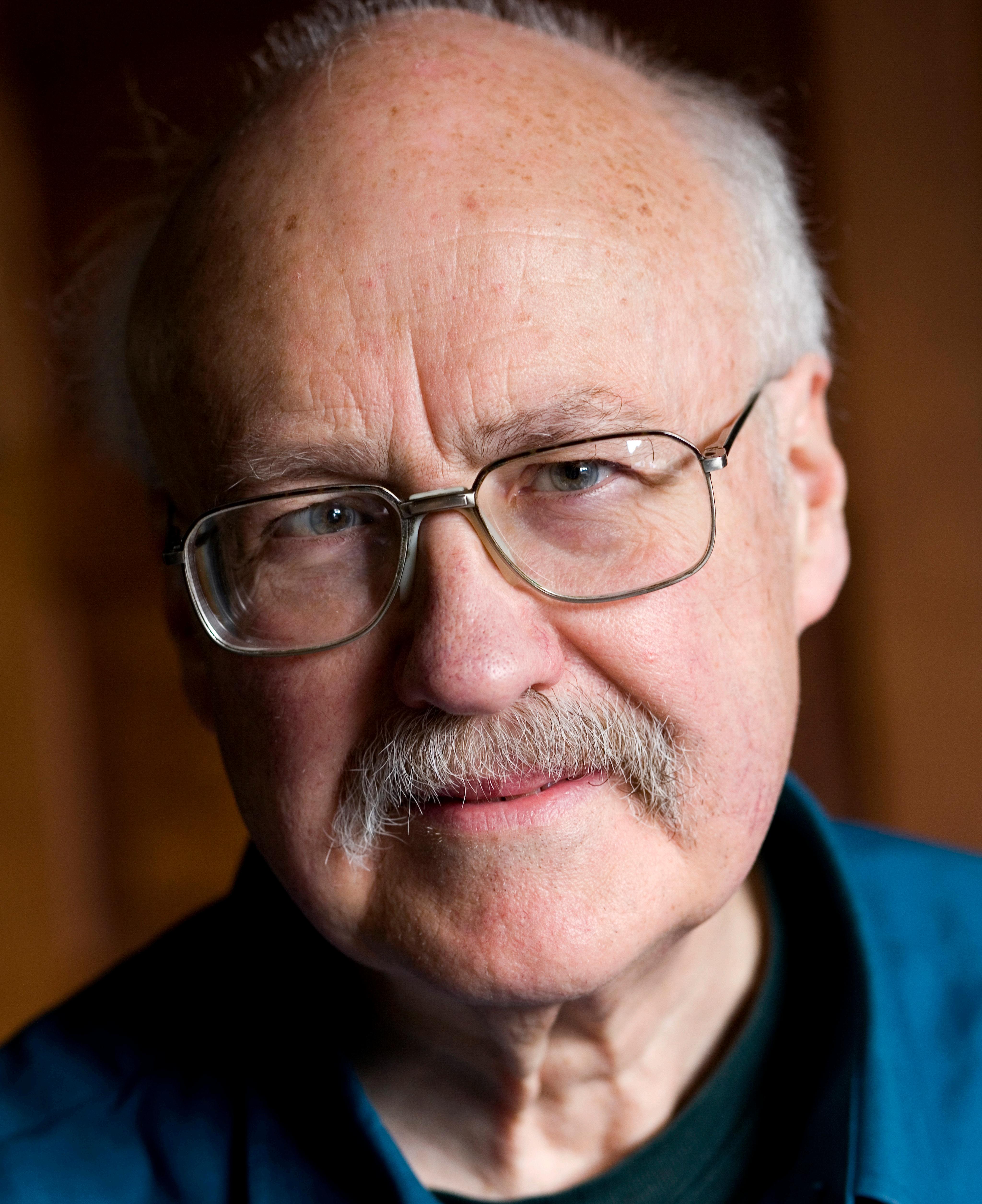
57 The LAMPSTAND, 2022
Life Stories
before travelling to Aberdeen in 1972 with his new wife Catherine (née Mawson), a cellist, for doctoral studies in composition.
Wanting to find his own way as a composer, he avoided the fashionable study centres and big-name avant garde composers of middle Europe and America. Coming from the edge of the world in New Zealand,he said, to the edge of Europe in Aberdeen made it a fairly easy transition. He found the culture and landscape of Scotland immediately congenial.
His older brother Max remembers him as very single-minded about music, and Lyell himself believed he had no choice in his chosen career. My studies in music at the universities of Wellington, Toronto, Aberdeen and Utrecht ensured that I was incapable of anything but the life of a composer
That comment was made with Lyell’s legendary wry twinkle. No-one mentions him without referring to his subversive sense of humour, which ensured an evening in his company was full of laughter and conviviality. He had an infectious giggle and enjoyed sharing a glass of whisky or wine. As an adolescent, he wrote, I signed the Salvation Army Articles of War, in which I declared that I would ‘abstain from the use of all intoxicating liquors ... and all low or profane language’. I have to confess I have not kept these promises
His wit came from the same brilliant intellect that informed his composing. 'Humour', he said, comes from the tension between pity and mirth, sympathy and antipathy, rationality and irrationality, or phlegm and bile … every composer or artist must be capable of expressing humour, because it provides the raw material of art.
In student years, he was influenced more by the Theatre of the Absurd, Ionesco, Albee and Beckett, than by experimental composers like John Cage.
His niece, Miriam Meyerhoff, commenting on his love of
spoonerisms and other word play, suggests his appreciation of the absurd was existentialist: his joy in word play and the expressiveness of his music were about creating a purpose for our path through a large and uncaring universe.
He spent some years teaching and composing at Glasgow University, and a stint in administration for Chapter Arts Centre in Cardiff. From 1985, he worked in Edinburgh as a prolific freelance composer, making his living largely through commissions.
In 1978, he had won the prestigious Ian Whyte Award for his work Salm, written the previous year. It was a career turning point – the top British award for composers under 35. He had been resident in the UK just long enough to qualify. Salm is a magnificent piece of orchestral writing, beginning with a decorated melismatic solo cello line almost medieval in flavour, and gradually building in complexity. Basing it on the traditional practice of psalm singing by Gaelic-speaking congregations, Lyell created a thrilling texture of woven melodies and dramatic climaxes with fierce percussion.
It was 1986 before New Zealand audiences heard Salm, but in 1983, the NZSO premièred his extrovert O! for Orchestra, commissioned for the 100th anniversary of the Salvation Army in New Zealand. These powerfully expressive works had their genesis in musical ideas, psalms and hymns.
He frequently found inspiration in visual arts and literature. His piano work The Art of Black and White explores links between painting and music in movements called Acquerello (watercolour), Mezzotinto and Chiaroscuro. His orchestral work, Ylur, is accompanied by pastel drawings on sandpaper by his Italian friend Maurizio Bottarelli; both music and drawings offer perspectives on searching to understand sorrow.
He enjoyed collaborating with poets, particularly his friends Ron Butlin in Scotland and Fiona Farrell, with whom he wrote for the NZSO the Christchurch earthquake-inspired song-cycle, The Clock Stops, in 2013.
Lyell's music has been performed widely in New Zealand, Scotland and elsewhere in Europe, including at the Warsaw Autumn and BBC Proms. He received many prizes and honours, including a Scottish Arts Council Creative Scotland Award (2001), an honorary doctorate in music from Victoria University (2002), and the inaugural Elgar Bursary in 2002. In 2006-07, he was Creative New Zealand/ New Zealand School of Music Composer in Residence, and he and Catherine lived in Wellington in the Lilburn Residence for that year. In 2016, he received an Arts Laureate Award from the Arts Foundation of New Zealand
He had a talent for long-standing faithful friendship, with many friends from student days. One of his first close Scottish friends was composer Edward Harper, who presented the first Scottish Lyell performance with his New Music Group in the 1970s. Lyell said Harper’s early support was one of the reasons he stayed. Decades later, while Harper was ill with terminal cancer, Lyell wrote the inner movements of his 1st Piano Concerto and completed the work after his friend’s death in 2009, dedicating it to Harper. The first of seven movements is a Funeral March, but he described the final Presto as a bit of a romp, knowing Harper would have understood the joke.
New Zealand pianist, Stephen de Pledge, for whom the concerto was commissioned and who has performed and recorded it several times, believes it is the greatest New Zealand piano concerto. The piano feels like a gigantic sound box, from which emerge resonances and extensions throughout the orchestra. And boy, is it hard! Lyell was not a pianist but wrote fearlessly and idiomatically for the
instrument. He won the SOUNZ Contemporary Award in 2011 for this concerto.
Possessed of a huge work ethic and commitment to completing projects, he remained busy till the end of his life. His third Piano Concerto was sent to de Pledge late last year, and he was relieved to know in his last days that a performance date was set. He also completed a typically idiosyncratic memoir, its fascinating contents arranged in quirky and composerly fashion, and handed it over to New Zealand friends for publication.
Lyell died peacefully at home in Edinburgh, from liver cancer complicated by Covid-19, holding Catherine’s hand, surrounded by beloved art works and with good friends nearby.
When accepting his laureate award in 2016, he said: When I write music, I am writing my autobiography. If I were to use words, I would tell a pack of lies, but when I write music, I find it impossible to lie. I give my view of the world and hope that from time to time it strikes a chord with others. That is all I ask.
STUFF/RNZ
DENIS DANAHER Class of 1945
Denis was born in Christchurch in August 1927. The family moved to Karori, Wellington when Denis was two-years-old. They lived there for 41 years.
Denis attended Karori Primary School where he ended up as Head Prefect and Captain of the 1st XV when in Standard 6 in 1940
He then attended Wellington College and obtained his School Certificate and University Matriculation in 1943. In the sixth form, Denis continued in the sporting field; playing Cricket and Rugby for the 1st XV. He was also made a Prefect that year.
Denis completed a Bachelor of Engineering in 1948 from Victoria and then Canterbury Universities.
58 The LAMPSTAND, 2022
Life Stories
In 1953, he met his future wife Pat on the top of Mt Ruapehu the day that Hillary conquered Everest.
Denis’ engineering career included both structural and design work. He also had numerous engineering jobs in both Australia and New Zealand. Highlights of his career included Project Manager for Fletcher Construction in Cooma, Australia where Denis provided housing and infrastructure for the Snowy Mountain HydroElectricity Authority. Director for Consulting Engineers, Beca, Carter, Hollings and Ferner. He worked for Beca from 1968 to 1985 when he retired.
Pat and Denis had two daughters, Denise and Katherine.
Denis was a member of the Remuera Golf Club for 45 years. He was elected to the Board of Management in 1991 and was a Board Member for eight years, rising to Club Captain and then President in 1998 -1999. He was made an Honorary Member in recognition of his services to the Club. He was also a member of the prestigious Eagles Golf Society.
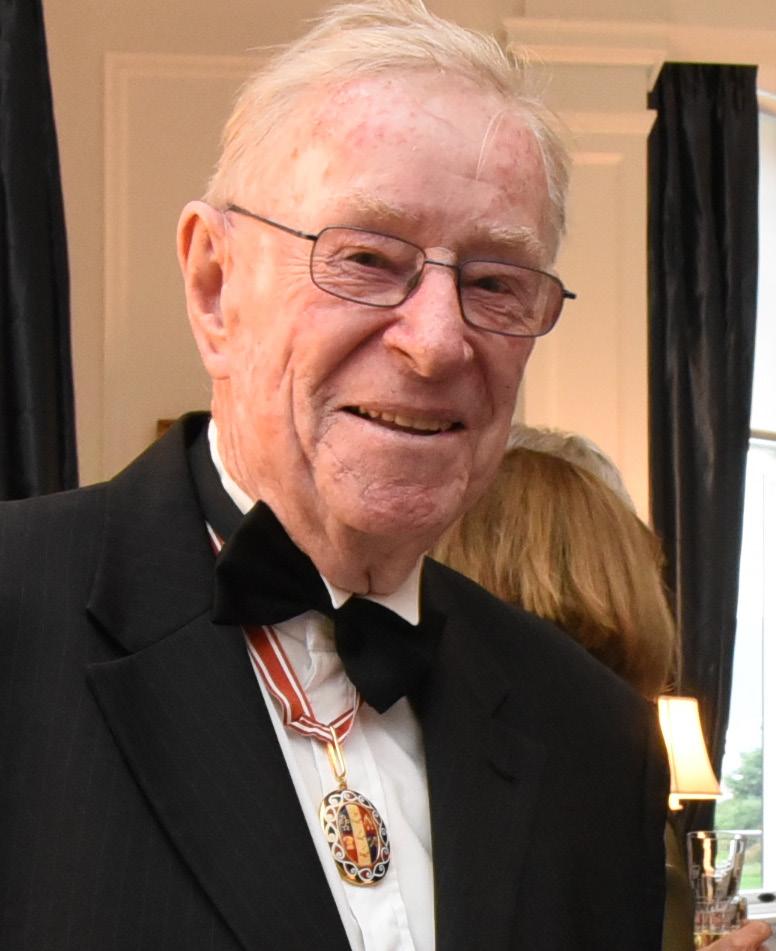
Denis was an active member of the then Auckland Branch of the Wellington College Old Boys’ Association and was elected as the Branch President in 1997. He was also a member of the St John’s/ Remuera Probus Club and where he was elected as President in 1998 and made a Life Member in 2011.
In 2018, Denis contributed to a Memorial Window pane at Wellington College, which was an iconic stained-glass window that was transferred from the old, earthquake-prone hall to the newly built Memorial Hall. He went down to Wellington College for the official opening of the Hall
Denis has had an interesting and active career, following a successful active academic background through to pursuing a satisfying engineering life, sporting and other challenges, as well as raising a family, seeing the world and enjoying holidays
both here and overseas with his wife Pat.
Denise Orr
by Labour finance spokesperson Michael Cullen.
KEN DOUGLAS
ONZ Class of 1953
After the new National Government, on May 15, 1991, passed the iniquitous Employment Contracts Act that emasculated the rights of trade unionists, thousands of bluecollar workers screamed foul and demanded that the Council of Trade Unions, led by its president, 'Red' Ken Douglas, call for an immediate general strike.
Peter Galt, a Lyttelton-based seaman and union official, spoke for many when he wrote: The big man came to Christchurch to address the town hall full of workers. He said no we haven’t got the power to take on the Government. The whole meeting was against him, screaming ‘Strike, strike, strike!
Nobody could believe it. Here was this red-hot commo; we thought he’d push it through for us. He didn’t. Ah Jesus; it was the saddest day of my life.
These men were not alone. Many other epithets – traitor, scab, chicken-shit coward, class collaborator – were flung his way at the mere mention of his name. It was as if a favoured son had turned his back on them and walked the other way. He avoided going to pubs after that to avoid anger directed towards him. One aggrieved unionist did smash a full glass of beer in his face.
But his long experience as a trade union negotiator meant that Ken believed there was a better way, even facing the most drastic diminution of union power in this country’s history; enmity over the ECA survives to this day.
He was prepared to wait, grittily, for a 'new' Labour Party to return and fulfil its promise to overturn the act and replace it with a measure that was more humane – as had already been promised
Ken's attitude towards the measure was clear. Over many years of trying to deal with successive intransigent governments, he had developed a strong belief in the need to look for new solutions to ageold problems such as the protection of workers’ jobs and issues around wages and conditions of work. Reactionary head-in-the sand stuff was totally ineffectual.
Although, as a socialist, he deeply regretted the changes introduced by the Muldoon and Lange governments that had broken the unions’ traditional power bases, he tried to protect his new beliefs by taking a different stance. He had also long since opposed the 'statutory prop' of compulsory union membership, as he believed it weakened the cause of organised labour.
The old order was not working any longer. In the late 1980s, even before the ECA was conceived, Ken had visualised a new more co-operative and less confrontational role for unions, as long as agreement could be achieved without the loss of future rights and well-being of members.
The world of work was changing, dramatically in some cases, with machines replacing men, casual labour and site-based contracts replacing union membership, and massive employment losses as factories closed or moved offshore unable to cope with the deregulations and privatisations of Roger Douglas’ neo-liberal reforms.
Concomitantly, the union movement was in revolutionary transition, with Ken and his leadership acting as a conduit between the old-style blue-collar traditionalists, exemplified Jim Knox, his immediate predecessor as leader of the Federation of Labour, and a new breed of university-educated leaders such as Ross Wilson of the Harbour
Workers’ Union and Andrew Little, the high-profile head of the country’s largest private union, the New Zealand Amalgamated Engineering, Printing and Manufacturing Union (EPMU).
Ken, the scruffy, self-educated cloth-capped Marxist, had always been more comfortable with old-style unionism, but his intelligence, foresight and sense of realpolitik necessitated not only coming to terms with the new order but also trying to use and develop it for working people. He believed that, to survive, unions needed to become more visible, democratic and amalgamate to strengthen resources
Eight years on, under a new Labour Government, he had an impact as a special adviser in the select committee hearings for a new, fairer bill to replace the ECA. The Employment Relations Act (2000) stipulated that collective bargaining meant recognition of union involvement in wage and condition negotiations, distant from 'agents' divorced from unions, who had been the go-to people under the ECA
Multi-employer contracts also allowed unions to negotiate contracts over several worksites. It was a new deal. As Ken predicted, there would be no return to compulsory unionism, national awards, or to fixed conciliation, arbitration or relativity procedures. Ken was vindicated.
Ken was born in Wellington to Madge (nee Farrow), a seamstress, and Attie Douglas, a truck driver. They lived initially in a state house in Khandallah before, in 1942, Madge decamped to the city to be closer to American servicemen and the high life
Attie, Ken and younger sister
Teree then moved in with Attie’s parents in Northland, Wellington. Ken’s grandmother Carrie Douglas became his primary caregiver through childhood and adolescence, inculcating in him values of honesty and diligence that would become a hallmark of
59 The LAMPSTAND, 2022
Life Stories
his life and work
It was a crowded home with father, uncles and sometimes others sharing the space. For much of the time a hanging sheet separated him from his father in the same small bedroom.
After education at Northland School and five unprepossessing years at Wellington College, he worked firstly as a trainee wool classer, wharf labourer and finally a truck driver. It was working on the Wellington wharf that he first observed effective trade union practice. Union delegate Ted Thompson never raised his voice but was always resolute, analytical and wellinformed in negotiation. These were lessons Ken would carry with him for the rest of his life.
In August 1956, he married Lesley Winter, a primary school teacher. Both were 20. They had four children, Jane, Peter, Helen and John, before divorcing in 1979. He would later develop a relationship with Marilyn Tucker, a pharmacist and Socialist Unity Party activist. She survives him
After Ken started as a truck driver aged 20, his father insisted he attend a meeting of the Drivers’ Union instead of going to rugby practice. Overcoming prejudice because of his youth, he spoke animatedly of more focus on wages and conditions, impressing his erstwhile antagonists. Within a year he was on the union’s executive.
He did his homework and brought a new aggression and knowledge to the negotiation table; when he was 23 he was elected its president, the youngest president of any union in New Zealand history. There followed election, in 1963, to the executive of the national Drivers’ Federation and the Wellington Trades Council.
By this time he was a committed communist. His first political understanding, he believed, came from listening as a child to the BBC lauding the bravery
of Joseph Stalin’s soldiers successfully defending Stalingrad against the German invaders
Then, during his brief time on the wharf, he enjoyed joining his uncle Terry Farrow in the cafeteria’s 'Red Square', the set of tables around which the Communist Party’s watersiders ate their lunches. Their conversations gave him, more than anywhere else, an intellectual heft and he enjoyed the debate.
Later, when the Labour Party equivocated over the No Māori No Tour debate that accompanied the All Blacks heading for South Africa, the Communist Party decried the decision not to include Māori in the team. Ken joined the party later, in 1966, and then the Socialist Unity Party (SUP) after it split from the main party. It pledged allegiance to Russia, now estranged ideologically from its former ally.
He was instrumental in setting up the Wellington branch of the SUP. He stood for the party three times in Porirua in national elections, receiving 62, 46 and 70 votes in the 1972, 1975 and 1978 elections respectively. He travelled to Russia seven times either to attend conferences or to have medical treatment. He thoroughly enjoyed these excursions
There was a downside. Because of his political beliefs, his wife and children suffered abusive phone calls and death threats. In the 1970s, the Young Nats set up a group to phone his house every half-hour during the weekend to abuse whoever answered.
He was troubled by the Gorbachev reforms in the late 1980s. As Russia replaced the Soviet Union, with the diminution of Marxist philosophy in its wake, he lost his ideological anchor and the SUP slowly dissolved as a consequence.
He was adamant that his political beliefs played no role in his status as a trade union leader. Yet despite his growing profile
Ken was honoured with the Order of New Zealand in 1999, presented to him by fellow Old Boy and then Governor General, Sir Michael Hardie-Boys [Class of 1948].
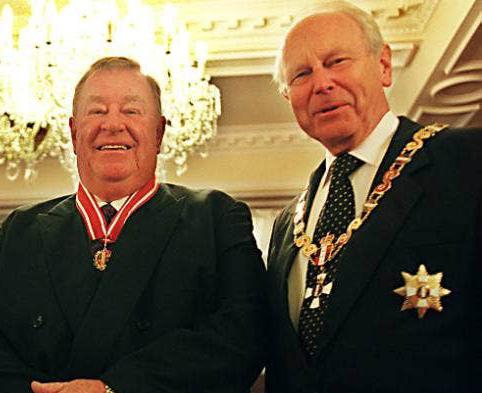
as a hard-hitting and successful union negotiator, he struggled for seven years between 1969 and 1976 to be elected on to the Federation of Labour executive because of his Communism. Thereafter, his rise was rapid.
In June 1979, after FOL president Tom Skinner retired, replaced by Knox, Ken was elected secretary. In this role many unions asked him to negotiate on their behalf, and he held late-night meetings with politicians and employers. Under Ken's leadership, problems were usually resolved.
Ideology took a back seat. Through the 1980s he worked hard to get tripartite support for a new pay system that linked wage rises to productivity. Compacts such as these were the only way forward.
Throughout the 1980s, the union movement was under extreme pressure; factories closed and unemployment rocketed. He wanted reform and was instrumental in leading a merger of the private-sector unions (represented by the FOL) and public-sector unions (represented by the Combined State Unions) into a single body. That was achieved in 1987 and Ken was voted in as the inaugural president of the new Council of
Trade Unions, representing the interests of 650,000 workers.
Ken retired from the CTU in 1999. By then he had also played a prominent role in international trade unionism as president of both the Asia-Pacific Regional Organisation of the International Confederation of Free Trade Unions and the International Centre for Free Trade Rights. In 1999, he became a member of the Order of New Zealand, the country’s highest honour. The same year, Victoria University awarded him an honorary doctorate of laws for his tireless service on behalf of ordinary New Zealanders.
Critics called him a poacher turned gamekeeper as he then turned his considerable energies to the corporate world. He sat on the boards of Air New Zealand, NZ Post, Positively Wellington, NZ Trade and Enterprise, the Capital & Coast District Health Board, the Porirua Licensing Trust and the Porirua City Council, on which he served six terms from 1998.
Sport was an abiding passion, particularly Rugby and Golf. From 2003, he served on the board of the NZ Rugby Union. He occupied many roles at his beloved Tītahi Golf Club, including acting as a mentor to a
60 The LAMPSTAND, 2022
Life Stories
young Michael Campbell.
Ken's shift from the helm of the union movement to the corporate world was neither a sell-out nor an 'add on'. His career in capitalist governance, wherein his analytical mind and strategic thinking were held in very high regard, was not a rupture from his past philosophy, but a continuation of it.
He brought to it the same intensity, energy and experience that he had in his union leadership. He believed that any organisation is successful only when it overcomes the contradictions of capital, technology and labour. It is not an accommodation of one over the other, he said. We are all there for a shared purpose. Nothing is black and white.
Ken's son John attended Wellington College as did his three grandsons; Anthony, Tama and Henare.
STUFF
ROGER FELL Class of 1962
Roger arrived in the United States in the 1960's. He received his bachelors degree from Harvard in Physics and his masters at the University of New Hampshire in Electrical Engineering. Roger’s profession was that of electronic circuitry in precision metering equipment. He accumulated twenty patents for related technological developments and inventions.
It was during his time at New Hampshire when he met the love of his life, Anita. They moved to Cleveland in 1976 where he worked various places including Tegam, where he was employed for 15 years. He retired in 2014.
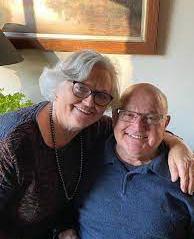
Roger spent many years as a member of the Cleveland Soaring Society and the Fun Country Soaring Club. He was a life-long Ham Radio Operator and was a member of the Buckeye Antique Radio Club and the Northern Ohio Amateur Radio Society (N.O.A.R.S.).
He is survived by his beloved
wife Anita and children Andrew and Maurika Fell; and grandson Gus Miller.
ANTON KOOLMAN Class of 1957
Three decades have passed since Anton Koolman resided in New Zealand. However, the highly respected horseman’s death at age 82 in Sydney in July still resonated with many on the other side of the Tasman.
From lowly beginnings and in partnership with Marg, his wife of 50 years, Anton forged a place in the racing industry, initially as a trainer and studmaster, and then as a bloodstock agent trading throughout Australasia and establishing a strong Hong Kong clientele.
Anton’s Estonian-born father, Anton Senior, emigrated to New Zealand after competing as his homeland’s champion wrestler at the 1924 Paris Olympics.
In Wellington, he established the renowned Koolman’s Gym, specialising in wrestling and boxing, from where he instilled the principles of fitness and sportsmanship in protégés that were to include his son Anton.
The younger Koolman also became a champion wrestler, yet despite not having grown up with any exposure to horses, he developed a passion that was to steer him in that direction, initially as a sport-horse rider.
By his late teens, when he worked as a builder’s labourer, he had become proficient in showjumping and then in the combined eventing disciplines of showjumping, dressage and cross-country, which included representing New Zealand in Australia when in his mid-20s.
One of Anton’s mentors was the renowned all-round horseman Eric Ropiha, who was to introduce him to thoroughbred training, and in the 1970s he established stables on the Horowhenua coast north of
Wellington
Anton’s success in that role attracted the attention of Texas oilman, Nelson Bunker Hunt, the founder of Waikato Stud in Matamata, for whom he prepared a steady stream of winners.
One of the best to carry the Hunt colours in the mid-1970s was the quality filly Kayenta, and another was Julia, the winner of the Grade 3 Eulogy Stakes and runner-up in the Grade 1 New Zealand 1000 Guineas (1600m) in 1981.
Julia’s sire, the former Waikato Stud stallion Frontal, stood at the Antons’ Otaki stud Gressier Lodge, as did another Americanbred, Gleam Machine.
Having already become a regular trader, Anton moved further towards what was to become his primary role as a bloodstock agent and in 1991, at the behest of Victorian Dennis Marks, he sourced a two-horse New Zealand-bred package par excellence.
Grosvenor filly Richfield Lady won the VATC One Thousand Guineas and VRC Oaks, while her Bart Cummings-trained stablemate, the year older Nassipour filly Let’s Elope, won the Caulfield-Melbourne Cup double. Between them, the pair won a total of 11 Australian Group races, seven of them at Group One level.
A year after that landmark transaction, the Koolman family relocated to Australia and established a highly successful agency that in more recent times has operated in partnership by Anton and his son Oliver.
The burgeoning Hong Kong market attracted Anton’s attention, leading to a hugely rewarding relationship with the Chuang family’s Hermitage Bloodstock.
Over the past decade, horses
selected for Hermitage have included Australian Group One winners The Autumn Sun, September Run and Egg Tart, while in New Zealand the bigrace list also includes Rocket Spade, Summer Passage and Dragon Leap.
Other notable purchases, in which the Koolmans took a direct ownership interest, were the Group One-winning siblings Funstar and Youngstar.
In early 2017, Anton sustained a brain bleed when knocked over by a horse and after being released from hospital with his mobility affected, he was to spend his remaining years confined to a wheelchair.
That by no means hindered him, however, and the sale ground remained his favourite workplace as he went through final inspections and whittled down the list of likely targets. Dad always said that no matter what the budget might be, with every horse he bought it was as if he was spending his own money, his son Oliver Koolman said. He had to be genuinely attracted to a horse. It was never about simply filling orders – he had to like what he was buying.
The determination that had marked every previous endeavour remained unwavering when Anton was confronted by his greatest ever challenge.
Right through his life he had been a competitive person and that took on another form after his accident, Oliver said. He had to spend a lot of time in rehab, which is when his physical and mental strength really carried him, and it continued like that in the five years since. The success of horses we’ve been involved in during that time has been a tremendous source of satisfaction for him. The main thing is that he still had a life he could enjoy with his family; we celebrated every Christmas as if it might be our last together and in the end he suffered for only a short time
We had already made plans for
61 The LAMPSTAND, 2022
Life Stories
Dad’s funeral service to be at the William Inglis Riverside Hotel. He had his 80th birthday party there, the Riverside sales complex was his happy place and it’s where they gathered to farewell him.
ANZ Bloodstock News
PETER MACDONALD
Class of 1944
Ablast on the ice, a spout of water rises into the air – unfortunately it all freezes into platelet ice that then falls back down to fill the hole. Peter Macdonald is using explosives to try and make a hole through the ice shelf outside Scott Base to install a sensor for his tide gauge in early 1957.
He was successful and started recording tidal data from the start of the International Geophysical Year (IGY) period, overcoming problems with keeping the hole through the ice open through the winter and the freezing of recorders.
He started the long record of sea-level changes for McMurdo Sound (one of the longest in Antarctica), made possible by his insistence for a welldefined datum for his tide gauge measurements in 1957. He also set up the research programmes on incident and reflected solar radiation, and on sea current measurements. For observations on sunlight hours, he used the same sunlight recorder used in the 1902 Scott Expedition and recorded 24 hours of sunlight on only three days.
During the year, he also took over documenting the movement and deformation of the McMurdo ice shelf, and substantially took over the meteorological observations in mid-winter from the NZ Transantarctic Expedition (TAE).
On returning to New Zealand in January 1958, results were submitted to IGY World Data Centres and reported in a Department of Scientific and Industrial Research (DSIR) Bulletin.
Peter, who has died aged 96, authored the glaciology – ice shelf movement – report and co-authored the meteorological and sea level reports as well as a research paper on tidal and current data.
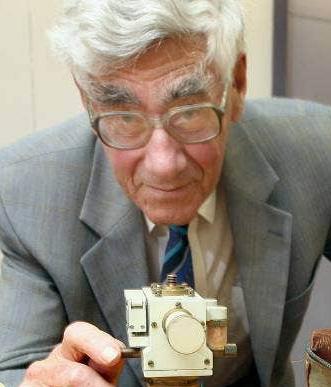
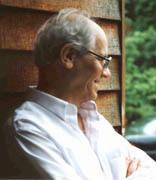
Peter was a member of the NZ IGY Antarctic Expedition, led by Dr Trevor Hatherton, that was part of the first wintering-over party at Scott Base, on Ross Island. The base, designed and constructed by the New Zealand government, was shared with the NZ support party for the TAE for the first year (1957), after which it was operated by the DSIR as a scientific research base. Peter was the last surviving member of this first wintering-over party.
William James Peter Macdonald was born in Kelburn, Wellington, and educated at Kelburn School, Wellington College, and Victoria College (later Victoria University). After the war, he secured a cadetship with DSIR and joined the geophysics section of the Geological Survey.
In 1952 he left DSIR and tried business and teaching. In late 1954, he married Doris Thorogood and started building a house. He returned to DSIR in 1956 as a successful applicant for one of five positions with the IGY Antarctic expedition in 1956-58, helping to build Scott Base
After the IGY programme concluded, Peter began working on geothermal exploration in the central North Island. His contribution to exploration for, and delineation of, geothermal fields was immense.
He developed the concept of mapping the electrical conductivity of the ground to delineate geothermal fields. Ground conductivity is largely dependent upon the electrical conductivity of water in the rocks: geothermal water, hot and containing more chemicals than fresh water, has a much higher conductivity than normal
groundwater, so geothermal regions will correspond to regions of higher ground conductivity
Peter recognised that emerging technology allowed rapid measurements of ground conductivity to be made, leading to an ability to map the electrical conductivity of large regions. This technique facilitated the mapping of all the geothermal regions of the Taupō Volcanic Zone in central North Island.
By making hundreds of measurements across a region, it was possible to show that geothermal areas coincided with high ground-conductivity areas. Drilling several holes to a depth of a kilometre in the high-conductivity areas confirmed the concept when water temperatures of 200 to 300 degrees Celsius were found.
Ironically, the proof of the method came when a drill hole that was deliberately sited outside the high conductivity zone, but very close, sampled only cold water. Peter’s work was accepted thereafter without question. This mapping technique became the international standard approach to geothermal exploration.
In 1969, he was seconded to the UN Development Programme to do geothermal exploration work in Chile, at an isolated area called El Tatio on the Alto Plano, 4300m up, for five months. Subsequently, he continued to fit in further geothermal consultancies in El Salvador, Chile, the Philippines, Vanuatu and Canada.
Probably his greatest success was in the Philippines, where he saved the NZ MAF-funded aid programme on Leyte. Before he became fully involved, seven holes had been drilled without a single success and abandoning the prospect was being considered. Based on conductivity measurements, Peter changed the focus of the exploration and sited the first successful well of what became a 500+ megawatt development.
At the end of 1988, Peter retired from DSIR, having completed 40 years’ service. He was the author of 14 published scientific papers in New Zealand and overseas journals (eight on Antarctica, and three in Nature), and 39 Conference Proceedings and DSIR reports.
He returned to Scott Base in late January 2000 as part of the millennium trip that saw eleven of the original wintering-over party return for three days.
A few years ago, he and Doris endowed a prize at Massey University, and he recently endowed an award at Victoria University of Wellington.
His contribution to the development of geothermal resources, both in New Zealand and overseas, is his lasting legacy to science. He will be remembered for both his scientific influence and his practical, generous and encouraging spirit.
STUFF
FOUAD MAJOR Class of 1945
Fouad’s family belonged to the Majais clan from the mountain village of Shweir, in what is now called the Republic of Lebanon. At the time of his birth in 1929, in the Lebanese village of Kfar Habou, Mount Lebanon was part of Syria, which was administered by France under a League of Nations mandate. His father, George Majais, excelled academically and his fluency in the English language was to play a vital role in the family’s ability to emigrate to New Zealand as the signs of imminent war became real
Fouad’s aunt had emigrated to New Zealand back in the first decade of the 19th century and it was therefore decided that his family should join her. A passage was booked on the P&O Liner to Wellington by way of Suez. He was eight years old at the time.
62 The LAMPSTAND, 2022
Life Stories
The family moved in with his aunt in Wellington in a house on the side of Tinakori Hill. Brother Alfred and Fouad attended Thorndon School, only knowing a few words of English, in spite of their father’s best efforts to teach them the language. Thanks to the encouragement of the Headmaster, Fouad was Proxime Accessit of the school in 1941.
He entered 3A at Wellington College in 1942 at a time of great world upheaval as Germany and Italy had without provocation unleashed the destructive power of modern warfare in 1939. The younger male teaching staff members at Wellington College had mostly ‘joined up’ and their places were taken up by retired teachers and (mostly) young women, to the delight of third formers. Form 3 form classes were held at Wellington East Girls’ College since the army had occupied some of our College buildings. Fouad had fond memories of the staff, particularly ‘Jimmy’ Hall, who memorably caught him talking in class, which earned him several strokes with a belt. He also fondly remembered ‘Gary’ Lomas, the mathematics teacher and Mr McAloon, the modern languages teacher and Mr Beard the English teacher. He also recalled the weekly cadet parades with Mr Hogben occasionally appearing on horseback, and some cadet invariably passing out
Three years later, Fouad passed School Certificate in several subjects, including Latin, then earned the Higher Leaving Certificate and matriculated at Victoria University. He graduated with a BSc then a MSc (Hons) in 1952.
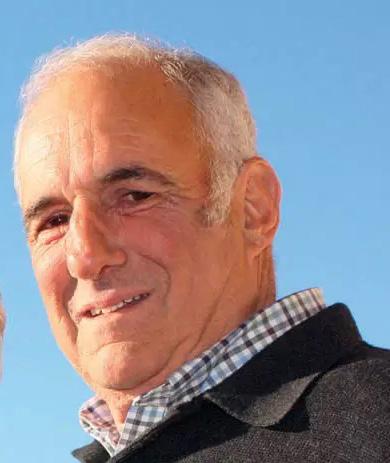
He then joined George Page’s Lab. at the Dominion Physical Laboratory in Lower Hutt, while working at night on an MSc project at Victoria, his MSc thesis topic was A Sequence control Unit for a Wilson Cloud Chamber. It
was to be a digital clock using vacuum tubes (triodes). This was approximately forty years before the ‘digital revolution’.
About this time, Fouad felt he needed a change. He applied for a three-year teaching job at the American University of Beirut. His father had returned to Lebanon to be with his ailing brother. Fouad met his future wife in Beirut where she taught Art at the American Community School. From Beirut, he applied for graduate study for a PhD at the University of Washington in Seattle, his wife’s home state. It happened that the university had just hired an eccentric but brilliant German Professor by the name Hans Dehmelt, who would later share the Nobel Prize in Physics. Fouad did an experimental thesis to demonstrate magnetic resonance in helium ions suspended in vacuum.
Upon graduating with a PhD, he assumed an instructorship at Yale University in Connecticut. After two years, he accepted a visiting professorship at Professor Paul’s Physical Institute in Bonn, Germany. Professor Paul’s group had invented the RF quadrupole mass filter and the ‘ion cage’ which Fouad had used to confine helium 3 isotope ions to observe their microwave spectrum.
The group worked on the precise g-factor of free electrons. After two years in Germany, Fouad took up a position at The Goddard Spaceflight Center, in Greenbelt, Maryland. He set up the experiment to observe the microwave hyperfine transition in mercury ions (199 isotope), which is today the reference for the most accurate atomic clock. At the end of the Apollo programme, there was a general ‘RIF’ (reduction in force) at NASA and Fouad decided to accept a professorship in physics at Kuwait
University. He was awarded the NASA Apollo Achievement Award in 1970.
At the end of his contract in Kuwait, he found time to write books, the one he was most proud of, among others, was Quantum Beat (second edition), which treats the workings of atomic clocks. The last book he wrote dealt with the history and evolution of modern Navigation, called Quo Vadis and was about the evolution of modern navigational techniques.
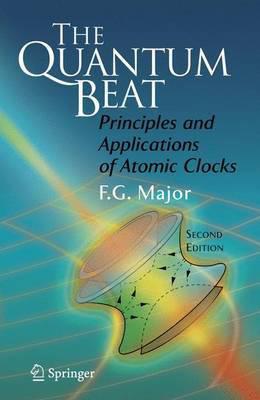
RICHARD McKENZIE Class of 1950
Richard attended Wellington College following the end of WWII, and was in the College 1st XV for his last three years (19481950). He was a fine first-five who after leaving school, joined the Onslow Rugby Club where he teamed up in Senior Rugby with L.B. Steele who became an All Black in 1951 and who at 93 is probably New Zealand's oldest living All Black. Richard and Brian Steele remained close friends in Hawkes Bay until Richard passed away in July. They often travelled down to Wellington together whenever there was an Onslow Reunion Lunch and returned the same day
Sadly, Richard badly injured his knee playing rugby in 1954. This was an injury that in modern times could have been fixed and he could have continued his promising rugby career.
Undeterred , Richard turned his attention to Table Tennis and the family converted their Garage into a table tennis room and Richard progressed to become a Wellington champion. After his knee recovered he turned his attention to other sports including Squash and Yachting.
Richard was one of those boys who was a natural left-hander but was 'encouraged' to change to right hand. As a result, he became ambidextrous and could play a number of sports either righthanded or left-handed.
He was a regular participant in the Quadrangular Golf tournament,organised by the then Hawkes Bay branch of the Wellington College Old Boys' Fellow Old Boy and Onslow colleague, Warwick Bringans [Class of 1955] remembers
Richard as being a more than useful golfer who played his golf as a right-hander.
Bruce Heather, Class of 1958
ROGER MOSES
Class of 1959
Roger’s close friend, Blair Wingfield [Class of 1959] kindly shared some memories of Roger’s work in the community which included being a trustee of the ‘Big Buddy Foundation’ since 2014 – a charity he cared very deeply about the difference they make to support young boys – he generously gave his time and energy to strengthen Big Buddy. Roger was also a Trustee and Chair of Jewish Lives, guiding the organisation into the strength it holds today.
Earlier in Roger’s life, he worked tirelessly to develop professional standards for the financial advice industry, and the brokers' lobby group, Financial Advice NZ, is a modern incarnation of a group he helped set up.
Roger was immensely proud of having attended Wellington College, and very funny with his comparisons with Auckland Grammar School, where three of his five grandsons have gone.
He was married to Barbara for 56 years and their two daughters are both lawyers.
Roger initiated Table Tennis at Wellington College and when he moved to Auckland, played A grade for many years, as well as his beloved cricket and tennis.
He was Vice Chair of the New Zealand Symphony Orchestra Foundation, and Chair of Chamber Music New Zealand.
63 The LAMPSTAND, 2022
Life Stories
Above all was his love of his family, and it was so returned. When Roger died in late June, he was still full of energy and fun, and care for his charities.
From the Editor: I used to chuckle when Roger rang or emailed me in the WCOBA Office, announcing himself as Roger #1 - not to be confused with #2 Roger Moses, former Headmaster. SK.
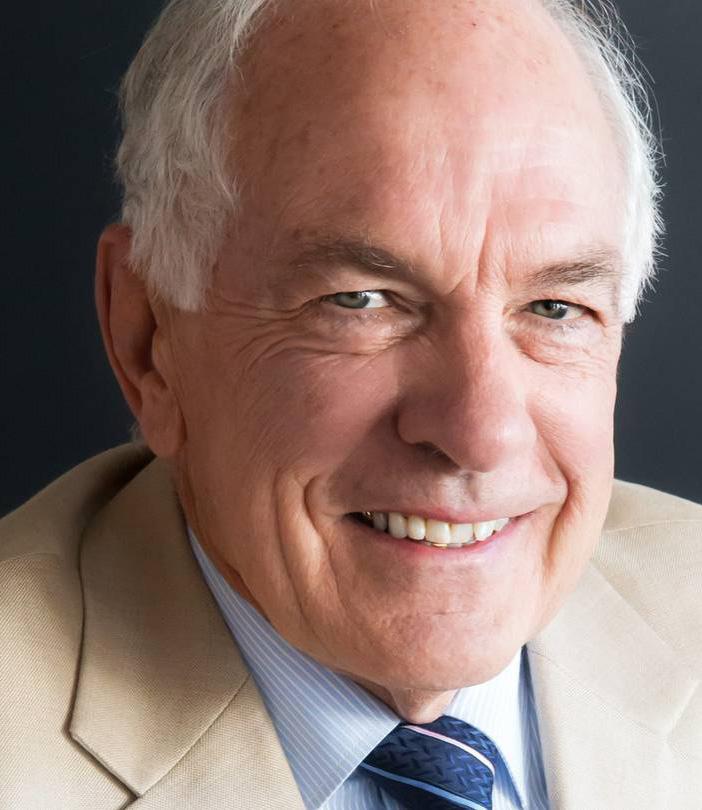
CHAS O'DONNELL Class of 1951
Older members of the Scottish Harriers Club will be saddened to learn that Chas O'Donnell passed away in December 2021.
At the end of WWII, Club stalwart, Fred Silver collected some of the local Northland boys for a Saturday morning run, and this included Charlie, his older brother Les [Class of 1948] and Barry Ward [Class of 1952], his lifelong friend and Scottish member. This became the Northland Scottish Colts Pack, with their own trophies and Chas won the Colts Shield in 1946 and the Ward Cup in 1949.
Most also ran with Scottish and in 1949, Chas won the Baudinet Cup and Galashiels Trophy, then in senior ranks and the Le Gaye Rose Bowl in 1957 - he was quite an accomplished runner. Chas was also a regular member of the working party that erected our first Clubhouse up on the bank at the southern end of Prince of Wales Park.
In later years, Chas became an Honorary Member and participated in much of the Club social life, especially the Centenary in 2015. His funeral at the Baptist Church in Karori, was well attended by his Scottish friends, including Barry Ward from Tauranga. Incidentally, the same weekend his grandson, Alex Lister from Auckland, competed in the North Island Colgate Games at Newtown Park.
Alan Stephens, Scottish Harriers
MIKE
OLSEN
Class of 1964
Mike Olsen was a 'good bloke' and was well regarded in the Dannevirke community, according to those who knew him well.
The former Deputy Mayor of Dannevirke Borough Council died in Kapiti in January after a short illness.
Originally from Pahiatua, at the age of 23 he took over his father's Four Square and according to Foodstuffs, became a partner in Pahiatua New World. When he was 27, he became the youngest ever board director for Foodstuffs Wellington.
Mike arrived in Dannevirke in 1978, taking over the Holden Place Discounter and opening the first New World in March the same year. He ran both stores until 1990, when they were both sold, and moved to the Kapiti Coast
Mike Brown, a former town clerk, knew Mike through his time on the Dannevirke Borough Council. He said Mike was a very astute businessman and those skills were brought on to the council. He was a really good bloke to deal with. Everybody got on well with him
Brown said when Mike, who served as Deputy Mayor, spoke, people listened to what he had to say because of the common sense behind it. It wasn't emotive or anything like that.
Where some had got into politics for the prestige, that wasn't Mike, he said. Mike was there because there was a job to be done and he knew how to do it and he wanted to get a good result. The fact that Mike also built Dannevirke's first 'decent' supermarket made a huge impact on the town. He made a big difference. Brown said Mike was an enterprising man who looked after his staff very well, and they in turn were loyal to him.
After his move to Kapiti, it wasn't long before Mike was asked to take over the management of
the then new Pak'nSave, which he bought in 1993 to become the owner-operator.
Foodstuffs CEO Chris Quin said in an obituary circulated around the company that Mike led the store through a season of significant growth. He also developed strong connections between the store and community.
Quin said Mike was heavily involved in the community outside of his stores, joining the Kapiti Coast Chamber of Commerce, Rotary, and setting up a fund with the Nikau Foundation
He said Mike was actively involved in supporting local and national causes and would often do so quietly or anonymously. [He] was a strong believer in the responsibility of business owners to their communities and doing what you can to make it a better place for people to live.
Mike was also involved with Club Vista at Paraparaumu Beach. The Club sent out a message to members on his passing. Mike was the driving force in 2015 and onwards of the successful amalgamation between the Kapiti Club Inc and Paraparaumu Memorial RSA.
Mike had served Club Vista for the past six years, given countless voluntary hours of his time, entrepreneurial skills and business acumen which has been a huge contribution to the successful club that we have today. Mike was a very gifted and giving man, and his guidance, drive and mischievous personality will be sadly missed.
Inspired by his career and the people he had met along the way, Mike and his wife Margaret felt driven to do more. Not everyone has positive role models in their life like I did. I wanted to do something which enabled every young person to see their potential and set them on the path to becoming a future leader. It was important for us to do this close to our home on the
Kāpiti Coast.
Setting up a fund with Nikau Foundation seemed the right fit for Mike and Margaret. They knew that one gift couldn’t solve everything, but by investing in their local community foundation, that gift would provide long-term, sustainable support for charities and schools working with Kāpiti youth to reach their aspirations.
Mike was farewelled at a service in January. He was 75. He's survived by his wife Margaret, three children and grandchildren.
NZ Herald
PETER
Class
RAMSDEN MNZM
of 1965
Ngāi Tahu said their final farewells to Banks Peninsula kaumatua Peter Ramsden, who died in February.
Peter was made a Member of the New Zealand Order of Merit in 2020 for his services to conservation, [Lampstand, 2021] and he represented the iwi on the Canterbury Aoraki Conservation Board and the Environment Canterbury Water Zone Committee.
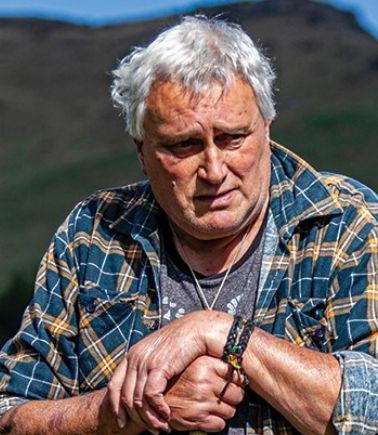
Te Tai Tonga MP, Rino Tirikatene [Class of 1990] said Peter was a pou of Tūtehuarewa Marae at Koukourarata/Port Levy. He was a straight talker. Didn’t muck around when it came to hui on the marae. Had a huge ngākau. He was always at Waitangi Day. There’s another place in the Banks Peninsula, Okains Bay where there’s a beautiful museum and he would go over many years and lay this massive hāngi for the whole community but still come over to celebrate Waitangi Day there, feeding hundreds of people. He was a real ringawera, a great passion kaumātua for our environment as well, he said.
Nō reira kia koe e Peter Te Rangi Hiroa Ramsden, moe mai, moe mai, moe mai rā.
64 The LAMPSTAND, 2022
Life Stories
Te Pūtahitanga o Te Waipounamu joins with the motu who mourn the passing of a beautiful guardian of the land, Peter Te Rangihiroa Ramsden MNZM. Te toto o te tangata, he kai. Te oranga o te tangata, he whenua.
Matua Peter lived by his absolute belief that a close relationship between whānau and whenua is all the foundation you need to uphold Whānau Ora.
His passion for the land saw him embark on a multitude of initiatives including maara kai, permaculture, sustainability, papakāinga, and the whole range of food farming from traditional kai through to organic food production (taewa). Te Wānanga Taiao ō Koukourarata that he and his whānau championed in 2015 was a frontrunner investment in the inaugural Wave for Te Pūtahitanga o Te Waipounamu, said Tā Mark Solomon, Chairman of the Commissioning Agency GPL. My cousin was ahead of his time, said Tā Mark. He believed the market garden would be a catalyst for hapu-led food farming ventures, education and research opportunities. The cultural mapping research that Koukourarata Rūnanga had done, told them that whānau want to return to their lands. He was motivated by the mokopuna –knowing that more whānau eating healthy kai, increasing knowledge of their history and whakapapa, and acquiring a sense of wellbeing from working the land, was a legacy worth investing in
Peter was a gentle giant, generous in the way he shared his time and wisdom, said Helen Leahy, Pouārahi. A giant scholar –engaging with Lincoln University, the Bio-protection Research Centre, the Biological Husbandry Unit. He also wanted whānau to get their hands dirty; to be imbued with that passionate love he had for the whenua as the pathway to finding their way home. He was instrumental in establishing a new whare wānanga to ensure the marae (Tūtehuarewa) would stand as a vibrant place of learning as well as a wellspring for
whanaungatanga. He loved nothing more than rangatahi coming for noho at the bay; to inspire in them the opportunity to realise their potential for kaitiakitanga of the whenua and the moana, for future generations to inherit
Our thoughts are with the whānau pani as they take their beloved one home to the moana Te Arawhānui a Makawhiu; home to the maunga Te Ahupātiki; home to the hapū Ngāti Huikai, Ngāi Tūtehuarewa and Ngāi Tūhaitara ki Koukourārata of Ngāi Tahu. Our special love to his darling Annie; his cherished Mihiata and Mananui; his beloved mokopuna; the whānau and to all who hold a precious whakapapa connection to Uncle Pete.
As our tears blend with the gentle rain from above as we remember a charmer with a twinkle in his eye; a mentor and a champion; someone who inspired us and incited us to action; a friend; a hard-worker, a father figure; a soldier for the cause, an ambassador for change; a leader for us all and most of all a believer in whānau. Rest In Peace our Gentle Giant.
Waatea News
GORDON SCHOLES
Class of 1949
Gordon passed away his home in Tauranga in September 2020, in his 88th year. From the lounge where he overlooked the city and Aerodrome he loved so much.
Born and raised in the Lower Hutt, he married Catherine Stern in 1954 and they went dairy farm share milking in Foxton. In 1960, they moved to Omokoroa, Tauranga and then to Ohaui in 1963, having been 50/50 sharemilkers on these farms. In 1969, they were able to buy their own present dairy farm on Ohaui Road, Tauranga. All this time, Cath helped extensively on the farm while raising their children.
Gordon, in his life before the Bay of Plenty was a passionate Rugby player in the Manawatu. At the
age of 32 retiring from Rugby, he looked for another past-time. He took up power flying, learning in a Bolkow 208. In 1965, he entered a gliding scholarship from the Tauranga Gliding Club, coming third and took up Gliding. He went on to be cleared solo in April 1966 in a Ka7. In 1968, he got a glider tow rating from in a Tiger Moth ZK-BCO.
He had his first wave flight in October 1967, as an instructor, in a Ka 13 GFB. These two-flying activities (towing and gliding) became his passion until his 80th year.
Gordie was a consummate Gilding Instructor, always cheerful and encouraging - 'a welcoming giant' on any airfield, where he loved to teach young people to fly and share the sky with him. He first started to teach Air Training Cadets (ATC) in Kawerau in March 1971. From 1987-1999 he was the CFI at weeklong training camps of 16-20 children at Hobsonville and later Matamata until 2007 for the ATC.
He would arrive with two training gliders from the Tauranga Gliding Club and the PA18A Piper Super cub tow plane, often with his close friend John Borman as the Tow Pilot. Each instructor took four cadets with Gordon often having three of his four fly solo in a glider at the end of a weeks’ training.
Gordon was the CFI of the Tauranga Gliding Club at Belk Road from 1971 to 1990 and again in 1993-4. The club had moved to Tauranga Airport in 1982.
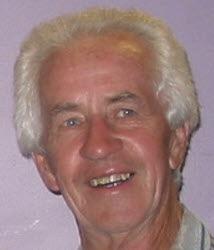
When the club bought two new Janus in 1983, Gordon later aerotowed, with the Cub, the Janus B (GNN) to Omarama for a club trip in the southern Alps.
In April 1991 Gordie and Cath went to the Avon Soaring Centre in England, where he spent the summer as Glider Training CFI. By the time they came back to New Zealand in October, he had
completed 706 training glider flights and 317 hours in the air. He went back for another summer in 1992.
In 1995, Gordon was the chief tug master at the World Gliding Championships, at Omarama (NZ). He was in charge of 14 tow planes, launching 91 Glider pilots in under an hour each contest day
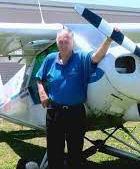
Gordon shared ownership of several single seat gliders, from a KA6cr to a DG400, competing in summer competitions, flying for himself and at other times being a contest director or Tug Master, at NZ competitions.
In 2000, Gordon was awarded the Angus Rose Bowl trophy for 'Outstanding Services to the sport of Gliding in New Zealand'.
In 2009, age challenged, at 78, Gordie stopped instructing and Power flying, a sad time for him. He continued to fly with other club members until 2012. His last logbook entered gliding flight was in a Puchacz GPZ. He had an exceptional voluntary career, having sent 540 pilots to solo in various gliders.
Gordie was a great family man, so loved for his outgoing infectious warmth and his generosity of time with others. He and Cath’s home was always open, welcoming family, friends and guests
STAN SHEARER Class of 1943
Stanley passed away peacefully in February 2021 in Taupo in his 96th year with his loving family at his bedside.
He was an Eastbourne boy and like his sister, attained Dux of Muritai School in his final year. Stan attended Wellington College from 1938 to 1941 crossing Wellington Harbour daily on the Cobar Ferry, fair weather, or foul.
In his second year of College, his Form Master was Mr McAloon or Loony Mack, as he was
65 The LAMPSTAND, 2022
Life Stories
waywardly nicknamed by his students. McAloon must have been quite young then as he was also Form Master for Stan’s son, Gary in the late 60s.
At 92, Stan was the second oldest Old Boy to attend the Wellington College 150th Celebrations in 2017 and took pride of place with a front row seat!
During his time at College, WWII was raging. So, in 1942 he joined the RNZAF and trained to be a combat pilot at Wigram Air Base. Stan was scheduled to be posted to the Pacific in 1945 when the atomic bombs quickly ended the war sparing him active service.
By November 1948, he was married to an English war widow Beatrice, (Robbie), who had travelled to New Zealand to meet her late husband’s parents. Stan and Robbie were blessed with 72 years of marriage and lived together unaided for over 70 years
During his lifetime, Stan’s achievements were many and varied. He built and operated a bespoke joinery business until it was destroyed by fire, worked in architecture, and in later years personally built and operated Manor Grove Motel and Truffles restaurant on the Taupo’s lakefront. In his spare time, he built, mainly by his own hand, two large, elegant homes; one in Wellington and the other in Taupo.
Stan is survived by his wife Robbie, still sprightly at 96, son and daughters Gary, Dianne, and Linda, their spouses, six grandchildren and nine greatgrandchildren.
Gary Shearer, Class of 1968
ARNOLD SOLOMONS
Class of 1947
Pharmacist Arnold
Louis Solomons, ALS, as he was affectionately known in the pharmacy industry, died at the age of 91 in Waikanae in early January. Arnold had been unwell for some time
and his passing sees another of the great retailers of the last century depart.
Arnold was born in Wellington and spent the earlier part of his career in the UK. He rose to prominence with the retail pharmacy chain of Savory and Moore where, having served as manager of their pharmacies in Bond Street and John Bell and Croydon, was promoted to the role of retail director of the group of 80 pharmacies.
In the 1970s, he returned to New Zealand where he married Reka and was determined to remain in New Zealand for the rest of his career.
Boots the Chemists had been operating a chain of pharmacies in New Zealand since 1935, expanding to 15 stores. Arnold’s return gave them the perfect opportunity to appoint him to the role of general manager, which had previously been held by UK managers on a three-year tenure.
The 1971 Pharmacy Act changed the laws on pharmacy ownership, limiting ownership to one pharmacist, one pharmacy. Boots’ existing pharmacies were “grandfathered” into legislation, but the effect was to restrict the company from any future growth of the pharmacy chain. Despite great efforts on Boots’ part, led by Arnold, in challenging the status quo, the law on ownership remained unchanged until 2004.
With this huge impediment, Arnold with great vision and purpose, opened a chain of beauty stores, namely Beauty Boots, and further purchased and expanded a chain of sunglass stores, Idle Eyes, to add to the pharmacies
In 1990, on Arnold’s retirement, Boots decided to close the retail operation and divest their pharmacy chain and other stores due to the ownership rules remaining unchanged. This benefited many of the current managers who bought the
businesses they were managing.
Arnold was a man of high integrity. He demanded loyalty from his staff and in return gave support, encouragement and opportunities to those with potential and willingness to learn, and a desire to progress their careers. Woe betide any manager whose store was not up to scratch for one of his famous visits, often unannounced!
The Boots name was not always popular in the New Zealand of the 1970s and 80s, as pharmacists feared the mighty UK chain would dominate the pharmacy landscape. Regardless, there was great respect for the Boots training programmes from which many pharmacists had benefitted. Arnold used his diplomatic skills to lift the Boots profile and ensure that the company left its mark in a positive way on the New Zealand pharmacy scene.
Countless pharmacists owe him a great debt for his input into their lives and careers. I count myself as one who regarded him a great friend, colleague and mentor. Rest in peace, Arnold. Tim Roper, Pharmacy Today
BERNARD SPOLSKY Class of 1948
Bernard Spolsky, who has died at the age of 90, was an internationally renowned sociolinguist and an expert in the revival of endangered languages, including Te Reo Māori
His career, while sparkling, began in an unexpected manner. In 1954, the then 20-something Bernard was somewhat reluctantly teaching English at Gisborne High School while awaiting the opportunity to travel overseas. As he later wryly commented, he only realised in his second year of teaching how bad a teacher he had been in his first year
But he did make an observation that would point him towards his future career and passion. Te Reo
Māori at that time was in rapid decline and government policy advocated that Māori needed to abandon the language if they were to 'succeed' in modern New Zealand.
However, Bernard noticed that the Māori students he taught who spoke te reo at home tended to do better in English – and in their studies in general than those Māori students who had less connection to Te Reo.
This observation sparked Bernard’s belief that bilingualism and multilingualism had tremendous value: culturally, cognitively and educationally.
Bernard would eventually become a leading figure in the field of sociolinguistics as he examined the political and social factors, ranging from government policy to which languages are spoken in schools, workplaces and especially homes, that determine whether a language flourishes or declines.
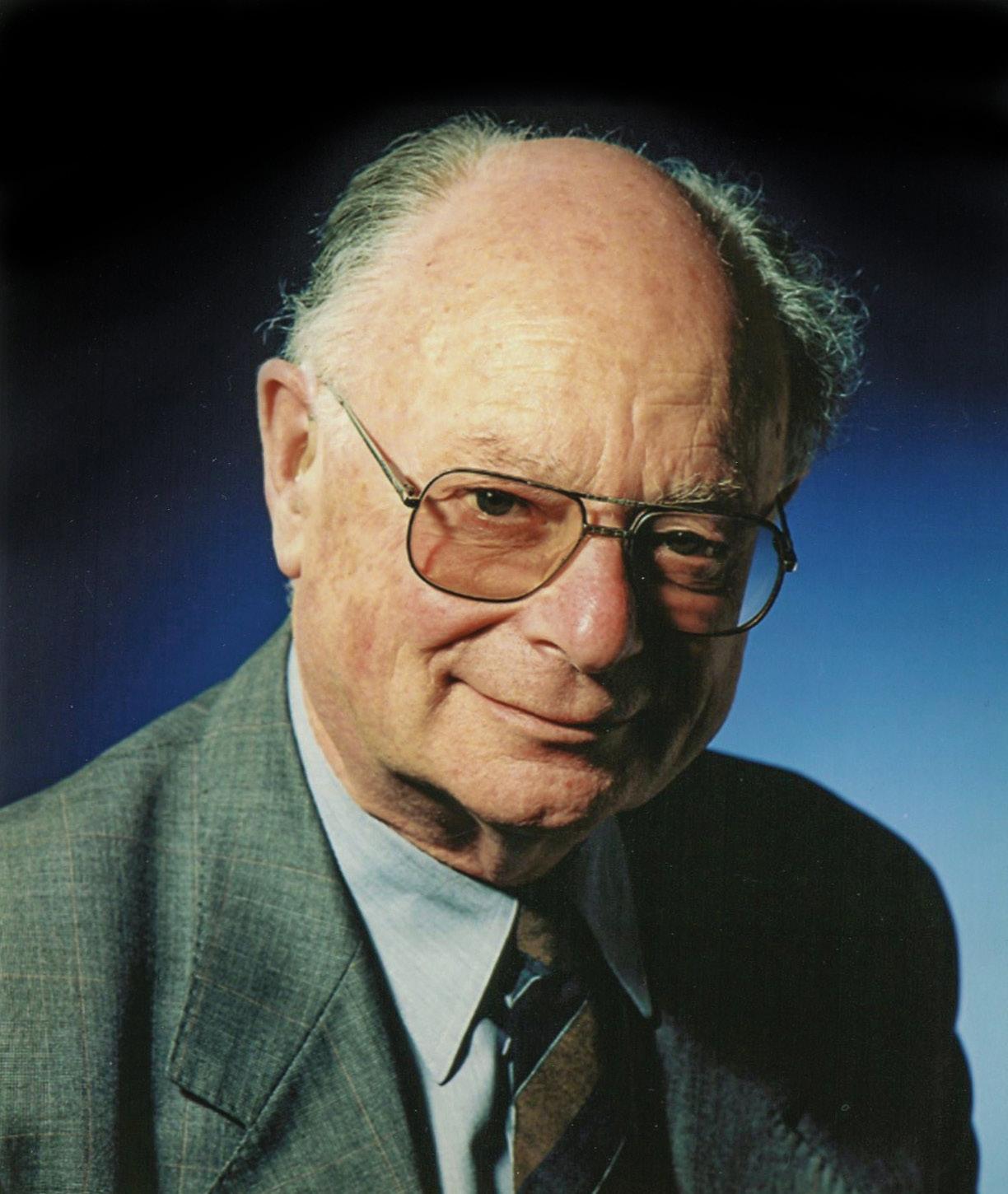
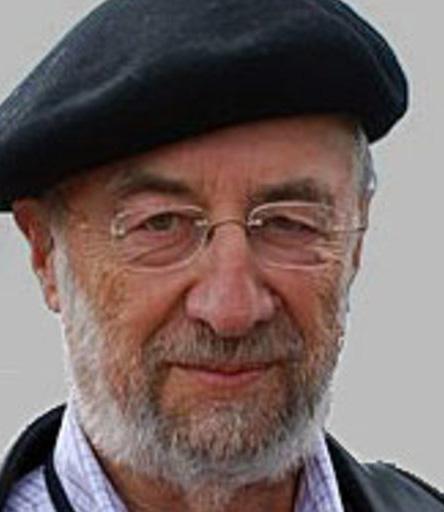
His parents instilled in Bernard an abiding belief in the importance of education and in maintaining his Jewish identity and culture. He would use that knowledge to support language activists around the world as they endeavoured to maintain and strengthen languages under threat.
Although it was very much an international career and life, Bernard remained shaped by his New Zealand background. He grew up part of Wellington’s small, close-knit Jewish community in the period that spanned the depression and World War II. His parents were immigrants, from families that had come to New Zealand from Eastern Europe via the Jewish slums of Britain.
Bernard went through the A Stream at Wellington College. After studying at what was then Victoria University College, and his brief stint in Gisborne, he set sail in the late 1950s for a very
66 The LAMPSTAND, 2022
Life Stories
different destination: the recently established state of Israel
He was immediately struck by the astonishing number of languages spoken in a country far smaller in area than the North Island. Even going to the movies was an event in multilingualism.
Films in English were dubbed into Hebrew and Arabic, while handwritten subtitles in numerous other languages simultaneously scrolled next to the screen. Bernard would later write a series of books and studies on Israel’s multilingual society and on what it suggested for language survival in other countries and cultures.
He examined the revival of Hebrew as a spoken language, pushed for the Israeli government to show more support for Arabic, and looked at the dozens of minority languages, from Yiddish to Armenian and Amharic, that continued to be spoken by the diverse population.
While Bernard’s left-wing, Zionist convictions brought him to Israel, it was old-fashioned romance which led him (temporarily) away. In Jerusalem, he had fleetingly met a young woman visiting from New York.
The usually calm, quiet Bernard was smitten and travelled to America hoping to win her hand. He faced initial resistance from her parents, who were sceptical of his professional prospects and bewildered by his New Zealand accent. But the end result was a wonderfully happy marriage of 60 years to Ellen Spolsky, who was herself to become a prominent academic.
It was in North America where Bernard’s own academic career took off. After completing his PhD at Montreal University, he carried out a ground-breaking study into the challenges the Navajo people of New Mexico faced in maintaining their language.
By 1980, he and his family had returned to Israel. Bernard
became a professor at Bar-Ilan University (near Tel Aviv). Over the years visitors from around the world, including many New Zealanders, would enjoy the warm hospitality at the family’s home in Jerusalem’s Old City.
Indeed, New Zealand was never far from his thoughts and studies. From the 1980s, Bernard frequently visited the country to work with Māori language activists and educational officials keen for his insights into how Te Reo could be strengthened
He was an early observer and advocate of the Māori-led kōhanga reo and kura kaupapa movements while emphasising the need for the government to support more extensive initiatives so that Te Reo could be a language of everyday use.
His belief that the lessons learned in New Zealand could help other cultures and countries – and vice versa was indicated by an academic paper he wrote, entitled School Alone Cannot Do It But It Helps: Irish, Hebrew, Navajo and Māori Language Revival Efforts
While Bernard prized the strengthening of minority languages and cultures, he was also a fan of cross-cultural communication. An orthodox Jew, he was often amused that, when he came to observe and to ask questions of young Māori language students, he was himself observed and peppered with questions such as what was the strange hat on his head (a yarmulka) and why was he not eating the pork on offer?
Retirement from his university work in 2000 did not slow him down. Even into his late 80s, he still wrote, lectured and travelled widely. Reviews described his book Rethinking Language Policy as ‘unparalleled, a world tour of language policy by a scholar whose work has defined the field.
He also wrote a monumental study of Jewish languages over the centuries, a subject close to his heart.
Awards and honours followed (including an honorary doctorate from Victoria University) but Bernard retained his understated, modest demeanour. He was therefore quietly bemused to be greeted on a recent trip to India by large billboards bearing his photo and welcoming Professor Spolsky –World Champion Linguist.
Blessed with a happy family life, he died at home in Jerusalem surrounded by his wife, children, grandchildren and by a muchadored great-grandson. He is also remembered with love by his sister Dr Ruth Thomas, who lives in Wellington, and by her family, and by the many who benefitted from his scholarship, generosity and unfailing decency. STUFF
VAEMOA VA’AI Class of 1971 Vaemoa hailed from Vaisala, a village on the island of Savaii in Samoa and joined Wellington College for his secondary schooling in 1967. A principal of Wellington College had visited Samoa in the mid 1960’s and a chance meeting enabled him to convince Vaemoa’s father that Wellington College was the best place for his younger sons and nephews to be educated. His older brothers had attended Scots College. In the years that followed, the young Va’ai boys would leave Samoa in January for the school year and return in December to spend Christmas and work in their family businesses and cocoa plantations
Vaemoa said when he arrived he was shy but he soon adapted to school and boarding life at Firth House. He loved taking part in sports; running up and down the Wellington hills overlooking Oriental Bay, playing Cricket, competing in Athletics and was also selected for the 1971 Wellington College 1st XV Rugby team. He also made many good friends; two of them Peter Howe [Class of 1970] and NZ journalist David Lomas [Class of 1970] who
wrote kind tributes after Vaemoa passed.
Being separated from their families and boarding together at Firth House; they and other young lads, looked out for each other when times got a bit tough and formed lasting friendships. There were also many happy days and memorable escapades, such as hitch-hiking over school holidays and getting picked up by the Mongrel Mob.
With his family members also at Firth House; they too developed an additional common bond as they grew up together. As adults, they often went down memory lane, talking about their school days, friends and Old Boys they had met or seen in the news or planning to attend the next Wellington College reunion.
After Wellington College, Vaemoa went to Victoria University, where he received his BCom and LLB. There he also met his wife Emma Kruse, also from Samoa. They married in 1978 in Wellington and upon completion of their studies in 1982, returned home with two children.
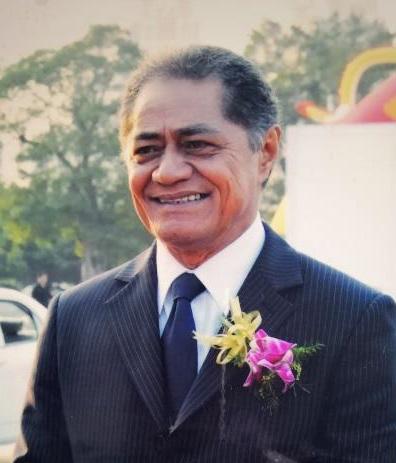
Back in Samoa after many years in New Zealand for education, Vaemoa undertook a rite de passage to receive a traditional Samoan tattoo and was bestowed with the matai title; Vaepule from his family and village. He worked as barrister and solicitor for Va’ai and Va’ai Law Firm and afterwards became Fund Solicitor and Finance Manager for the Samoa National Provident Fund. Thereafter he served as Public Trustee for the Samoa Public Trust Office until he was appointed into the Samoan Judiciary.
As Justice Vaepule Vaemoa Vaai, he was committed and took pride in his work, led by example and was highly respected. He was mentor to many, generous with his knowledge, remaining true to his Wellington College Motto Lumen Accipe et Imperti. He
67 The LAMPSTAND, 2022
Life Stories
valued and enjoyed exchanges with his judicial peers and the legal fraternity. Together with judges of the Supreme, District, and Samoan Lands and Titles Courts they shared legal and cultural insights and a mutual concern for clarifying and balancing Samoan traditional systems and understandings within modern and western legal frameworks. As a judge he was known to be even keeled, took no nonsense and stood by his decisions which were always delivered in a timely manner.
As a colleague, Vaemoa was soft-spoken with a quiet sense of humour. He valued his fellowship with Pacific Islands judges including Australia and New Zealand. He had many good friends from all walks of life and he loved his family very much.
The 2017 Firth House reunion was the last one attended by Vaemoa. With Emma and Jay, one of his sons, he took them on a walking tour of Wellington College, pointing out the buildings and places where he had spent his formative years. He spoke fondly of his time at Firth House as some of the happiest days of his life and he was profoundly grateful to his father for the opportunity to attend Wellington College. Certainly a time and place close to his heart, his old stomping grounds, and his second home which nurtured and developed him into the man that he had become.
Vaemoa and Emma raised five children and have eleven grandchildren. His children remember him fondly as sometimes tough but always caring. He played his guitar and sang to them from the time they were born and taught them how to play as they got older.
He engaged them in board and card games he had learnt from Firth House including golf, rugby, cricket, fishing, other sports as well as day-to-day chores and responsibilities. Clearing overgrown terrain, planting taro, mowing the lawn, preparing
an umu, using a machete for a multitude of tasks and making some of his NZ favourites spaghetti on toast, bacon and eggs, roasts and meat pies to name a few. He also maintained that they have faith in God, prioritise education, be honest and respect others as expressed in Samoan; fa’ataua le fa’atuatua, a’oa’o’ina, fa’amaoni ma le fa’aaloalo
In 2018 when he was diagnosed with myelofibrosis, a blood cancer, Vaemoa and Emma moved to Auckland for his medical treatment until his passing in September 2020. Fa'afetai lava and God bless the Firth House family and Wellington College community for being a part of Vaemoa’s life. He is remembered with much love and respect.
PAUL WAH
Class of 1952
The title of Paul Wah’s book, Wooden Man, Stone Heart, celebrates him as a man of strong determination and willpower, who could not be tempted. As a fourth-generation Chinese New Zealander, Paul battled racism and intolerance as he sought to create an identity for himself.
Paul, who died in October aged 90, is remembered as one of the first Chinese secondary school principals and as a 'good Kiwi bloke' who saved Taitā College.
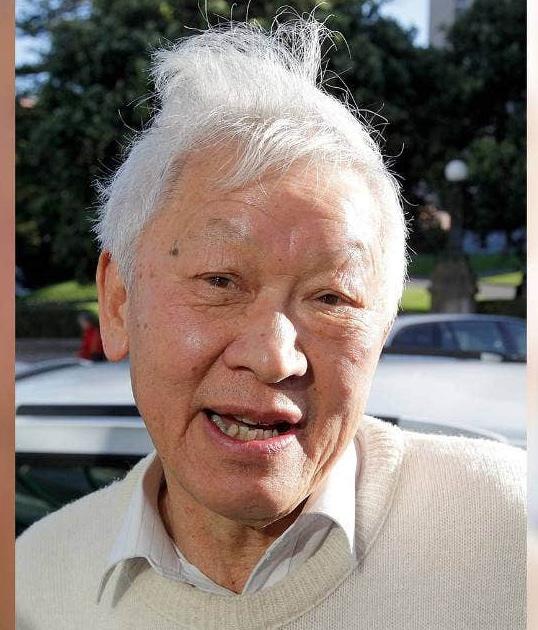
He also had the claim to fame of being arrested in Beijing’s Tiananmen Square shortly after the infamous massacre in 1989, when he was teaching at the Shanghai International Studies University
In his early life Paul, who was born in Feilding, suffered racism and schoolyard bullying. It left him determined to succeed and with a resilience that helped with the frustration of being overlooked for jobs because he was deemed to be Chinese.
In fact, he was a fourthgeneration Kiwi, his greatgrandfather Ng Leung Goo
having arrived here in 1864, after paying the £100 poll tax aimed at keeping Chinese out of New Zealand.
Paul’s parents, Leslie and Dolly, had a fruit shop in Feilding but, from an early age, he showed a determination to break away and succeed in European society.
Speaking only Cantonese when he went to school in Palmerston North, he quickly picked up English and played rugby to gain acceptance. It was a successful tactic and gave him the confidence to stand up to the schoolyard bullies.The game of rugby, with its egalitarianism, camaraderie, freedom and opportunity for emotional release became one of the formative influences of my young life, making it impossible to retreat behind the bamboo curtain of the Chinese community, he wrote in his memoir.
He moved to Wellington and boarded at Wellington College. In 1951, he left school for a job with the Soil Bureau in Wellington.
Raised to respect the Confucian tradition of respecting your family, he endured the opposition of his father, who wanted him to stay in the family business.
In Wooden Man, Stone Heart, Paul wrote of his determination to establish himself in European society. Although there would be discrimination to overcome, I resolved to develop a thick skin and avoid a restricted life in the cradle of the Chinese community.
In Wellington, he had a number of jobs, including working on the wharves and as a freezing worker, before heading to Australia. When he went to get a visa, he was initially rejected after being reminded of Australia’s whites-only immigration policy. On returning to New Zealand, he decided he needed to find a profession and, in 1956, he enrolled at Teachers’ Training College. Six years
later he joined the staff at Taitā College, where he held a range of jobs before becoming Principal.
Dismayed at how badly the school was run, he wanted to bring about change but had to overcome prejudice from the white, mostly older, men who ran the school and who dominated the Ministry of Education.
It was not easy for a Chinese teacher and, despite his popularity and doing a good job as Deputy Principal, he was initially overlooked when the top job became available.
Paul believed that was because he was Chinese, and he wrote bitterly about some of the principals he worked under, whom he felt to be incompetent. Race relations were improving in the 1970s and he felt ready for the job. Europeans allowed Chinese to wash their shirts, sell them vegetables, cut out their diseased appendixes, teach their children chemistry and prop up their incompetent principals, but appointment to an influential position and principal of a city secondary school was another matter. Not put off, he kept applying and, in 1977, he got the job he so badly wanted.
He found himself facing a significant problem. The suburbs surrounding Taitā were changing, with a growing Māori population, resulting in 'white flight' to Hutt Valley High School.
His tenure was judged as a great success. He rebuilt the roll and significantly raised educational standards, as well as getting a marae for the school.
Trevor Williams, a former head of English and a close friend for 50 years, said it is not an exaggeration to say Paul saved the College.
Taitā had had five principals in a short period and Paul provided stability and a commitment to staff that was inspiring. He was Principal during a period I regard as the golden years of Taitā College. Those years were
68 The LAMPSTAND, 2022
Life Stories
characterised by his commitment to education. He worked hard but always with a good humour despite all the obstacles.
Although he was committed to his students, Williams said Paul could never be accused of being orthodox. Paul was a different sort of person. To begin with, he wore leather and rode a motorbike, which nonplussed the pupils a bit.
As a Principal, he believed in empowering teachers, reducing their administrative duties as much as possible and encouraging them to be ambitious. One of Taitā’s more unlikely success stories was the three orchestras run by Gary Welby
Williams remembers Paul as a close friend, hard to categorise but always entertaining.
He could speak Cantonese and Mandarin and was steeped in the Confucius ethos. He was also a good Kiwi bloke and I enjoyed his company immensely.
Paul talked to him about the racism he encountered in his early life. Rather than being bitter, Williams said it only made him more determined to succeed. It encouraged him to build up the resilience that held him in good stead in later life.
His interest in rugby and Kiwi pastimes such as tramping, debating, motorcycling and skiing, was his way of assimilating. In later life the pair corresponded on issues relating to China and the Chinese Communist Party.
Living in New Zealand, Paul’s interest in Chinese politics was a debating point, but in China that interest caused him problems when he was teaching in Shanghai and travelled to Beijing after the infamous students’ massacre to visit Tiananmen Square. Mistaken for a spy, after he got out his camera, he was arrested and interrogated by a security officer and had his camera confiscated.
Pamela Sharp, the Assistant Principal during Paul’s time at Taitā College and a close friend, said his family, wife Shirley and children Michael, Jeremy and Sarah, were always the focus of his life. Paul and Shirley, who came from a long-standing Chinese Petone family, were a devoted couple, she said.
A strong supporter of multiculturalism, he had an analytic mind with an unorthodox streak. He was a philosopher, engaged with the world, always curious and insightful about its people, politics and religion.
Wooden Man, Stone Heart is a fascinating book that deals with racism in New Zealand society. Some of his observations about the Chinese community in New Zealand would have made many in that community uncomfortable.
He opposed Chinese girls being withdrawn from school to work in fruit and vegetable shops. Similarly, he disliked arranged marriages and believed that interracial marriage was the way for Chinese to assimilate.
He wrote about the negative effects of gambling on his own family and the 'insidious' impact of mah-jong, noting that his grandfather had gambled away the family business.
Wanting to avoid many of the formal Chinese marriage traditions, he wanted a low-key wedding that was not a display of wealth or Chinese culture. My hope that our wedding would be an occasion of warmth, good humour and sincerity did not come to fruition.
Instead, he wrote, the Chinese minister conducted it in an unfamiliar dialect as if he was chairing a meeting of the New Zealand Chinese Association.
Son Michael remembers his father as a remarkable man who enjoyed success in unlikely circumstances. He was from
a Chinese family but he could survive in both Māori and European society. He was a school principal who set extraordinarily high standards.
It spoke volumes that, although Paul spoke only Cantonese when he went to school and never stood out as a student, he would become a highly respected and much-loved Principal.
He went from a Chinese kid in the back of the classroom who could not speak English to success in the hurly-burly of public speaking competitions, against the best barristers in the capital.
His desire to learn was never more evident than when he completed a BA in Mandarin in his 70s. He was a free thinker, but principled. He always enjoyed having fun, but his overriding principle was always about helping people.
He is survived by Michael, a GP in Auckland; Jeremy, a property manager in Melbourne; Sarah, an accountant; and Shirley, his devoted wife of 64 years, who lives in Petone. STUFF
PETER WELLINGS Class of 1957
Peter Wellings was a much respected ophthalmologist, an inspiring and demanding teacher, a talented artist and a much loved family man. He died recently at the age of 82.
He attended Wellington College as a boarder from 1953 to 1957, where he graduated Proxime Accessit. He was also School Pianist and an accomplished rugby player. He studied medicine at Otago University and then initially worked at Wellington Hospital as a house officer, then as a neurosurgery registrar, and subsequently as an ophthalmology registrar.

In 1968 he travelled to London to Moorfield’s Eye Hospital where he completed his
ophthalmological training.
On his return to New Zealand in 1973, Peter returned to Wellington Hospital where he became their first full-time consultant ophthalmologist. He joined a medical specialists’ practice on The Terrace a year later, dropping to a part-time appointment at the hospital. He rapidly developed a reputation as a methodical clinician and teacher, and as a talented surgeon. He was one of the first eye specialists in the country to be trained in the surgical treatment of retinal detachments using the head-mounted binocular ophthalmoscope; and was at the forefront of the introduction of new techniques of cataract surgery using operating microscopes and intraocular lenses.
He respected expertise in others and demanded high standards of those who worked with him. His high expectations certainly led to better clinical practice in those around him.
He had particular expertise in neuro-ophthalmology, dealing with neurological conditions with effects on vision and also was one of the few surgeons in the country with expertise in the treatment of diseases of the eye socket. A former colleague in Palmerston North consulted with Peter in the 1970s about a patient with a dangerous orbital tumour and instead of having the patient sent to him for surgery in Wellington, Peter travelled to Palmerston North to perform the surgery as a joint procedure with the referring colleague - for the benefit of both the patient and the colleague.
During his career, Peter was the Secretary and then President of the Ophthalmological Society of New Zealand. He was generous with his knowledge and very methodical. He was an ideal person in the early 1980s to be one of the designers of the ophthalmology training
69 The LAMPSTAND, 2022
Life Stories
programme of the new Australia-based college that was to become the Royal Australia and New Zealand College of Ophthalmologists. That training programme is now one of the most respected in the world and he regarded it as one of his proudest achievements. In 2015, he was awarded The Meritorious Service Award by The Royal Australian and New Zealand College of Ophthalmologists for his outstanding contribution to clinical and academic Ophthalmology in New Zealand and Australia for many years.
Even in his work, Peter displayed his incisive sense of humour shown by a witty and often cutting remark delivered while looking over half-glasses, fixing his subject with a steady gaze and an ever-so-subtle grin. A colleague once wore a garishly colourful tie in Peter’s hospital clinic, explaining that he liked to wear it on the day following patients’ cataract operations so they could appreciate their improved colour vision. Dr Wellings replied, Ah – and do they ask to have their cataracts put back in again?
Outside medicine, Peter was widely-read as well as being a talented artist, exhibiting at the NZ Academy of Fine Arts on more than one occasion. He always maintained a keen interest in music, being a strong supporter of the NZ arts scene, in particular the NZSO and NZ Opera.
One of Peter’s keen interests was the perception of colour. He gave a number of lectures on this topic to various audiences. In these lectures, he discussed the science behind how and why we see colour the way we do, based on having personally carried out historical experiments with reference to colours. Shortly before his death, he published his book - What is Colour - based on these talks.
Peter was a devoted husband and father, and was married to Jillian for nearly 55 years. They had four children and
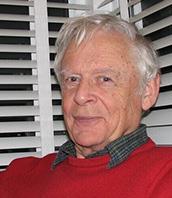
he keenly followed their academic and personal interest pursuits, including being a regular supporter on the side of Wellington sports fields. He was proud of his family’s long history in New Zealand - his forbears having arrived in Aotearoa in 1842 - and passed this interest on to his children, along with his love of music.
travel and taking an interest in the young people in his life. He inspired many, including his great-nephew Alex, who obtained a degree in Physics and aims to teach because of Bruce. After Lorna's death and retiring from UBC, Bruce met Brigita and rekindled his love of travel and outdoor adventure.
stopped during the second half. As a result the second half ran on for 65 minutes instead of 35 minutes. At one point Alan asked the referee if he could appeal against the light! During this extra half hour, our team showed it’s superior fitness by scoring three tries to Nelson’s one.
Dr
Keith Small and the Wellings Family
BRUCE WHITE Class of 1948
Born in 1931 in Wellington, Bruce grew up in Island Bay with his two younger sisters. He formed many lifelong friendships at Island Bay School and Wellington College [Class of 1948]. He was a member of the Island Bay Life Saving Club and the Alpine Sports Club with whom he helped build the first ski hut on Mt Ruapehu.
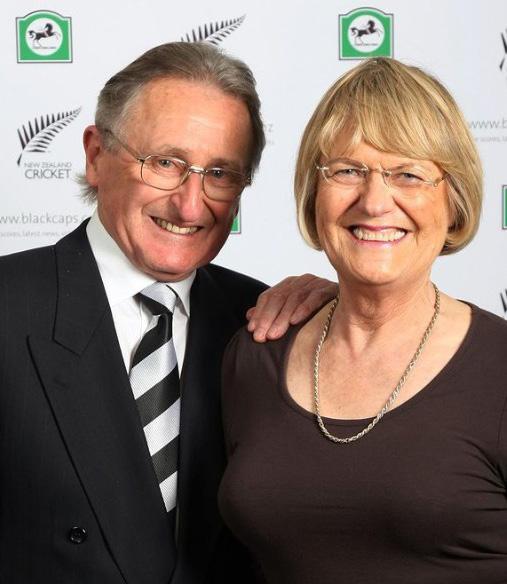
He received his BSc from Victoria University in 1951. During summers, he led tours for his family's company, World Circle Tours and Youth Travel Association, where he met Lorna (Christensen) on a Milford Track hiking tour. They married while Bruce was earning his PhD in nuclear physics at Imperial College of Science and Technology at London. He and Lorna immigrated to Canada in 1956 when Bruce was recruited by Gordon Shrum to the Physics Department at the University of British Columbia. There they had two children, Kath and James. Bruce taught physics and engineering physics at UBC, did research at UBC, TRIUMF (which he was also involved in building), and CERN, and spent sabbatical years in New Zealand and France
As an active member of his community, he was instrumental in the acquisition of Aberthau Mansion for what is now the West Point Grey Community Centre. His joie de vivre was sustained by music (piano and ukulele), sports (swimming, water polo, badminton, skiing),
ALAN WRIGHT Class of 1957
Along with his great mate Brian Hastings, Alan Wright is remembered as one of the great athletes of his era at Wellington College.
He was in the 1st XV for three years and also in the 1st XI Cricket for four years, as a fast bowler. In fact, in 1958 he was Captain of the 1st XV, ViceCaptain of the 1st XI as well as being the Athletics Captain for the McEvedy Shield team and the Deputy Head Prefect. As an athlete, Alan was of muscular build with impressive speed , and in 1958, showed his class by winning the 100 yards, the 220 yards and also won the Shot Put.
Alan always said that his favourite rugby team was the 1st XV of 1957 which went through the season undefeated in all of their College games. Playing as a running fullback, he was often seen joining the back-line and the flying three quarters of Lance Leikis, Felix Wendt and Brian Hastings. These four speedsters are remembered also as the record breaking 4 x 100 Relay team that won the title at the Intercollegiate Sports in 1957.
The rugby highlight for 1957 was our 1st XV emphatically winning the Quadrangular Tournament at Nelson College. After defeating Christ's College 23 - 6, our team played the strong Nelson XV in the final, scoring seven tries and running out winners by 29 - 15. In this match, the referee,(although he denies it ) was going by the school clock on the main building which
In Cricket, Alan was a fixture in the 1st XI and led the bowling attack for four seasons. By 1955, Alan was showing much promise as a fast bowler and was invited along to the College nets where the famous England fast bowlers, Frank Tyson and Brian Statham were going through a speed test during their visit to Wellington. Tyson clocked 85 mph and Statham 83. Our fastest bowler at the College at this time was A. B. Wright. However, he never got close to matching those English bowlers.
After College, Alan played senior rugby for the Poneke Club alongside his old mate Lindsay Maunder and senior cricket for WCOB , before leaving Wellington for Napier where he joined Rothmans (NZ) Ltd and spent the rest of his days in Hawkes Bay.
He held a number of Managerial positions with Rothmans He married Monica in 1963. He still found time for his sport playing rugby for Tech. Old Boys and Cricket for the Marist Club before taking up Squash . He also ran in three marathons in the Bay.
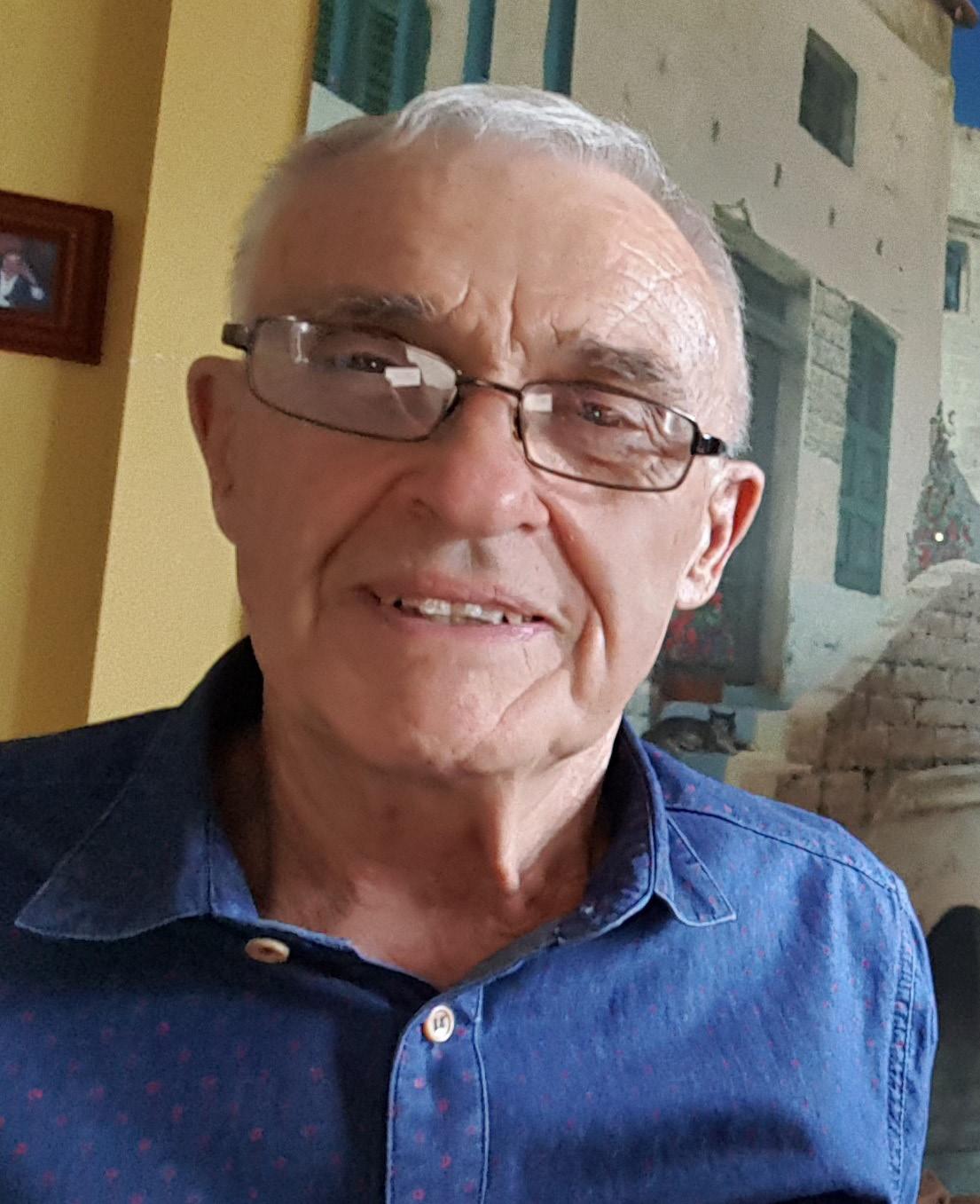
Alan was a close family man and was happily married to Monica for almost 60 years and is survived by Monica, children Amanda, Timothy and Kathy and his Grandchildren. He is missed by us all! Bruce Heather and Bob Slade.
DON NEELY Cricketer, author and historian From a player and captain to Cricket Wellington President, NZ
70 The LAMPSTAND, 2022
Life Stories
Cricket Museum trustee and Chair, NZC selector, president, and life member; from a youngster with a love of the game to prominent historian and author – Don Neely certainly lived his cricketing life to its fullest
The 86-year-old, who passed
away in April, was a key figure in the evolution of cricket in Wellington and New Zealand over the past 60 years, and no more so than in his beloved home city of Wellington, where the scoreboard at the Basin Reserve is named in his honour.
Wellington College remembers
Student's life cut short
ARTHUR HENRY BATKIN • 1879 - 1880
While researching the history of the old School Bell, we came across the sad story about a school student.
The third term commenced 13 September 1880, with a total attendance of 103 pupils, 87 boys and 16 girls. The term was marred by a shocking accident by which Arthur Henry Batkin, a very promising pupil of 14, lost his life.
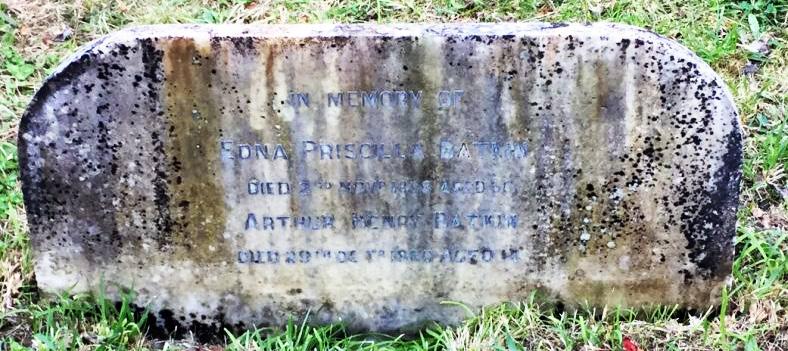
On Wednesday afternoon, 27 October, just before the bell rang for school, Arthur, along with about twenty fellow boys had fastened ropes to the big Basin Reserve roller, which had been in use for preparing the cricket ground for the coming season. They were dragging it along the drive at a furious pace when he and another boy tripped and fell. Arthur was caught and crushed beneath it, the other boy narrowly escaping the same fate. Arthur lingered critically ill for two days and died on 29 October.
THE ACCIDENT AT THE COLLEGE: INQUEST
An enquiry was conducted at Wellington College, before the City Coroner (Dr. Johnson) and a jury, of whom Mr. Robert Gardner was chosen foreman, into the circumstances attending the death of a pupil named Arthur Henry Batkin, who, it will be remembered, died on Friday night in consequence of an accident which befell him on Wednesday afternoon last while engaged with a number of schoolfellows in pulling a large garden roller. The Coroner said it was decided to hold the inquiry in the interests of the pupils attending the College, their parents, and the officers attached to the institution. William Hughes Field, one of the senior scholars, deposed that on the afternoon in question he and some others had been rolling the new cricket ground, and had pulled the roller from the ground on to the carriage drive, preparing to sending it away to the spot where it belonged — the Basin Reserve.
Thinking it might be in the way of carriages on the drive, it was
Don as the husband to former Archivist, Paddianne Neely. Aside from his encyclopedic memory of cricket statistics (often used for Lampstand stories) Don was often found working in our Archives alongside Paddianne preparing display boards for reunions and exhibitions. He spent a lengthy
amount of time researching the Quadrangular history which is updated and shared for each school's display at every tournament.
The College community will miss Don's friendship and knowledge, and extends our condolences to Paddianne and family.
decided to remove it to the carriage gates out of the way. They had a large rope attached to the front of the machine, which was being hauled by about a score of boys. Witness called out Don't let it go so fast, and immediately afterwards, he saw Batkin lying on his face on the ground, at the back of the roller. Witness did not know that deceased had fallen till the roller had passed over him. They had been using the roller for about three weeks, and had just finished with it on the day of the accident. Two of the masters - Messrs. Francis and Pridham were witnesses of the accident, and had previously assisted the boys to pull the roller from the ground on to the drive.
There was no quarrelling or 'skylarking' at the time of the accident; neither was there any danger in the mere act of drawing the machine along the drive, which at that spot is nearly level. Dr. Grace, who attended the deceased up to the hour of his death, said the cause of death was rupture of the blood vessels, causing compression of the brain. Dr. Kesteven, John Galway (a pupil), and John Paterson Francis (second master) also gave evidence. The last-named gentleman mentioned that there was no appliance on the roller whereby it could be quickly stopped after it had got weight upon it. This being the whole of the evidence, the jury, after a short consultation, returned a verdict of 'accidental death', and added the following rider: - It is a very dangerous thing to allow and the jury are of opinion that when it is roller of this character to remain unsecured not in actual use under proper supervision some means should be taken to render it impossible for inexperienced persons to use it. It should be mentioned in connection with the foregoing rider that the roller is not now located within the College grounds. EVENING POST, VOLUME XX, ISSUE 256, 1 NOVEMBER 1880, PAGE 2
The WELLINGTONIAN: November, 1922
We regret to report the death in London on 14 March, 1922 of Borneo Gardiner, aged 30, who left Wellington College in 1909.
His talents as an exponent of whistling are well known. For the past few years, he had been performing with various companies in Australia, London, South Africa and the Continent. The cause of his death was an attack of pneumonia. Borneo Gardiner was a minor sensation on the vaudeville circuit in 1913. A champion whistler, he performed a range of bird calls, light classics and popular airs to enthusiastic audiences.
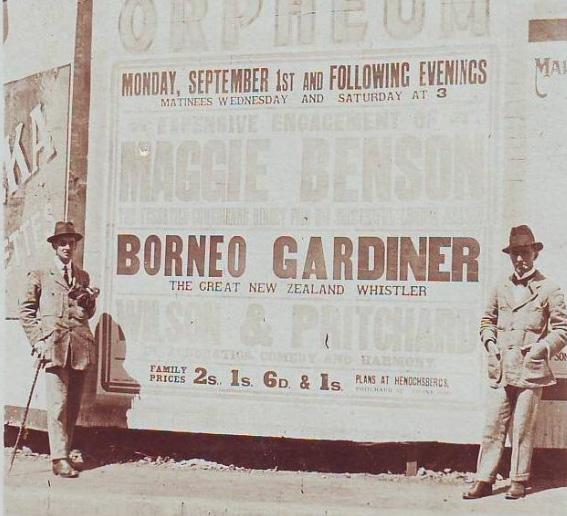
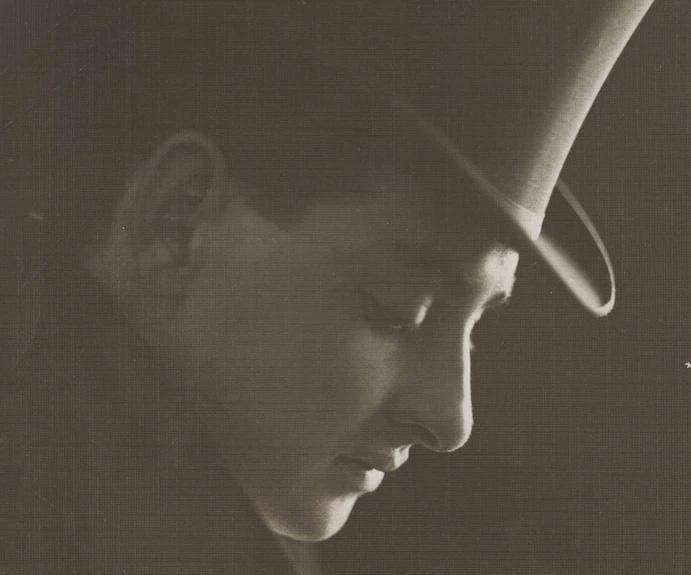
71 The LAMPSTAND, 2022
Who WAS Kenneth Wilson?
Wellington College's fourth Headmaster, 1874 - 1881
If rain is to be admitted as a sufficient reason for keeping a boy from school, the chances of anything like systematic education in Wellington seem to me, from my limited experience of the climate, exceedingly small.
This was the professional opinion of Kenneth Wilson MA , which he noted to Wellington College’s Board of Governors in late 1874 when discussing the College’s high rate of absenteeism. Wilson had not long arrived from England to take up the position of Headmaster. Old Boys can certainly commiserate with Wilson’s complaint about the poor weather. Upon the opening of the College’s new (and present) site, the New Zealand Times had described its grounds as being on the gentle slope of a hill, where both the south-eastern and north-western gales must be experienced…no more healthy locality could be picked.
Such an appreciation for the 'healthy locality' is likely lost on generations of 'Coll Boys' who will recall huddling on the Terraces, enduring those gales and cursing whoever decided to put the school there!
Upon arrival in Wellington, Wilson and his family were greeted at the wharf by the entire school’s staff and pupils with what Frank Leckie (writing in 1934, but a student during Wilson’s tenure) described as a hearty welcome. Augustus Heine, a Master during Wilson’s tenure, described the College as indeed fortunate to have secured the services of one so eminently qualified as Wilson.
Despite facing significant challenges through his seven years as Headmaster, Wilson would go on to make a significant, lasting impact not only at Wellington College
but also on education and the broader community in New Zealand.
Leckie remembers Wilson as a dignified gentleman of undeniable teaching ability who instituted the practice of masters taking lunch with the boys. During the meal, Wilson would lead debate on current events. This provided the students with an informal education that Leckie valued as much as formal instruction.
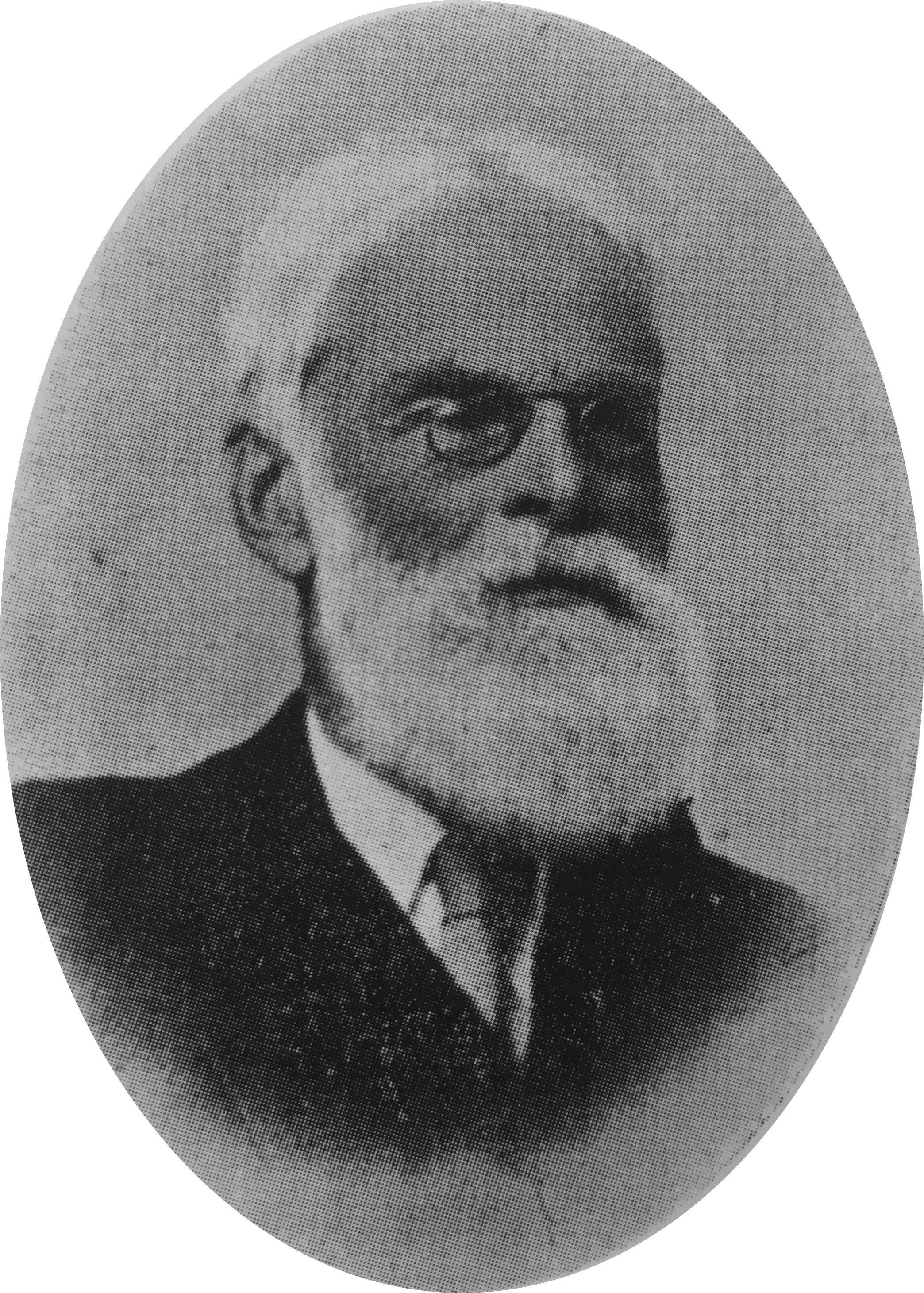
Within months of taking up his post, Wilson applied to Cambridge University to allow the Cambridge secondary examination system to be used at Wellington College and other schools, a first for the colony. Of the twenty-four candidates from the British colonies who were successful in the Cambridge exams of 1875, six were Wilson’s students from Wellington College. So began Coll’s strong and competitive academic traditions
The memories of Leckie and Heine paint a very clear picture: Wilson worked to not only instil integrity and honour but also lead with the same ideals. As Headmaster he was in the habit of placing students 'on their honour', meaning trusting their word as a gentleman. He had no tolerance for a student demonstrating ‘ungentlemanly’ conduct
Severe social and political forces that shaped the colony through the second half of the 1870s made Wilson’s tenure at Wellington College deeply challenging. The school functioned almost entirely without financial support from the government and struggled to maintain enrolments. A general economic recession and outbreaks of scarlet fever worsened things further.
This deeply affected Wilson personally; his youngest daughter, six-month-old Isabel, died of scarlet fever. This was the first of several family tragedies Wilson was to experience in New Zealand.
In 1879, the Department of Education asked Wilson to begin providing classes for girls. He readily agreed, noting he and his staff would be willing to give all the help in their power to start it. Afternoon classes for girls began and these laid the foundation for what would eventually become Wellington Girls’ College
Wilson was struck with tragedy again at the end of 1879 with the untimely passing of his wife Fanny, beloved by the student population for her charming disposition and beauty. Fanny had given birth to their son, Kenneth, only three weeks earlier.
Despite Wilson’s best efforts to boost enrolments and cut costs, the school struggled to cover operating costs through the late 1870s. The Board enacted a reorganisation in 1879, in which Wilson was made redundant but immediately accepted the Headmaster’s role again at reduced pay. Leckie noted that on Wilson’s reappointment, the school’s parents expressed utmost confidence in him as a teacher and guardian of their children, as well as the highest belief in his intellectual and moral qualities
The first reorganisation failed to solve the financial issues and upon announcement of yet another reorganisation in early 1881, it seems Wilson must have resigned: in April of that year the New Zealand Times announced
Wilson’s resignation and the appointment of Joseph Mackay as Headmaster.
Wilson would continue to support education in Wellington over the next several years, running his own private school and teaching at Wellington Girls’ College.
He even returned briefly to the College in 1886 as Master for Classics. His daughter Ethel would go on to become Headmistress of St Mary’s in Stratford (now Taranaki Diocesan School for Girls) in the 1920s
One of his sons, Guy, fought and died in WWI. Throughout his life, Wilson was deeply involved in the community through several organisations beyond education, most notably as one of the young country’s leading Freemasons.
Heine believed that Wilson’s name was so completely identified with the success of the institution that it was almost impossible to imagine its existence under other guidance. Wilson’s impact was written indelibly on its [the College’s] records – a memento of…long and faithful work in the service of secondary education
This testimony endorses Wilson’s sterling reputation as a Headmaster. While not the first to lead the school, Wilson should be considered the first of the 'legendary' Headmasters of Wellington College; those whose names adorn its buildings and libraries, whose contributions to the College’s reputation and impact on the lives of many generations of students should be known by all Old Boys and indeed the wider New Zealand community.
Rhys [Class of 2007] and Geoff Davies
72 The LAMPSTAND, 2022

























 TĀNE MAHUTA
TĀNE MAHUTA































































 Phil Kendon, Tramping Club Convenor
Phil Kendon, Tramping Club Convenor



























































































































































